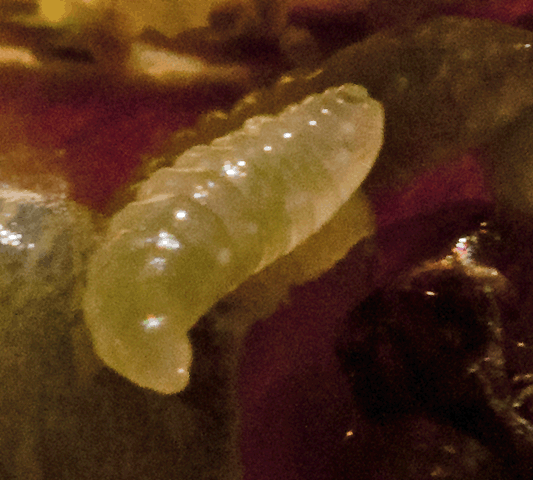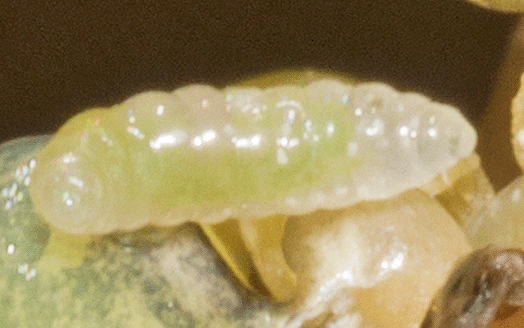Order Hymenoptera (Bees, Wasps, Ants, and Sawflies) in the Christopher B. Smith Preserve
Order Hymenoptera Characteristics: Ranging in size from very small to quite large, and identified as one of the largest insect orders, more than 130,000 species have been described.
The name "Hymenoptera" is derived from the Greek word "hymen" meaning "membrane" and "pteron" meaning wing. Hymenopterans have two pairs of wings, or no wings at all. If winged, forewings are larger than hindwings and hindwings are connected to forewings by a series of hooks.
Hymenopterans have large compound eyes and usually three ocelli. Antennae have ten or more segments and are longer than the head, but usually not longer than the head and thorax combined. All hymenopterans have chewing or chewing-lapping mouthparts. Tarsi are usually five-segmented. Each female has a well-developed ovipositor for inserting eggs. Sometimes the ovipositor is modified into a stinger for defense or to immobilize prey. All hymenopterans have complete metamorphosis (egg, larval, pupa, adult).
Interactions in the Smith Preserve: Various species are herbivores, pollinators, parasitoids, predators, and decomposers. Some live in symbiotic relationships with other organisms (e.g. attine ants farm fungi in subterranean gardens). As a result of their feeding behavior, hymenopterans keep populations of other organisms in check. Members of this order are a food source for larger animals.
Family |
Species Name |
Common Name |
Andrenidae |
Perdita sp. |
|
Aphelinidae |
Encarsia sp. |
|
Aphelinidae |
Centrodora sp. |
|
Aphelinidae |
Coccobius sp. |
|
Aphelinidae |
Coccophagus sp. |
|
| Aphelinidae | Unknown | Parasitic Wasp |
Apidae |
Apis mellifera |
|
Apidae |
Ceratina floridana |
|
Apidae |
Euglossa dilemma |
|
Apidae |
Melissodes bimaculatus |
|
Apidae |
Nomada fervida |
|
Apidae |
Triepeolus rufithorax |
|
Bethylidae |
Unknown |
|
Braconidae |
Leiophron sp. |
|
Braconidae |
Subfamily Euphorinae -Unknown Species |
|
Braconidae |
Subfamily Rogadinae -Unknown Species |
|
Braconidae |
Unknown |
|
Braconidae |
Unknown |
|
Braconidae |
Unknown |
|
Ceraphronidae |
Unknown |
|
Ceraphronidae |
Unknown |
|
Ceraphronidae |
Unknown |
|
Ceraphronidae |
Unknown |
|
Ceraphronidae |
Unknown |
|
Ceraphronidae |
Unknown |
|
Crabronidae |
Bembix sp. |
|
Crabronidae |
Philanthus sp. |
|
Crabronidae |
Sticia carolina |
|
Cynipidae |
Amphibolips murata |
|
Cynipidae |
Amphibolips spinosa |
|
Cynipidae |
Andricus quercusfoliatus |
|
Cyripidae |
Disholcaspis quercusvirens |
|
Cyripidae |
Dryocosmus archboldi |
|
Cyripidae |
Ceroptres sp. or Synergus sp. |
|
Cynipidae |
Neuroterus quercusminutissimus |
|
Cynipidae |
Amphibolips sp. |
|
Cynipidae |
Unknown |
|
Cynipidae |
Unknown |
|
Cynipidae |
Unknown |
|
Dryinidae |
Unknown |
|
Encyrtidae |
Acerophagus sp. |
|
Encyrtidae |
Unknown |
|
Encyrtidae |
Anagyrus sp. |
|
Encyrtidae |
Neodusmetia sangwani |
|
Encyritidae |
Unknown |
|
Encyritidae |
Unknown |
|
Eulophidae |
Horismenus sp. ? |
|
Eulophidae |
Horismenus sp. |
|
Eulophidae |
Melittobia sp. ? |
|
Eulophidae |
Hemiptarsenus sp. |
|
Eulophidae |
Unknown |
|
Eupelmidae |
Unknown |
|
Eupelmidae |
Unknown |
|
Formicidae |
Brachymyrmex sp. |
|
Formicidae |
Brachymyrmex depilis |
|
Formicidae |
Brachymyrmex obscurior |
|
Formicidae |
Brachymyrmex patagonicus |
|
Formicidae |
Camponotus floridanus |
|
Formicidae |
Camponotus planatus |
|
Formicidae |
Camponotus sexguttatus |
|
Formicidae |
Camponotus tortuganus |
|
Formicidae |
Camponotus sp. |
|
Formicidae |
Cardiocondyla emeryi |
|
Formicidae |
Cardiocondyla obscurior |
|
Formicidae |
Cardiocondyla wroughtonii |
|
Formicidae |
Crematogaster ashmeadi |
|
Formicidae |
Cyphomyrmex minutus |
|
Formicidae |
Dorymyrmex bureni |
|
Formicidae |
Monomorium floricola |
|
Formicidae |
Monomorium viridum |
|
Formicidae |
Nylanderia bourbonica |
|
Formicidae |
Nylanderia steinheili |
|
Formicidae |
Odontomachus ruginodis |
|
Formicidae |
Paratrechina longicornis |
|
Formicidae |
Pheidole flavens or P. floridanus ? |
|
Formicidae |
Pheidole metallescens |
|
Formicidae |
Pheidole moerens |
|
Formicidae |
Pheidole sp. |
|
Formicidae |
Pheidole megacephala |
|
| Formicidae | Pheidole obscurithorax | Large Imported Big-Headed Ant |
Formicidae |
Pheidole tysoni |
|
Formicidae |
Pseudomyrmex gracilis |
|
Formicidae |
Pseudomyrmex sp. |
|
Formicidae |
Solenopsis geminata |
|
Formicidae |
Solenopsis invicta |
|
Formicidae |
Solenopsis sp. |
|
Formicidae |
Solenopsis [Diplorhoptrum-(fugax group)] |
|
Formicidae |
Strumigenys eggersi |
|
Formicidae |
Tapinoma melanocephalum |
|
Formicidae |
Technomyrmex difficilis |
|
Formicidae |
Trachymyrmex septentronalis |
|
Formicidae |
Wasmannia auropunctata |
|
| Formicidae? | Unknown | Unidentified Immature Hymenopteran |
Halictidae |
Agapostemon splendens |
|
Megachilidae |
Coelioxys sp. |
|
Megachilidae |
Coelioxys sp. |
|
Megachilidae |
Lithurgopsis gibbosa |
|
Megachilidae |
Megachile pseudobrevis |
|
Megachilidae |
Megachile umbripennis |
|
Megachilidae |
Megachile (subgenus Litomegachile |
|
Megachilidae |
Unknown |
|
Mymaridae |
Camptoptera sp. |
|
Mymaridae |
Gonatocerus sp. |
|
Mymaridae |
Unknown |
|
Mymaridae |
Mymar taprobanicum? |
|
| Mymaridae | Unknown | Fairyfly/Fairy Wasp |
Mymarommatidae |
Unknown |
|
Platygastridae |
Dyscritobaeus sp. |
|
Platygastridae |
Embidobia sp. |
|
Platygastridae |
Gryon sp. |
|
Platygastridae |
Trimorus sp. |
|
Platygastridae |
Telenomus sp. |
|
| Platygastridae | Unknown | Egg Parasitoid Wasp |
Platygastridae |
Unknown |
|
Platygastridae |
Unknown |
|
Platygastridae |
Unknown |
|
Platygastridae |
Unknown |
|
Platygastridae |
Unknown |
|
Platygastridae |
Unknown |
|
Pteromalidae |
Unknown |
|
Pteromalidae |
Unknown |
|
Pteromalidae |
Unknown |
|
Pteromalidae |
Unknown |
|
Pteromalidae |
Unknown |
|
| Pteromalidae | Unknown | Pteromalid Wasp |
Scelionidae |
Subfamily Scelioninae - Unknown Species |
|
Scelionidae |
Subfamily Scelioninae - Possibly Baeus sp. |
|
Scelionidae |
Idris sp. |
|
Scelionidae |
Unknown |
|
| Scelionidae ?? Superfamily Platygastroidea | Unknown | Egg Parasitoid Wasp |
Scoliidae |
Dielis dorsata |
|
Scoliidae |
Dielis trifasciata trufascuata |
|
Scoliidae |
Scolia nobilitata |
|
Signiphoridae |
Unknown |
|
Sphecidae |
Ammophilia procera |
|
Sphecidae |
Prionyx sp. |
|
Sphecidae |
Sphex sp. |
|
Thynnidae |
Myzinum sp. |
|
Tiphiidae |
Tiphia sp. |
|
Tiphiidae |
Tiphia sp. |
Beetle-Killing Wasp |
Torymidae |
Monodontomerus sp. |
|
Torymidae |
Torymus sp. |
|
Torymidae |
Torymus sp. |
|
Trichogrammatidae |
Oligosita sp. |
|
Trichogrammatidae |
Unknown |
|
Trichogrammatidae |
Unknown |
|
Vespidae |
Mischocyttarus mexicanus |
|
Vespidae |
Pachodynerus erynnis |
|
Vespidae |
Polistes dorsalis |
|
Vespidae |
Polistes major major |
|
Vespidae |
Zethus slossonae |
|
Vespidae |
Unknown |
|
Unknown |
Unknown |
|
Unknown |
Unknown |
Family Andrenidae Perdita sp. ... Mining Bee
|
Family Aphelinidae Encarsia sp. ... Armored Scale Parasitic Wasp
|
Family Aphelinidae Centrodora sp. ... Parasitic Wasp
|
Family Aphelinidae Coccobius sp. ... Armored Scale Parasitic Wasp
|
Family Aphelinidae Coccophagus sp. ... Soft Scale Parasitic Wasp
|
Family Aphelinidae Unknown Species ... Parasitic Wasp
|
Family Apidae Apis mellifera ... Honey Bee
|
Family Apidae Ceratina floridana ... Florida Ceratina
|
Family Apidae Euglossa dilemma ... Orchid Bee
|
Family Apidae Melissodes bimaculatus ... Two-spotted Longhorn Bee
|
Family Apidae Nomada fervida ... Cuckoo Bee
|
Family Apidae Triepeolus rufithorax ... Cuckoo Bee
|
Family Bethylidae Unknown Species ... Flat Wasp
|
Family Braconidae Leiophron sp. ... Braconid Wasp
|
Family Braconidae Subfamily Euphorinae - Unknown Species ... Braconid Wasp
|
Family Braconidae Subfamily Rogadinae - Unknown Species ... Caterpillar Mummy Wasp
|
Family Braconidae Unknown Species ... Braconid Wasp
|
Family Braconidae Unknown Species ... Braconid Wasp
|
Family Braconidae Unknown Species ... Braconid Wasp
|
Family Ceraphronidae Unknown Species ... Parasitic Wasp
|
Family Ceraphronidae Unknown Species ... Parasitic Wasp
|
Family Ceraphronidae Unknown Species ... Parasitic Wasp
|
Family Ceraphronidae Unknown Species ... Parasitic Wasp
|
Family Ceraphronidae Unknown Species ... Parasitic Wasp
|
Family Ceraphronidae Unknown Species ... Parasitic Wasp
|
Family Crabronidae Bembix sp. ... Sand Wasp
|
Family Crabronidae Philanthus ventilabris ... Beewolf
|
Family Crabronidae Sticia carolina ... Horse Guard Wasp
|
Family Cynipidae Amphibolips murata ... Bud Gall
|
Family Cynipidae Amphibolips spinosa ... Spiny Oak Apple
|
Family Cynipidae Andricus quercusfoliatus ... Leafy Oak Gall Wasps
|
Family Cynipidae Disholcaspis quercusvirens ... Live Oak Gall Wasp
|
Family Cynipidae Dryocosmus archboldi ... Laural Oak Cone Gall Wasp
|
Family Cynipidae Neuroterus quercusminutissimus... Oak Gall Wasps
|
Family Cynipidae Amphibolips sp. ... Laurel Oak Gall Wasps
|
Family Cynipidae Ceroptres sp. or Synergus sp. ... Oak Gall Inquiline Wasp
|
Family Cynipidae Unknown Species ... Gall Wasps
|
Family Cynipidae Unknown Species ... Oak Stem Gall Wasp
|
Family Cynipidae Unknown Species ... Gall Wasp
|
Family Dryinidae Unknown Species ... Pincer Wasp
|
Family Encyrtidae Acerophagus sp. ... Chalcid Wasp
|
Family Encyrtidae Unknown Species ... Chalcid Wasp
|
Family Encyrtidae Anagyrus sp. ... Chalcid Wasp
|
Family Encyrtidae Neodusmetia sangwani ... Chalcid Wasp
|
Family Encyrtidae Unknown Species ... Chalcid Wasp
|
Family Encyrtidae Unknown Species ... Chalcid Wasp
|
Family Eulophidae Horismenus sp.? ... Eulophid Wasp
|
Family Eulophidae Horismenus sp. ... Eulophid Wasp
These three images of this individual were created using photomicroscopy and sent for identification to <Bugguide.net>, sponsored by Iowa State University's Department of Entomology.
|
Family Eulophidae Melittobia sp ? ... Eulophid Wasp
|
Family Eulophidae Hemiptarsenus sp. ... Eulophid Wasp
|
Family Eulophidae Unknown Species ... Eulophid Wasp
|
Family Eupelmidae Unknown Species ... Eupelmid Wasp
|
Family Eupelmidae Unknown Species ... Eupelmid Wasp
|
Family Formicidae Brachymyrmex sp. ... Rover Ant
|
Family Formicidae Brachymyrmex depilis ... Rover Ant
|
Family Formicidae Brachymyrmex obscurior ... Rover Ant
|
Family Formicidae Brachymyrmex patagonicus ... Dark Rover Ant
|
Family Formicidae Camponotus floridanus ... Florida Carpenter Ant
|
Family Formicidae Camponotus planatus ... Compact Carpenter Ant / Short Carpenter Ant
|
Family Formicidae Camponotus sexguttatus. ... (No Common Name) Carpenter Ant
|
Family Formicidae Camponotus tortuganus. ... Tortugas Carpenter Ant
|
Family Formicidae Camponotus sp. ... Carpenter Ant
|
Family Formicidae Cardiocondyla emeryl ... Tramp Ant
|
Family Formicidae Cardiocondyla obscurior ... Tramp Ant
|
Family Formicidae Cardiocondyla wroughtonii ... Tramp Ant
|
Family Formicidae Crematogaster ashmeadi ... Valentine Ant / Acrobat Ant
|
Family Formicidae Cyphomyrmex minutus ... Fungus-Growing Ant
|
Family Formicidae Dorymytrmex bureni ... Pyramid Ant / Crater Ant / Cone Ant
|
Family Formicidae Monomorium floricola ... Bicolored Trailing Ant
|
Family Formicidae Monomorium viridum ... The Green Monomorium
|
Family Formicidae Nylanderia bourbonica ... Crazy Ant
|
Family Formicidae Nylanderia steinheili ... Crazy Ant
|
Family Formicidae Odontomachus ruginodis ... Giant Trap-Jaw Ant
|
Family Formicidae Paratrechina longicornis ... Longhorn Crazy Ant
|
Family Formicidae Pheidole flavens or Pheidole floridanus ? ... Big-Headed Ant
|
Family Formicidae Pheidole metallescens ... Big-Headed Ant
|
Family Formicidae Pheidole moerens ... Big-Headed Ant
|
Family Formicidae Pheidole sp. ... Big-Headed Ant
|
Family Formicidae Pheidole megacephala ... Big-Headed Ant
|
Family Formicidae Pheidole obscurithorax ... Large Imported Big-Headed Ant
|
Family Formicidae Pheidole tysoni ... Big-Headed Ant
|
Family Formicidae Pseudomyrmex gracilis ... Elongate Twig Ant / Mexican Twig Ant
|
Family Formicidae Pseudomyrmex sp. ... Twig Ant
|
Family Formicidae Solenopsis geminata ... Red Fire Ant / Tropical Fire Ant
|
Family Formicidae Solenopsis invicta ... Red Imported Fire Ant
|
Family Formicidae Solenopsis sp. ... Thief Ant
|
Family Formicidae Solenopsis [Diplorhoptrum (fugax group)] ... Thief Ant
|
Family Formicidae Strumigenys eggersi ... Pigmy Snapping Ant
|
Family Formicidae Tapinoma melanocephalum... Ghost Ant
|
Family Formicidae Technomyrmex difficilis... White-Footed Ant
|
Family Formicidae Trachymyrmex septentrionalis... Fungus Growing Ant
|
Family Formicidae Wasmannia auropunctata... Little Fire Ant / Electric Ant
|
Family Formicidae ? Unknown Species... Unidentified Immature Hymenopteran
|
Family Halictidae Agapostemon splendens ... Metallic Green Bee / Sweat Bee
|
Family Megachilidae Coelioxys sp. ... Cuckoo-Leaf-Cutter Bee
|
Family Megachilidae Coelioxys sp. ... Cuckoo-Leaf-Cutter Bee
|
Family Megachilidae Lithurgopsis gibbosa ... Leaf Cutter Bee
|
Family Megachilidae Megachile pseudobrevis ... Southeastern Little Leaf-Cutter Bee
|
Family Megachilidae Megachile umbripennis ... Shadow-Winged Resin Bee
|
Family Megachilidae Megachile sp. (Subgenus Litomegachile) ... Leaf Cutter Bee
|
Family Megachilidae Unknown Species ... Leaf Cutter Bee
|
Family Mymaridae Camptoptera sp. ... Fairyfly / Fairy Wasp
|
Family Mymaridae Gonatocerus sp. ... Fairyfly / Fairy Wasp
|
Family Mymaridae Unknown Species ... Fairyfly / Fairy Wasp
|
Family Mymaridae Mymar taprobanicum? ... Fairyfly / Fairy Wasp
|
Family Mymaridae Unknown Species ... Fairyfly / Fairy Wasp
|
Family Mymarommatidae Unknown Species ... False Fairy Wasp
|
Family Platygastridae Dyscritobaeus sp. ... True Bug (Heteroptera) Egg Parasitoid Wasp
|
Family Platygastridae Embidobia sp. ... Webspinner Egg Parasitoid Wasp
|
Family Platygastridae Gryon sp. ... Hemipteran Egg Parasitoid Wasp
|
Family Platygastridae Trimorus sp. ... Beetle Egg Parasitoid Wasp
|
Family Platygastridae Telenomus sp. ... Egg Parasitoid Wasp
|
Family Platygastridae Unknown Species ... Egg Parasitoid Wasp
|
Family Platygastridae Unknown Species ... Egg Parasitoid Wasp
|
Family Platygastridae Unknown Species ... Egg Parasitoid Wasp
|
Family Platygastridae Unknown Species ... Egg Parasitoid Wasp
|
Family Platygastridae Unknown Species ... Egg Parasitoid Wasp
|
Family Platygastridae Unknown Species ... Egg Parasitoid Wasp
|
Family Platygastridae Unknown Species ... Egg Parasitoid Wasp
|
Family Pteromalidae Unknown Species ... Pteromalid Wasp
|
Family Pteromalidae Unknown Species ... Pteromalid Wasp
|
Family Pteromalidae Unknown Species ... Pteromalid Wasp
|
Family Pteromalidae Unknown Species ... Pteromalid Wasp
|
Family Pteromalidae Unknown Species ... Pteromalid Wasp
|
Family Pteromalidae Unknown Species ... Pteromalid Wasp
|
Family Scelionidae Subfamily Scelioninae - Unknown Species ... Egg Parasitoid Wasp
|
Family Scelionidae Subfamily Scelioninae,, Possiblly Baeus sp. ... Egg Parasitoid
|
Family Scelionidae Unknown Species ... Egg Parasitoid Wasp
|
Family Scelionidae Idris sp. ... Spider Egg Parasitoid Wasp
|
Family Scelionidae ?? ... Superfamily Platygastroidea Unknown Species ... Egg Parasitoid Wasp
|
Family Scoliidae Dielis dorsata ... Caribbean Scoliid Wasp
|
Family Scoliidae Dielis trifasciata trifasciata... Three-Banded Scoliid Wasp Subspecies
|
Family Scoliidae Scolia nobilitata ... Scoliid Wasp
|
Family Signiphoridae Unknown Species ... Chalcid Wasp
|
Family Sphecidae Ammophila procera ... Thread-Waisted Wasp
|
Family Sphecidae Prionyx sp. ... Thread-Waisted Wasp
|
Family Sphecidae Sphex sp. ... Thread-Waisted Wasp
|
Family Thynnidae Myzinum sp. ... Thynnid Wasp
|
|
Family Tiphiidae Tiphia sp. ... Beetle-Killing Wasp
|
Family Torymidae Monodontomerus sp. ... Chalcid Wasp
|
Family Torymidae Torymus sp. ... Chalcid Wasp
|
Family Torymidae Torymus sp. ... Chalcid Wasp
|
Family Trichogrammatidae Oligosita sp. ... Chalcid Wasp
|
Family Trichogrammatidae Unknown Species ... Chalcid Wasp
|
Family Trichogrammatidae Unknown Species ... Chalcid Wasp
|
Family Vespidae Mischocyttarus mexicanus ... Paper Wasp
|
Family Vespidae Pachodynerus erynnis ... Red and Black Mason Wasp
|
Family Vespidae Polistes dorsalis ... Paper Wasp
|
Family Vespidae Polistes major major ... Paper Wasp
|
Family Vespidae Zethus slossonae ... Mason Wasp
|
Family Vespidae Unknown Species ... Potter Wasp
|
Unknown Family Unknown Species ... Parasitic Wasp
|
Unknown Family Unknown Species ... Parasitic Apocrita
|
© Photographs and text by Susan Leach Snyder (Conservancy of Southwest Florida Volunteer), unless otherwise credited above.

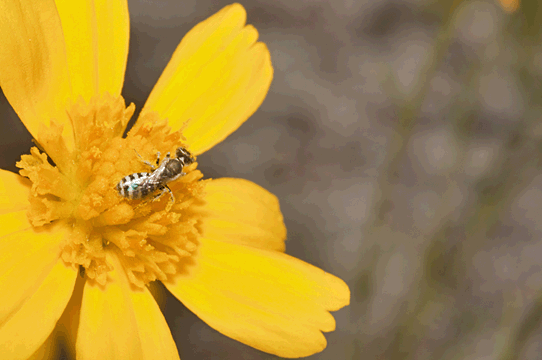
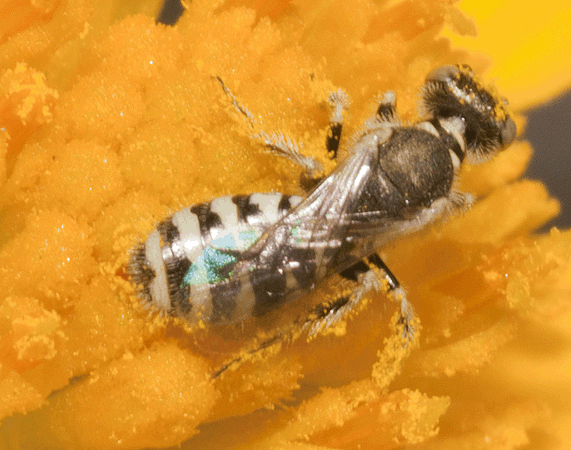
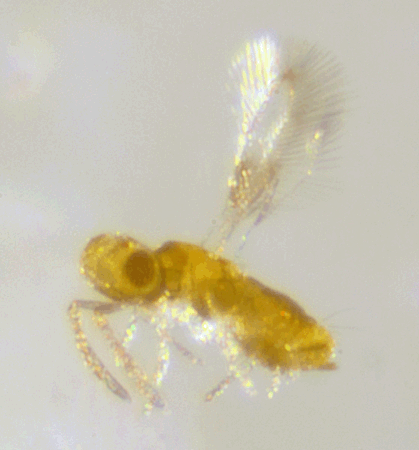
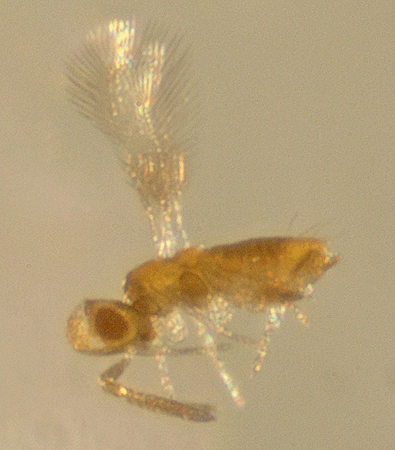 On January 23, 2015, this wasp was identified as a species in either Family Trichogrammatidae or Family Aphelinidae by Dr. John Huber,
On January 23, 2015, this wasp was identified as a species in either Family Trichogrammatidae or Family Aphelinidae by Dr. John Huber,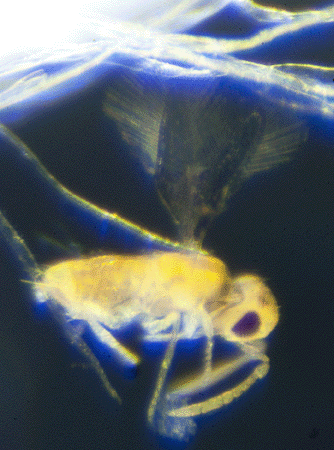
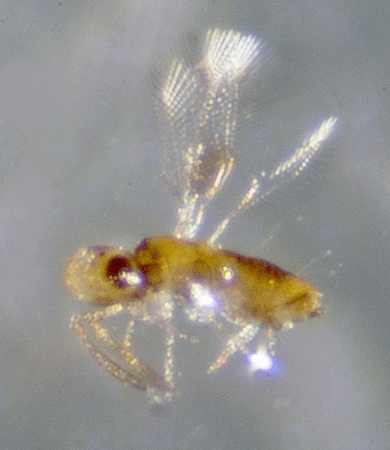
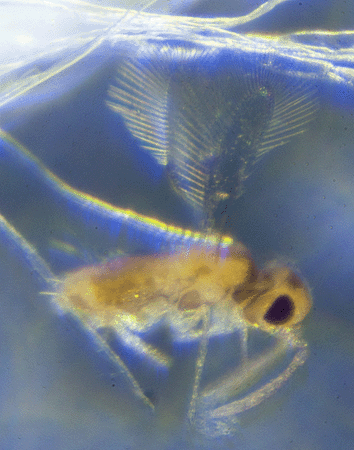
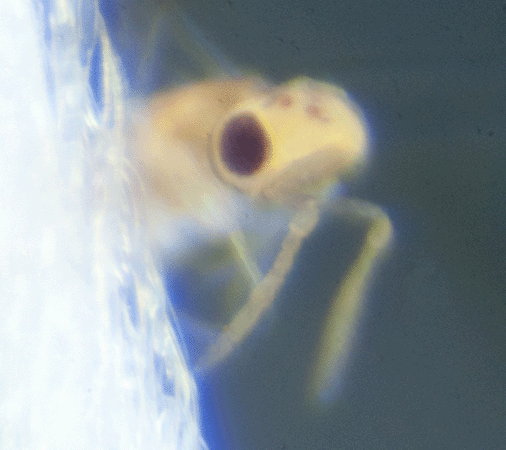
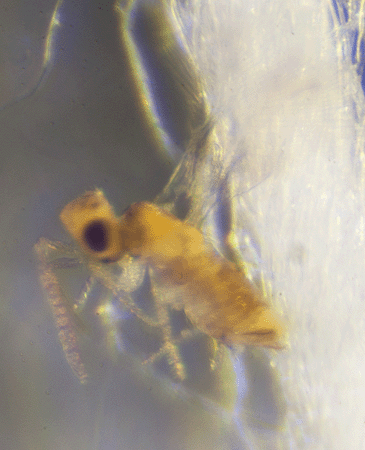
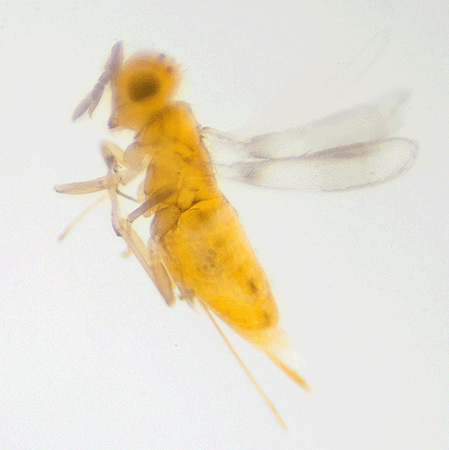 On December 30, 2015, this 1 mm long, female, parasitic wasp was captured with a sweep net in low, dry vegetation growing along the gopher tortoise fence in the northeast quadrant of the Smith Preserve. Note the long stinger on the abdomen of this female. She would use this to insert eggs into host insects.
On December 30, 2015, this 1 mm long, female, parasitic wasp was captured with a sweep net in low, dry vegetation growing along the gopher tortoise fence in the northeast quadrant of the Smith Preserve. Note the long stinger on the abdomen of this female. She would use this to insert eggs into host insects.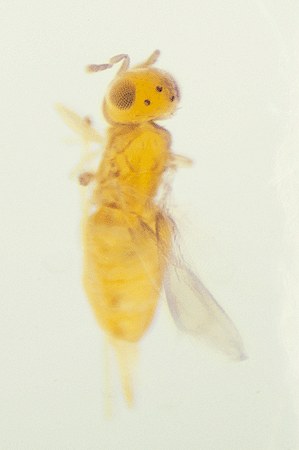 According to <BugGuide.net>, there are 210 species in 14 genera in this family in our area. Size is 1 mm or less, color is yellowish-brown, antennae have 8 or fewer segments, tarsi are generally 5 segmented, and the abdomen is broadly joined to the thorax.
According to <BugGuide.net>, there are 210 species in 14 genera in this family in our area. Size is 1 mm or less, color is yellowish-brown, antennae have 8 or fewer segments, tarsi are generally 5 segmented, and the abdomen is broadly joined to the thorax. 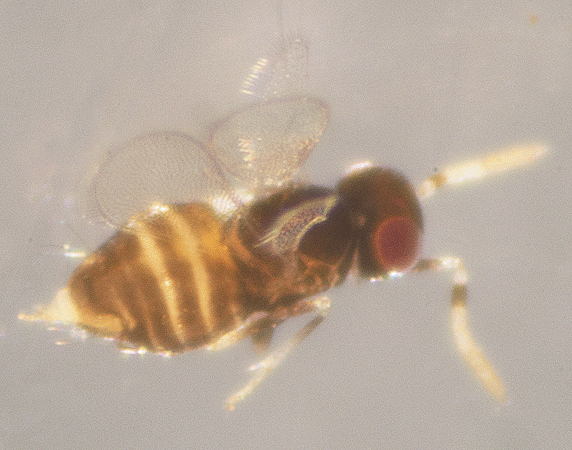 On November 17, 2015, this .6mm long wasp was caught in a pit trap that had been placed under a laurel oak tree just north of Smith Preserve Way.
On November 17, 2015, this .6mm long wasp was caught in a pit trap that had been placed under a laurel oak tree just north of Smith Preserve Way. 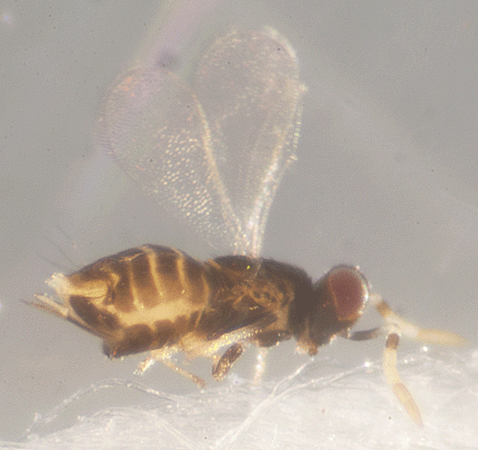 The third photograph was submitted to <BugGuide.net> for Lahey's examination. The webmaster thinks she sees 5 segments, but isn't sure.
The third photograph was submitted to <BugGuide.net> for Lahey's examination. The webmaster thinks she sees 5 segments, but isn't sure.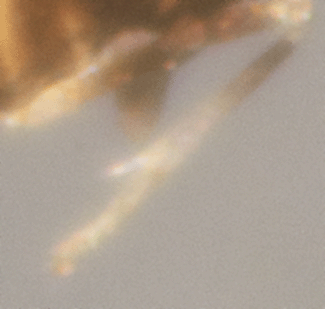
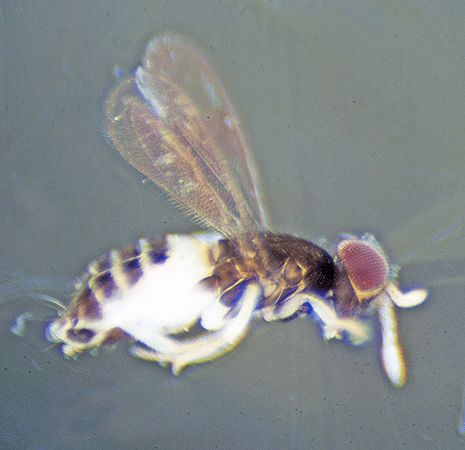
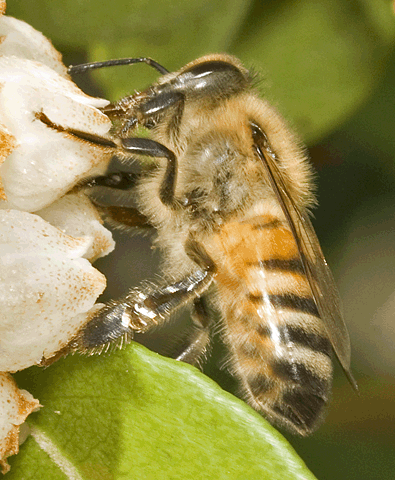 As shown in the second photograph, honey bees collect nectar by sticking their tongues inside flowers. Nectar is refined by workers in the hive to create honey.
As shown in the second photograph, honey bees collect nectar by sticking their tongues inside flowers. Nectar is refined by workers in the hive to create honey.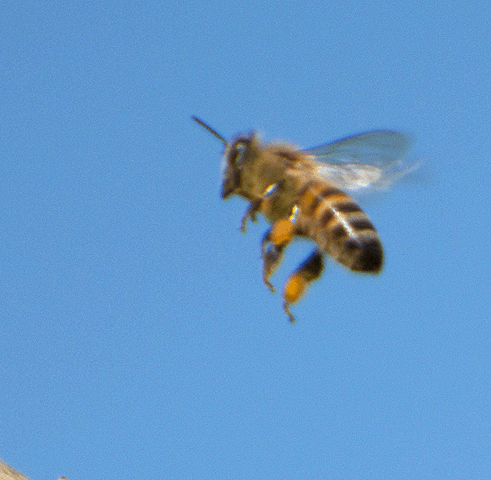 Foraging bees rake pollen from flowers with their feet, comb it from the feathery hairs that cover their bodies, and pack it into the pollen baskets on their hind legs. In the third photograph, a worker is headed back to the hive with packed pollen baskets. Inside the hive, the pollen will be passed off to other workers to feed to the larvae.
Foraging bees rake pollen from flowers with their feet, comb it from the feathery hairs that cover their bodies, and pack it into the pollen baskets on their hind legs. In the third photograph, a worker is headed back to the hive with packed pollen baskets. Inside the hive, the pollen will be passed off to other workers to feed to the larvae.  Apis mellifera was originally brought to Florida in colonial times and is considered the smallest European domestic livestock. Today there are both wild and domestic hives. The photograph at left, taken in March 2012 shows a huge, healthy wild hive that appeared in the Smith Preserve. But, by April 2013, the hive had fallen to the ground, as shown below. Very few bees were present. The cause of the hive collapse in unknown.
Apis mellifera was originally brought to Florida in colonial times and is considered the smallest European domestic livestock. Today there are both wild and domestic hives. The photograph at left, taken in March 2012 shows a huge, healthy wild hive that appeared in the Smith Preserve. But, by April 2013, the hive had fallen to the ground, as shown below. Very few bees were present. The cause of the hive collapse in unknown. 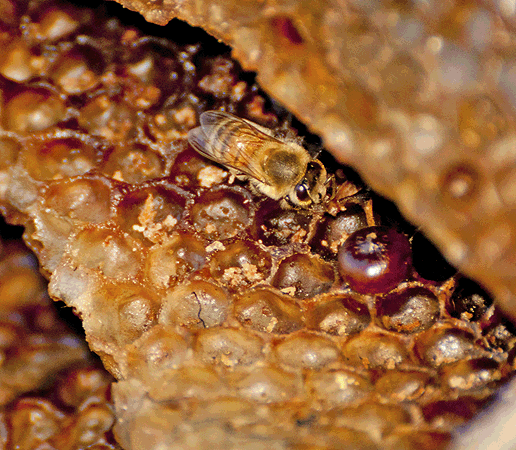 In recent years, Apis mellifera populations are disappearing. Bees seem to just abandon their hives never to return. In 2006, this phenomenon was given the name, "Colony Collapse Disorder" (CCD). Estimates are that 1/3 of all colonies in the United States have vanished. The cause could be a combination of things that are making bees sick, including pesticide exposure, invasive parasitic mites, inadequate food supply, and/or a new virus that targets honey bee immune systems. It is unknown whether or not the Smith Preserve hive suffered from CCD.
In recent years, Apis mellifera populations are disappearing. Bees seem to just abandon their hives never to return. In 2006, this phenomenon was given the name, "Colony Collapse Disorder" (CCD). Estimates are that 1/3 of all colonies in the United States have vanished. The cause could be a combination of things that are making bees sick, including pesticide exposure, invasive parasitic mites, inadequate food supply, and/or a new virus that targets honey bee immune systems. It is unknown whether or not the Smith Preserve hive suffered from CCD.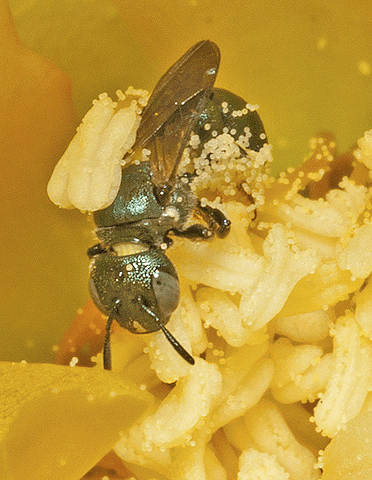
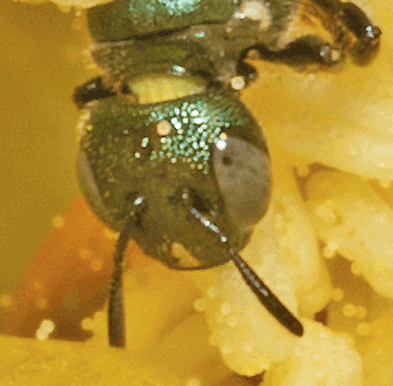
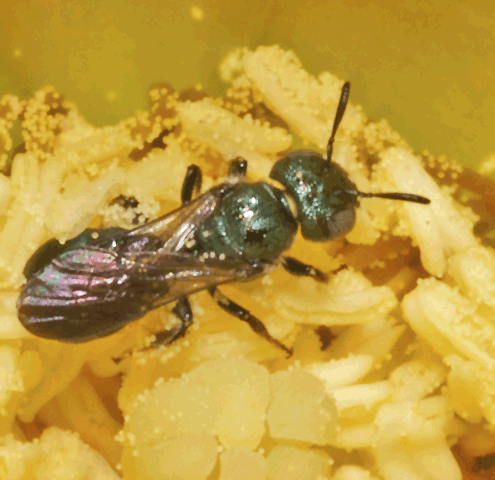
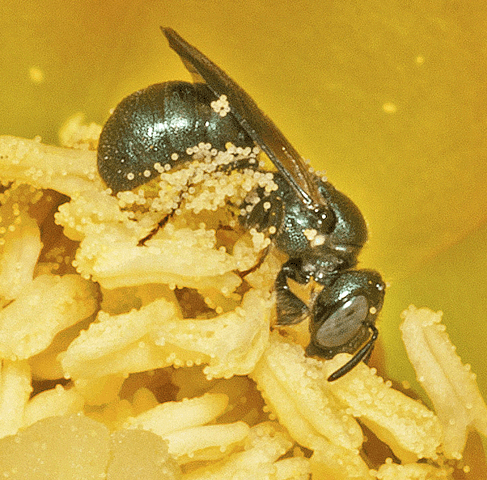
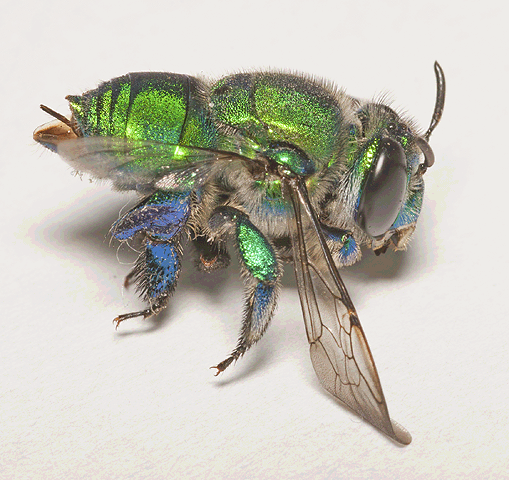
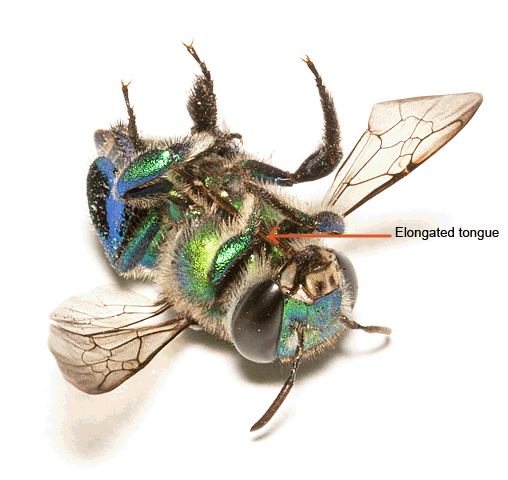
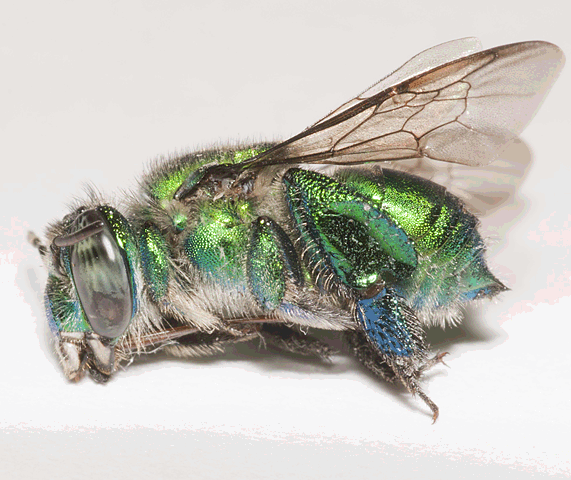 Males (like the ones in these photographs) have brush-like front tarsi and enlarged hind tibiae. There is a hole on the outside of each tibia that leads to a sponge-like compartment for storing aromatic compounds. Males use their front tarsal brushes to collect fragrant compounds produced in the environment from flowers, aromatic leaves, and fungus on logs. Next, the compounds are deposited from the brushes into the hind tibial compartments. Males use the fragrances to woo females.
Males (like the ones in these photographs) have brush-like front tarsi and enlarged hind tibiae. There is a hole on the outside of each tibia that leads to a sponge-like compartment for storing aromatic compounds. Males use their front tarsal brushes to collect fragrant compounds produced in the environment from flowers, aromatic leaves, and fungus on logs. Next, the compounds are deposited from the brushes into the hind tibial compartments. Males use the fragrances to woo females.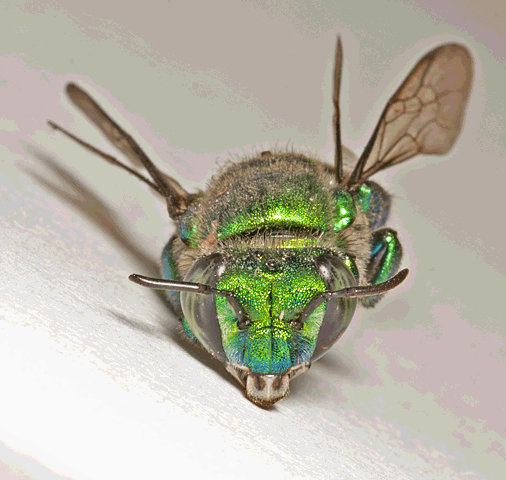 Orchid bees have mutualistic relationships with particular species of perfume orchids. Each orchid species depends on a particular species of male bee for pollination. To attract these bees, the orchid produces a chemical scent or has flowers that mimic the appearance of female bees. The orchid does not provide nectar or pollen to the bee. It is evident that Euglossa dilemma can survive quite well without the orchid since Euglossa dilemma lives in Southwest Florida, but the orchid does not. With its very long tongue, Euglossa dilemma is an important pollinator of a variety of plants.
Orchid bees have mutualistic relationships with particular species of perfume orchids. Each orchid species depends on a particular species of male bee for pollination. To attract these bees, the orchid produces a chemical scent or has flowers that mimic the appearance of female bees. The orchid does not provide nectar or pollen to the bee. It is evident that Euglossa dilemma can survive quite well without the orchid since Euglossa dilemma lives in Southwest Florida, but the orchid does not. With its very long tongue, Euglossa dilemma is an important pollinator of a variety of plants. 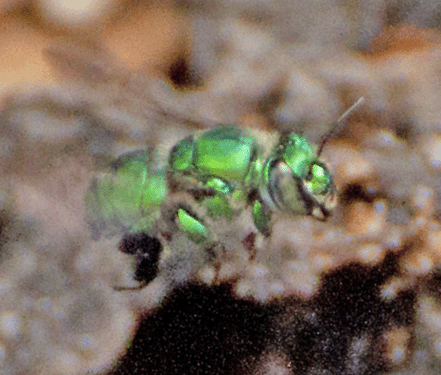
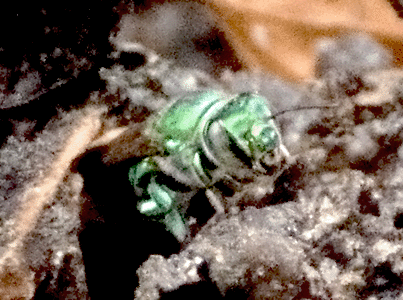
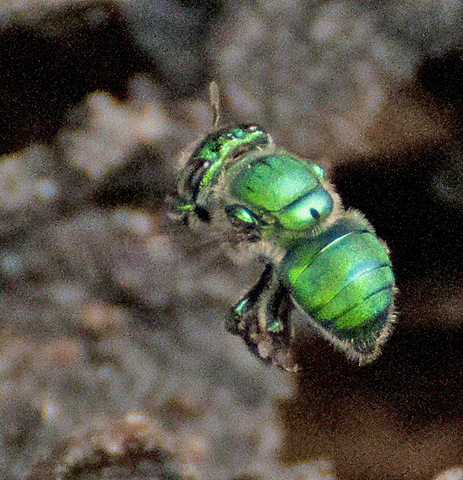
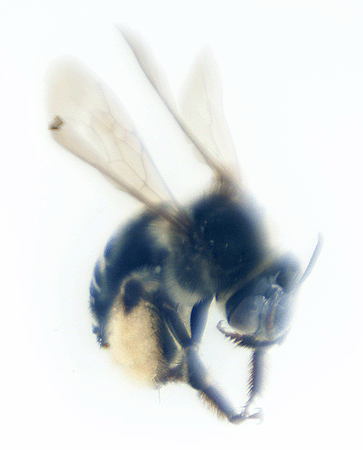
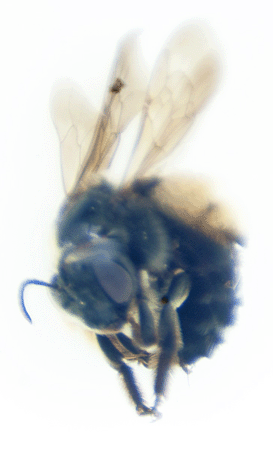
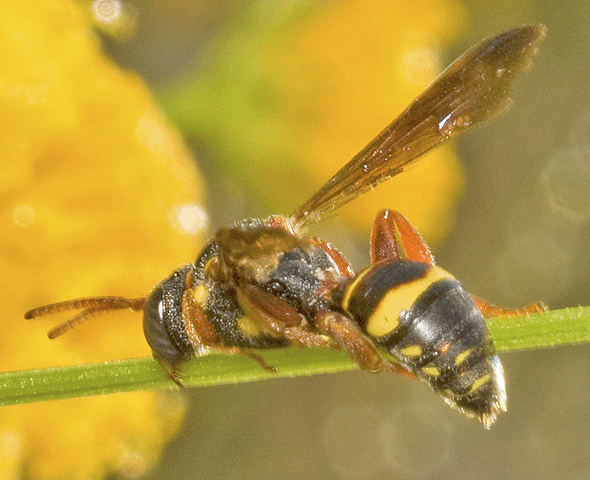
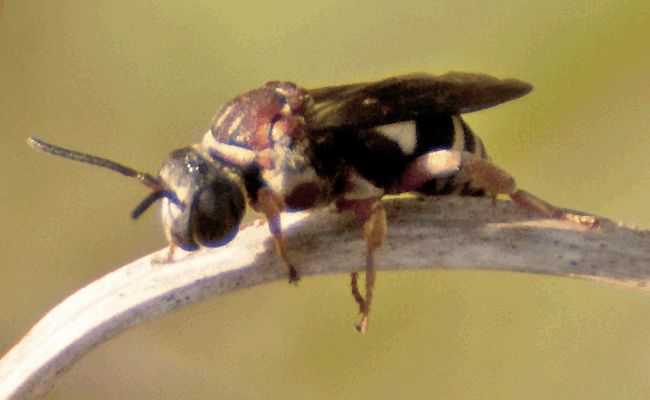 Like
Like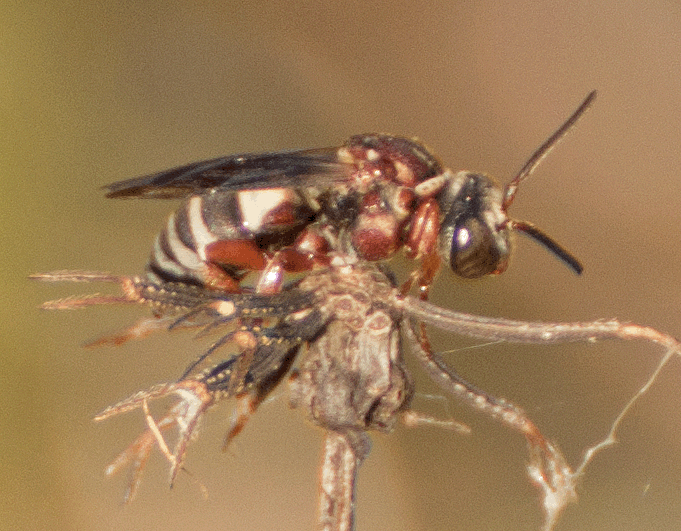 The species is found in Alabama, Florida, and Georgia.
The species is found in Alabama, Florida, and Georgia.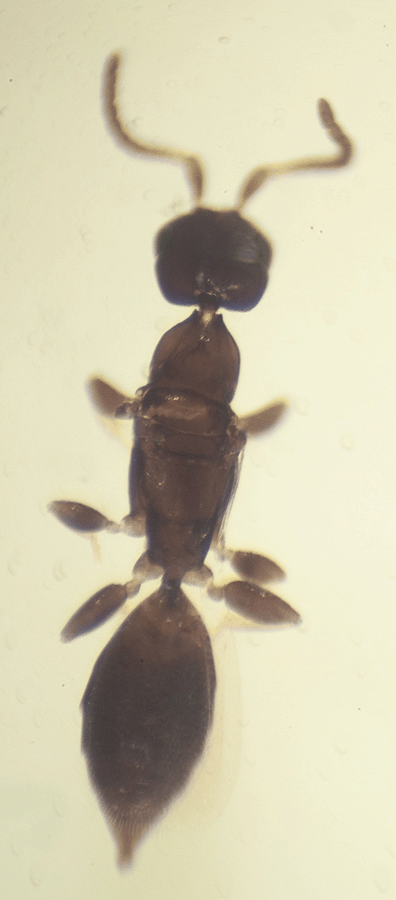
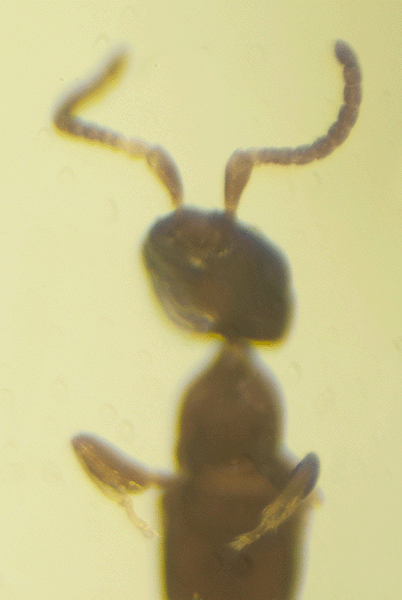 On February 18, 2020, this 1 mm wasp was captured in a pitfall trap that had been left overnight in sand adjacent to an abandoned gopher tortoise burrow. The location of the burrow was near the light post immediately north of Smith Preserve Way. These images were created using photomicroscopy and sent for identification to <BugGuide.net>. The first image is a ventral view, the second is a closer view of the legs and antennae from a ventral view.
On February 18, 2020, this 1 mm wasp was captured in a pitfall trap that had been left overnight in sand adjacent to an abandoned gopher tortoise burrow. The location of the burrow was near the light post immediately north of Smith Preserve Way. These images were created using photomicroscopy and sent for identification to <BugGuide.net>. The first image is a ventral view, the second is a closer view of the legs and antennae from a ventral view. 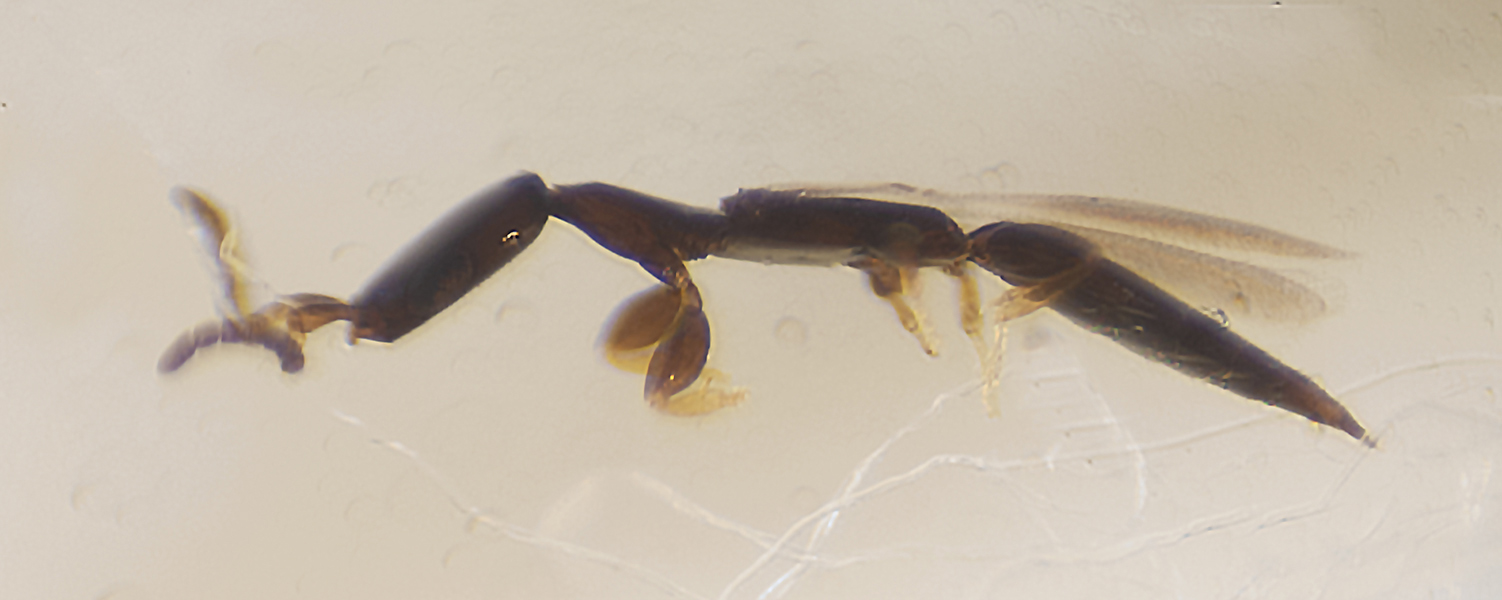
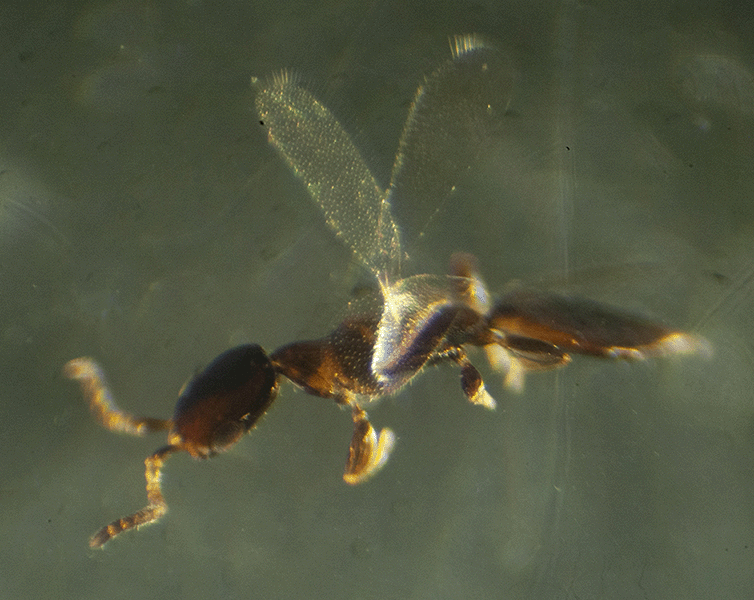
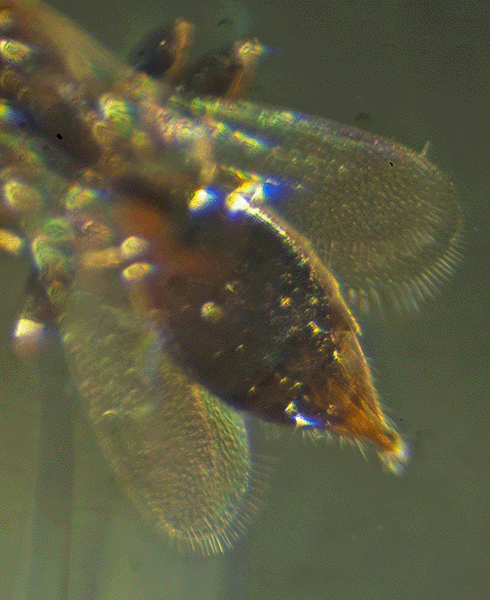 According to <BugGuide.net> there are ~200 species in >20 genera in our area and 2200 species in ~ 100 general worldwide. Species are 2-5 mm, rarely > 10 mm. Note, this individual is smaller that the listed normal for the family.
According to <BugGuide.net> there are ~200 species in >20 genera in our area and 2200 species in ~ 100 general worldwide. Species are 2-5 mm, rarely > 10 mm. Note, this individual is smaller that the listed normal for the family. 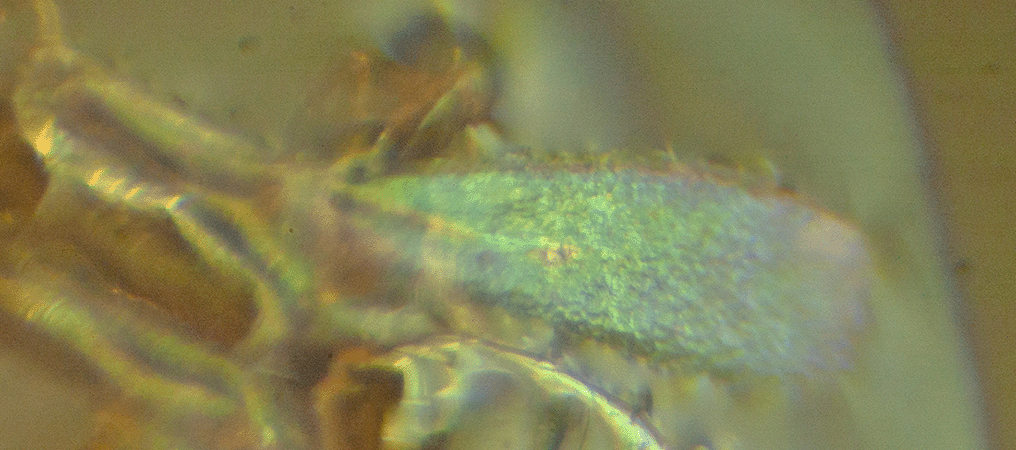
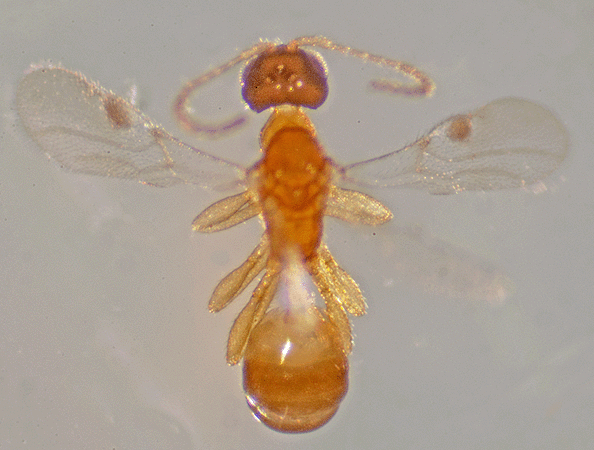 On April 16. 2015, this 1.25 mm-long wasp was captured in a yellow bowl trap placed below a
On April 16. 2015, this 1.25 mm-long wasp was captured in a yellow bowl trap placed below a 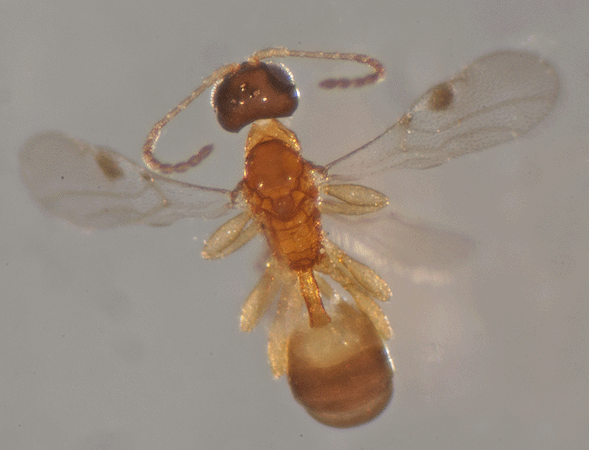 Apocrita is a suborder of Order Hymenoptera. This suborder contains the most advanced hymenopterans and is distinguished by its members having a narrow petiole ("waist"), formed between the first two segments of the actual abdomen. The first segment is fused to the thorax.
Apocrita is a suborder of Order Hymenoptera. This suborder contains the most advanced hymenopterans and is distinguished by its members having a narrow petiole ("waist"), formed between the first two segments of the actual abdomen. The first segment is fused to the thorax.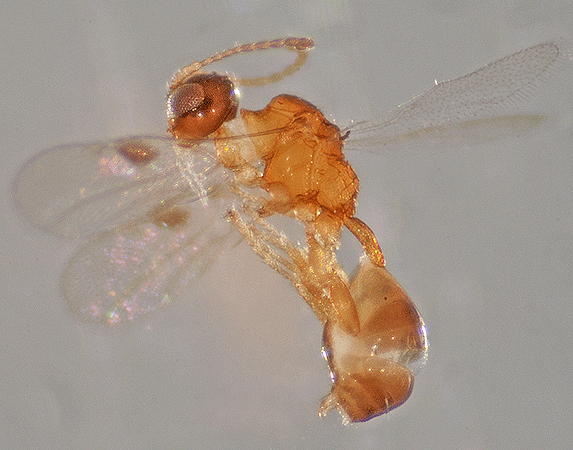 On August 5, 2015, the wasp was identified from these photographs as a Braconid Wasp belonging to Subfamily Euphorinae by "twiztedminds," a Contributor to <BugGuide.net>. "twiztedminds" stated "I believe euphoriella."
On August 5, 2015, the wasp was identified from these photographs as a Braconid Wasp belonging to Subfamily Euphorinae by "twiztedminds," a Contributor to <BugGuide.net>. "twiztedminds" stated "I believe euphoriella."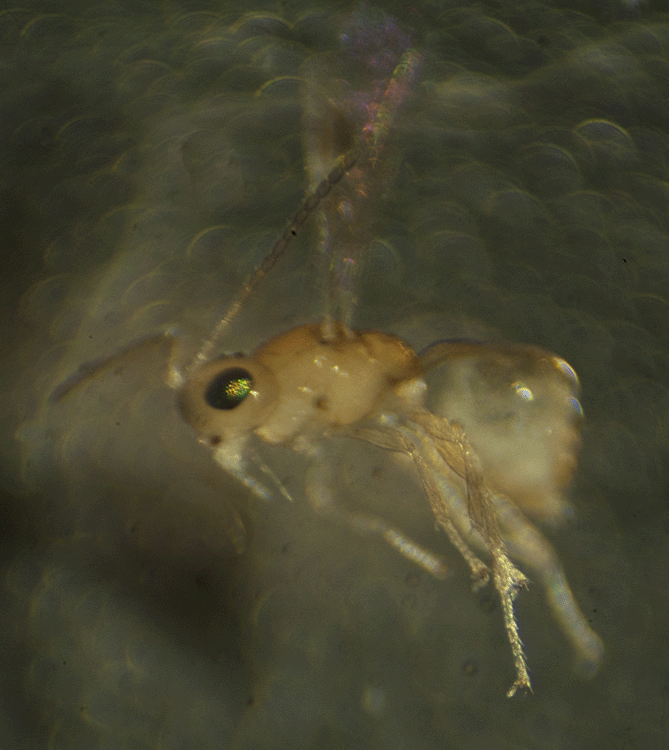 The food of most members of the subfamily are adult insects, or sometimes nymphs. Different Euphorinae species attack different insects. All are parasitoids, which means their larvae live as parasites that eventually kill the host after having fed on it.
The food of most members of the subfamily are adult insects, or sometimes nymphs. Different Euphorinae species attack different insects. All are parasitoids, which means their larvae live as parasites that eventually kill the host after having fed on it. 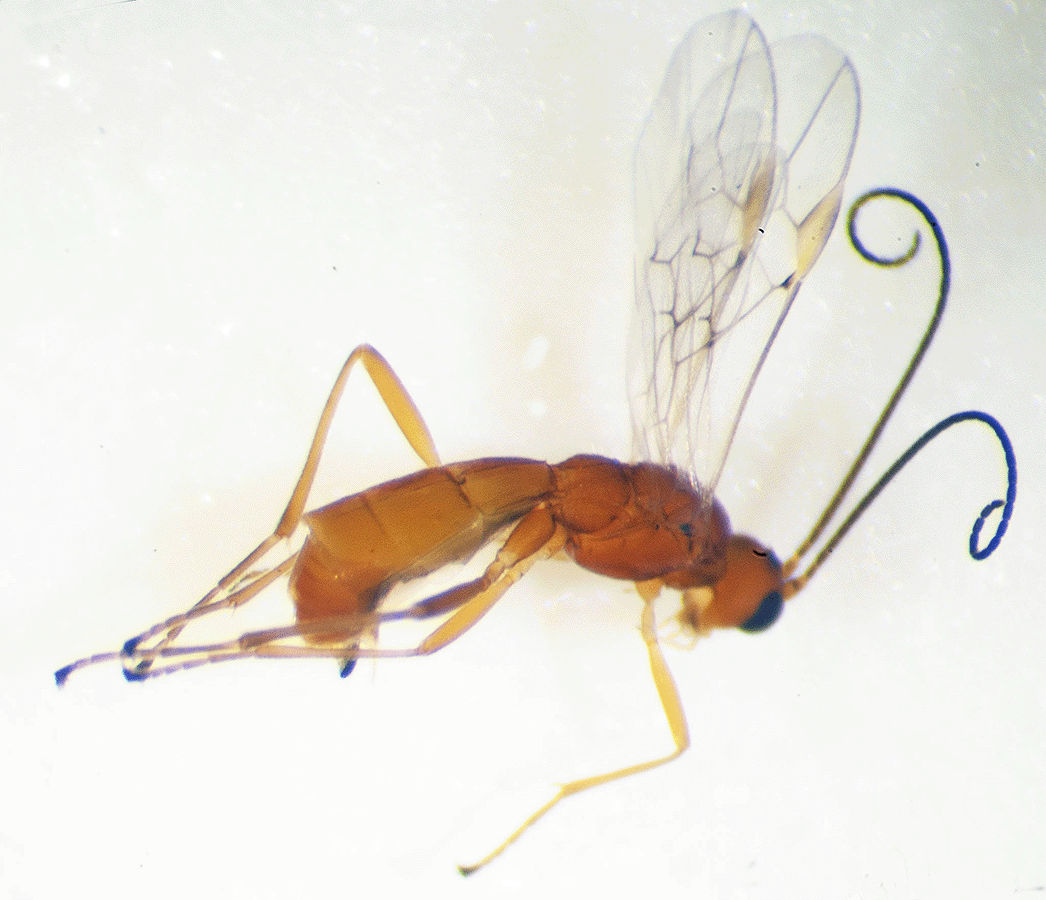
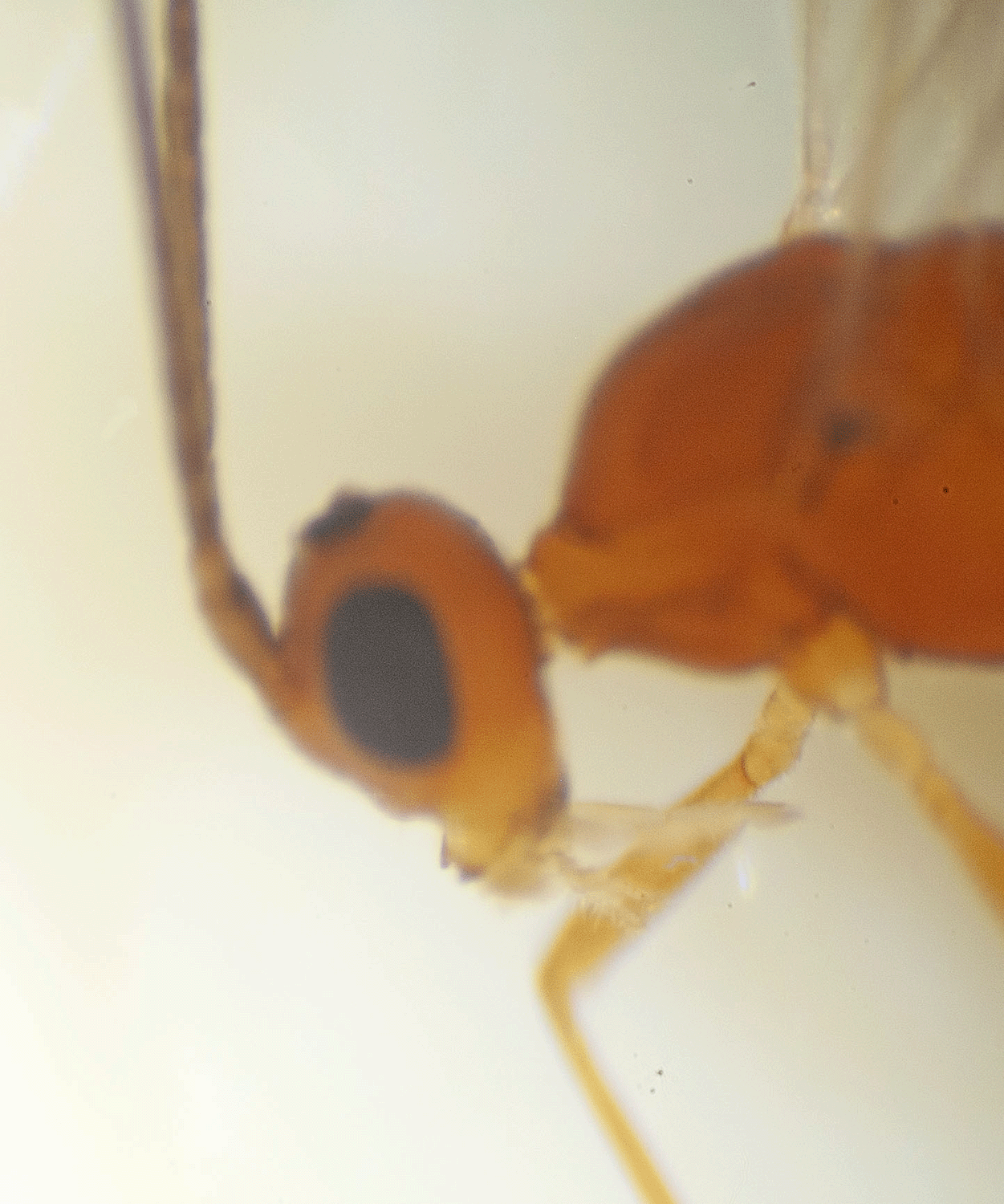
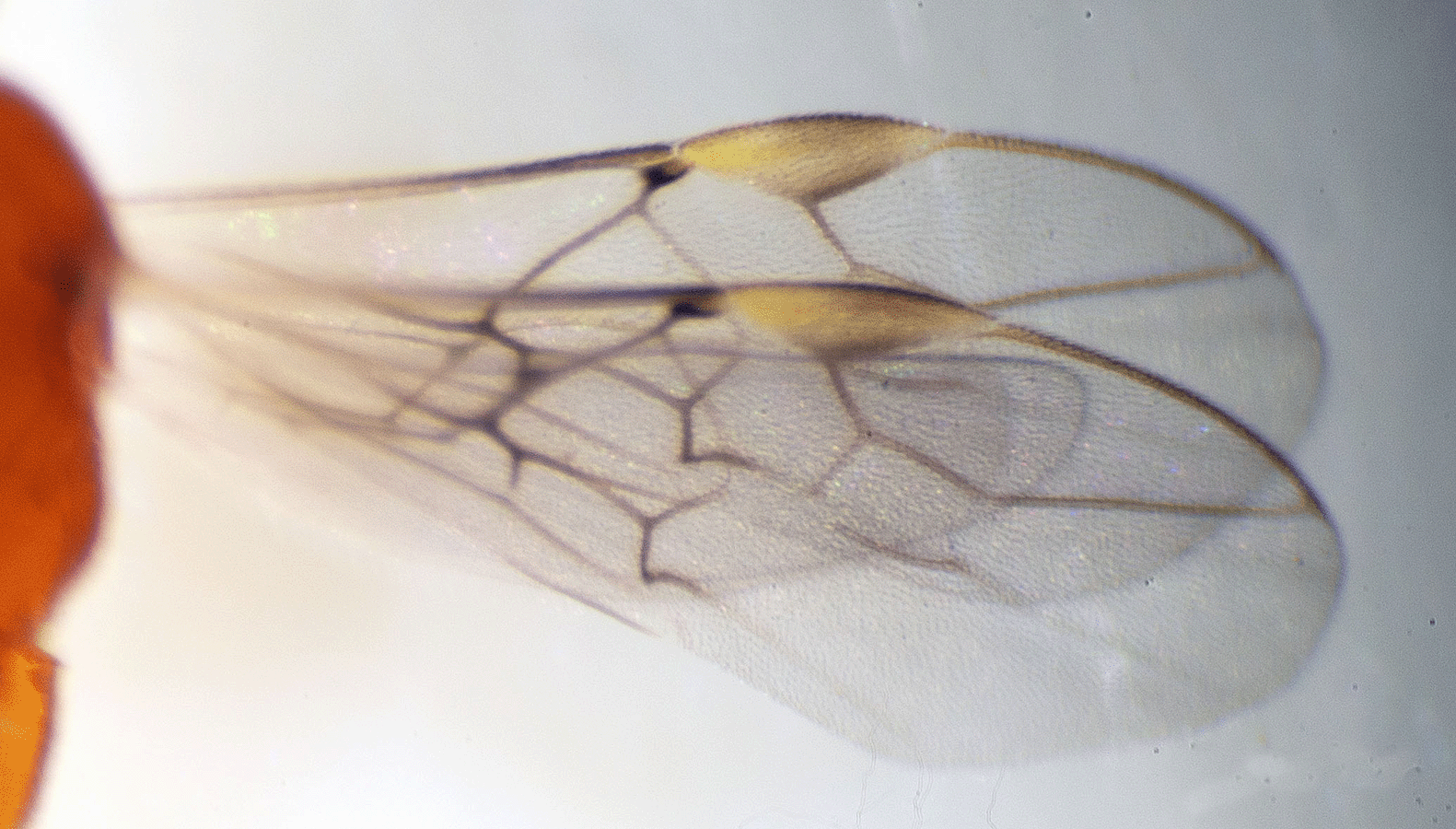
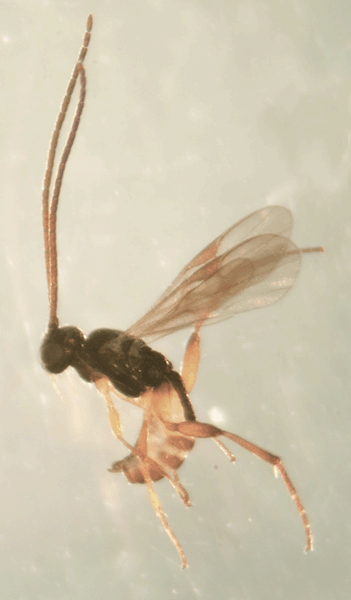
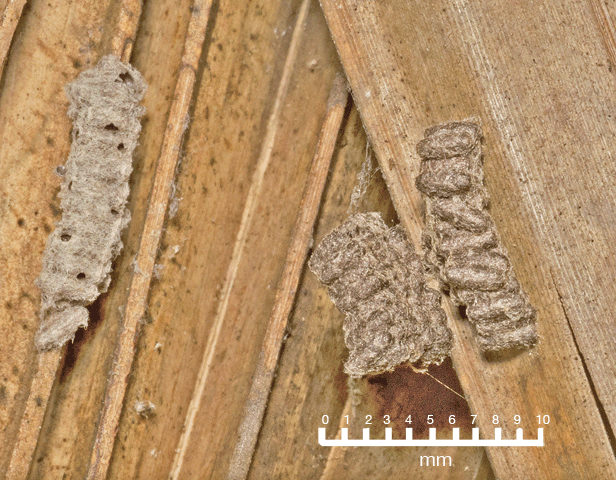 As of 2013, more than 1,000 genera of braconid wasps have been described. There is great diversity among the species in color and size, but every one is a parasitoid of another type of insect.
As of 2013, more than 1,000 genera of braconid wasps have been described. There is great diversity among the species in color and size, but every one is a parasitoid of another type of insect.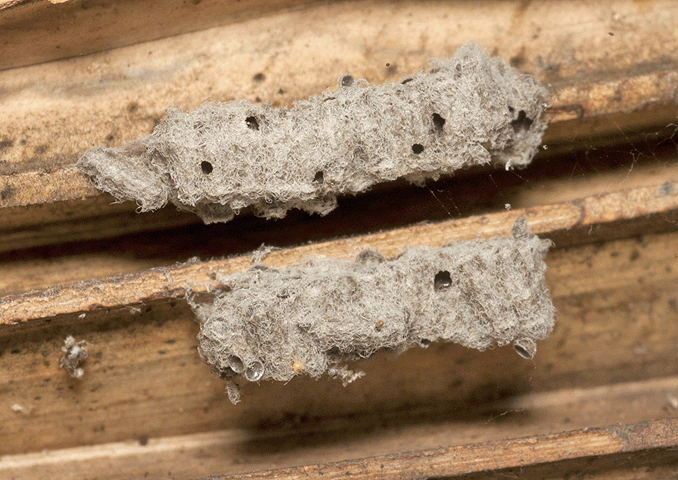
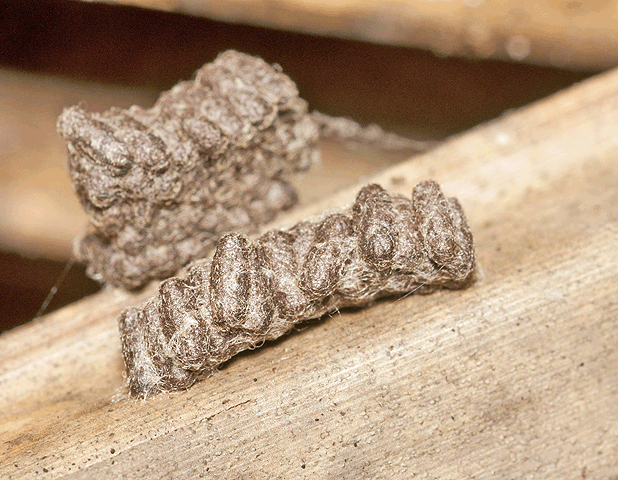
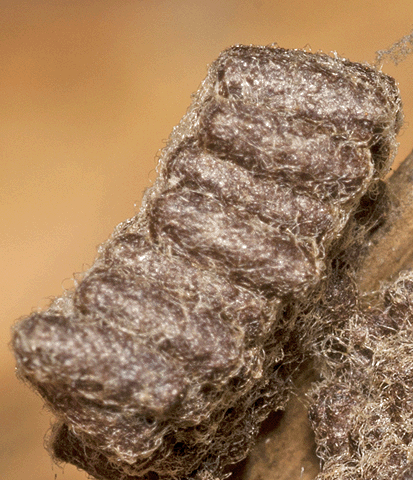
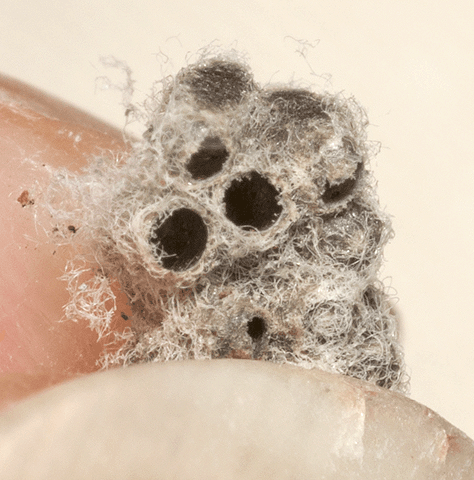
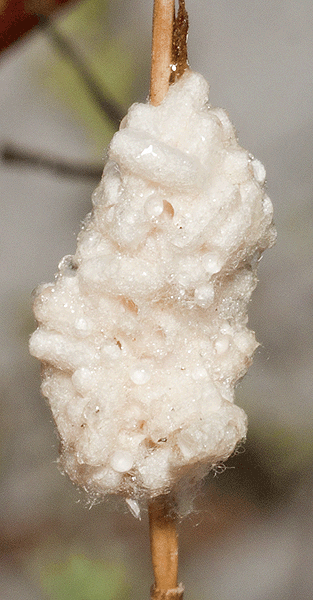
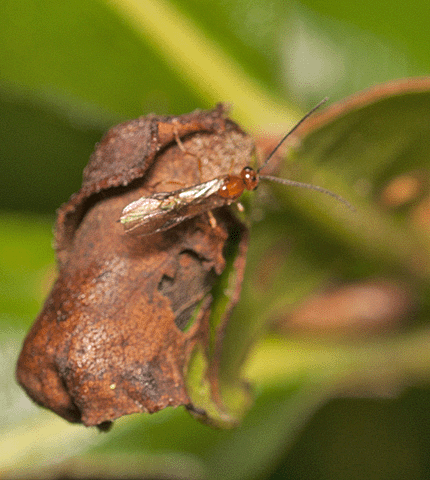
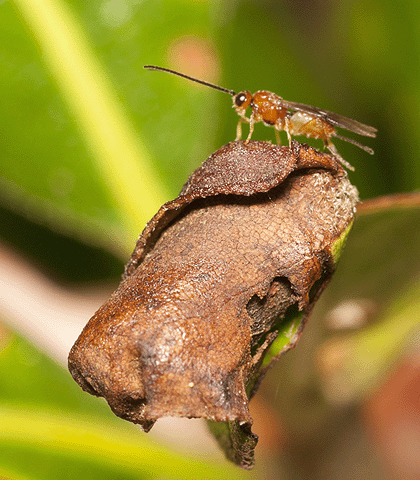
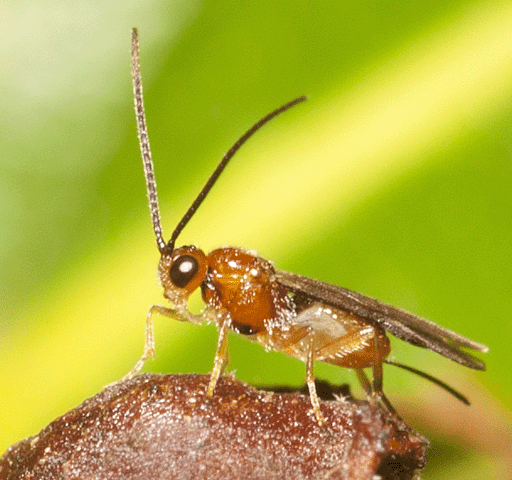
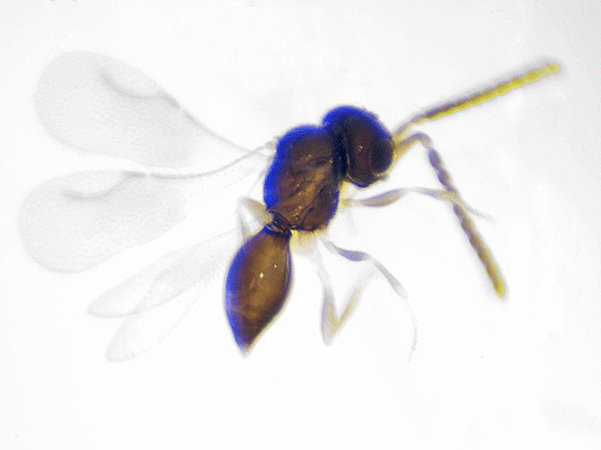 On February 10, 2016, this .5 mm long parasitic wasp was collected in leaf litter beneath an oak hammock in the northwest quadrant of the Smith Preserve, north of Smith Preserve Way.
On February 10, 2016, this .5 mm long parasitic wasp was collected in leaf litter beneath an oak hammock in the northwest quadrant of the Smith Preserve, north of Smith Preserve Way. 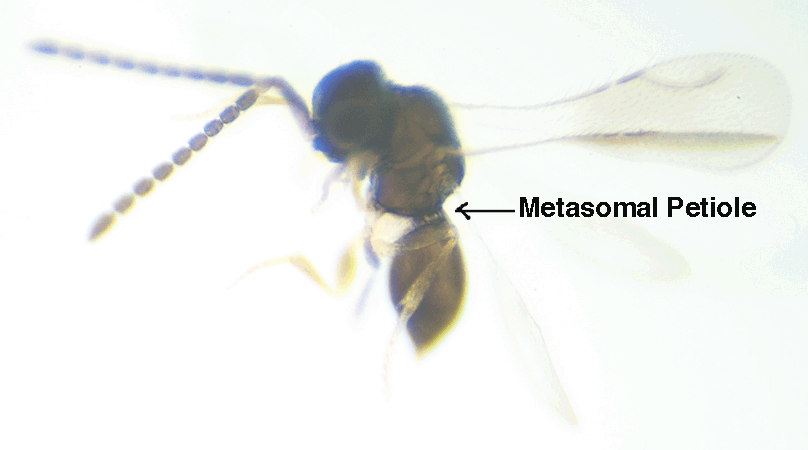
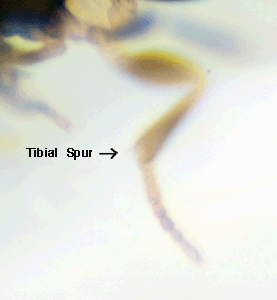 As shown above, members of this family have a very broad metasomal petiole. The metasoma is the posterior part of the body and the petiole is the "narrow waist." In this family, the "waist" is constricted, but not as narrowly as in most ants and some other wasps.
As shown above, members of this family have a very broad metasomal petiole. The metasoma is the posterior part of the body and the petiole is the "narrow waist." In this family, the "waist" is constricted, but not as narrowly as in most ants and some other wasps. 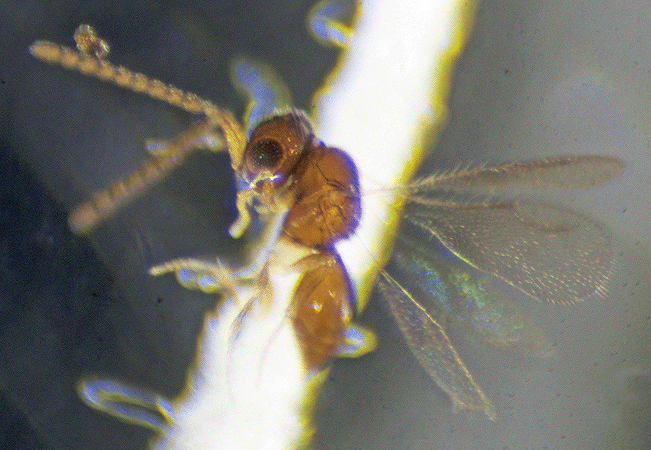
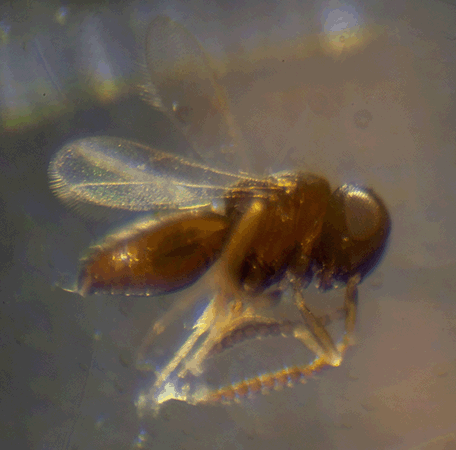
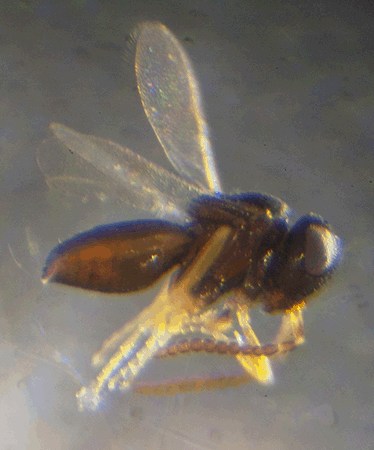
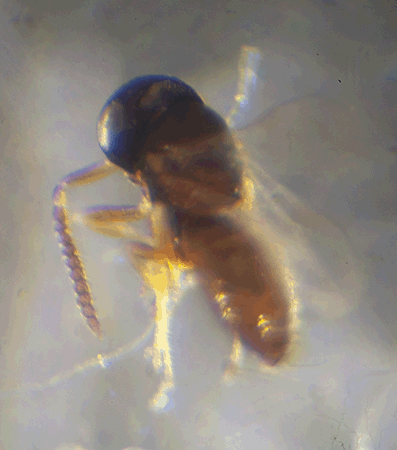
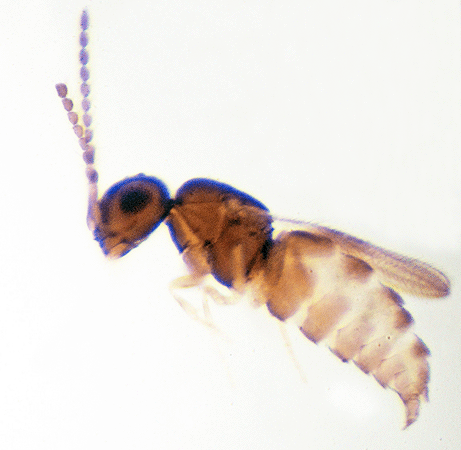

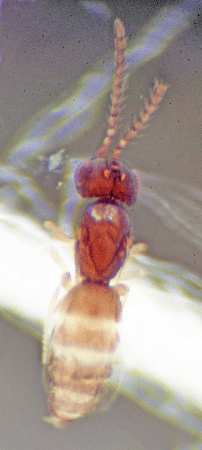
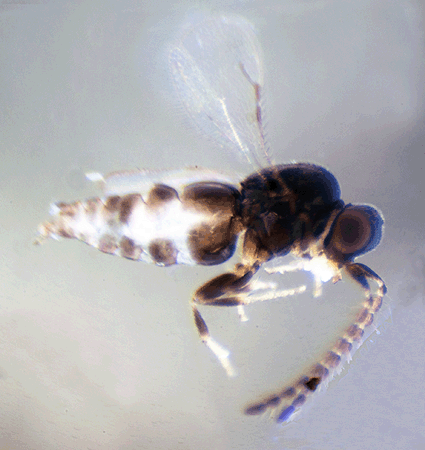
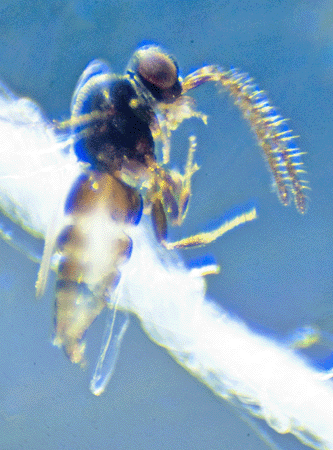
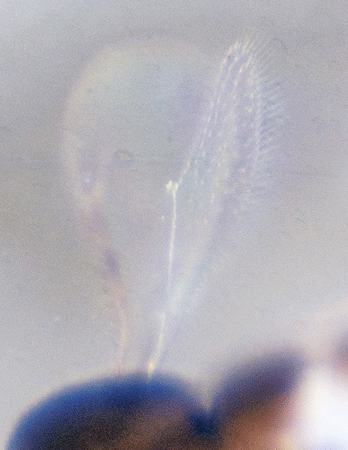
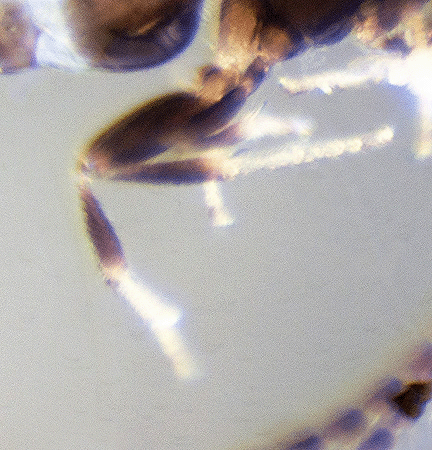
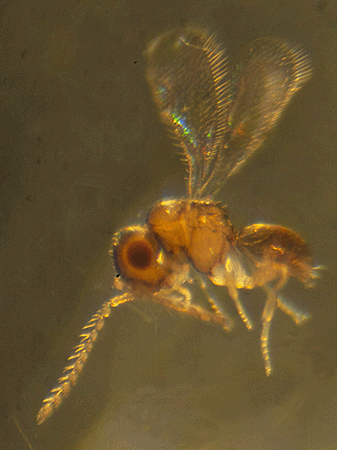 On February 2, 2022, this .4 mm long wasp was isolated from litter at the base of a fallen
On February 2, 2022, this .4 mm long wasp was isolated from litter at the base of a fallen 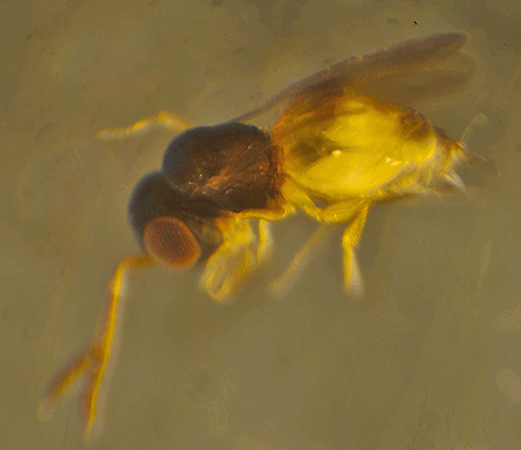 On February 2, 2022, this .8 mm wasp was extracted along with the one above from litter at the base of a fallen
On February 2, 2022, this .8 mm wasp was extracted along with the one above from litter at the base of a fallen 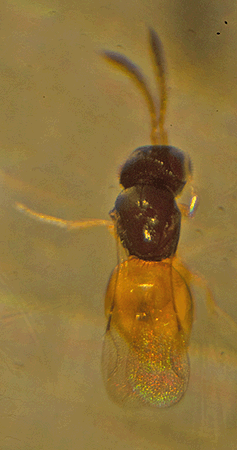 On February 13, 2022, the family was identified by Bob Zuparko, a Contributing Editor of <Bugguide.net. Bob's response was "This is a member of the family Ceraphronidae (the wing venation is the giveaway). Don't know if her bulk is due to her being gravid or not, but I'm fairly confident it is NOT due to her being parasitized."
On February 13, 2022, the family was identified by Bob Zuparko, a Contributing Editor of <Bugguide.net. Bob's response was "This is a member of the family Ceraphronidae (the wing venation is the giveaway). Don't know if her bulk is due to her being gravid or not, but I'm fairly confident it is NOT due to her being parasitized."
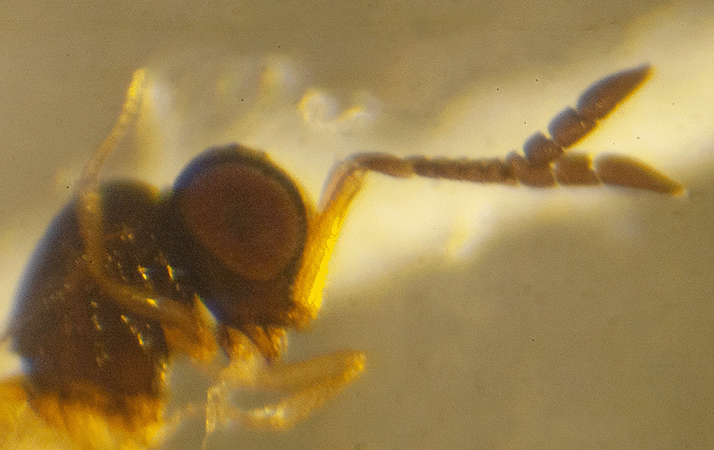

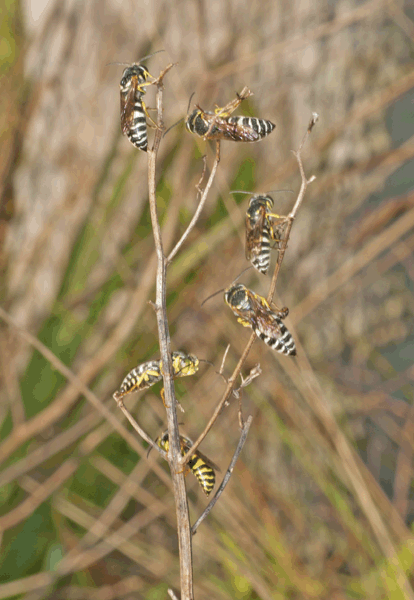
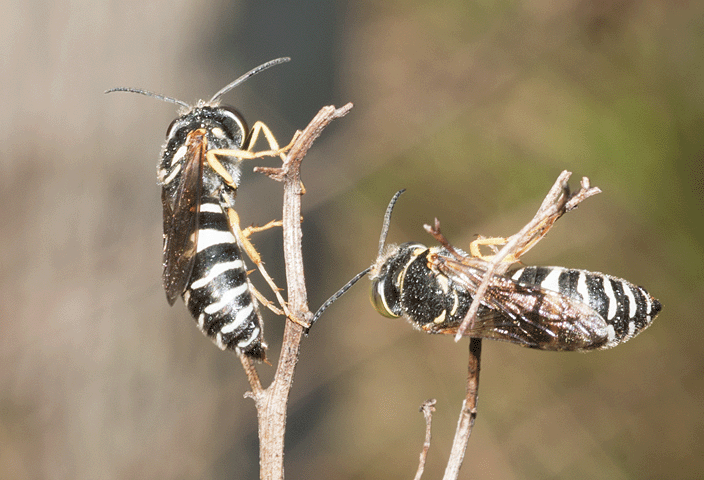
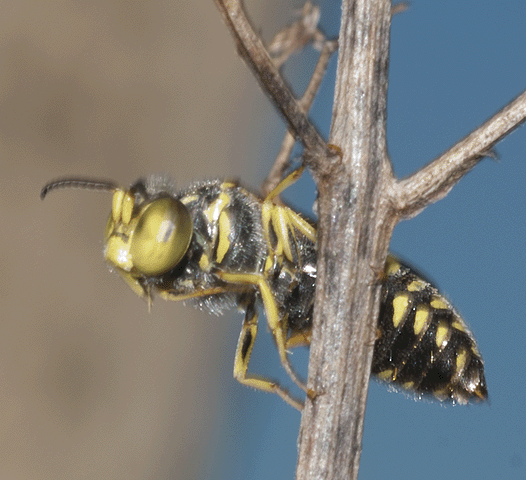 Sand wasps have many predators. Velvet ants raid sand wasp nests to lay their eggs on mature larvae. Thick-headed flies parasitize mature sand wasps. It is common for many female sand wasps to excavate nests within a small area. This creates large nesting aggregations, which attract parasitic flies and wasps. Many of these organisms are cleptoparasites. The cleptoparasites steal the paralyzed flies in the burrows. Sometimes, sand wasps prey on their own parasites and cleptoparasites.
Sand wasps have many predators. Velvet ants raid sand wasp nests to lay their eggs on mature larvae. Thick-headed flies parasitize mature sand wasps. It is common for many female sand wasps to excavate nests within a small area. This creates large nesting aggregations, which attract parasitic flies and wasps. Many of these organisms are cleptoparasites. The cleptoparasites steal the paralyzed flies in the burrows. Sometimes, sand wasps prey on their own parasites and cleptoparasites.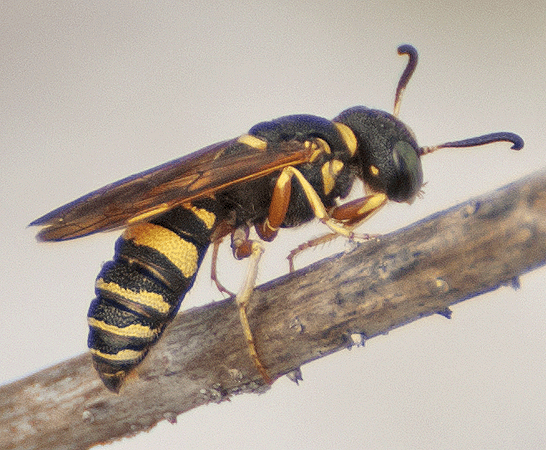
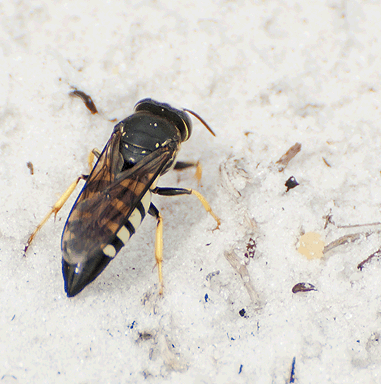
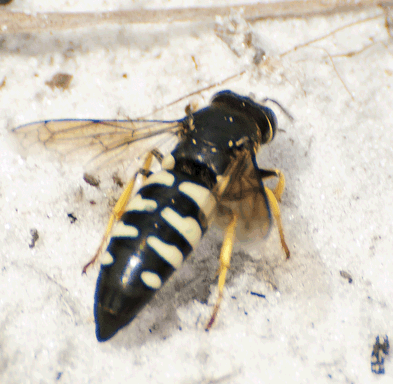 Horse guard wasps are a type of sand wasp that live in the eastern United States. They are hunters of horse flies.
Horse guard wasps are a type of sand wasp that live in the eastern United States. They are hunters of horse flies. 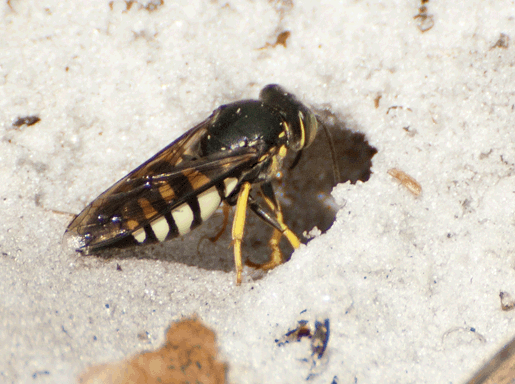
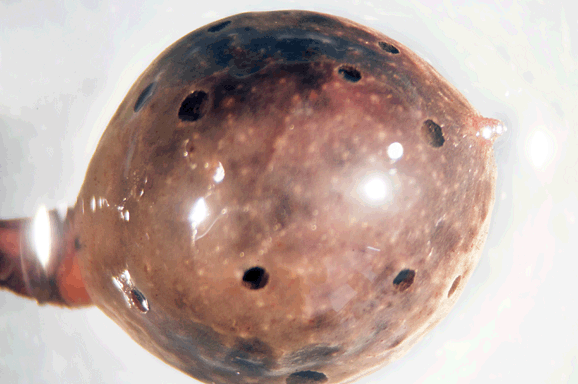

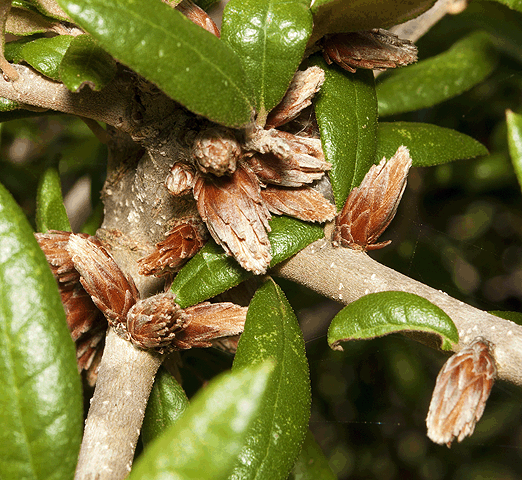
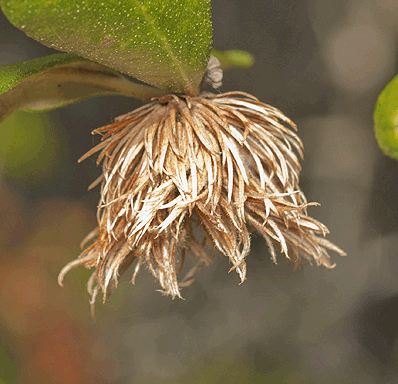
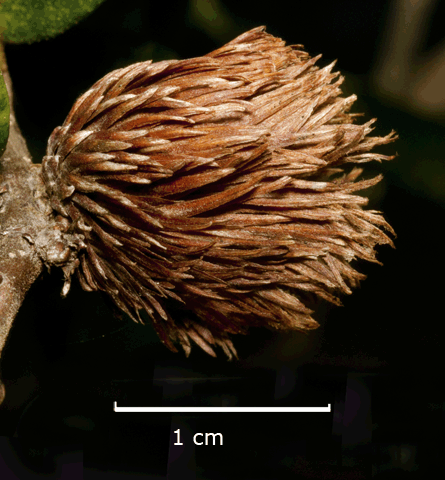
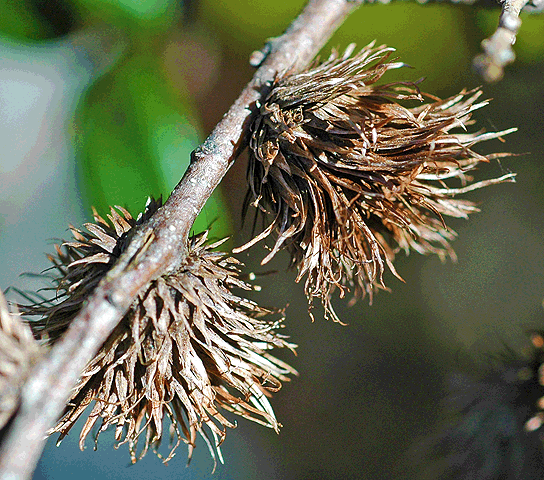
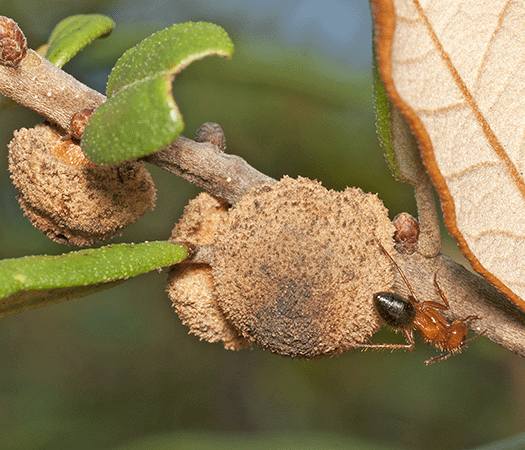
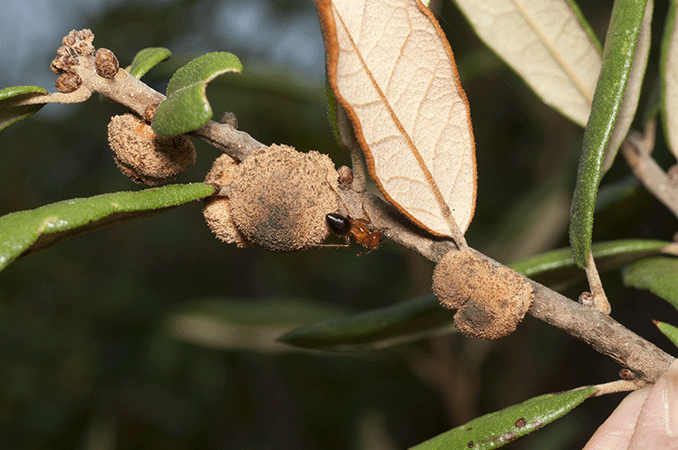
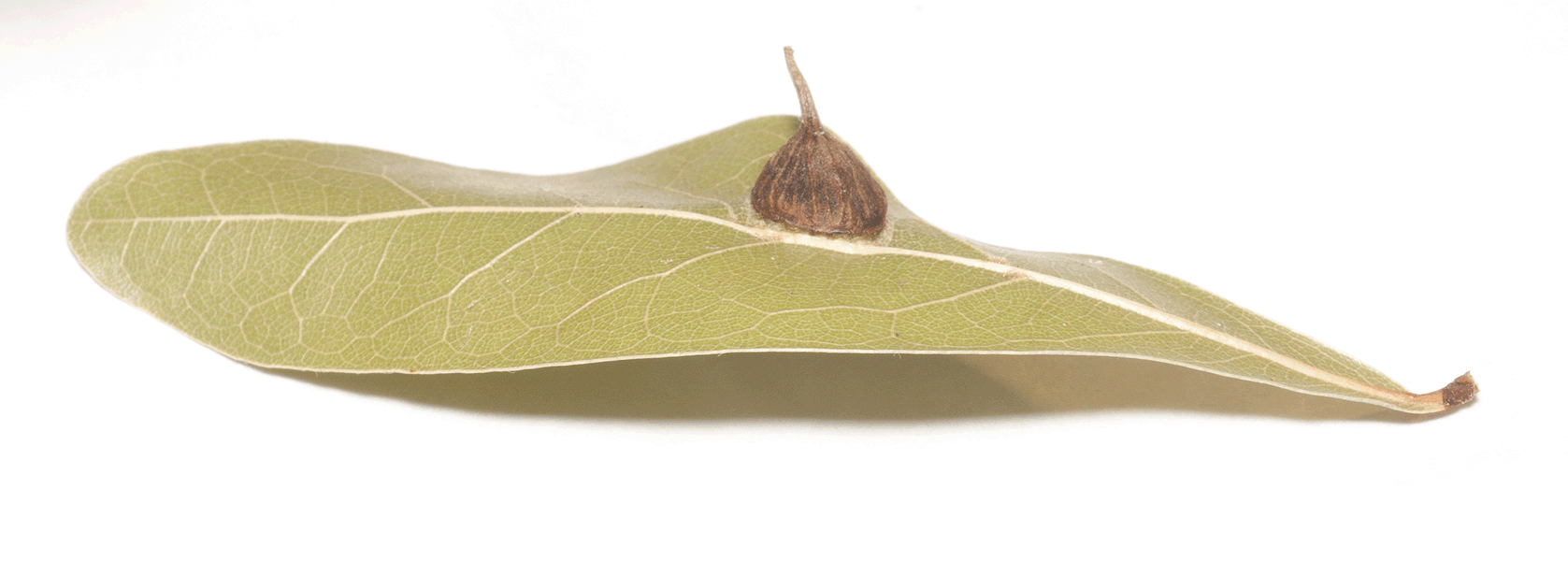
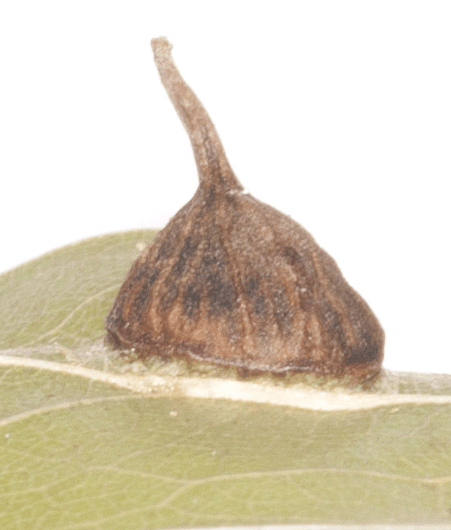
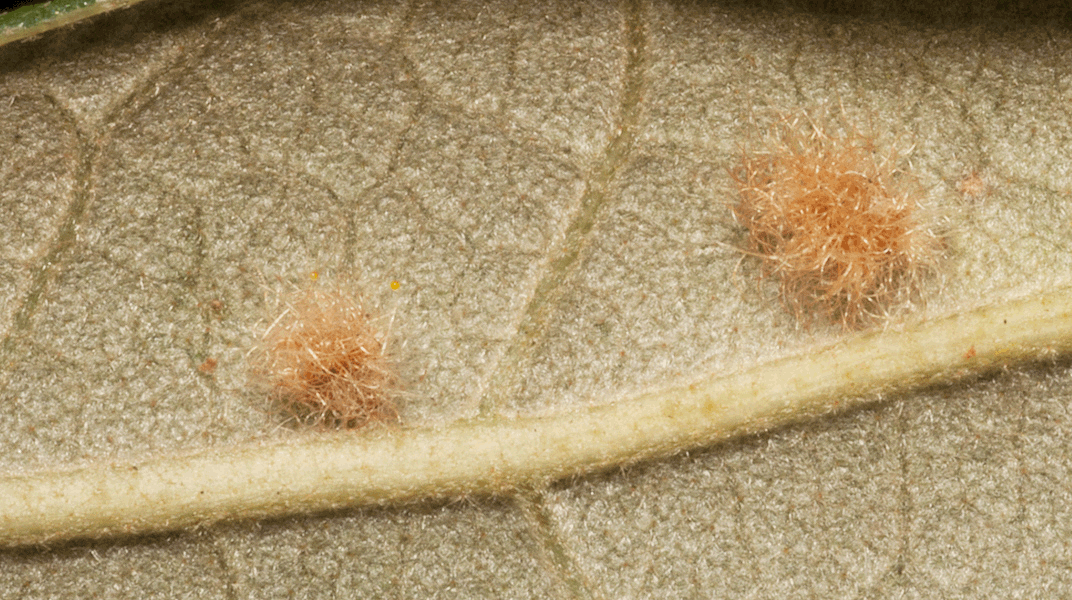
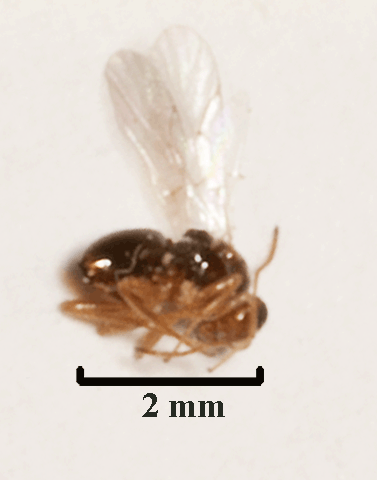
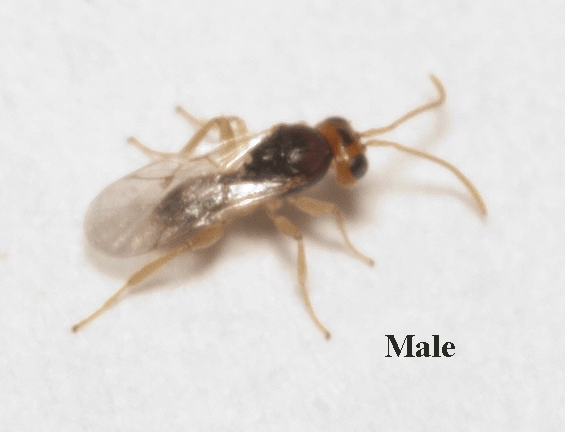
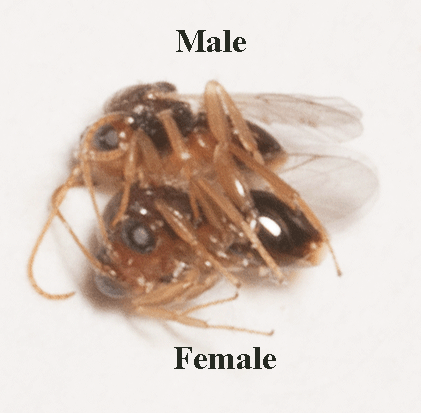
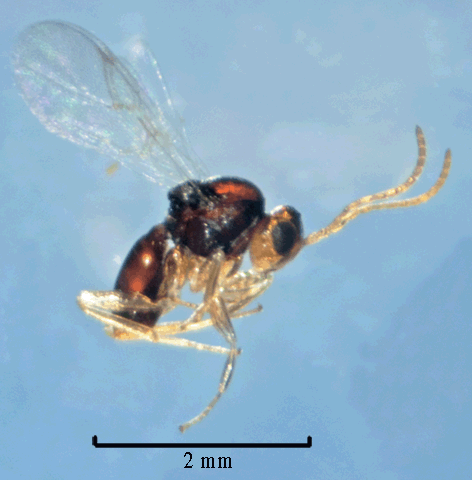
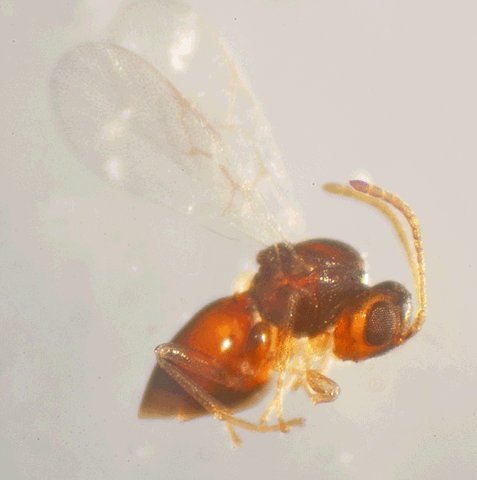
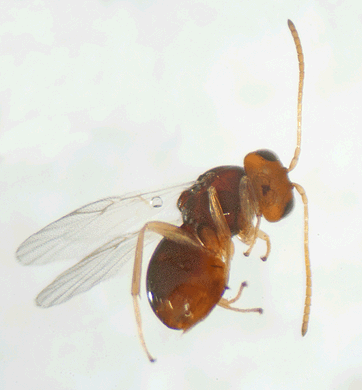
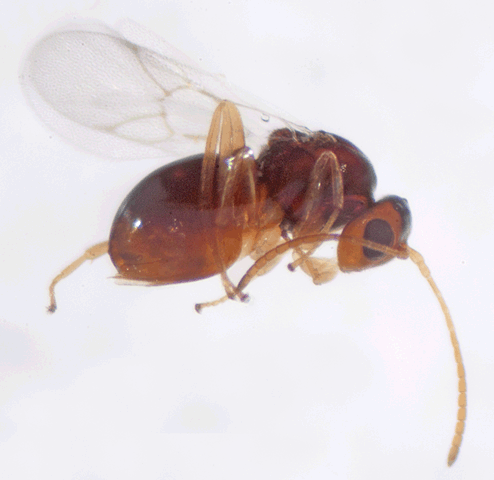
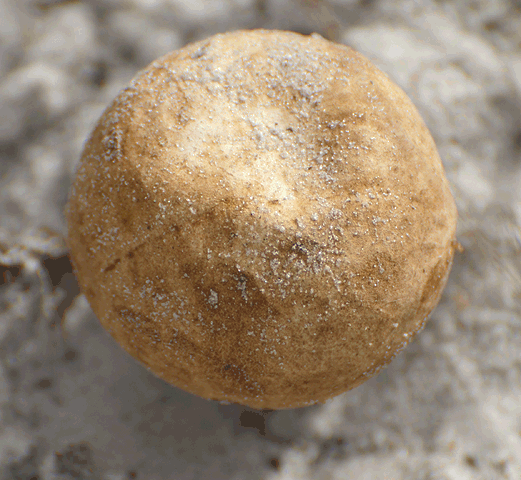
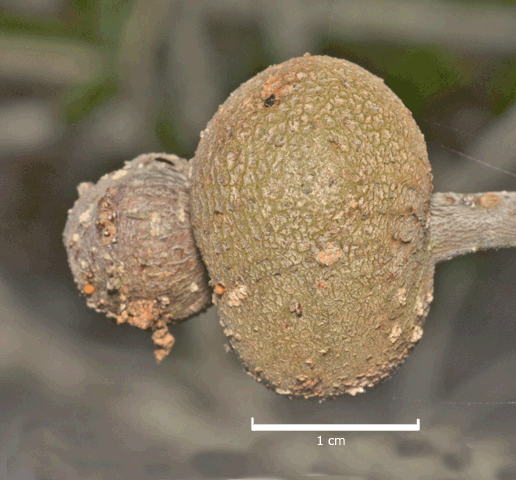
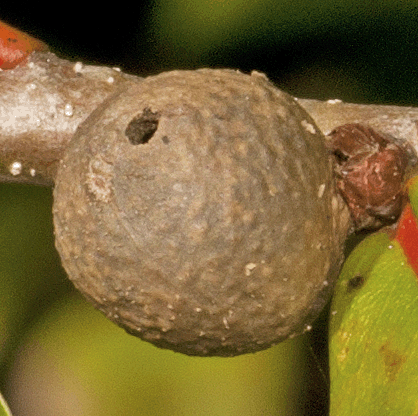
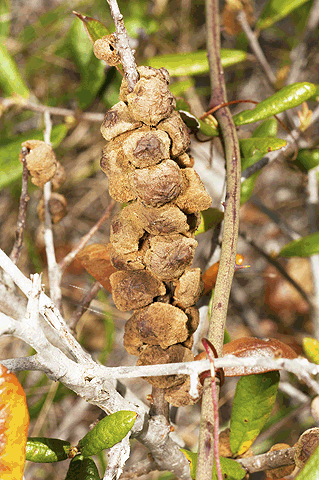
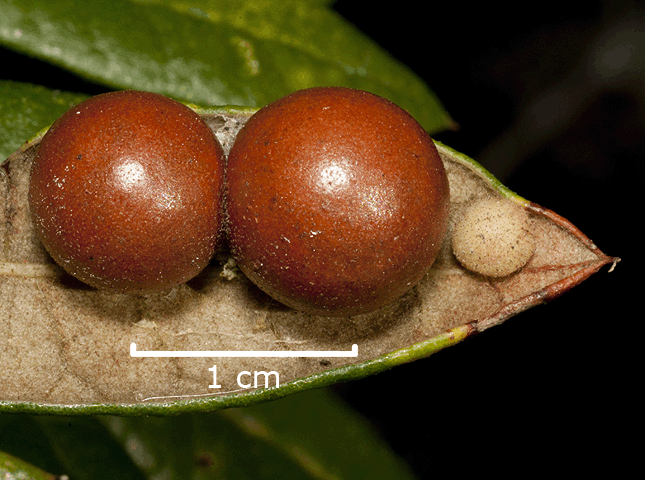

 These photographs were submitted for identification to <BugGuide.net>, sponsored by Iowa State University's Department of Entomology.
These photographs were submitted for identification to <BugGuide.net>, sponsored by Iowa State University's Department of Entomology. 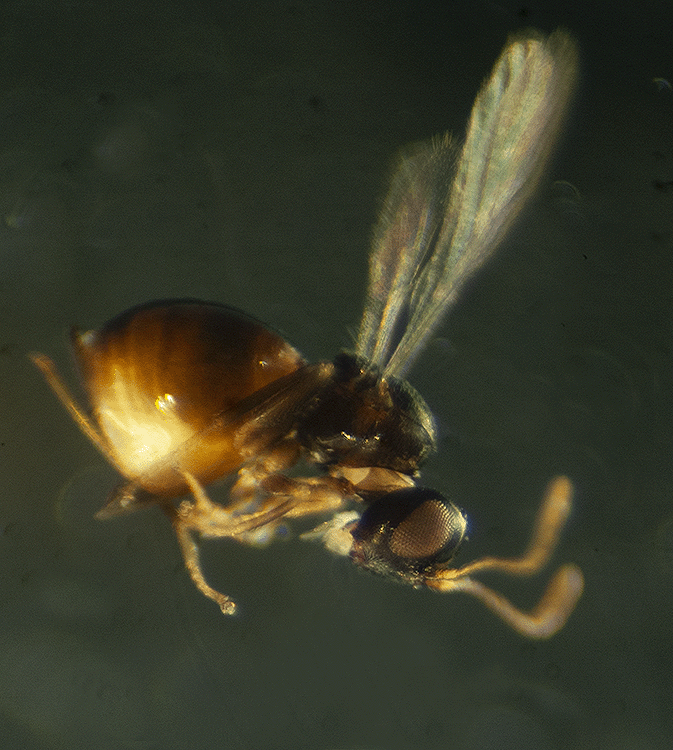 This 1 mm long wasp was collected in a yellow bowl trap that had been left overnight in a hammock that was south of the Christopher B. Smith Preserve pond and west of the gopher tortoise fence. The yellow bowl trap was retrieved on November 17, 2021.
This 1 mm long wasp was collected in a yellow bowl trap that had been left overnight in a hammock that was south of the Christopher B. Smith Preserve pond and west of the gopher tortoise fence. The yellow bowl trap was retrieved on November 17, 2021. 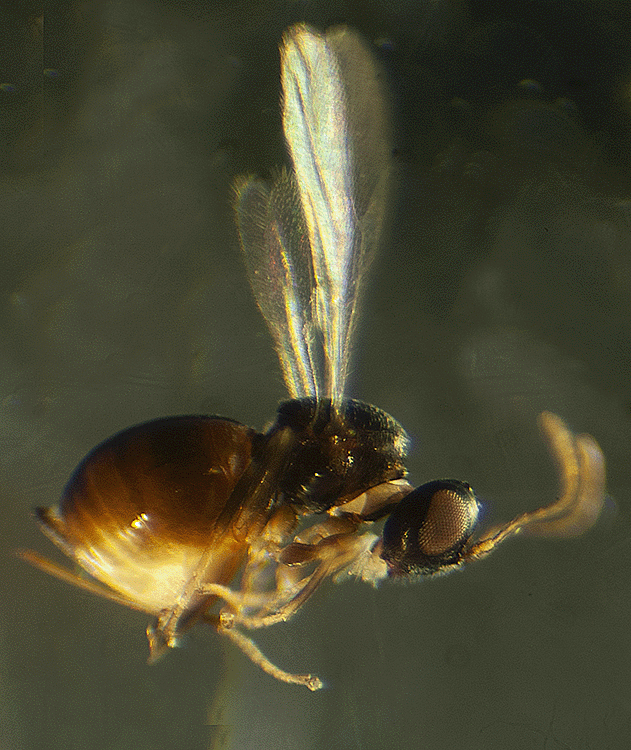 In adult wasps, the first segment of the hind tarsi is about as long as the following two or three combined. Most species in the family, as this specimen shows, are humpbacked.
In adult wasps, the first segment of the hind tarsi is about as long as the following two or three combined. Most species in the family, as this specimen shows, are humpbacked. 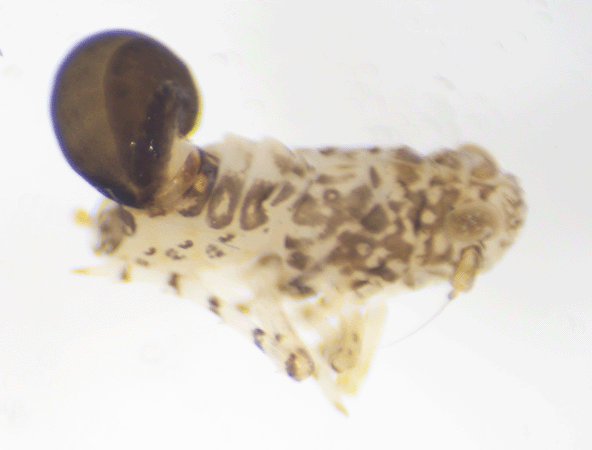 On December 30, 2015, this .75 mm larval wasp, attached to a 1.5 leafhopper nymph, was caught in a sweep net sample. The sample was obtained from a twisted mound of
On December 30, 2015, this .75 mm larval wasp, attached to a 1.5 leafhopper nymph, was caught in a sweep net sample. The sample was obtained from a twisted mound of 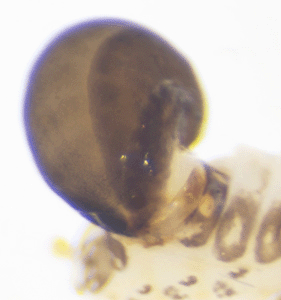 On January 7, 2016, the black crusty object was identified as a dryinid wasp larva by Charley Eiseman, a Contributing Editor of <BugGuide.net>. Ross Hill, a Contributor to <BugGuide.net> added information about the wasp. "Female dryinid wasps inject eggs into the host using a sharp ovipositor, and the larva spends its early stages feeding internally on the host. As the larva grows, it starts to protrude from the abdomen of the host and develops this hardened sac-like "case" to protect its vulnerable body while continuing to feed on the host, which is eventually killed.
On January 7, 2016, the black crusty object was identified as a dryinid wasp larva by Charley Eiseman, a Contributing Editor of <BugGuide.net>. Ross Hill, a Contributor to <BugGuide.net> added information about the wasp. "Female dryinid wasps inject eggs into the host using a sharp ovipositor, and the larva spends its early stages feeding internally on the host. As the larva grows, it starts to protrude from the abdomen of the host and develops this hardened sac-like "case" to protect its vulnerable body while continuing to feed on the host, which is eventually killed.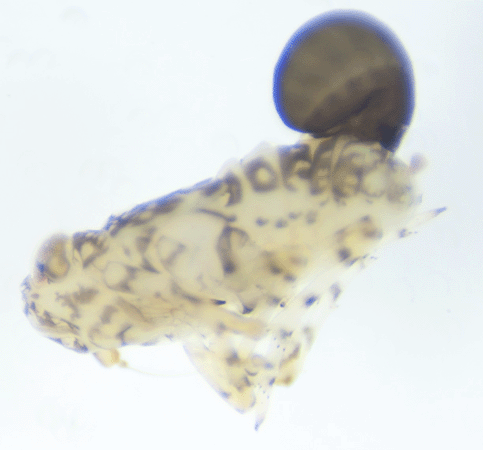 The first two images above show the wasp case from the right side of the leafhopper's body. The third and fourth images show the same wasp case from a different angle, the left side of the leafhopper's body.
The first two images above show the wasp case from the right side of the leafhopper's body. The third and fourth images show the same wasp case from a different angle, the left side of the leafhopper's body.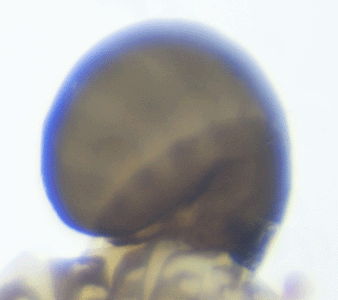 Dryinidae is a family of solitary wasps. There are ~1400 species in the family. Larvae are parasitoids of
Dryinidae is a family of solitary wasps. There are ~1400 species in the family. Larvae are parasitoids of 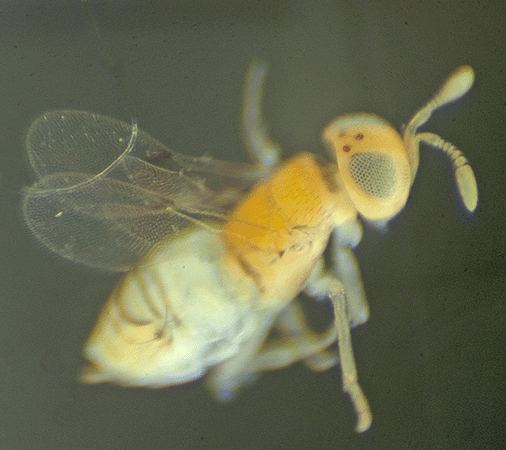
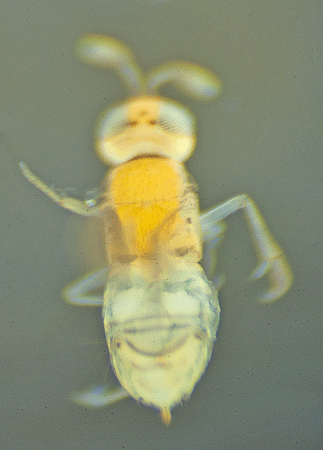
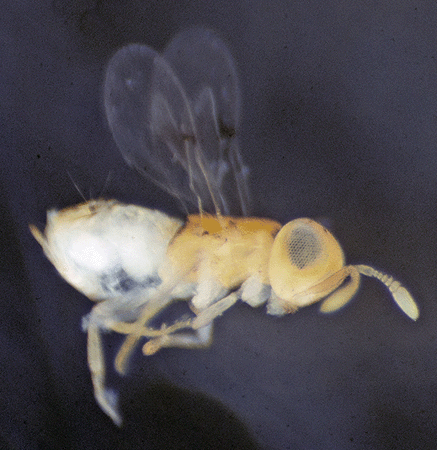
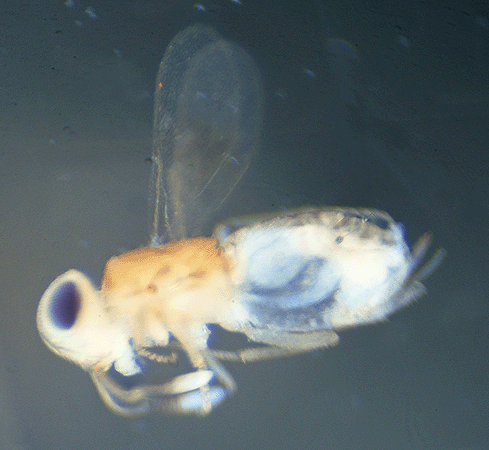
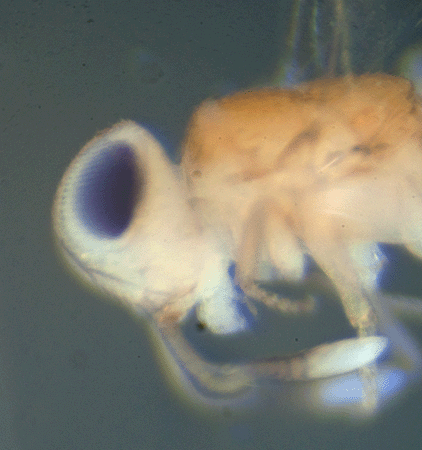
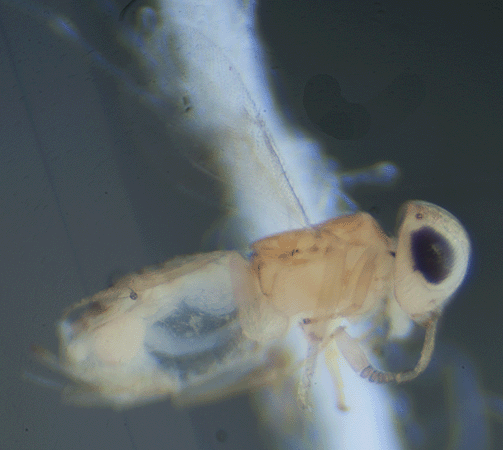
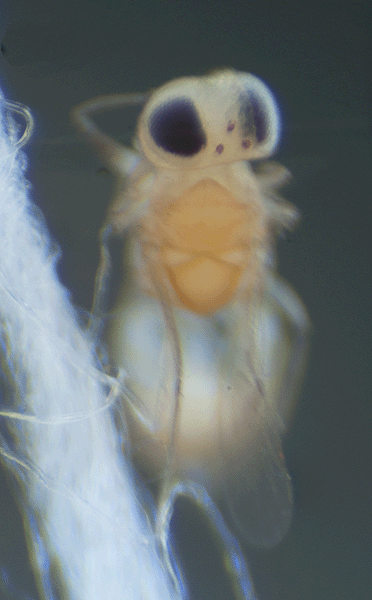
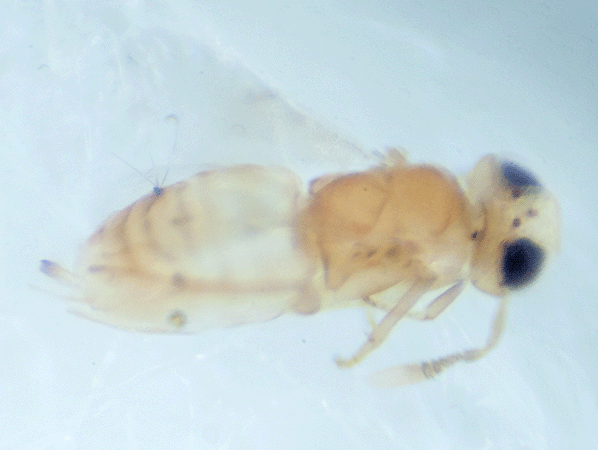 On January 24, 2019, the family was identified by Bob Zuparko, a Contributing Editor to <BugGuide.net>. Zuparko stated, "This is not a Scelioninae. Instead it is an Encyrtidae (axillae meet medially, cerci well advanced). I can't be sure, but it may be from the genus Acerophagus."
On January 24, 2019, the family was identified by Bob Zuparko, a Contributing Editor to <BugGuide.net>. Zuparko stated, "This is not a Scelioninae. Instead it is an Encyrtidae (axillae meet medially, cerci well advanced). I can't be sure, but it may be from the genus Acerophagus." 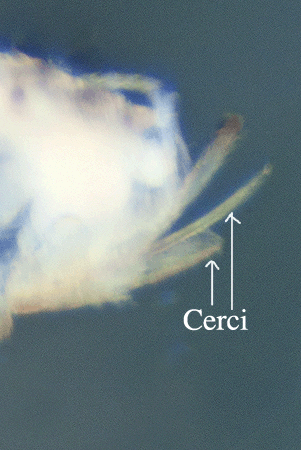 Cerci are a pair of appendages at the rear of the abdomen. This is shown in the photograph of this wasp at right.
Cerci are a pair of appendages at the rear of the abdomen. This is shown in the photograph of this wasp at right. 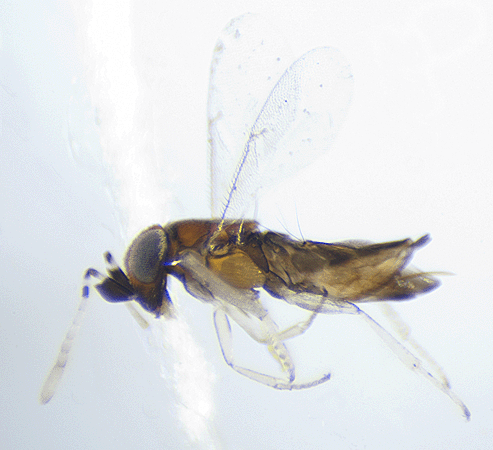
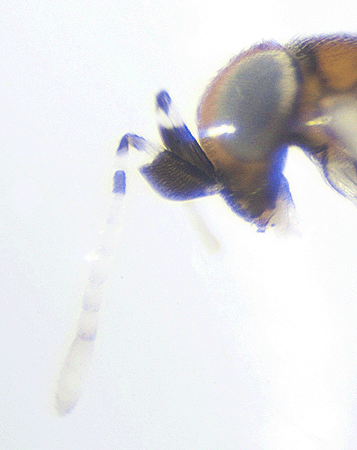 On December 30, 2015, this 1 mm long wasp was captured in a sweep net sample taken in tall grass and other vegetation adjacent to the southern edge of the Smith Preserve Pond.
On December 30, 2015, this 1 mm long wasp was captured in a sweep net sample taken in tall grass and other vegetation adjacent to the southern edge of the Smith Preserve Pond. 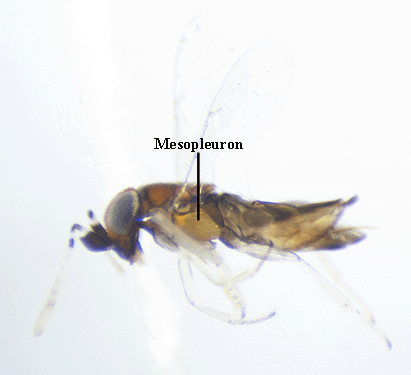
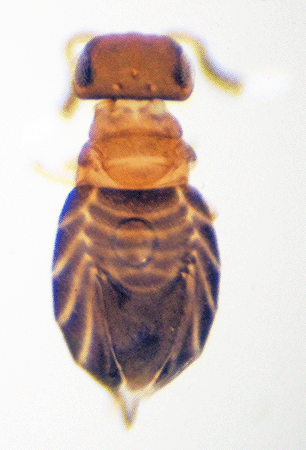
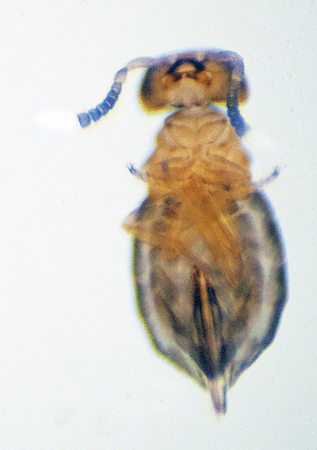
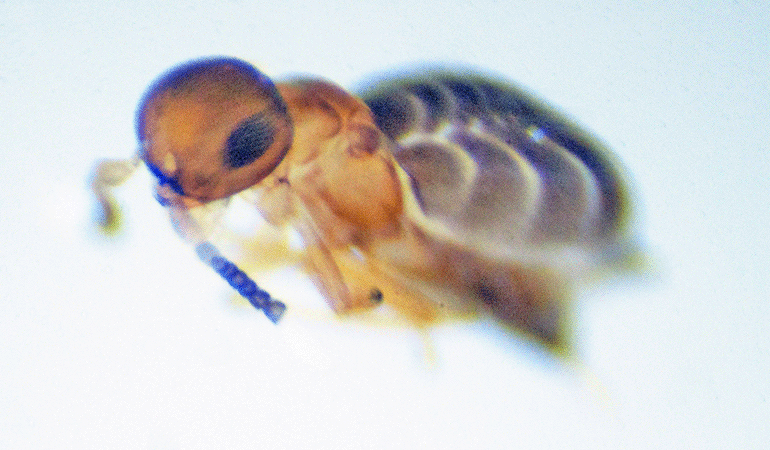 On March 30, 2018, the species and gender of the wasp were identified by Ross Hill, a Contributor to <BugGuide.net>.
On March 30, 2018, the species and gender of the wasp were identified by Ross Hill, a Contributor to <BugGuide.net>. 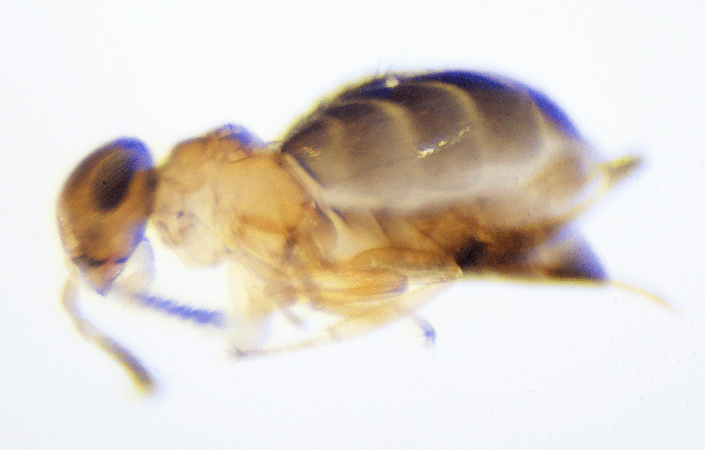 Neodusmetia sangwani females are wingless; males have well-developed wings. There are fewer males in this species than females. In this individual, antennae are elbowed, rise low on the face, and are clubbed. The antennal club is very white and difficult to see in these photographs.
Neodusmetia sangwani females are wingless; males have well-developed wings. There are fewer males in this species than females. In this individual, antennae are elbowed, rise low on the face, and are clubbed. The antennal club is very white and difficult to see in these photographs. 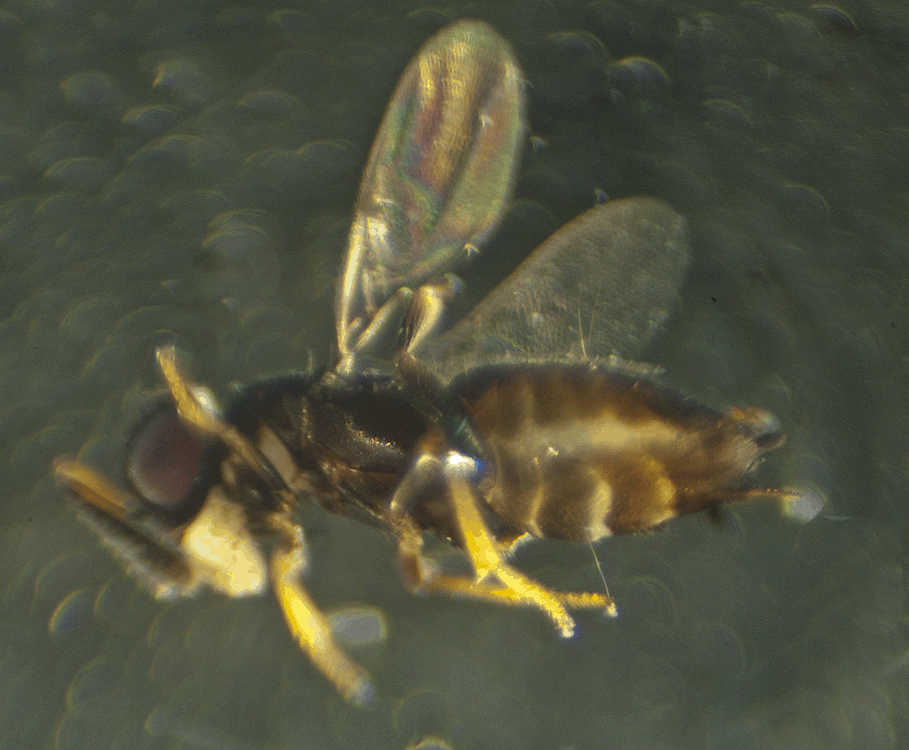
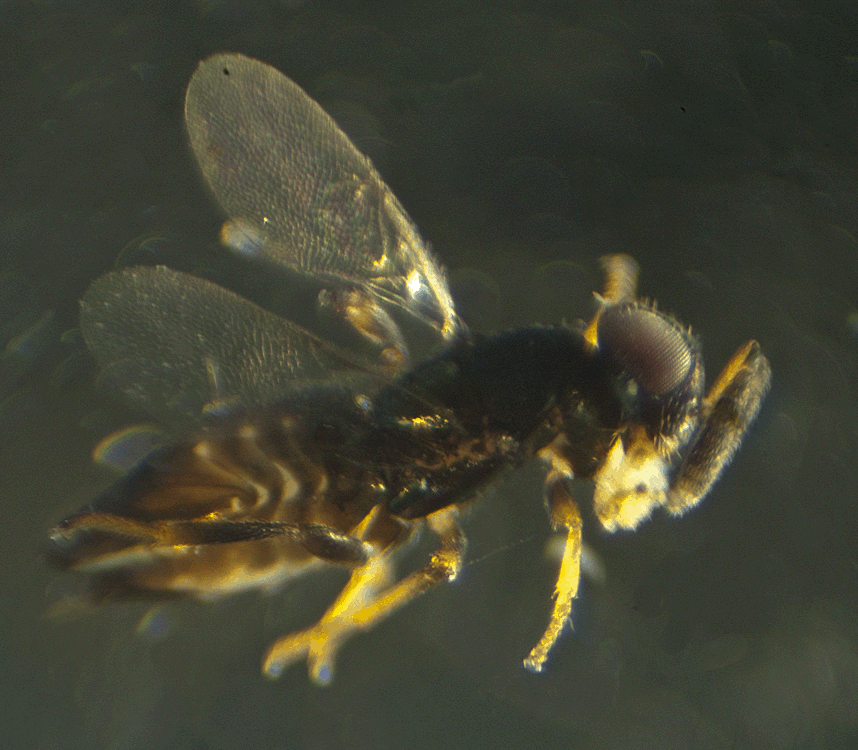
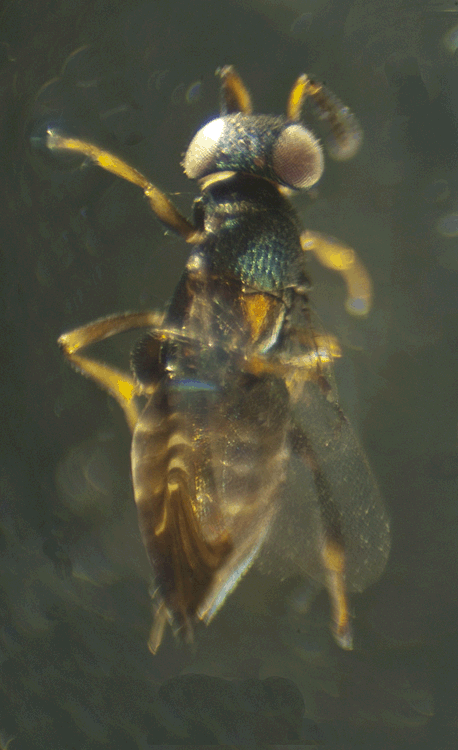
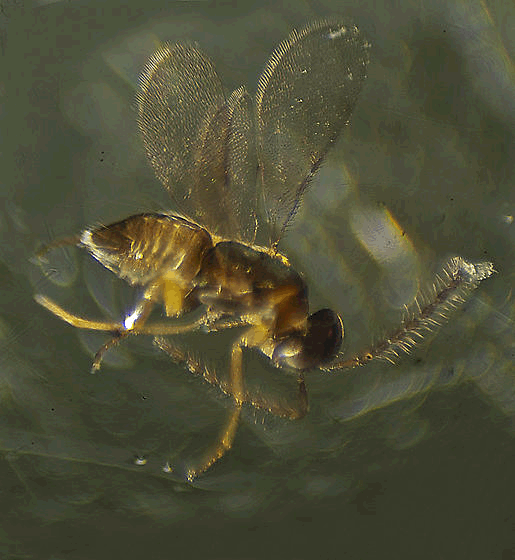 On November 17, this 1.1 mm long wasp was captured in a yellow bowl trap that had been left overnight in a hammock, south of the Christopher B. Smith Preserve pond and just west of the gopher tortoise fence.
On November 17, this 1.1 mm long wasp was captured in a yellow bowl trap that had been left overnight in a hammock, south of the Christopher B. Smith Preserve pond and just west of the gopher tortoise fence. 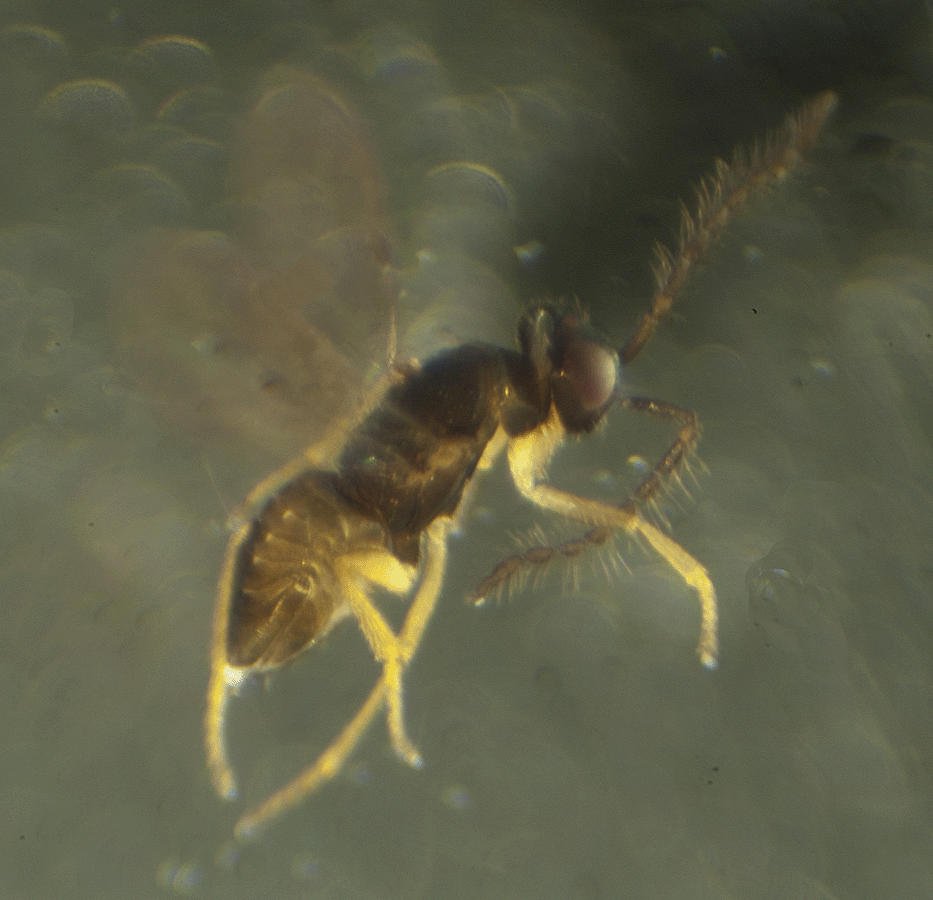
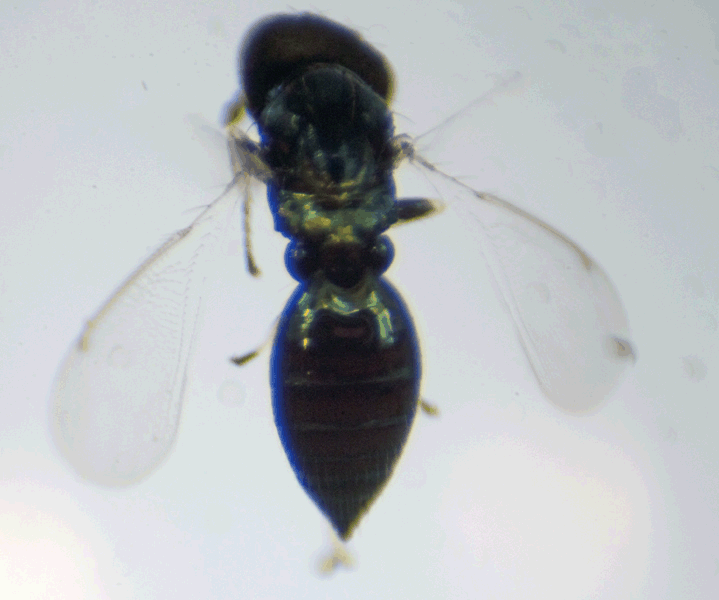 On December 30, 2015, this 1.75 mm wasp was captured with a sweep net in brush along the east gopher tortoise fence, south of Smith Preserve Way. Note: This specimen was collected on the same day as the specimen above, but at a different location in the Preserve. The two individuals are similar looking, but the antennae are different, the individual above is longer, and the abdomen shapes are different.
On December 30, 2015, this 1.75 mm wasp was captured with a sweep net in brush along the east gopher tortoise fence, south of Smith Preserve Way. Note: This specimen was collected on the same day as the specimen above, but at a different location in the Preserve. The two individuals are similar looking, but the antennae are different, the individual above is longer, and the abdomen shapes are different. 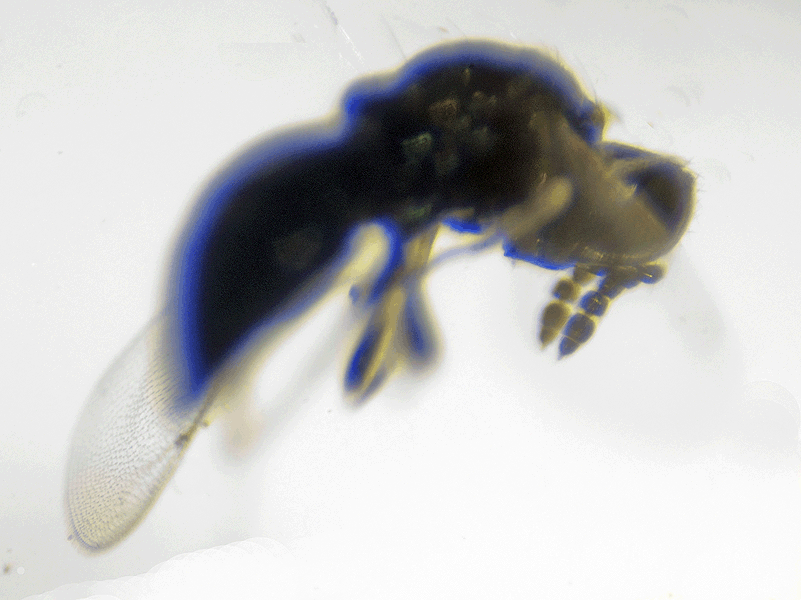
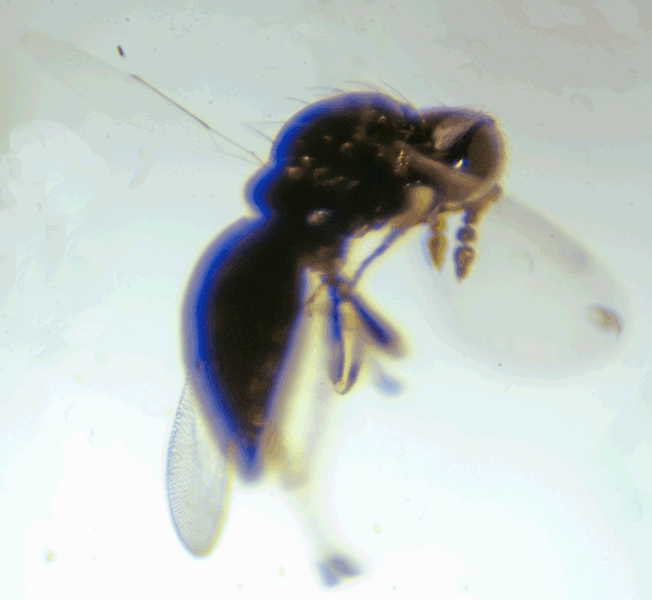
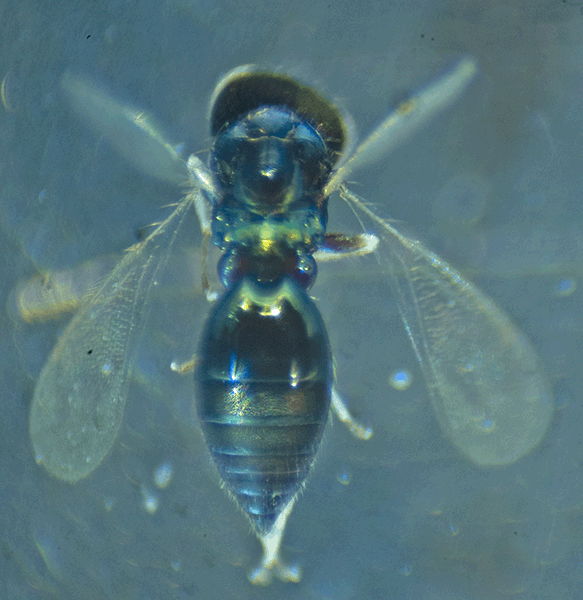
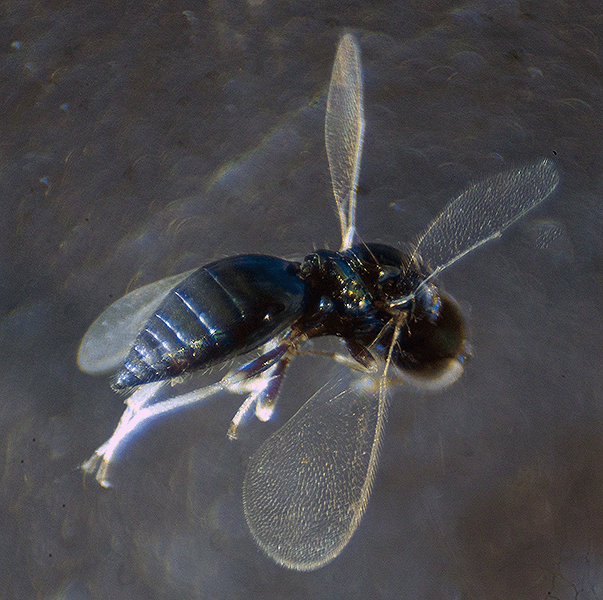
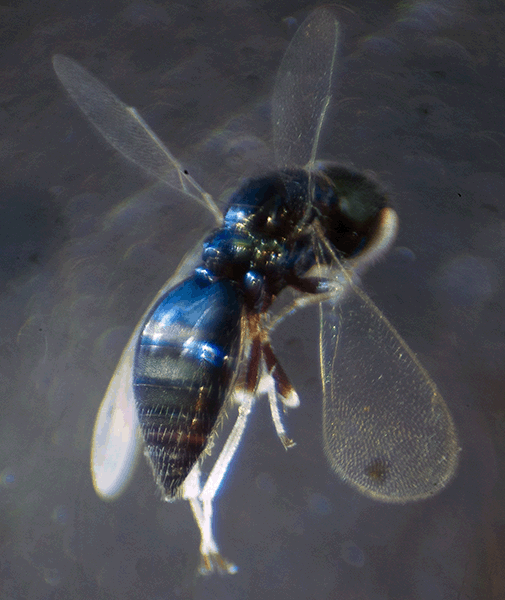
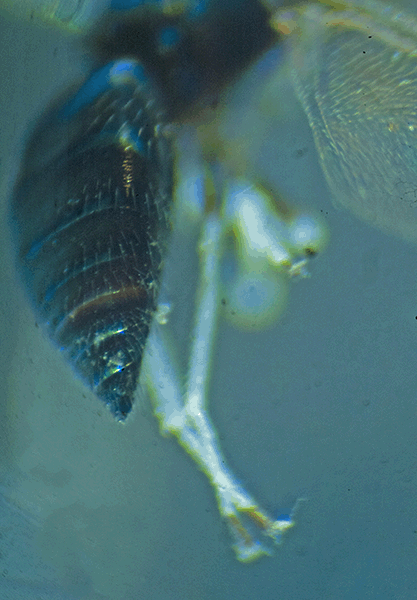
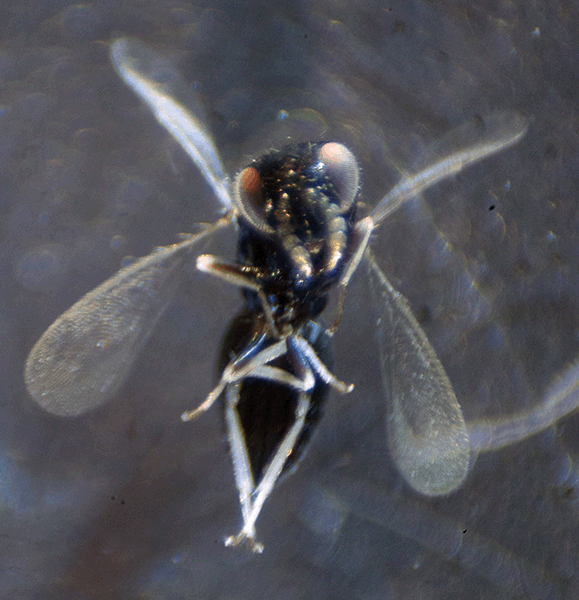
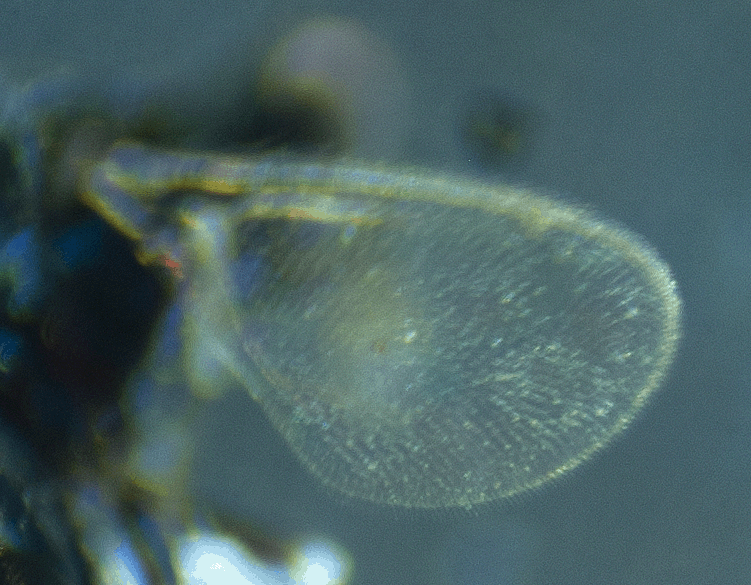
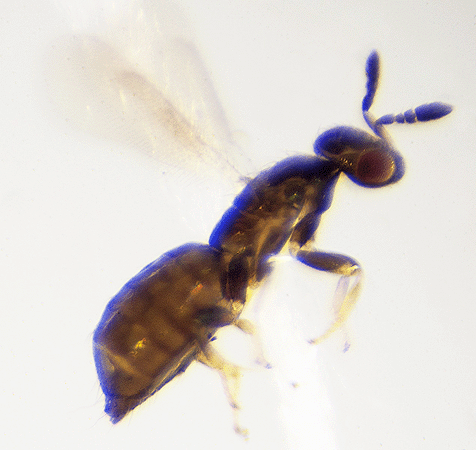
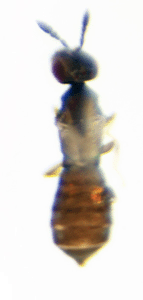
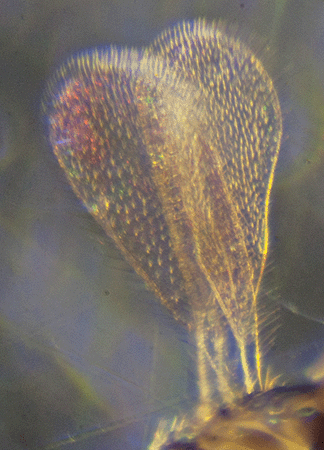 On January 3, 2017, this 1 mm long female wasp was obtained from leaf litter collected under a
On January 3, 2017, this 1 mm long female wasp was obtained from leaf litter collected under a 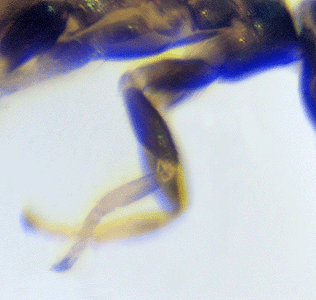 As was explained above, all members of the family have 4-segmented tarsi (the distal part of the leg). This trait distinguishes members of the family from other chalcid wasps. The tarsi of this individual are shown in image 5.
As was explained above, all members of the family have 4-segmented tarsi (the distal part of the leg). This trait distinguishes members of the family from other chalcid wasps. The tarsi of this individual are shown in image 5. 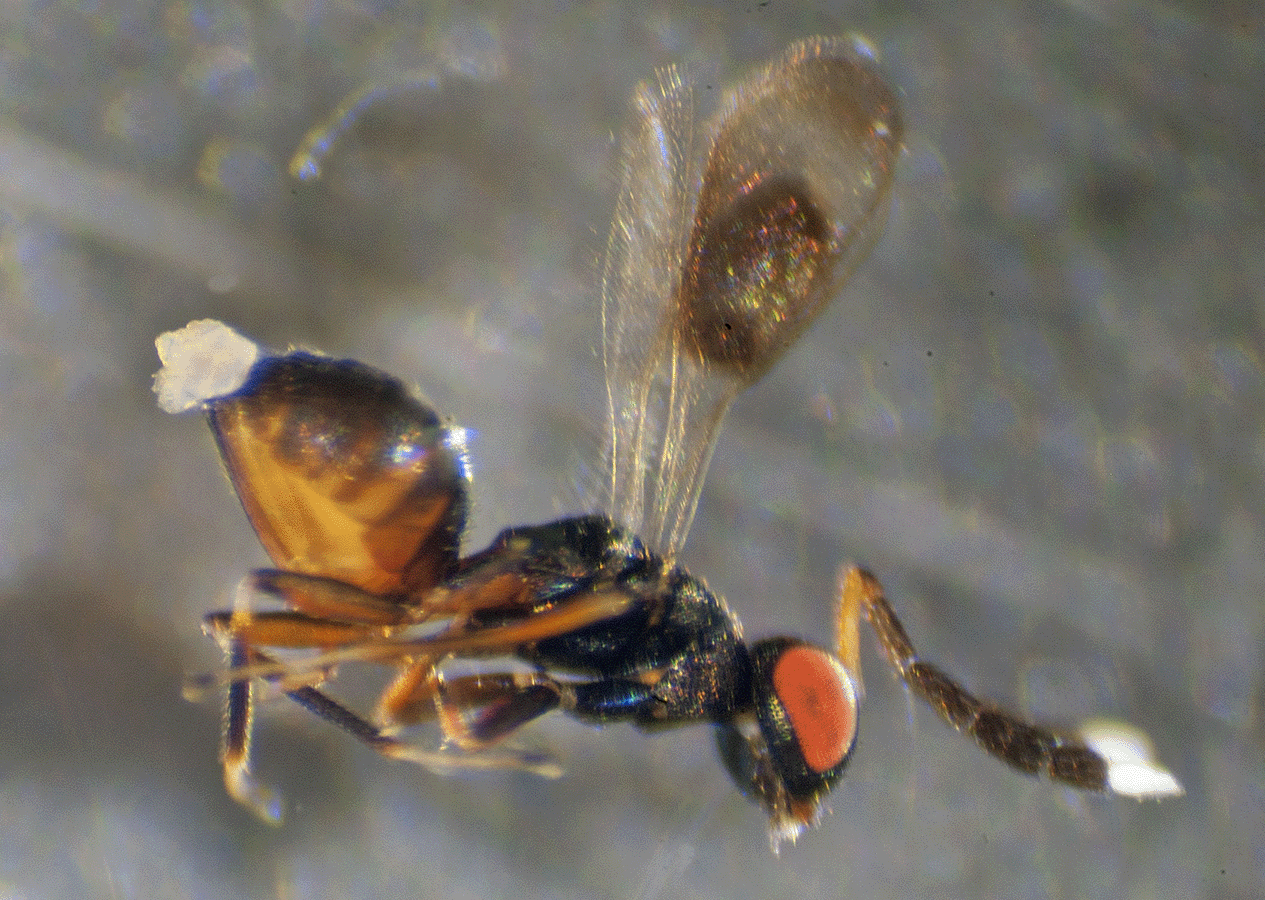
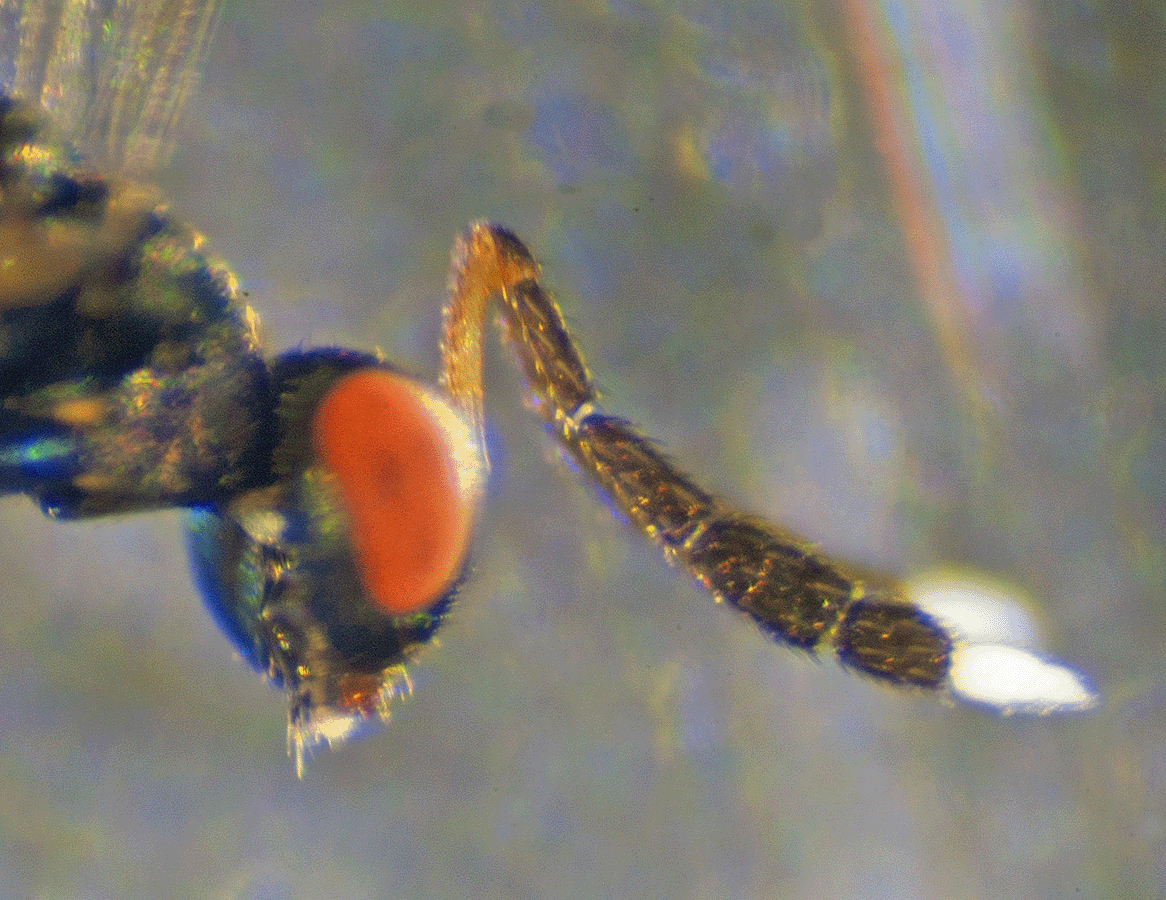
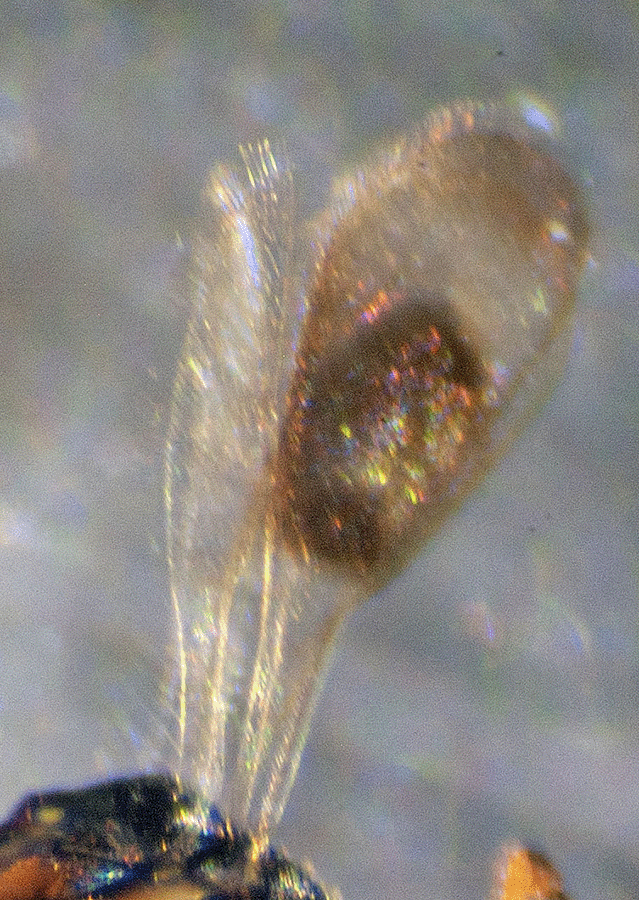
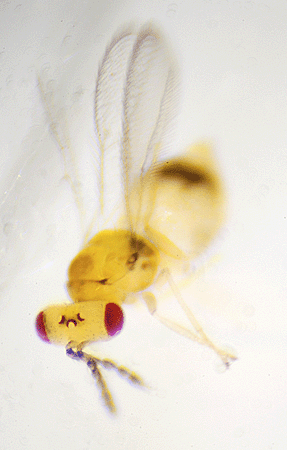 On February 8, 2016, the family was identified by Joseph Fortier, a Contributing Editor to <BugGuide.net>.
On February 8, 2016, the family was identified by Joseph Fortier, a Contributing Editor to <BugGuide.net>. 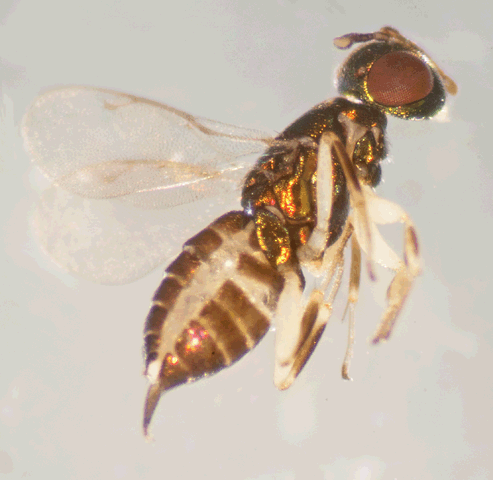 Three galls were removed from a branch of
Three galls were removed from a branch of  On February 19, 2018, the wasp was identified as being either a pteromalid or an eupelmid by Robert Zuparko, a Contributing Editor to <BugGuide.net>, sponsored by Iowa State University's Department.
On February 19, 2018, the wasp was identified as being either a pteromalid or an eupelmid by Robert Zuparko, a Contributing Editor to <BugGuide.net>, sponsored by Iowa State University's Department. 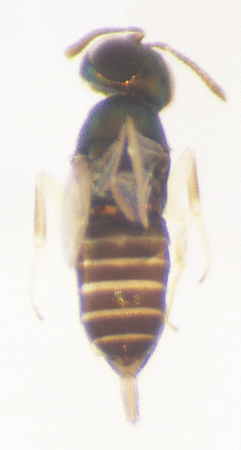
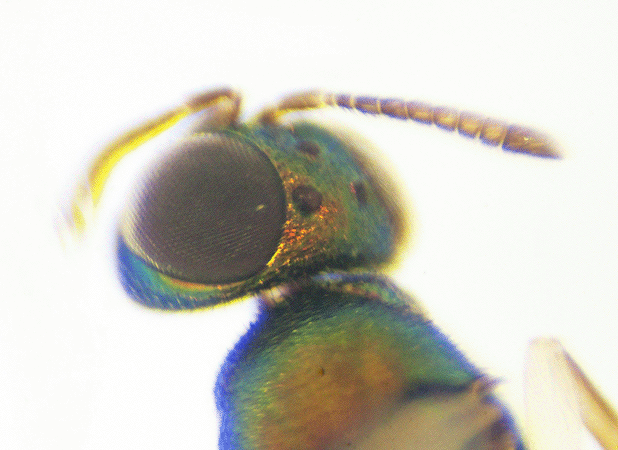
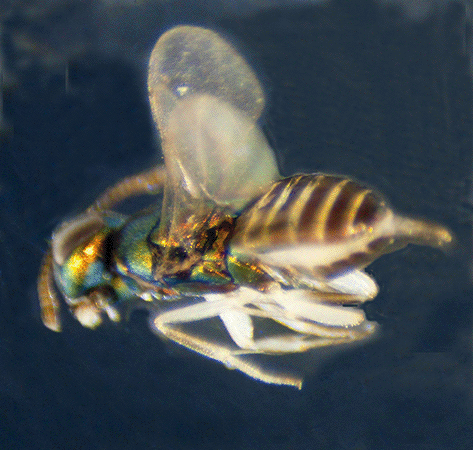
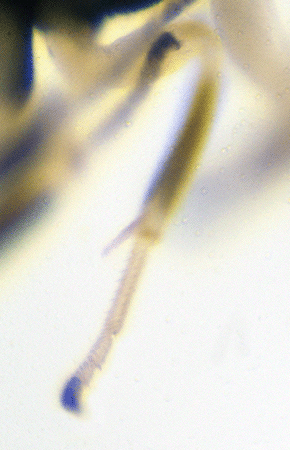
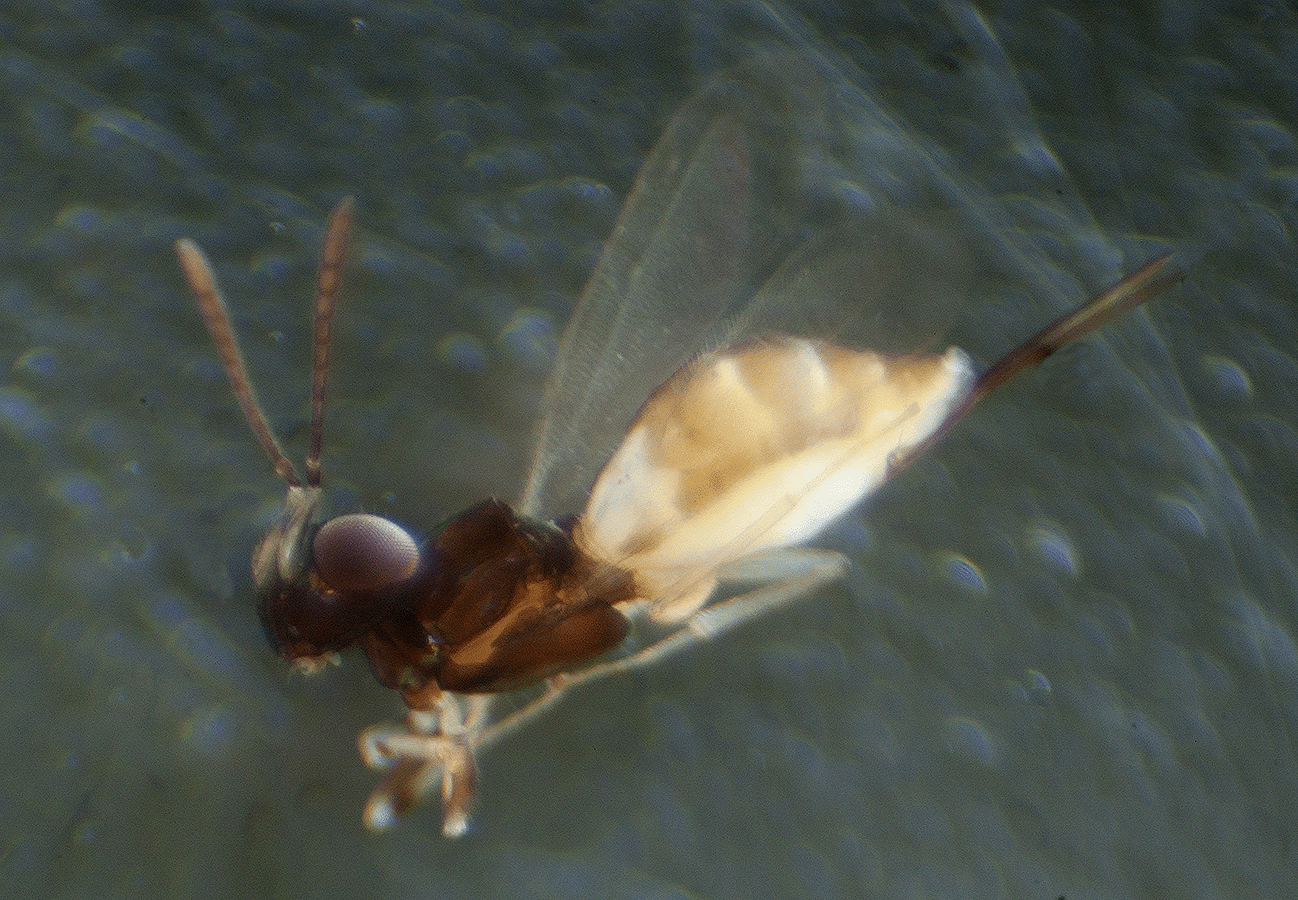
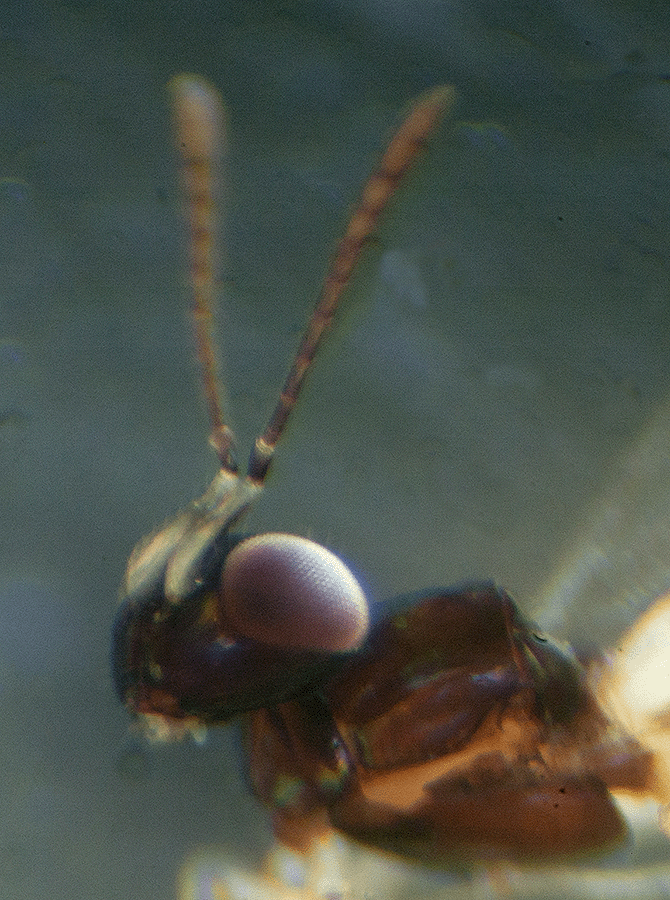 These images were created using photomicroscopy and sent for identification to <Bugguide.net>, sponsored by Iowa State University's Department of Entomology.
These images were created using photomicroscopy and sent for identification to <Bugguide.net>, sponsored by Iowa State University's Department of Entomology. 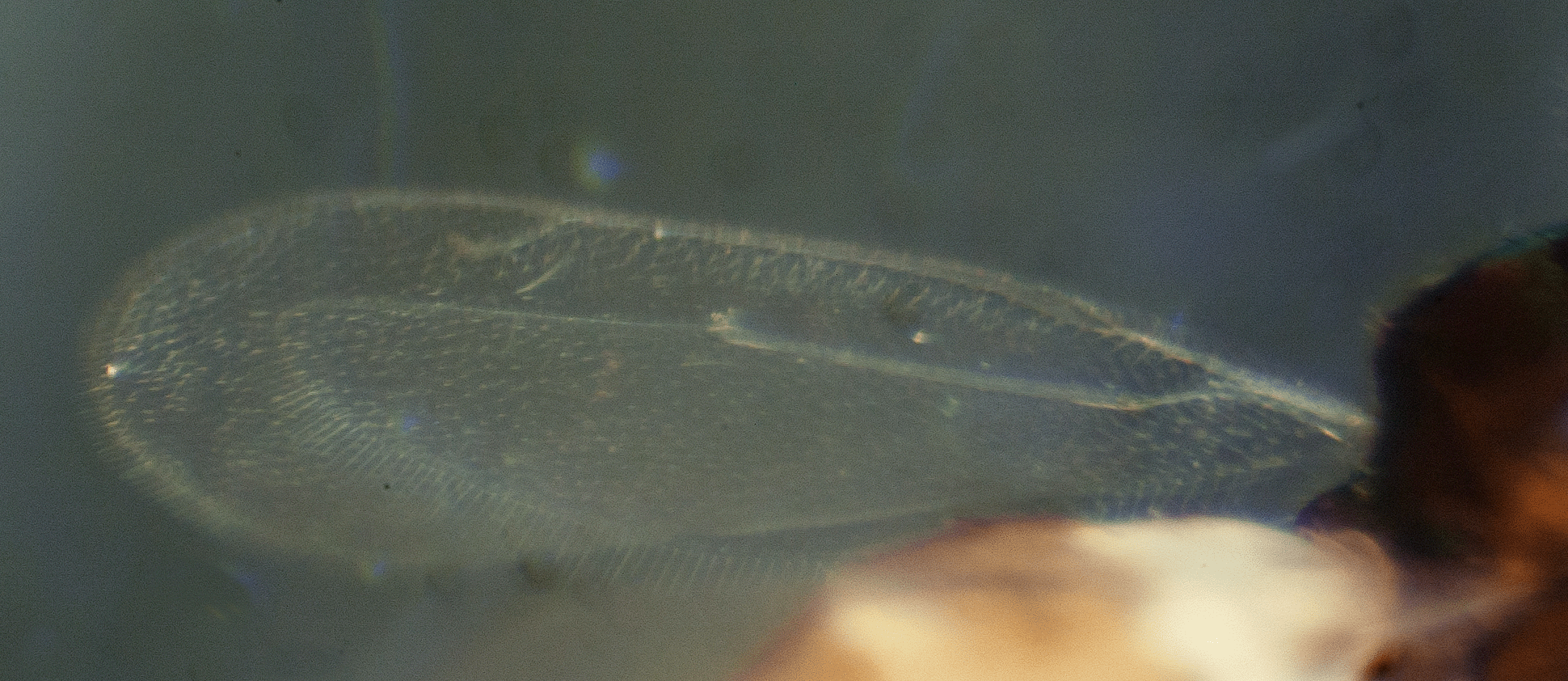
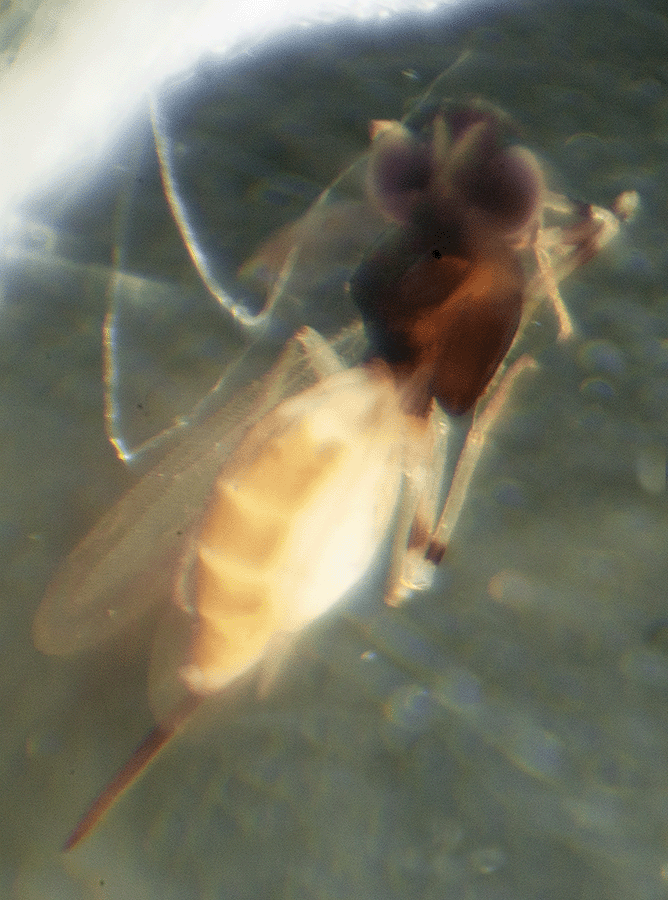
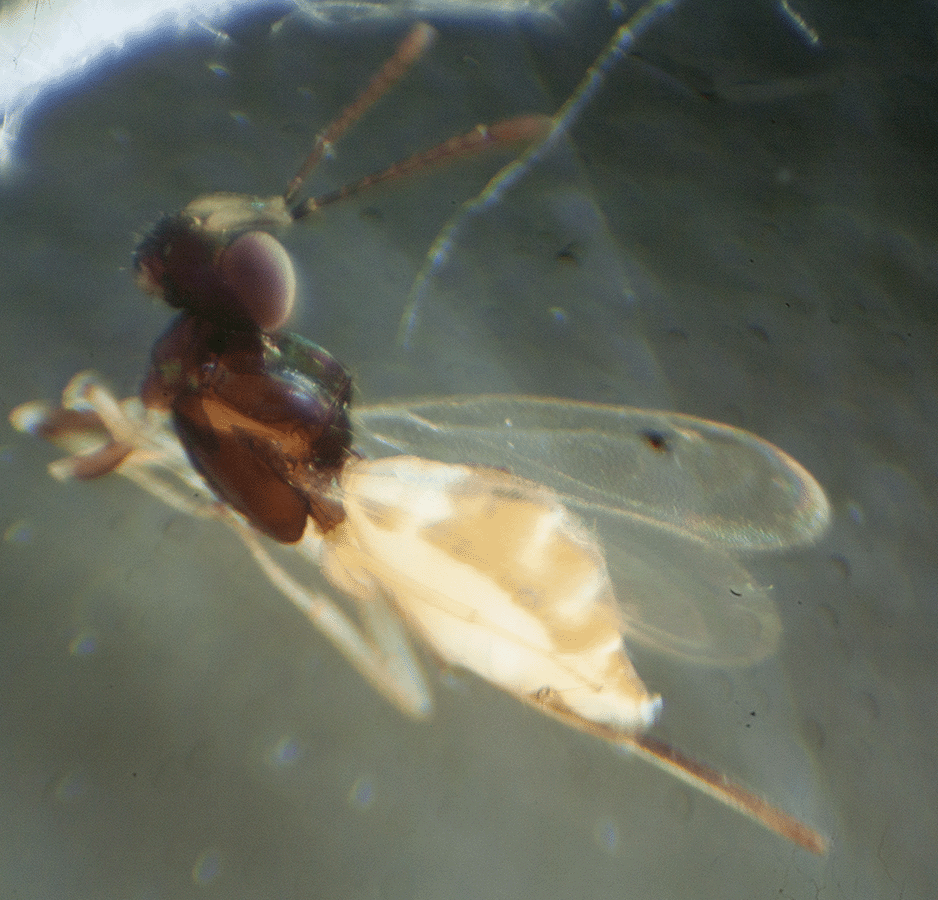
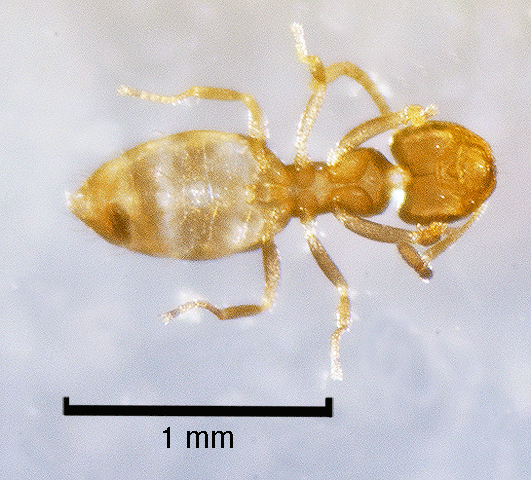 The individual in these photographs was 1.5 mm long. This ant was following the trail of others of its kind in quartz sand in an oak-rosemary scrub on April 5, 2014.
The individual in these photographs was 1.5 mm long. This ant was following the trail of others of its kind in quartz sand in an oak-rosemary scrub on April 5, 2014. 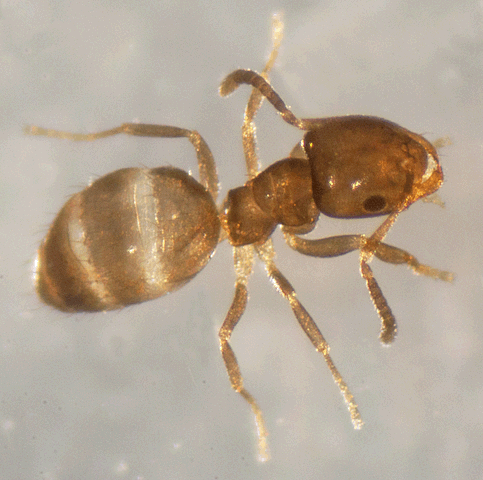
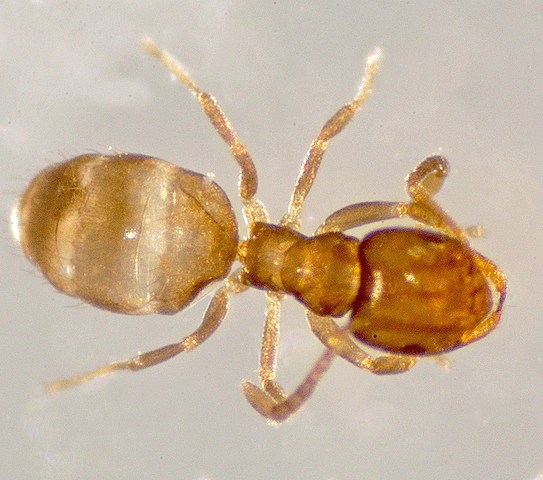 Brachymyrmex is a New World genus with color ranging from pale light-yellow to dark brown. The genus can be recognized by having 9 antennal segments.
Brachymyrmex is a New World genus with color ranging from pale light-yellow to dark brown. The genus can be recognized by having 9 antennal segments.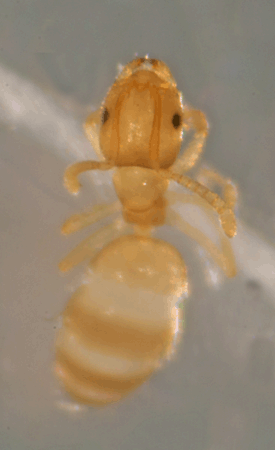
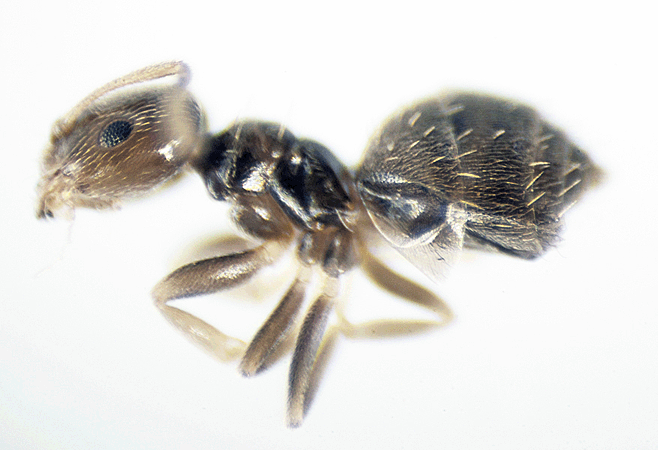
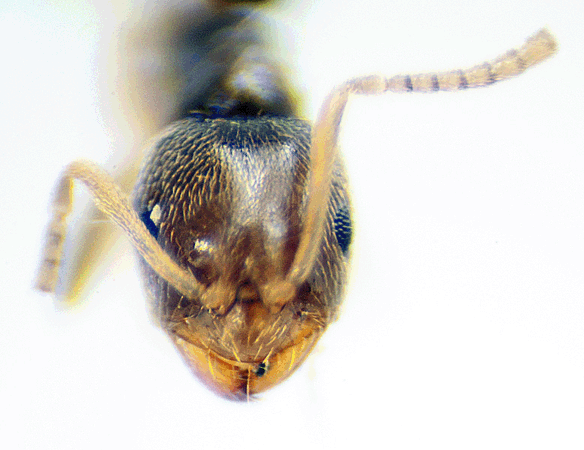 These photographs were created using photomicroscopy and sent for identification to <BugGuide.net>, sponsored by Iowa State University's Department of Entomology.
These photographs were created using photomicroscopy and sent for identification to <BugGuide.net>, sponsored by Iowa State University's Department of Entomology. 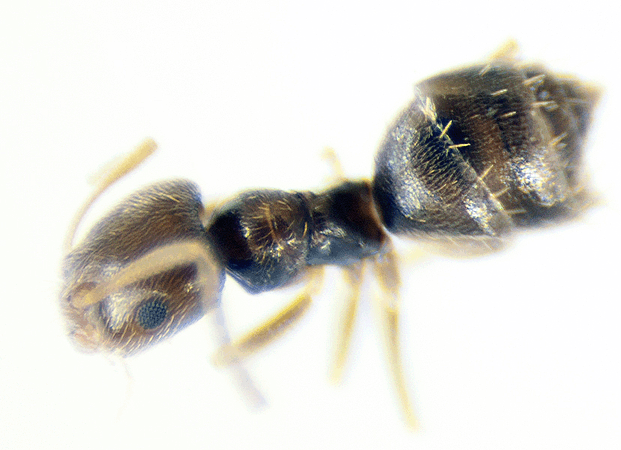 This species is a minute, pale light yellow to dark brown rover ant that has a small petiolar node, somewhat flattened, and often hidden by the overhanging gaster. It has a 9-segmented antenna without a club, and an acidopore. The acidopore is a pore, or hole, at the end of the abdomen. Surrounded by hairs, it is the structure from which its venom (formic acid and other hydrocarbons) are sprayed.
This species is a minute, pale light yellow to dark brown rover ant that has a small petiolar node, somewhat flattened, and often hidden by the overhanging gaster. It has a 9-segmented antenna without a club, and an acidopore. The acidopore is a pore, or hole, at the end of the abdomen. Surrounded by hairs, it is the structure from which its venom (formic acid and other hydrocarbons) are sprayed. 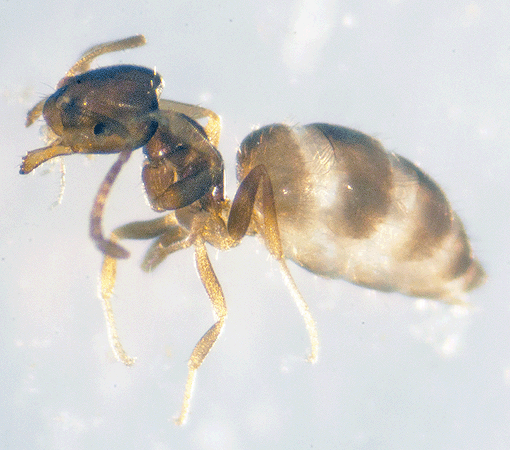
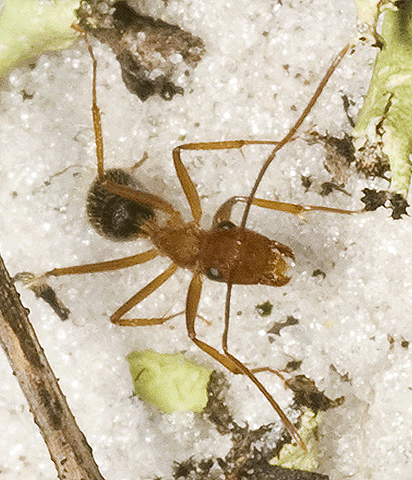

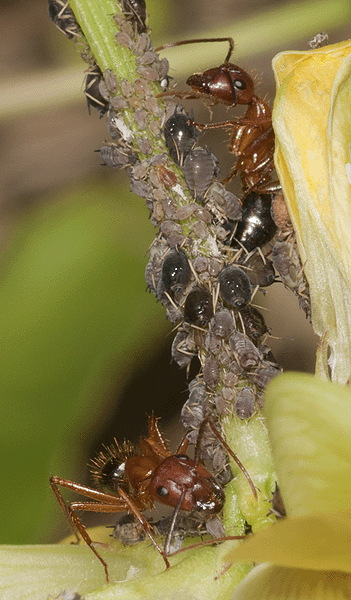
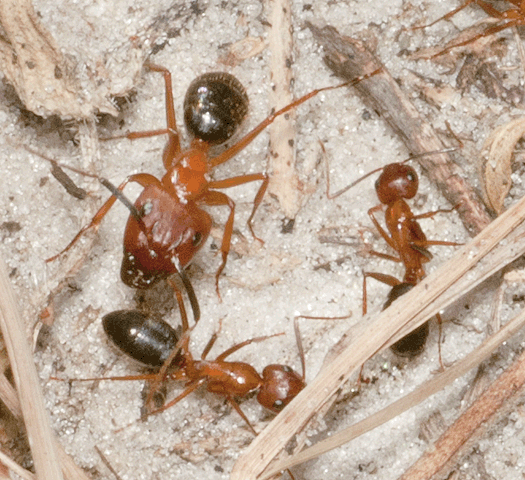 As shown at left, within a colony, there are both large and small workers.
As shown at left, within a colony, there are both large and small workers. 
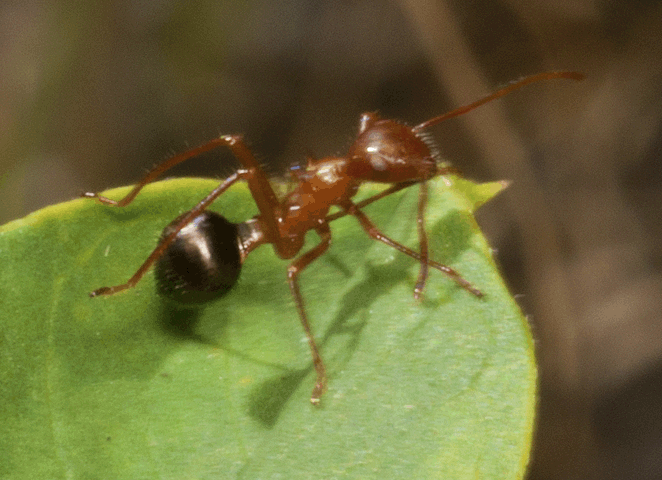
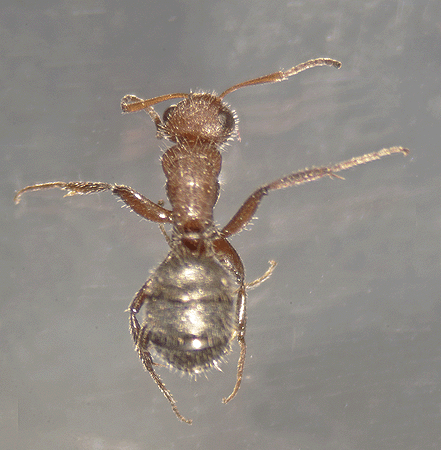 On April 16, 2015, this 4 mm ant was captured in a yellow bowl trap placed under a
On April 16, 2015, this 4 mm ant was captured in a yellow bowl trap placed under a 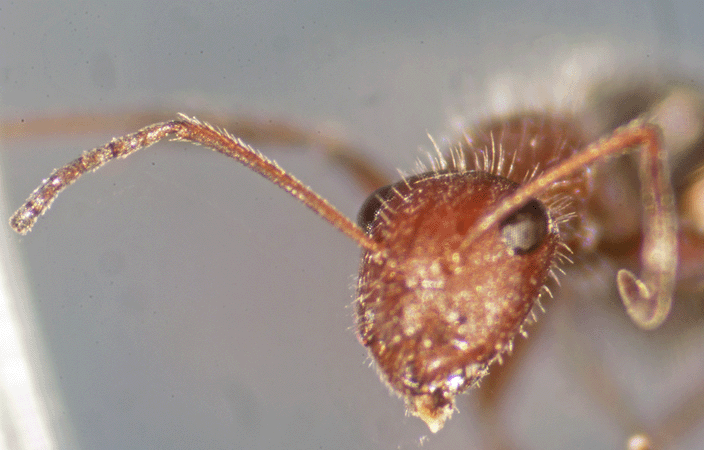 Characteristics of this ant include: A) worker length 3 to 6 mm; B) 12-segmented antennae, with terminal segment slightly elongated and bullet-shaped; scape (basal segment of the antenna) longer than the width of the head; C) long, gold-colored body hairs abundant on head, thorax and abdomen; D) few hairs on legs and very few on the base of scape; E) no stinger; F) thorax evenly convex as is characteristic of carpenter ants; G) thorax and head ash brown, gaster blackish, as in
Characteristics of this ant include: A) worker length 3 to 6 mm; B) 12-segmented antennae, with terminal segment slightly elongated and bullet-shaped; scape (basal segment of the antenna) longer than the width of the head; C) long, gold-colored body hairs abundant on head, thorax and abdomen; D) few hairs on legs and very few on the base of scape; E) no stinger; F) thorax evenly convex as is characteristic of carpenter ants; G) thorax and head ash brown, gaster blackish, as in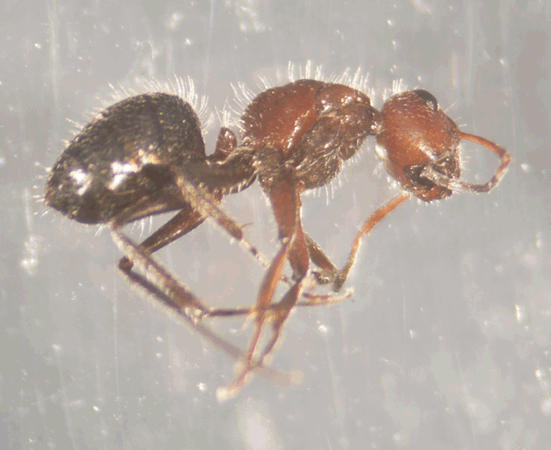 The most common nest sites are hollow twigs, old termite galleries in dead wood and grass culms, voids in tree trunks and leaf axil bases in palms.
The most common nest sites are hollow twigs, old termite galleries in dead wood and grass culms, voids in tree trunks and leaf axil bases in palms. 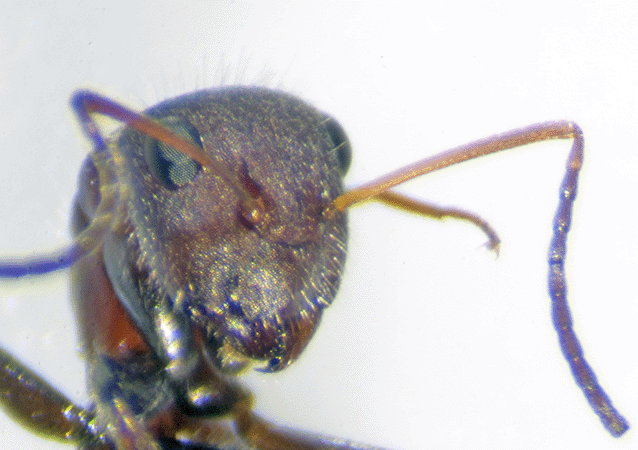
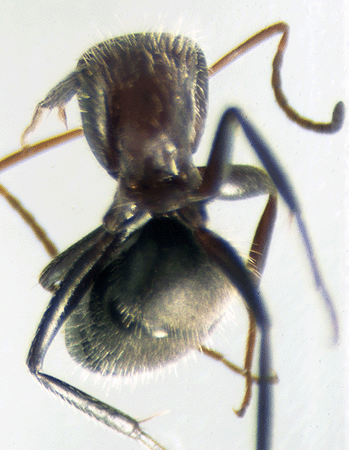
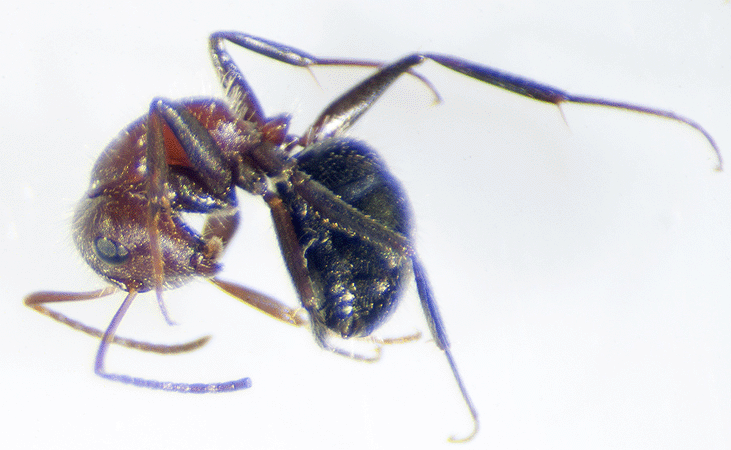
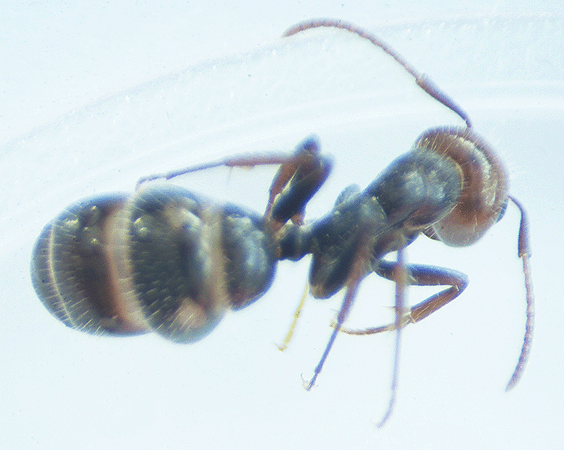
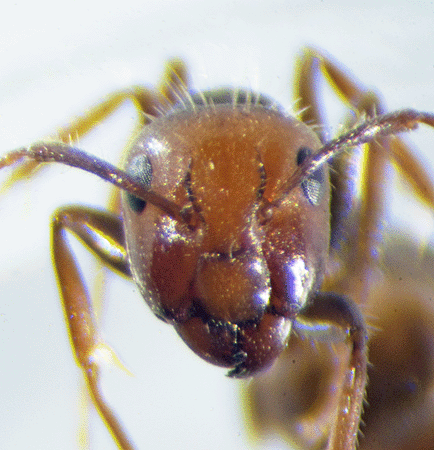
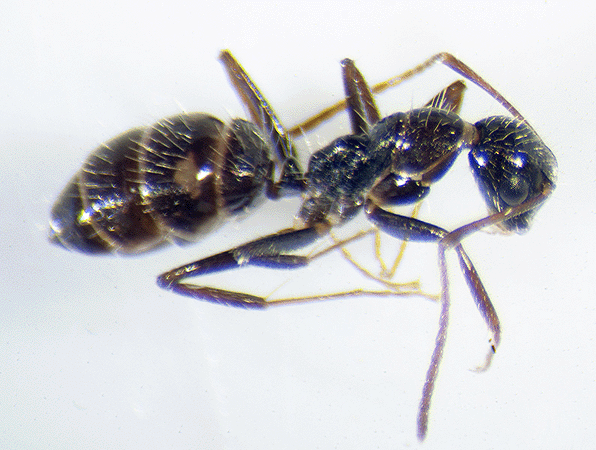
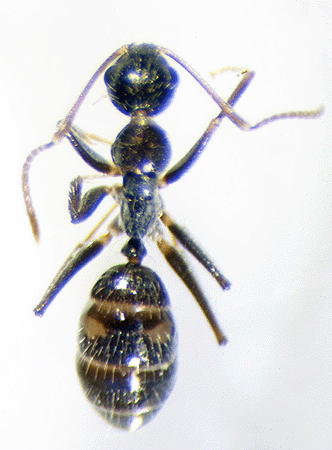
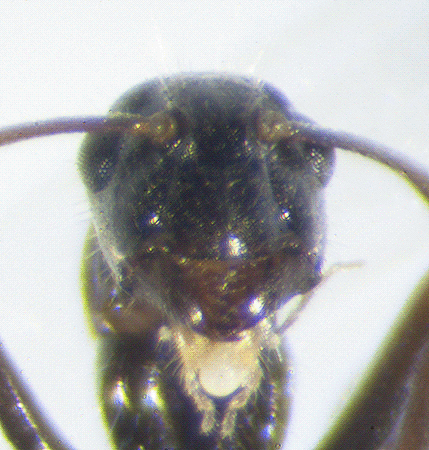
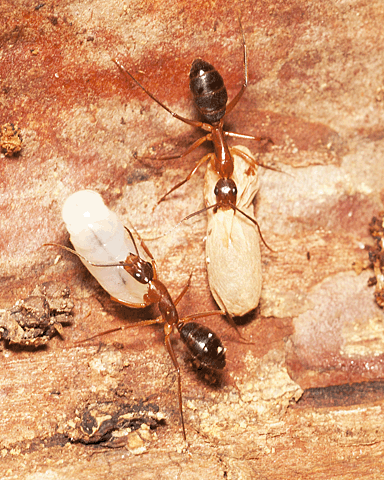 This species of
This species of 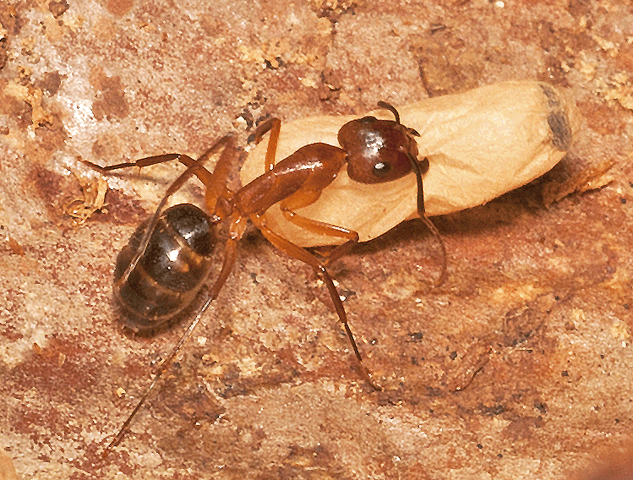 When compared to Camponotus floridanus, Camponotus tortuganus workers have a head that is longer than broad, and the tibia of all legs and the base of the antennae lack erect hairs. Additionally, individuals are thinner than Camponotus floridanus, and more pale with less color contrast.
When compared to Camponotus floridanus, Camponotus tortuganus workers have a head that is longer than broad, and the tibia of all legs and the base of the antennae lack erect hairs. Additionally, individuals are thinner than Camponotus floridanus, and more pale with less color contrast. 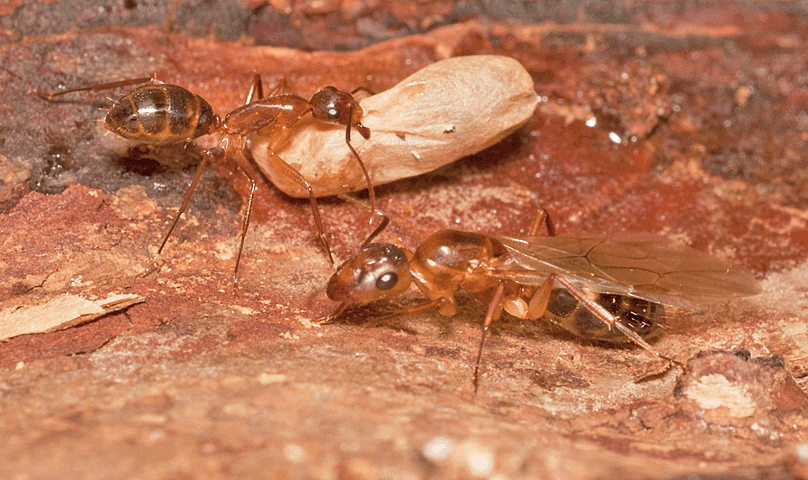
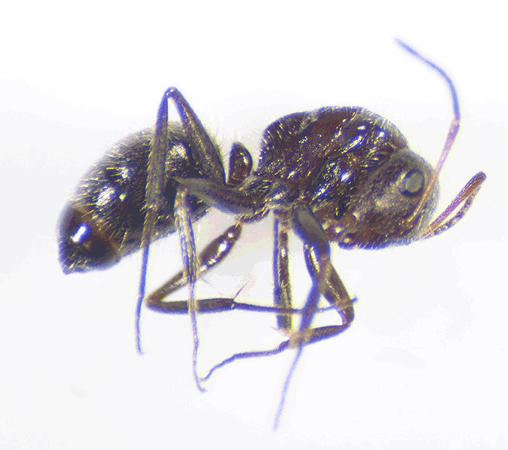
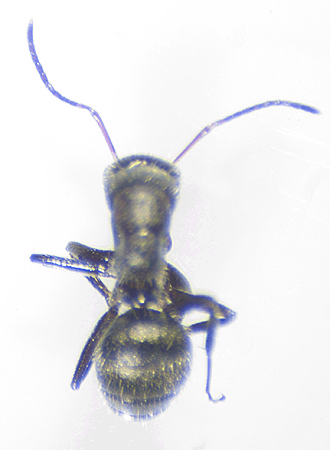
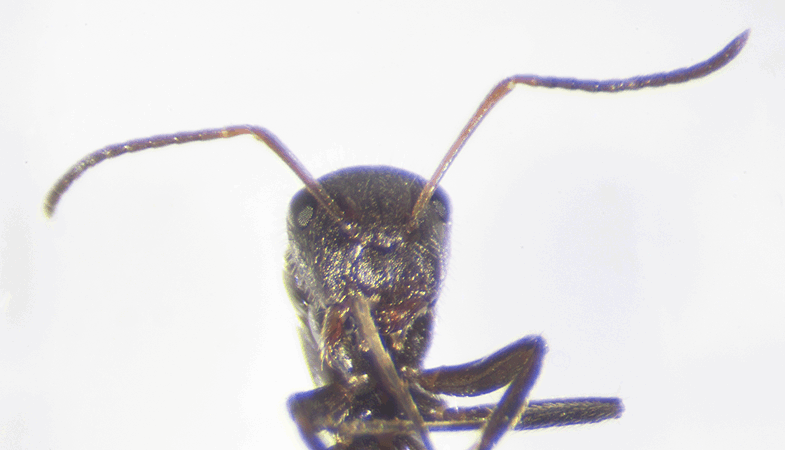
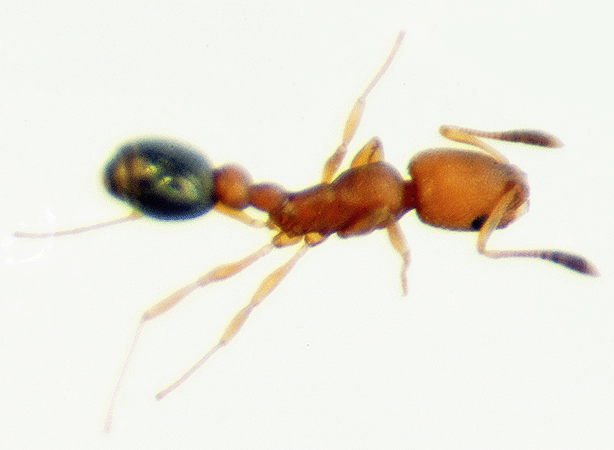
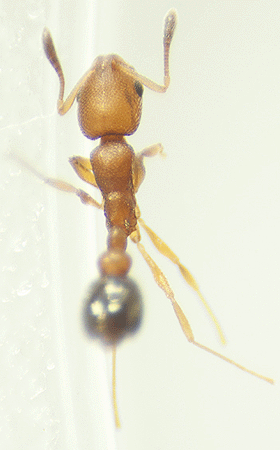
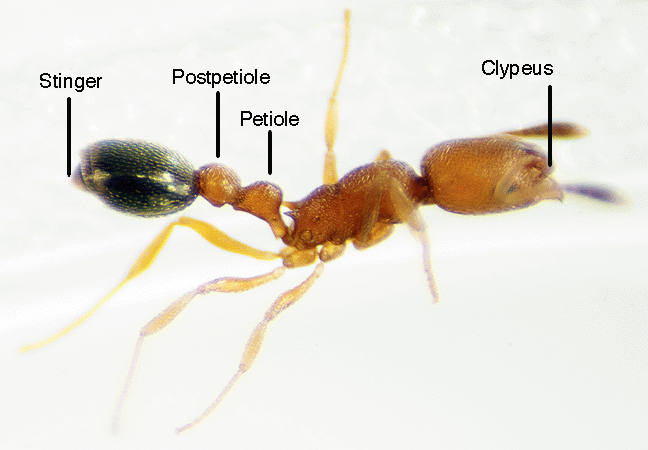
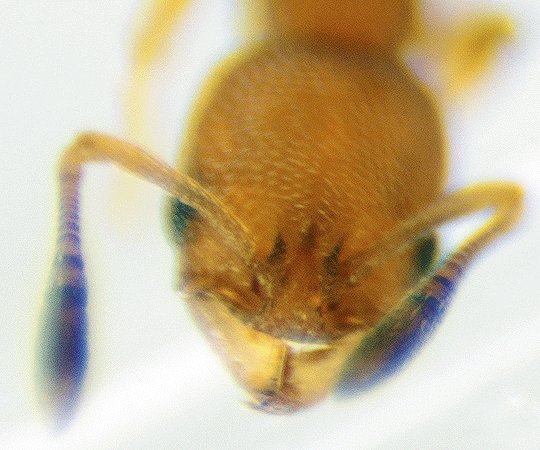
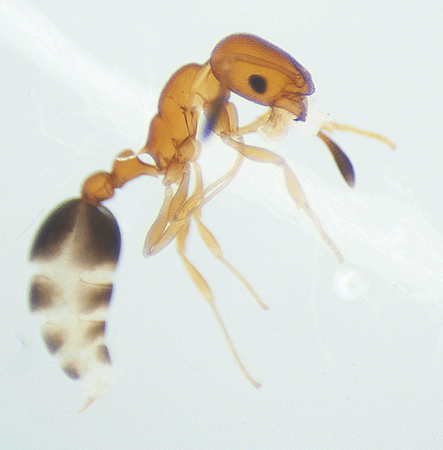
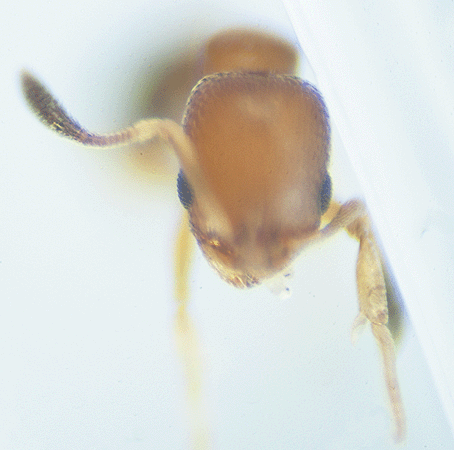
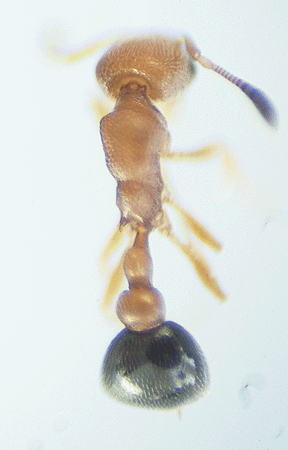 On December 13, 2016, this 1.75 mm long ant was caught in a yellow bowl trap left over night on a sandy ridge in the Smith Preserve near 14th Ave N and a private residence.
On December 13, 2016, this 1.75 mm long ant was caught in a yellow bowl trap left over night on a sandy ridge in the Smith Preserve near 14th Ave N and a private residence. 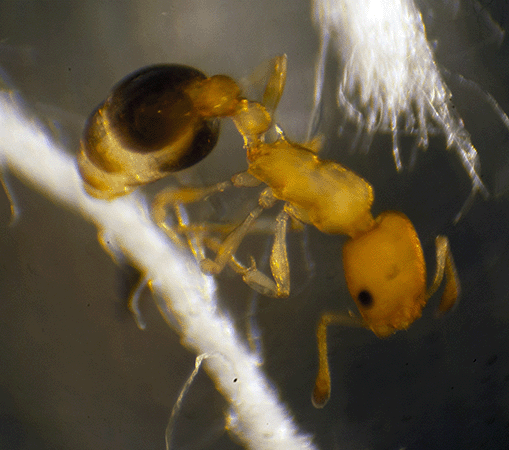 On February 2, 2022, this 1.5 mm long ant was isolated from debris left at the base of a fallen
On February 2, 2022, this 1.5 mm long ant was isolated from debris left at the base of a fallen 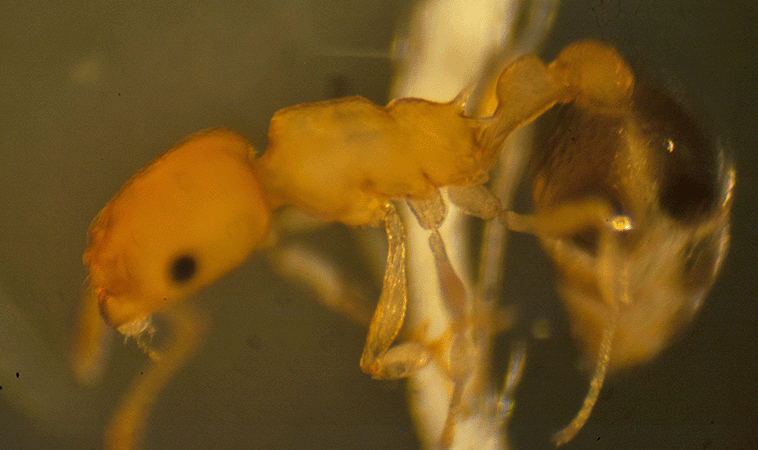
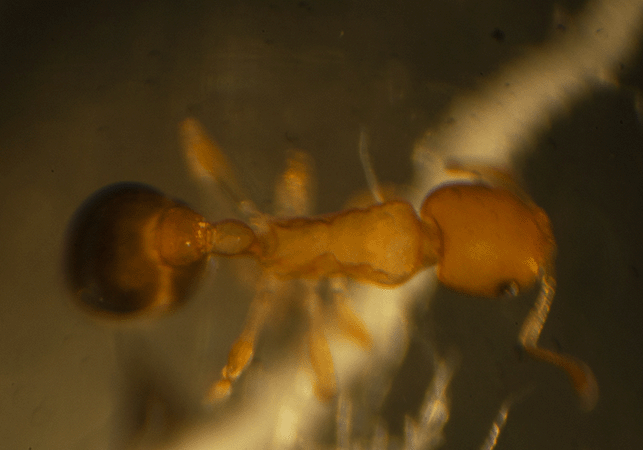
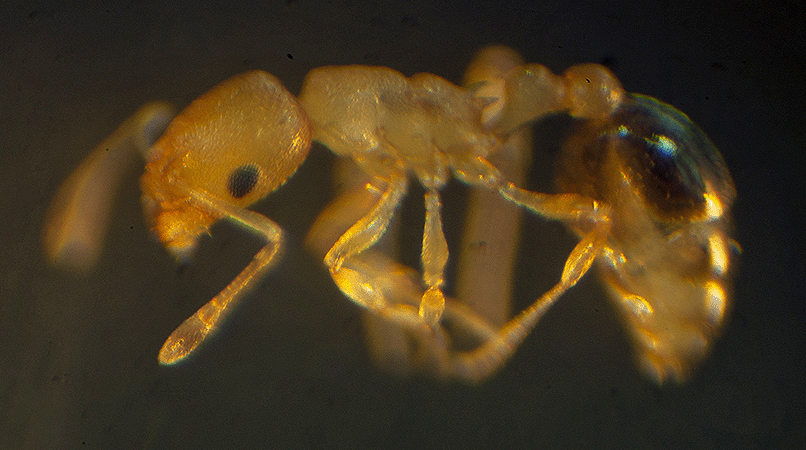
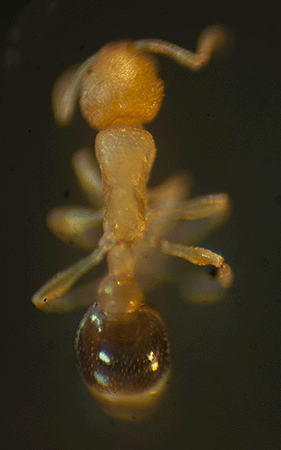
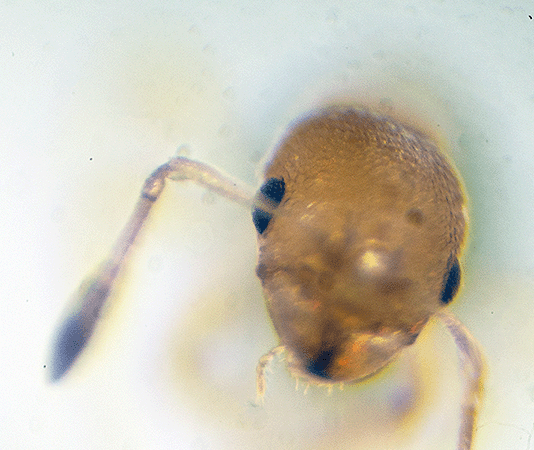
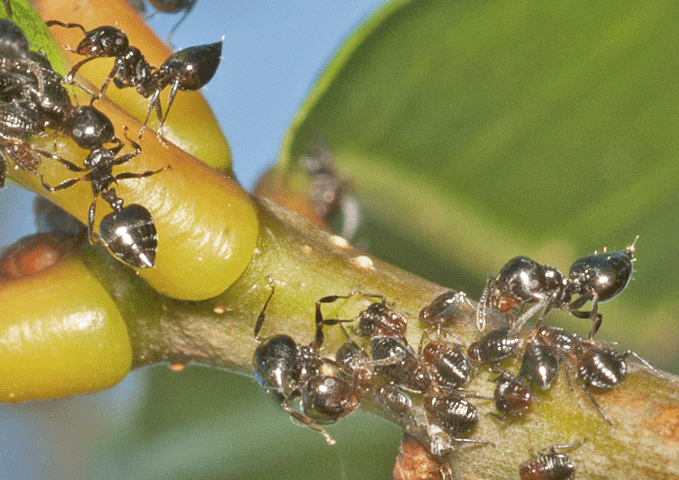
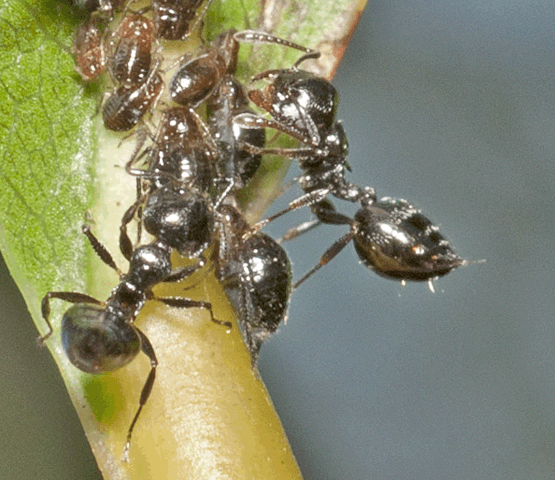
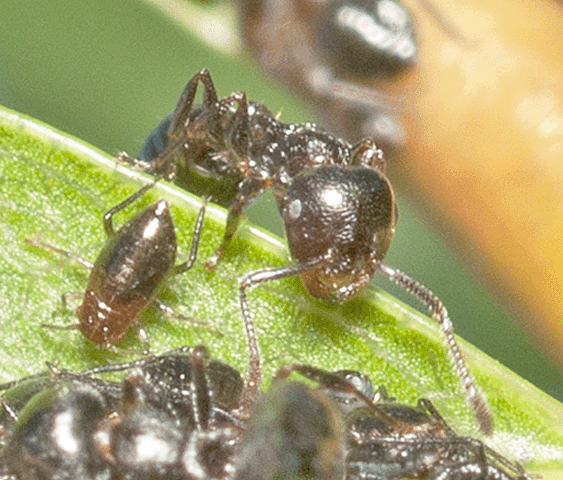 As can be seen in the first two photographs, Crematogaster ashmeadi females have a stinger. But, unlike most other ants with a stinger, this ant's stinger is flattened and does not dispense venom. Instead it dispenses repellent chemicals. Also, It can bite.
As can be seen in the first two photographs, Crematogaster ashmeadi females have a stinger. But, unlike most other ants with a stinger, this ant's stinger is flattened and does not dispense venom. Instead it dispenses repellent chemicals. Also, It can bite. 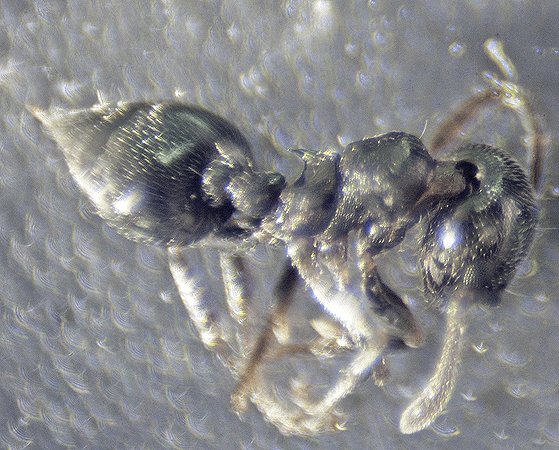
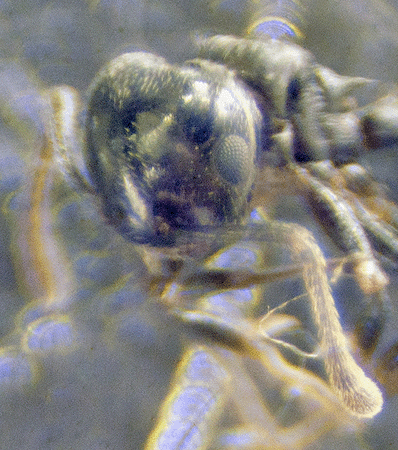
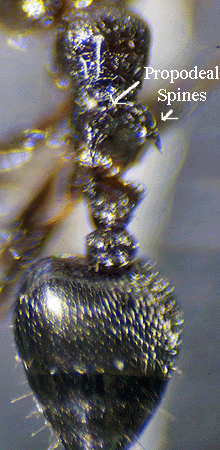
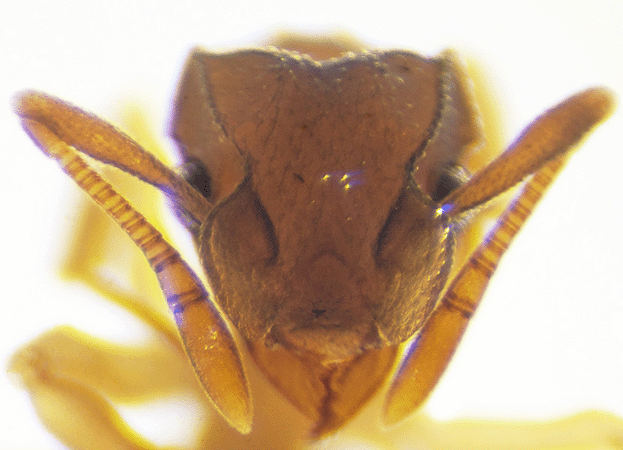
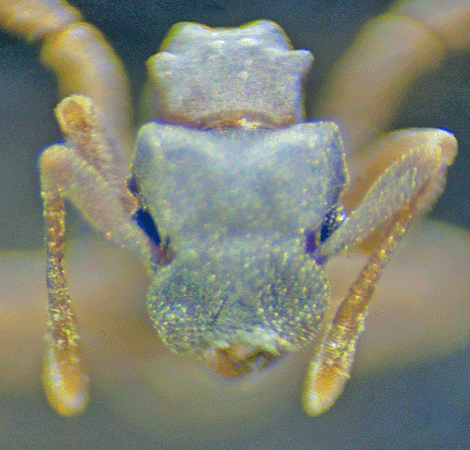 On February 10, 2016, this ~2mm long ant was collected in leaf litter in an oak hammock in the center portion of the Christopher B. Smith Preserve, just north of Smith Preserve Way. These photographs were created by photomicroscopy and sent for identification to <BugGuide.net>, sponsored by Iowa State University's Department of Entomology.
On February 10, 2016, this ~2mm long ant was collected in leaf litter in an oak hammock in the center portion of the Christopher B. Smith Preserve, just north of Smith Preserve Way. These photographs were created by photomicroscopy and sent for identification to <BugGuide.net>, sponsored by Iowa State University's Department of Entomology. 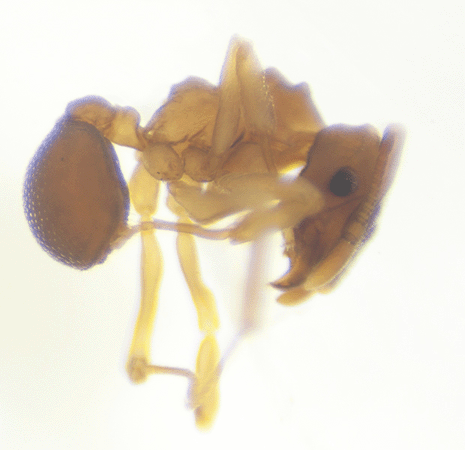
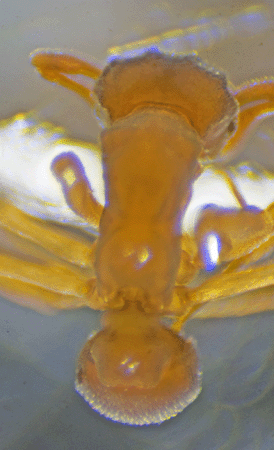
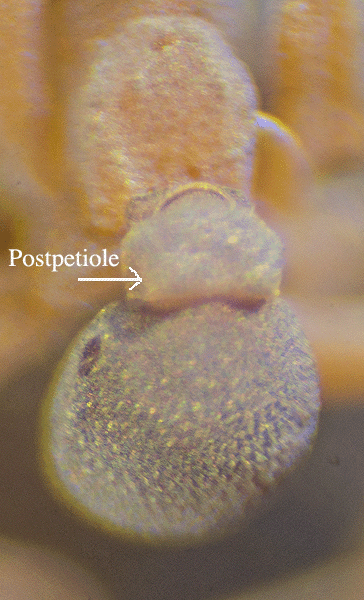
 According to Gardening Ants The Attines by Neal A. Weber, published by The American Philosophical Society in 1972, p. 19, members of genus Cyphomyrmex are unique in culturing a fungus in the form of a yeast.
According to Gardening Ants The Attines by Neal A. Weber, published by The American Philosophical Society in 1972, p. 19, members of genus Cyphomyrmex are unique in culturing a fungus in the form of a yeast. 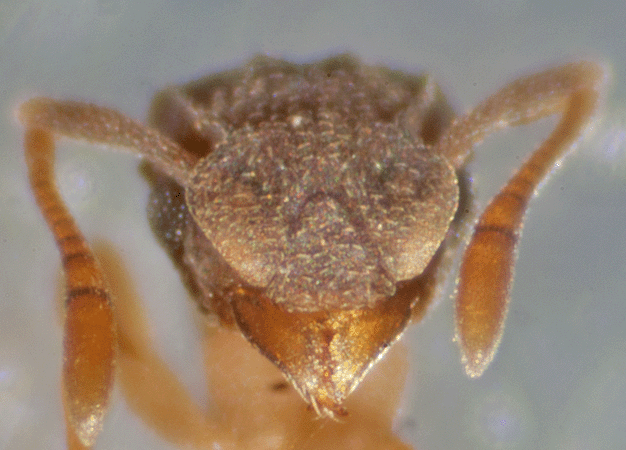
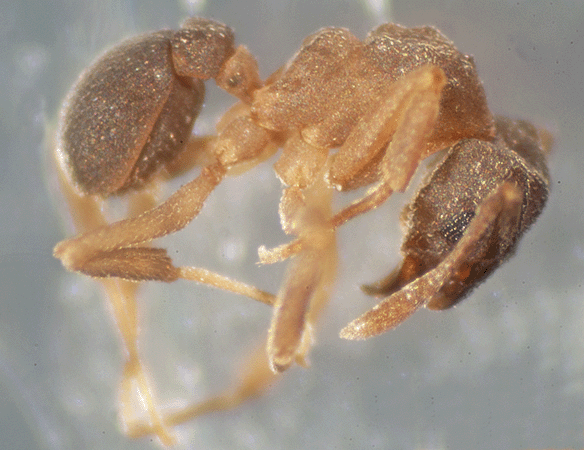
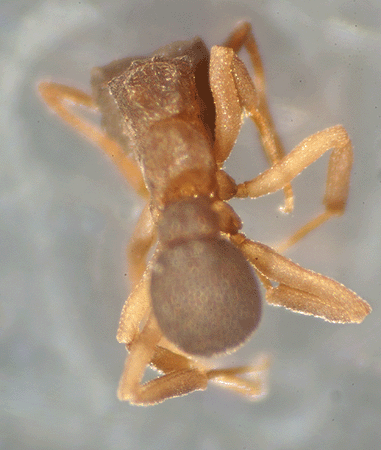 The photographs shown here are of the dry specimen and are now posted at <BugGuide.net> . On February 18, 2015, genus confirmation was made from these photographs, by Matthew Prebus, a Contributer to <BugGuide.net>. Prebus thought it is Cyphomyrmex rimosus. He requested a more focused photograph of the gaster, which may show an indented area that extends posteriorly from the postpetiole. He stated that feature will confirm his identification.
The photographs shown here are of the dry specimen and are now posted at <BugGuide.net> . On February 18, 2015, genus confirmation was made from these photographs, by Matthew Prebus, a Contributer to <BugGuide.net>. Prebus thought it is Cyphomyrmex rimosus. He requested a more focused photograph of the gaster, which may show an indented area that extends posteriorly from the postpetiole. He stated that feature will confirm his identification. 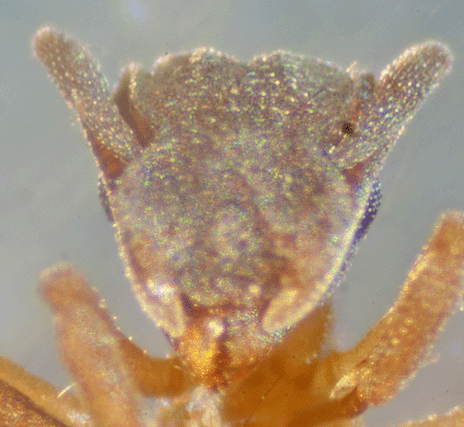 On December 19, 2014, this 1.5 mm long ant was living in pine needle litter beneath a
On December 19, 2014, this 1.5 mm long ant was living in pine needle litter beneath a 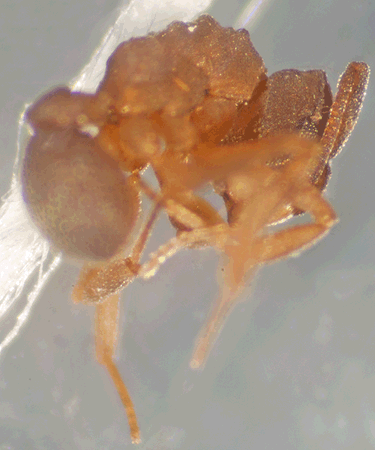 Trager's comment was, "There are questions as to what species to call this, but the genus is certain."
Trager's comment was, "There are questions as to what species to call this, but the genus is certain." 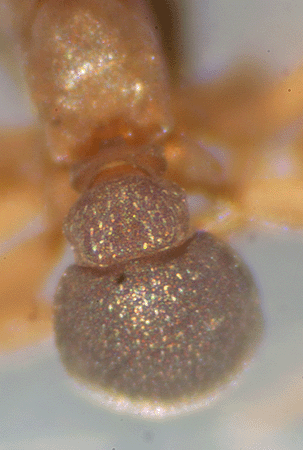 The two heads appear to have different shapes. The length of the head of this ant is greater than the width of its head at the eyes. In the fungus ant above, the distances of those lengths are about the same. As shown in the second image here and for the one above, the dorsal surfaces of the thorax have bumps, but they are not shaped the same.
The two heads appear to have different shapes. The length of the head of this ant is greater than the width of its head at the eyes. In the fungus ant above, the distances of those lengths are about the same. As shown in the second image here and for the one above, the dorsal surfaces of the thorax have bumps, but they are not shaped the same. 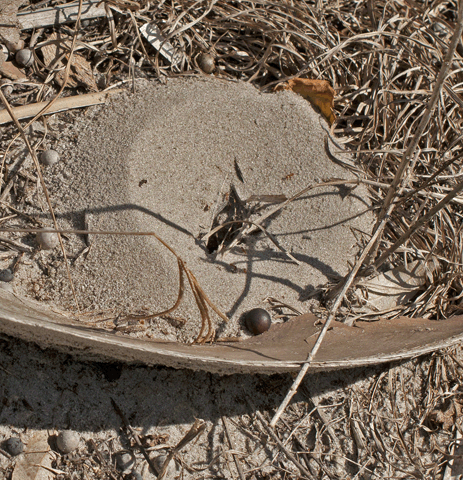
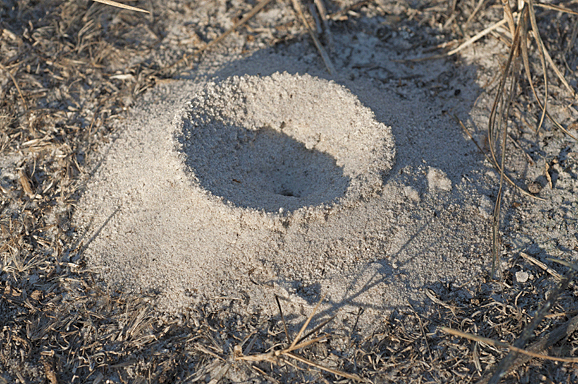
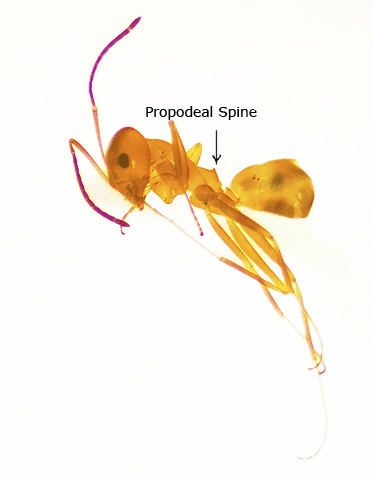 The common names of this ant, "Pyramid Ant," "Crater Ant," and "Cone Ant"
describe the very distinctive volcano-shaped mounds these ants create. The mounds are typically made in sandy soil in open areas. The colony itself resides deep below the crater.
The common names of this ant, "Pyramid Ant," "Crater Ant," and "Cone Ant"
describe the very distinctive volcano-shaped mounds these ants create. The mounds are typically made in sandy soil in open areas. The colony itself resides deep below the crater. 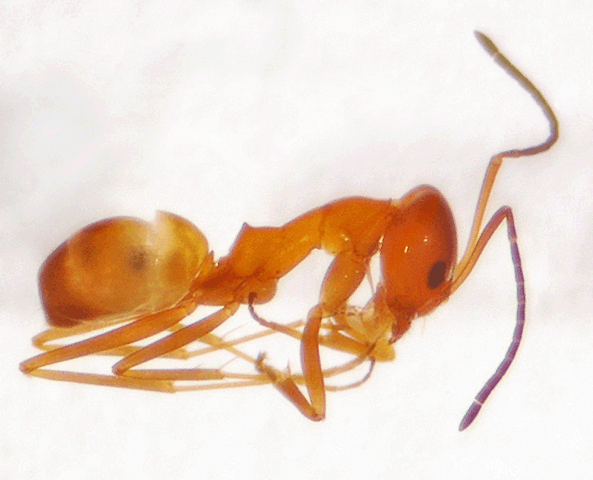
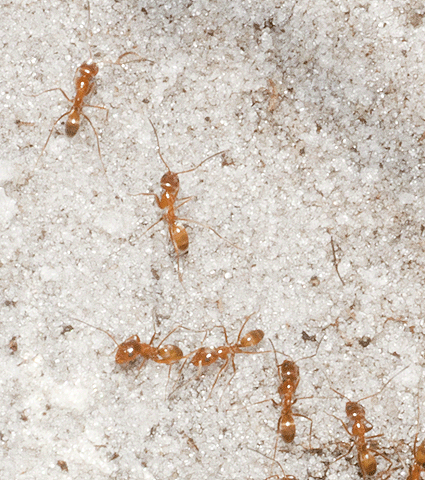
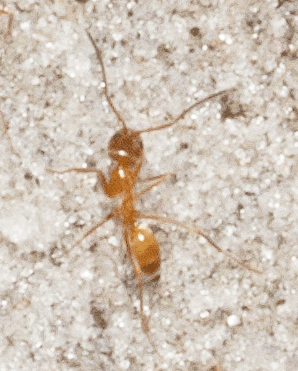
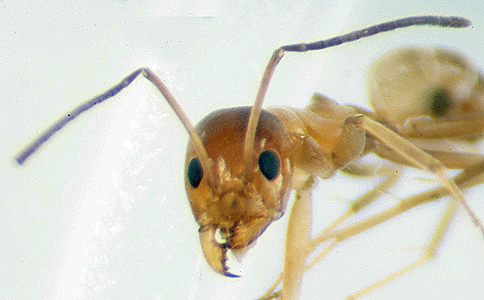
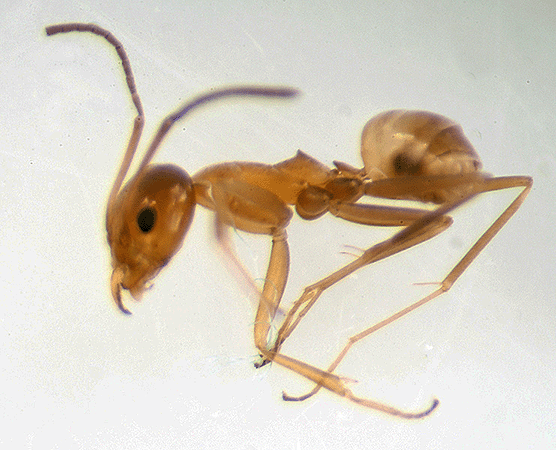
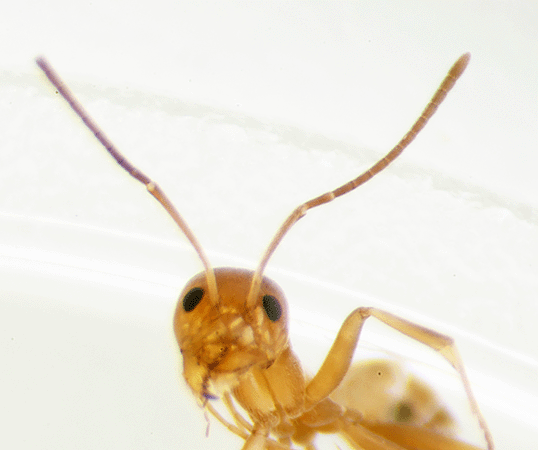
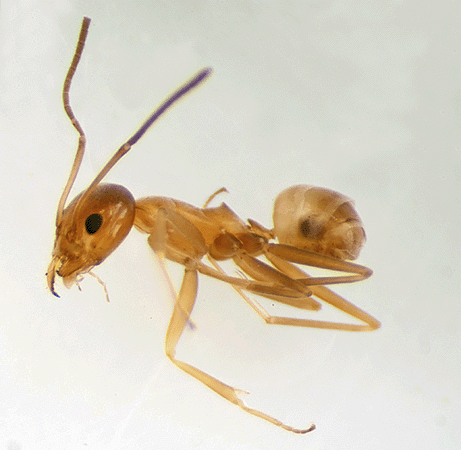
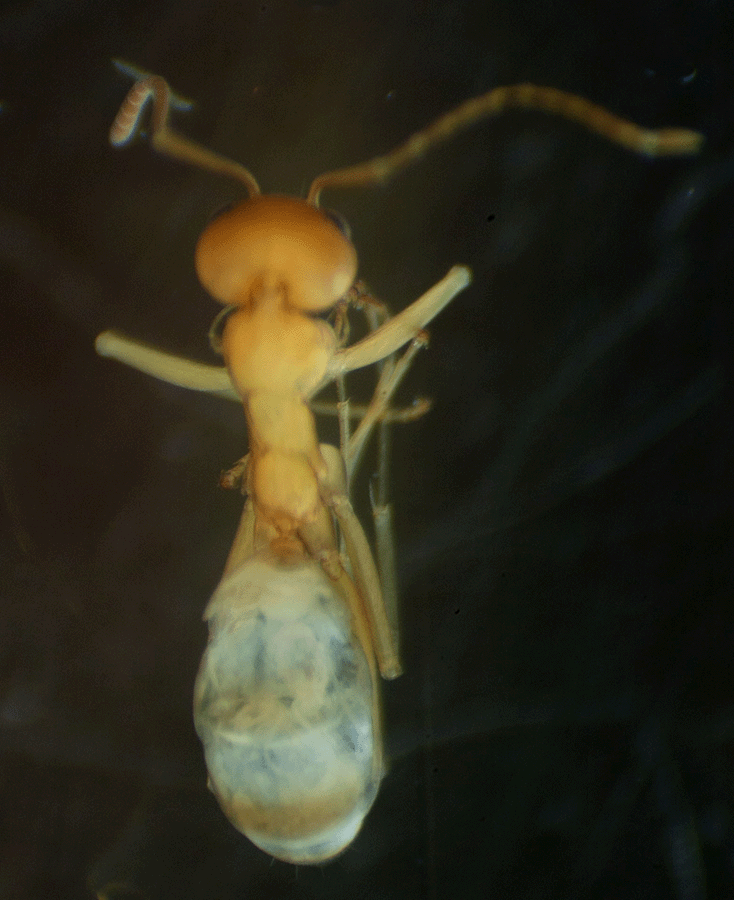
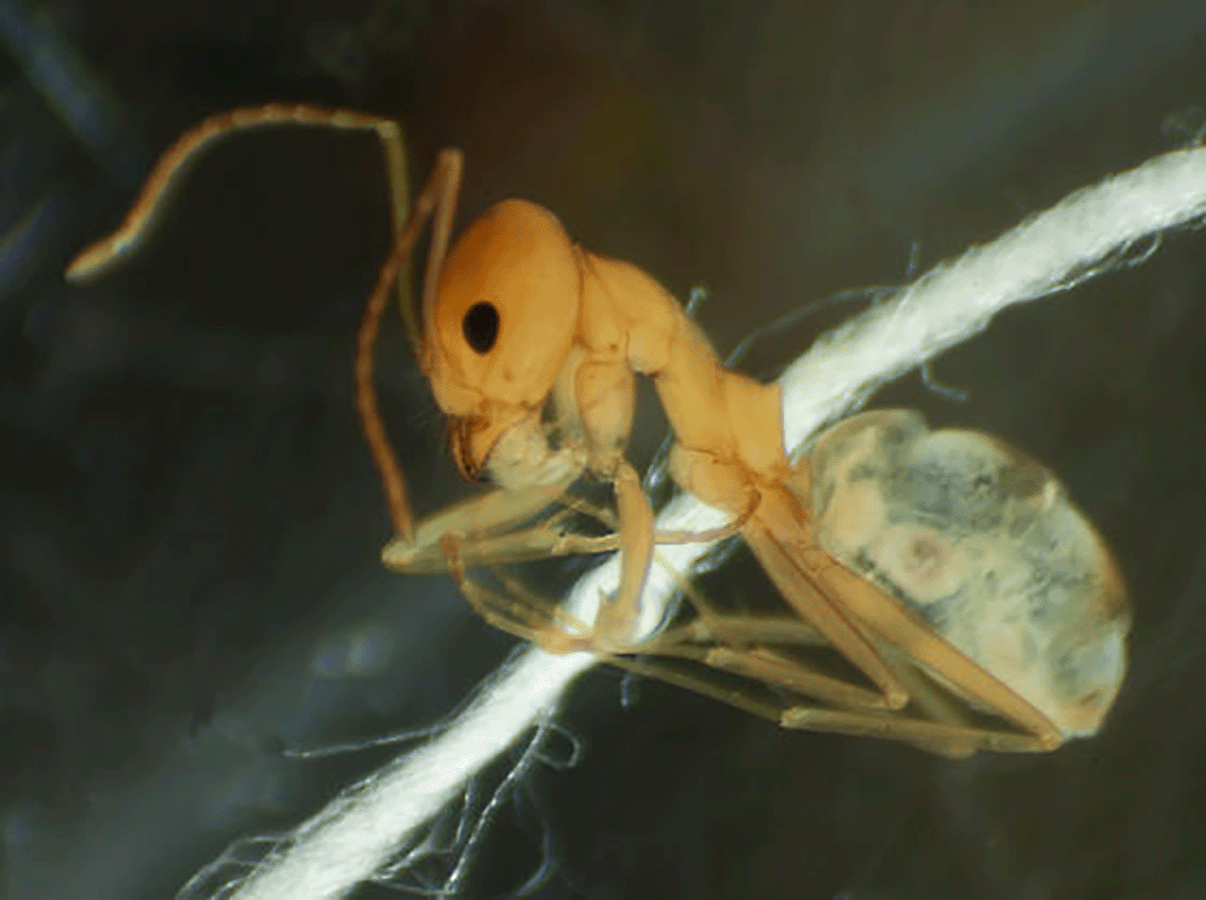
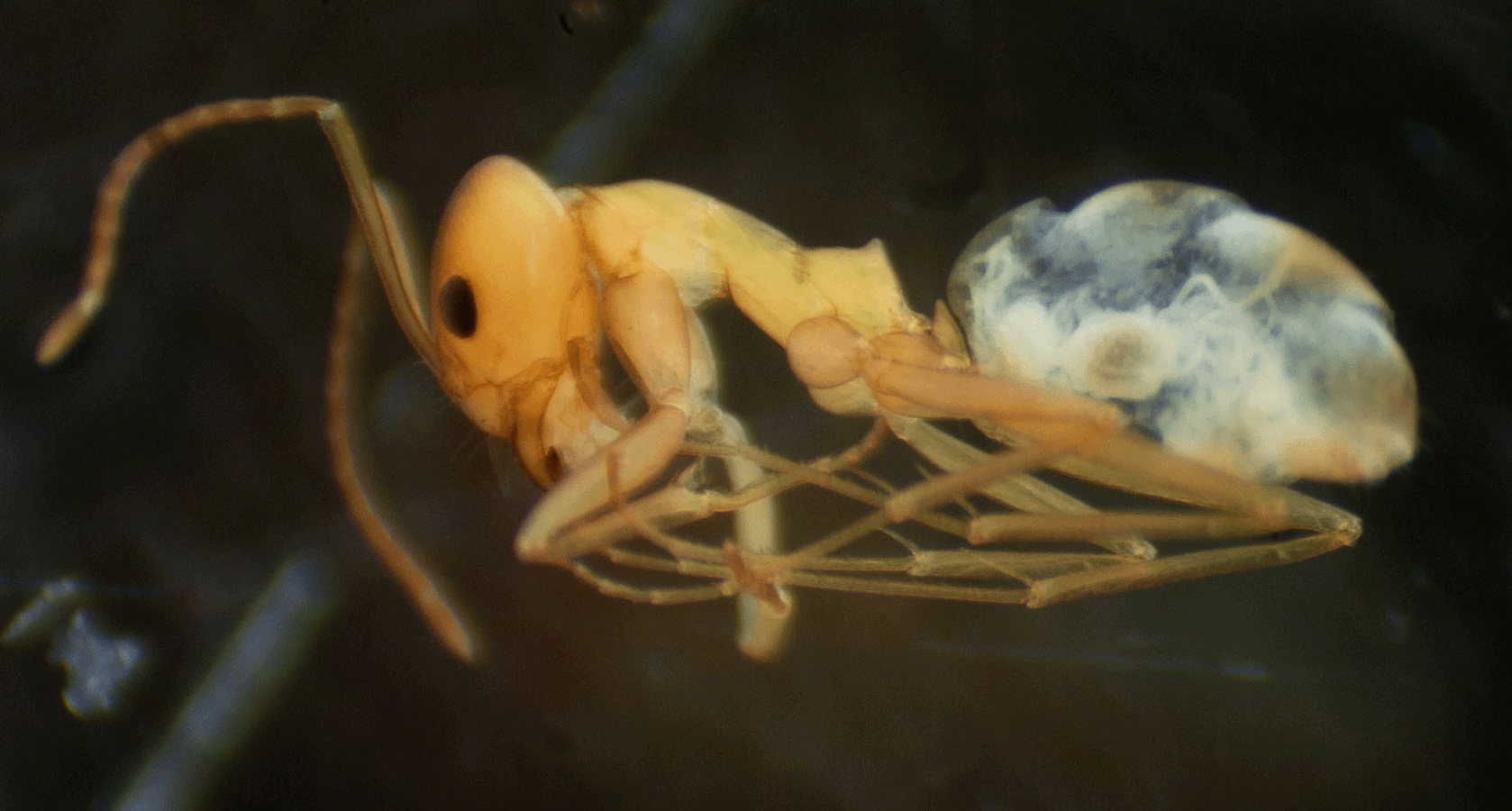
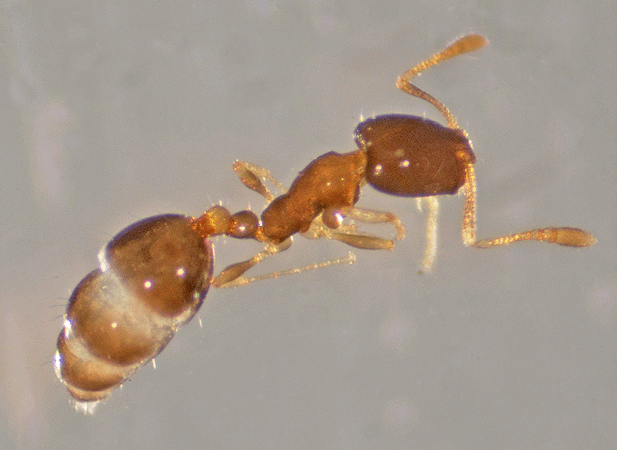 This 1.5 mm-long ant was captured in a yellow bowl trap placed beneath a
This 1.5 mm-long ant was captured in a yellow bowl trap placed beneath a 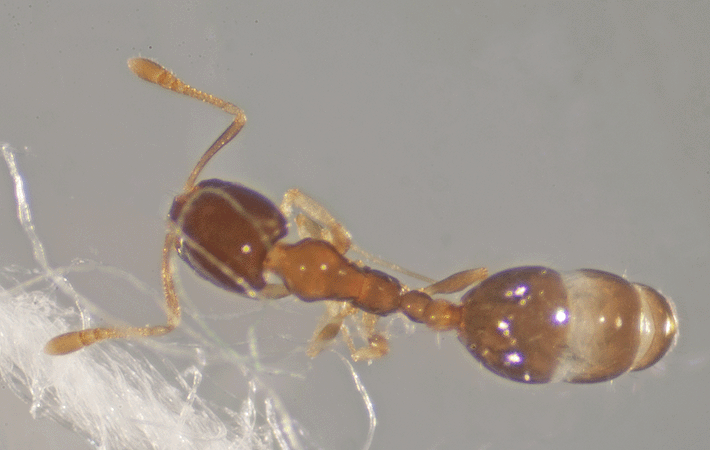 Subfamily Myrmicinae is the largest ant subfamily and contains more genera and more species than any other subfamily. All members of the subfamily have a two-segmented abdomen. Most members of the subfamily are generalist foragers.
Subfamily Myrmicinae is the largest ant subfamily and contains more genera and more species than any other subfamily. All members of the subfamily have a two-segmented abdomen. Most members of the subfamily are generalist foragers. 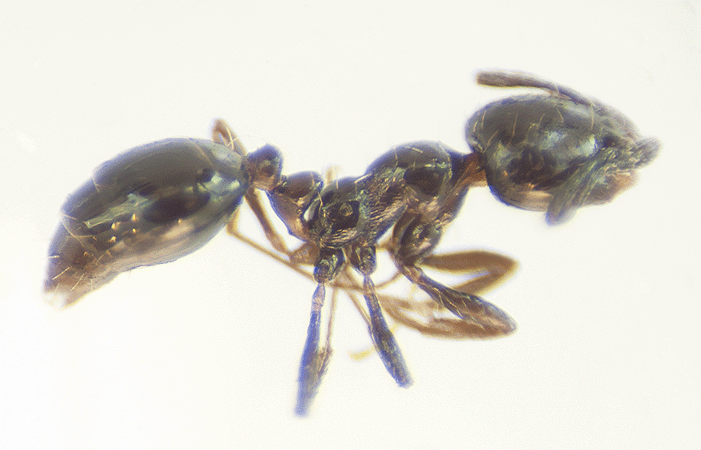
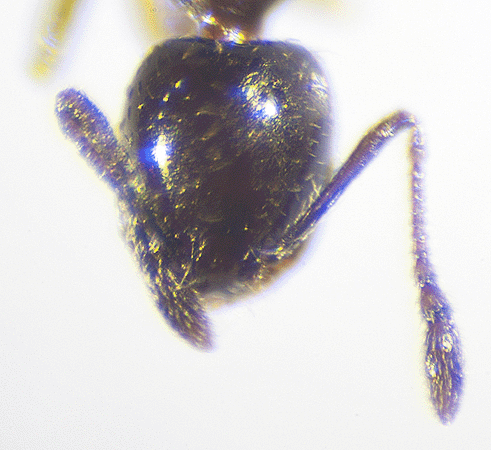
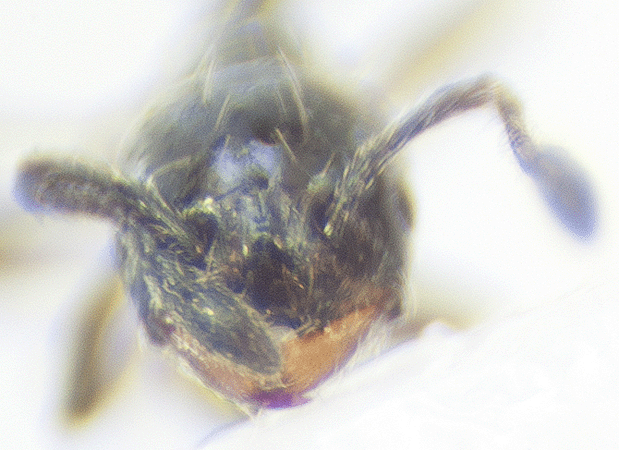
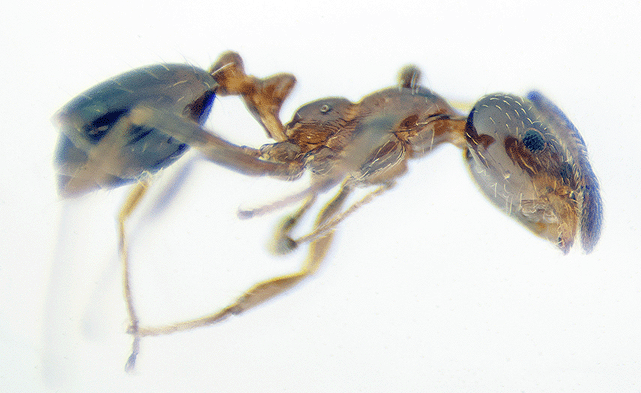
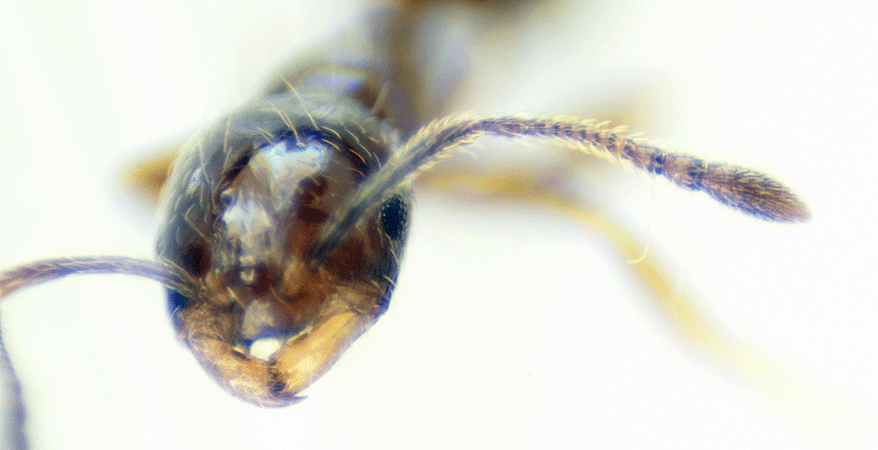
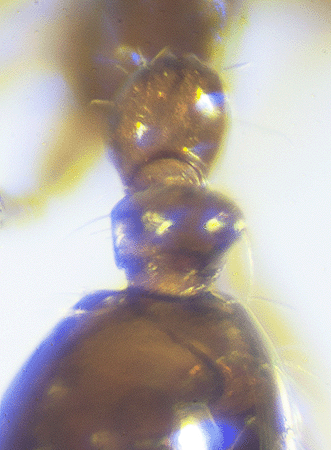 On December 19, 2016, the species identification was confirmed by James C. Trager. Trager commented. "These do nest in the well drained soil of scrub habitats, and this is the only native Monomorium found around Naples. Note that the somewhat lighter coloring of the mesosoma is not a species characteristic, just individual."
On December 19, 2016, the species identification was confirmed by James C. Trager. Trager commented. "These do nest in the well drained soil of scrub habitats, and this is the only native Monomorium found around Naples. Note that the somewhat lighter coloring of the mesosoma is not a species characteristic, just individual." 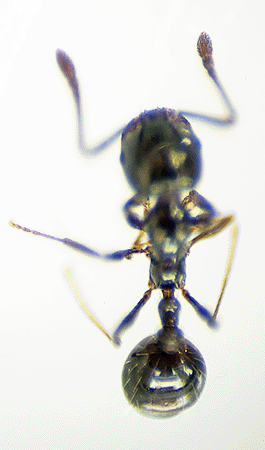
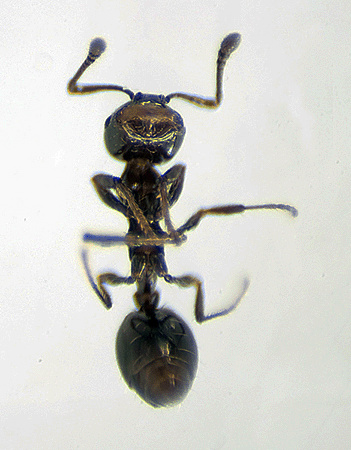
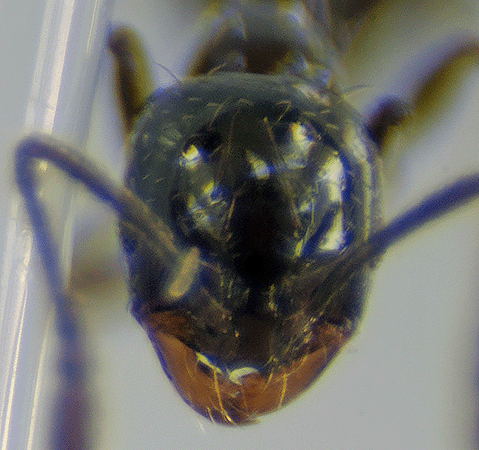
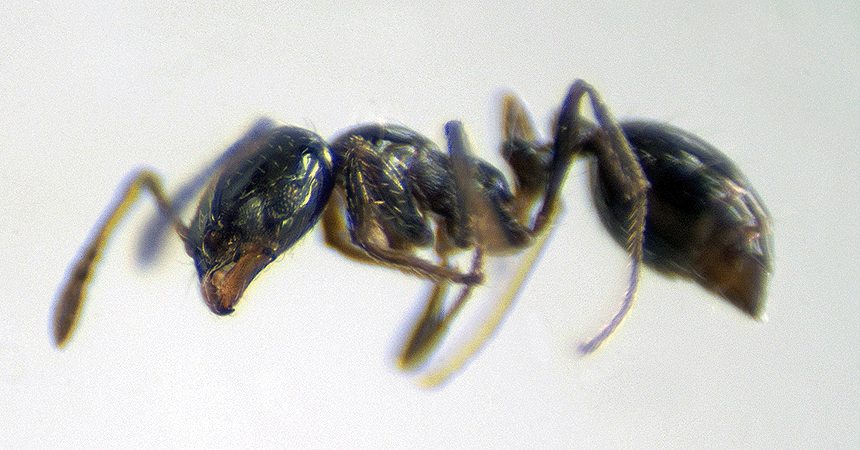
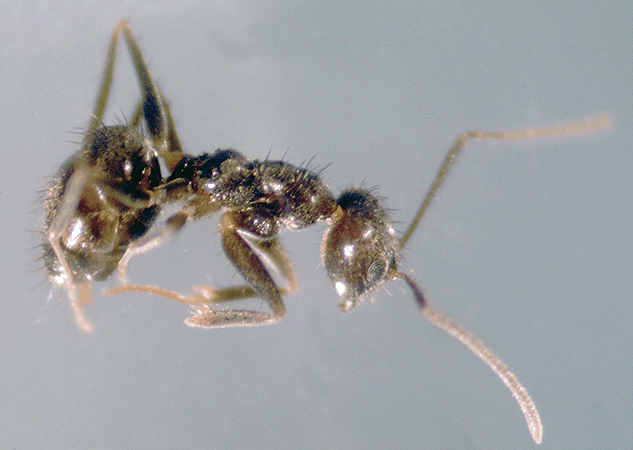 On December 17, 2014, this 1.75 mm long ant was living in leaf litter in an oak hammock in the northeast corner of the Smith Preserve. It was extracted from the leaf litter with a Berlese funnel. These photos were produced using photomicroscopy.
On December 17, 2014, this 1.75 mm long ant was living in leaf litter in an oak hammock in the northeast corner of the Smith Preserve. It was extracted from the leaf litter with a Berlese funnel. These photos were produced using photomicroscopy. 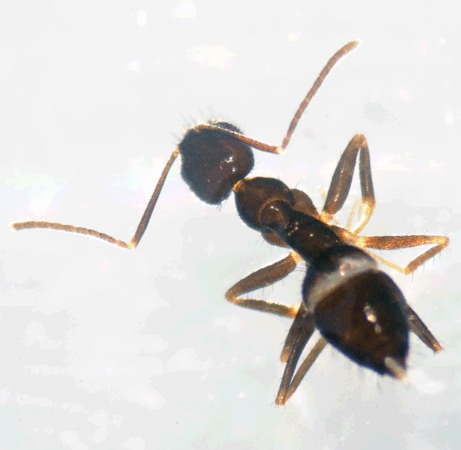 Nylanderia bourbonia are typically black and covered with dense fine hairs on the dorsal surface of the mesosoma (the middle part of the body that bears the legs). Like other members in this genus, this species is a predator and scavenger of arthropods and also collects honeydew.
Nylanderia bourbonia are typically black and covered with dense fine hairs on the dorsal surface of the mesosoma (the middle part of the body that bears the legs). Like other members in this genus, this species is a predator and scavenger of arthropods and also collects honeydew. 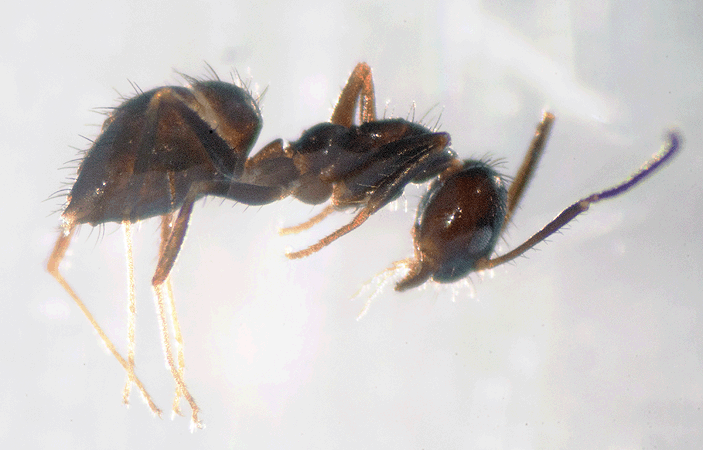 Members of this genus have erect hairs on the first segment of the antennae and legs, and paired hairs on the upper surface of the first two segments of the thorax.
Members of this genus have erect hairs on the first segment of the antennae and legs, and paired hairs on the upper surface of the first two segments of the thorax.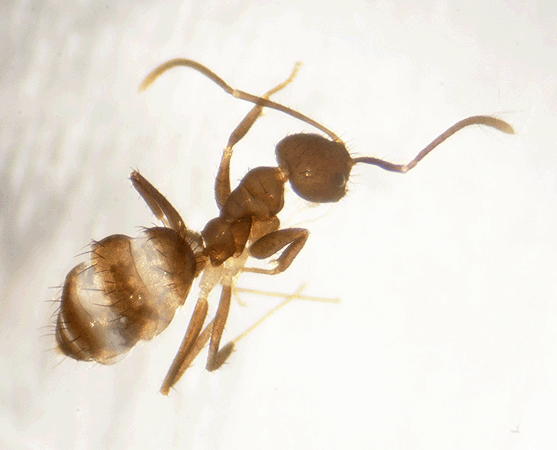 On December 19, 2014 this 2.25 mm ant was living in leaf litter, collected under a citrus tree in the northeast hammock of the Smith Preserve. The ant was isolated from the leaf litter using a Berlese Funnel. These photographs were created using photomicroscopy.
On December 19, 2014 this 2.25 mm ant was living in leaf litter, collected under a citrus tree in the northeast hammock of the Smith Preserve. The ant was isolated from the leaf litter using a Berlese Funnel. These photographs were created using photomicroscopy.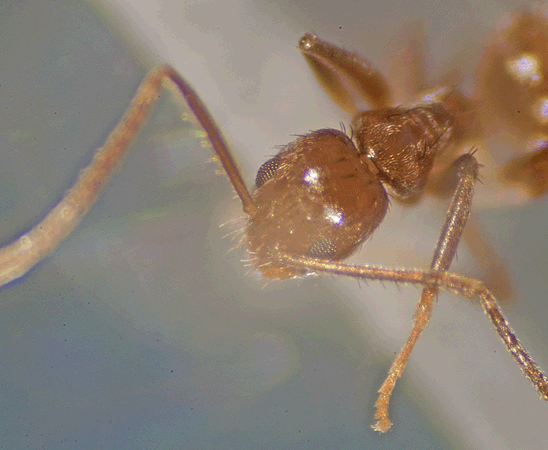 Trager said he recognized it "based on the color pattern (whitish mid and hind coxae, light brown body) and long pilose scapes."
Trager said he recognized it "based on the color pattern (whitish mid and hind coxae, light brown body) and long pilose scapes."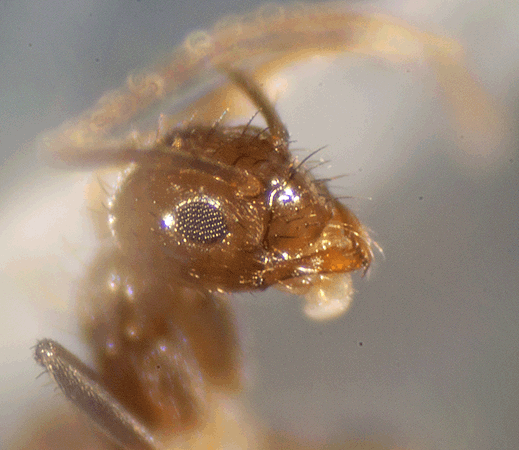
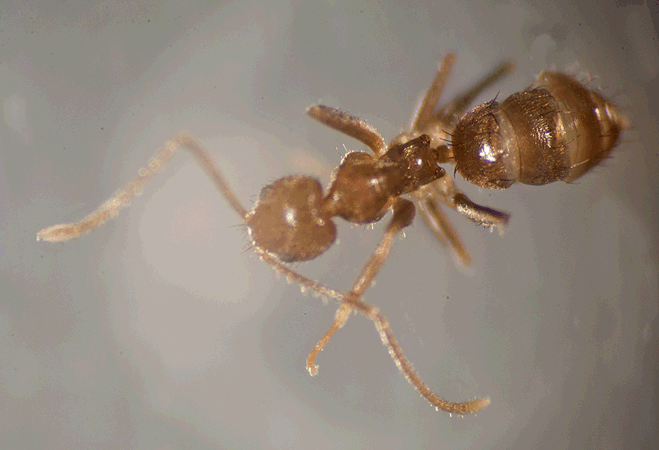
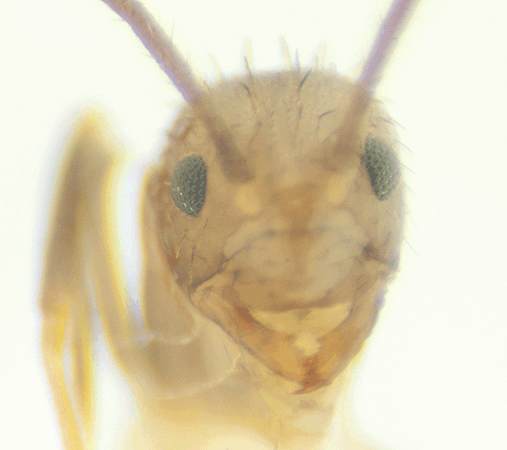
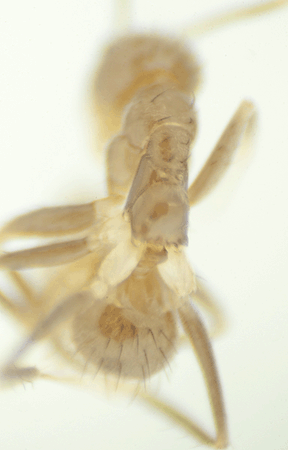
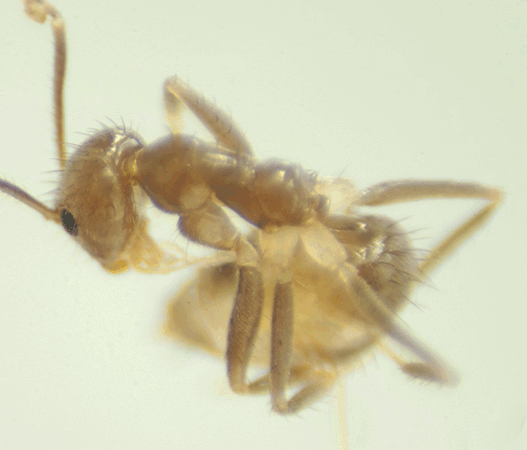
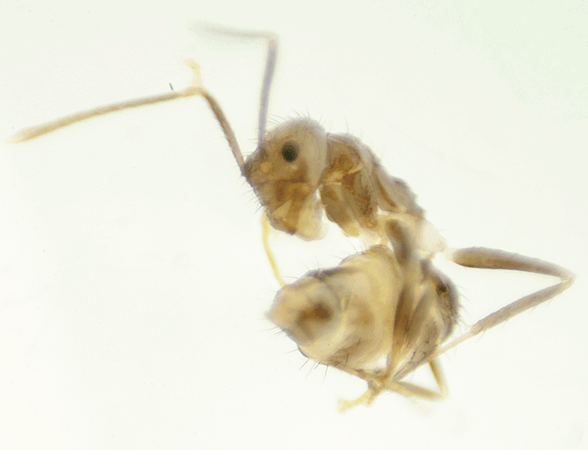
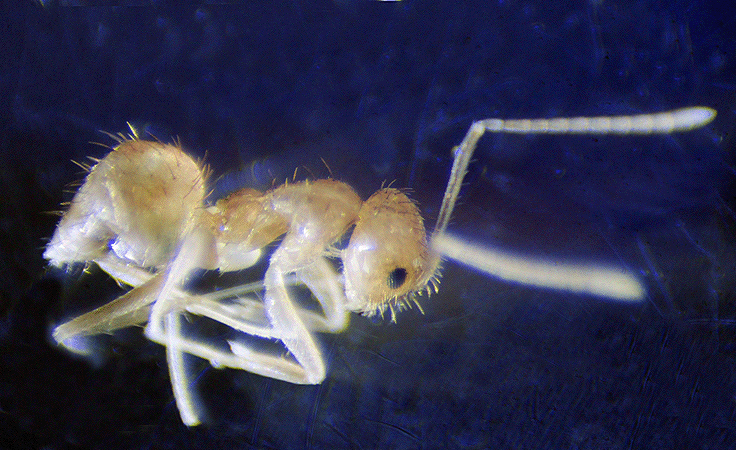
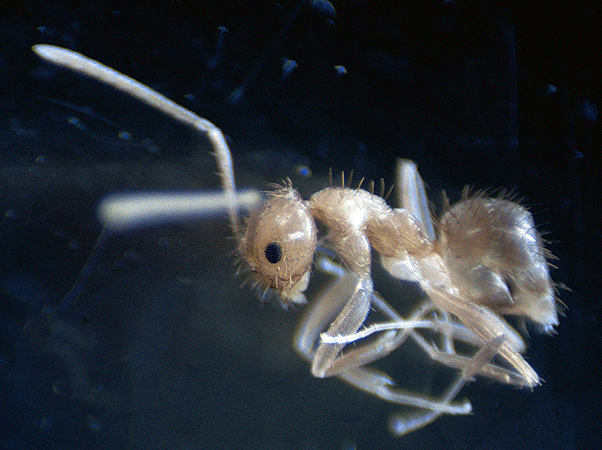 The small size, dense hairs, and white coxae were clues to the webmaster that this ant may be Nylanderia steinheili. These photographs were created using photomicroscopy and sent for verification of the identification to <BugGuide.net>, sponsored by Iowa State University's Department of Entomology.
The small size, dense hairs, and white coxae were clues to the webmaster that this ant may be Nylanderia steinheili. These photographs were created using photomicroscopy and sent for verification of the identification to <BugGuide.net>, sponsored by Iowa State University's Department of Entomology. 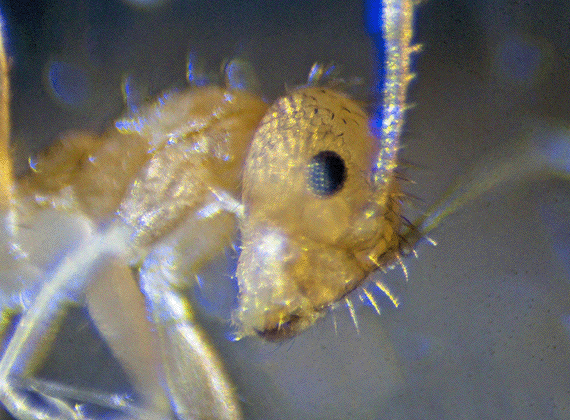
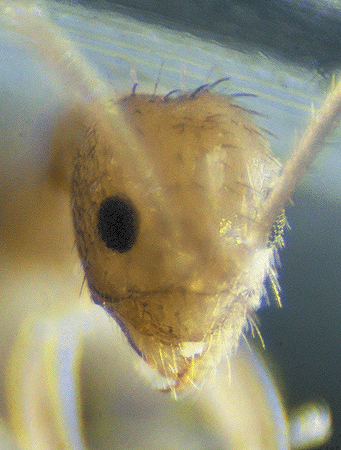
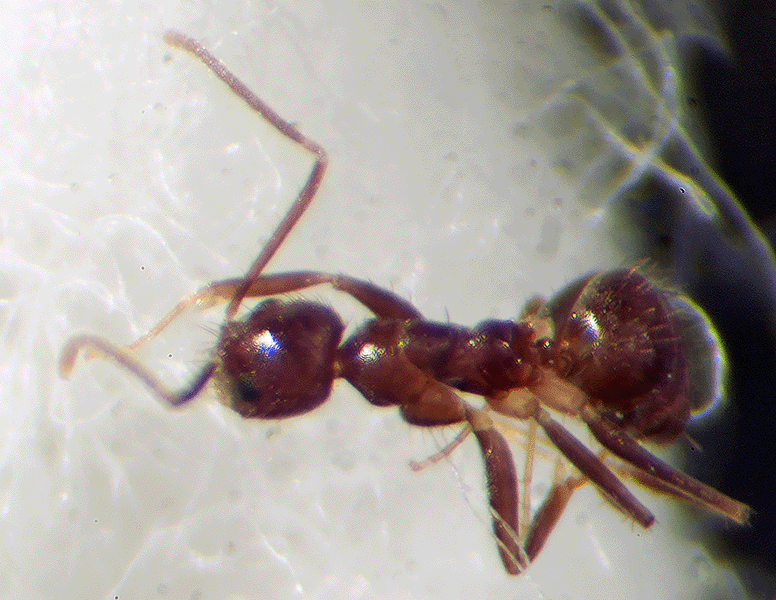
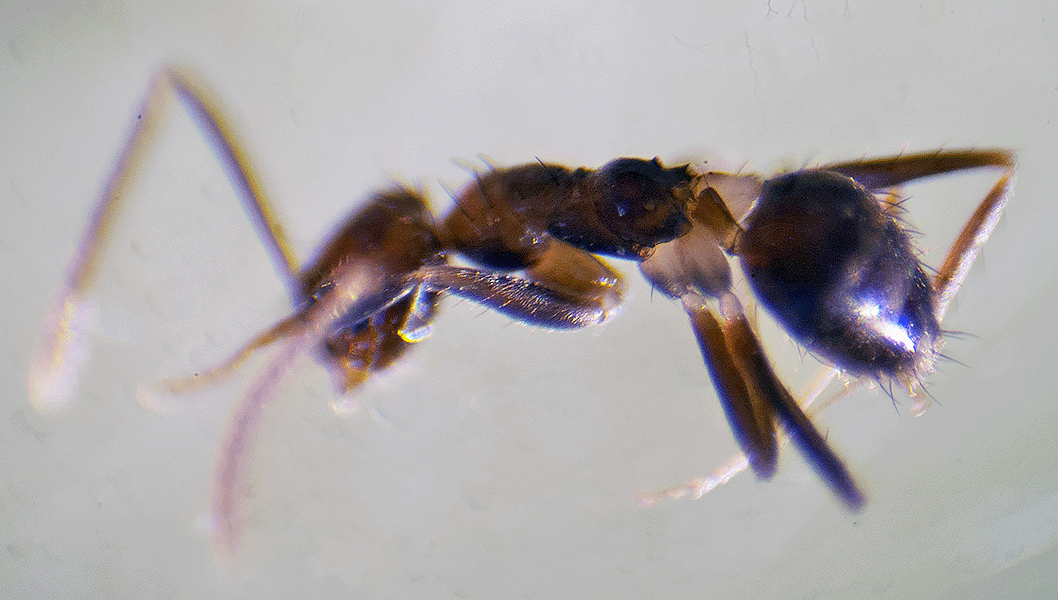
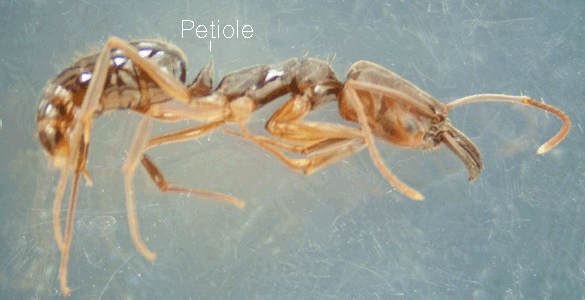
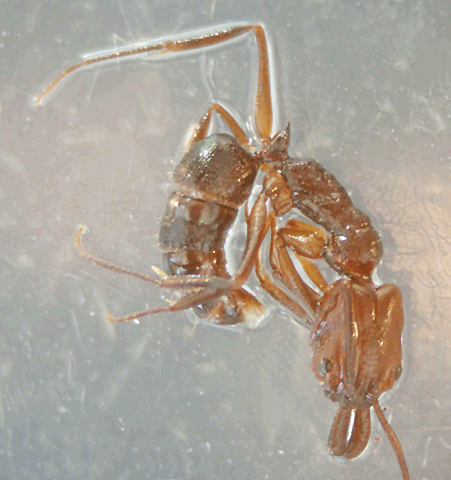
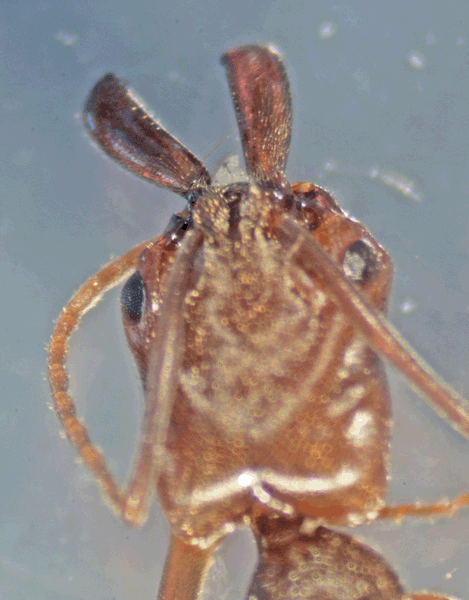
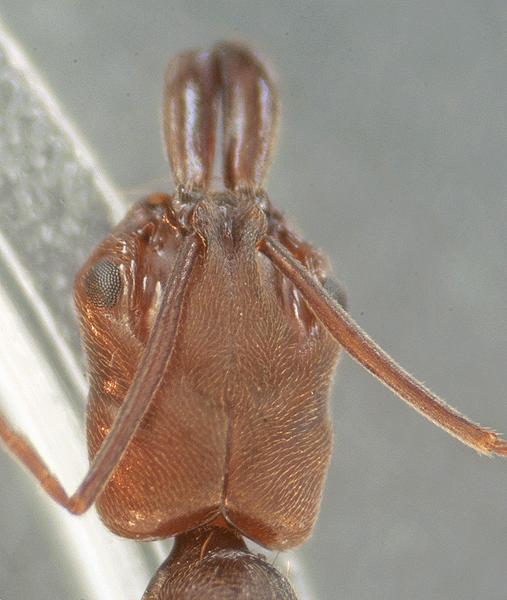
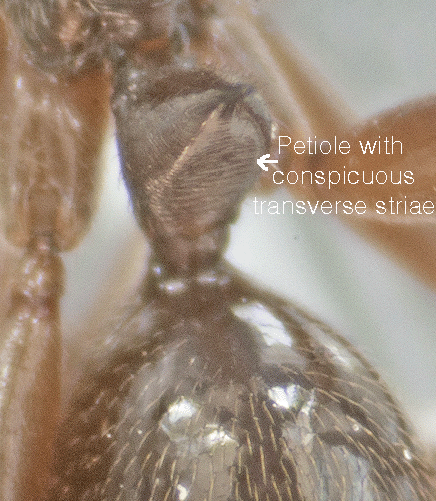
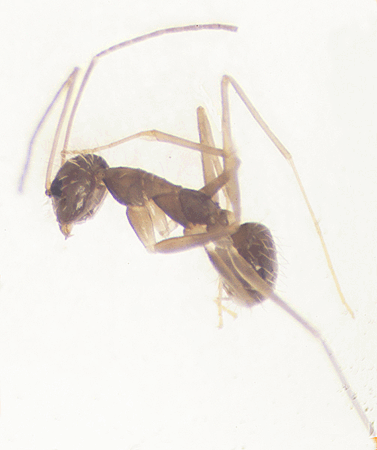 On December 30, 2015, this 2 mm long ant was captured in a sweep net sample taken in low, dry vegetation along the eastern gopher tortoise fence just south of Smith Preserve Way. These photographs were created using photomicrosopy and sent for identification to <BugGuide.net>, sponsored by Iowa State University's Department of Entomology.
On December 30, 2015, this 2 mm long ant was captured in a sweep net sample taken in low, dry vegetation along the eastern gopher tortoise fence just south of Smith Preserve Way. These photographs were created using photomicrosopy and sent for identification to <BugGuide.net>, sponsored by Iowa State University's Department of Entomology.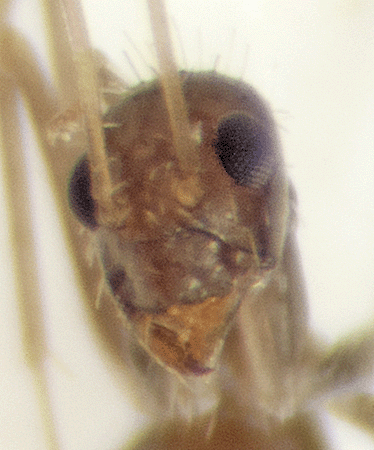 This ant is an agricultural and domestic pest. They do not sting people, but they can bite and secrete formic acid into the wound from the tip of the abdomen.
This ant is an agricultural and domestic pest. They do not sting people, but they can bite and secrete formic acid into the wound from the tip of the abdomen.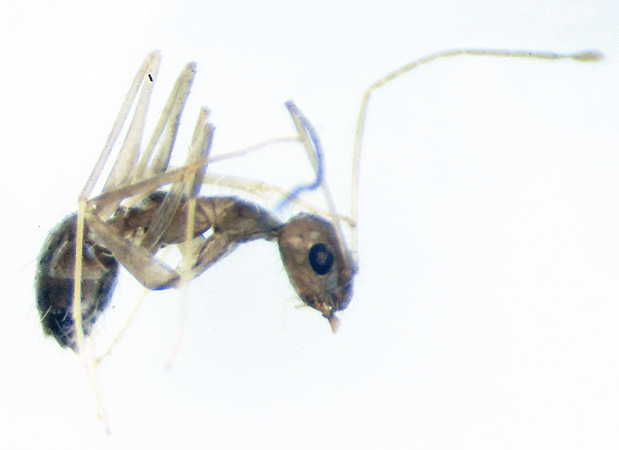
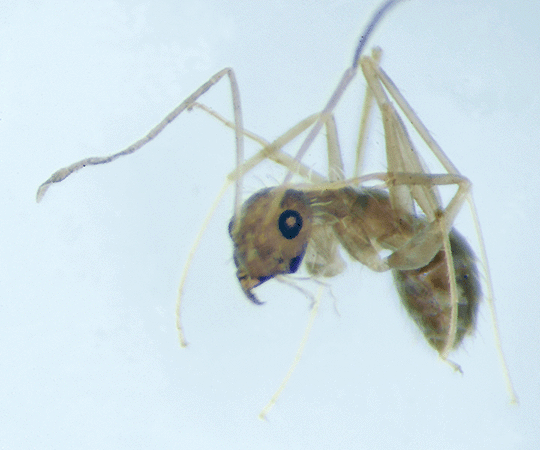
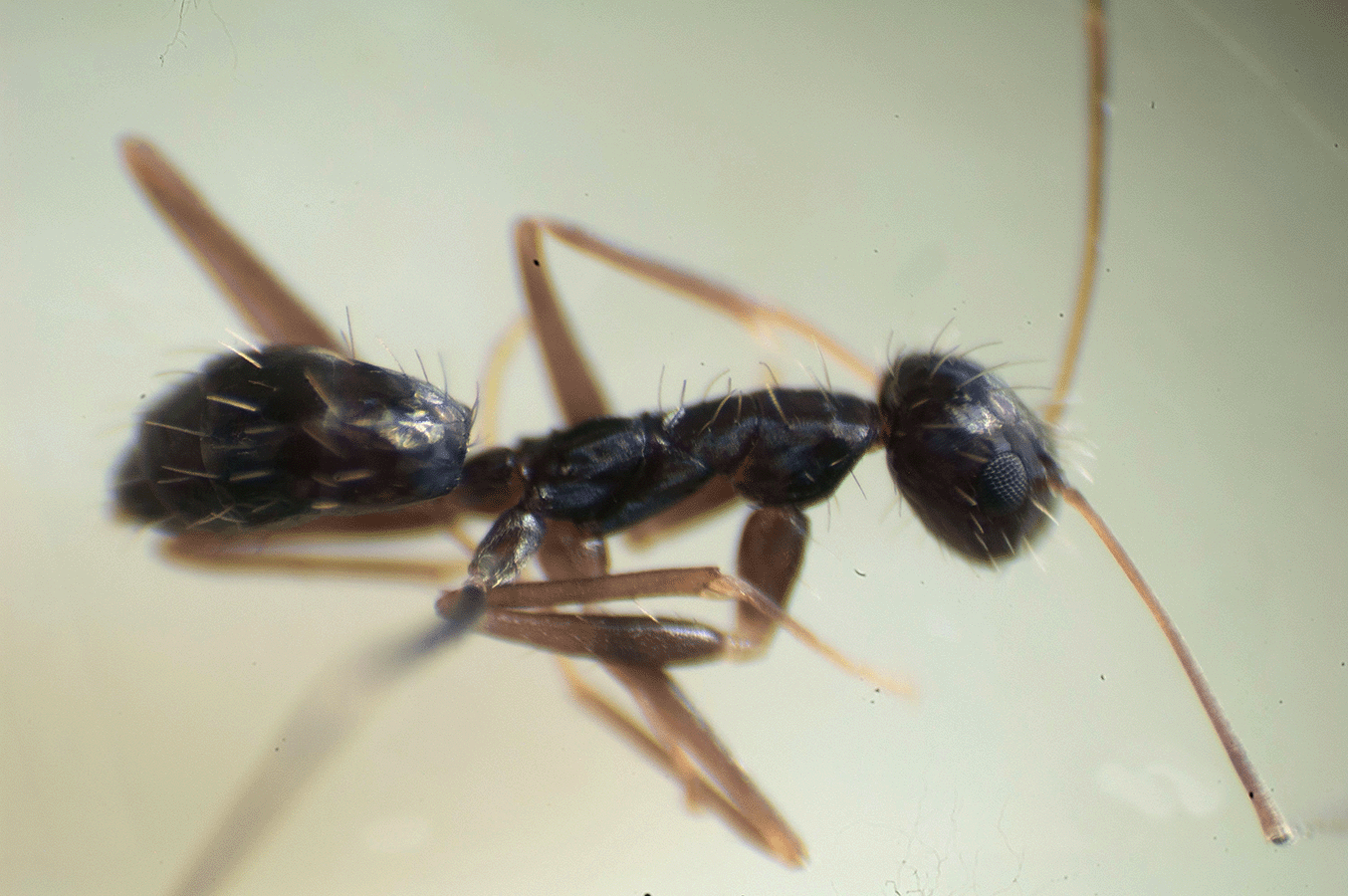
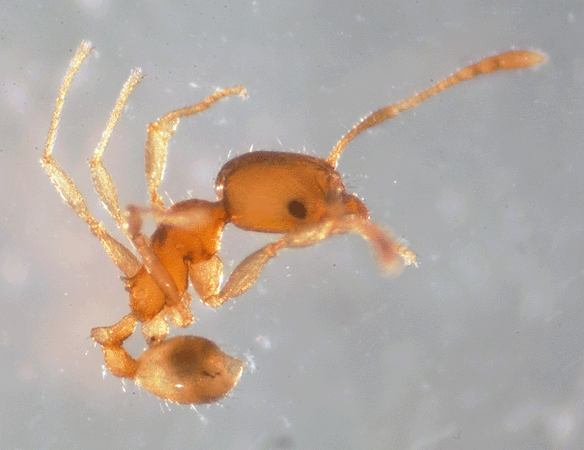 On December 17, 2014, this 1.5 mm long ant was collected in
On December 17, 2014, this 1.5 mm long ant was collected in 
 On December 15, 2015, this 1.5 mm long ant was captured in a yellow bowl trap placed near a clump of
On December 15, 2015, this 1.5 mm long ant was captured in a yellow bowl trap placed near a clump of 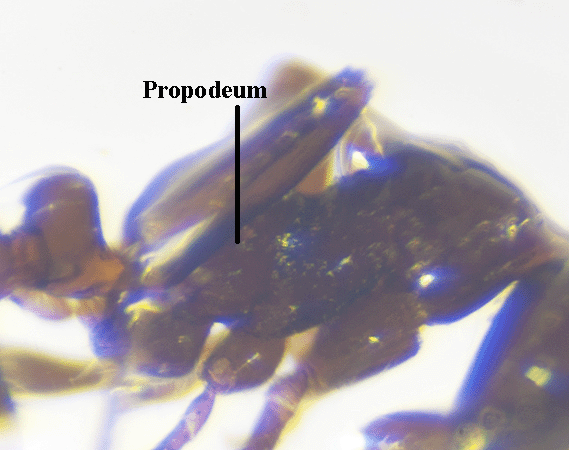
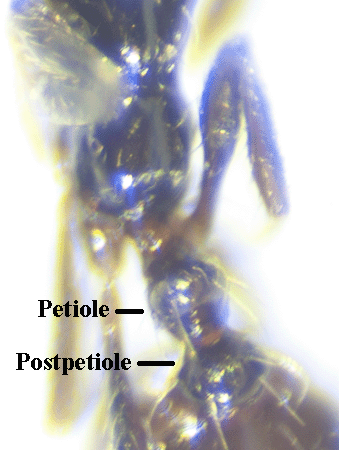
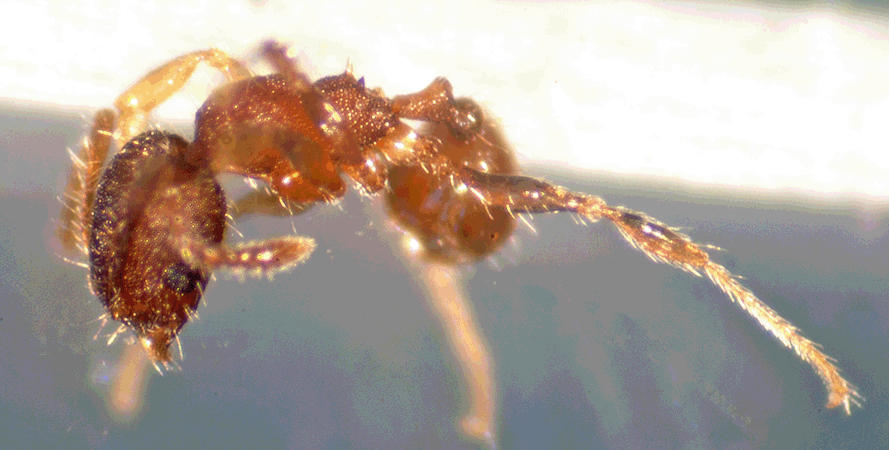
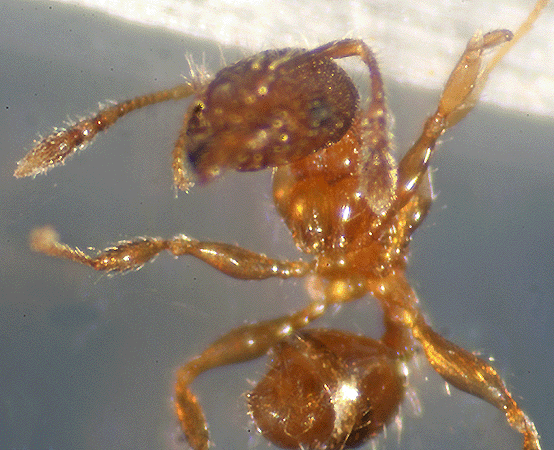 The ant was identified from these photographs on February 26, 2015 by James C. Trager, a Contributing Editor of <BugGuide.net>, sponsored by Iowa State University Department of Entomology.
The ant was identified from these photographs on February 26, 2015 by James C. Trager, a Contributing Editor of <BugGuide.net>, sponsored by Iowa State University Department of Entomology. 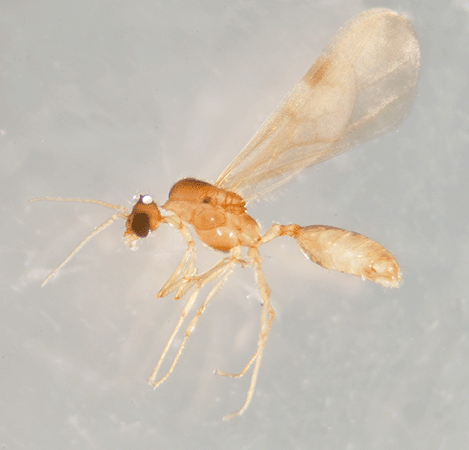 On April 7, 2015, the 3.5 mm long drone ant shown at right and below was captured in a yellow bowl trap placed beneath a
On April 7, 2015, the 3.5 mm long drone ant shown at right and below was captured in a yellow bowl trap placed beneath a 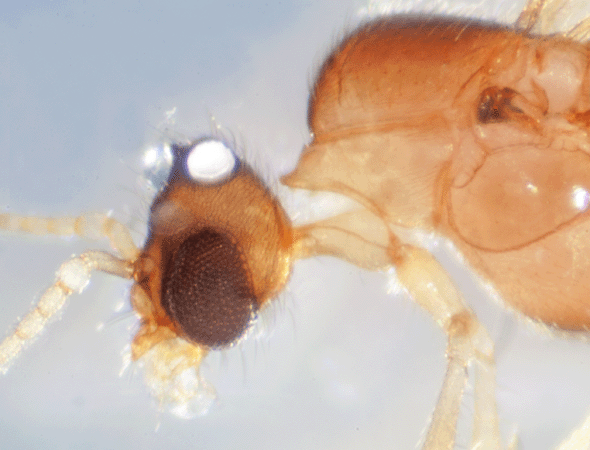
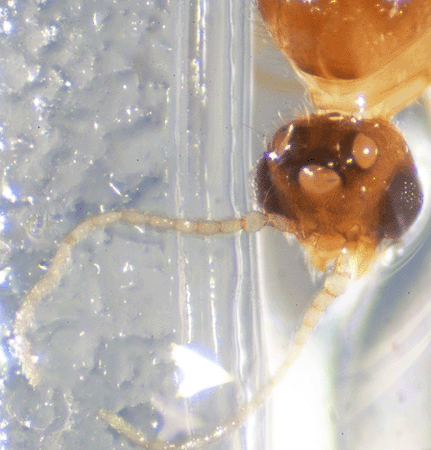
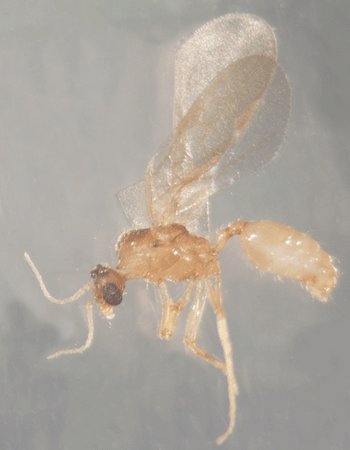
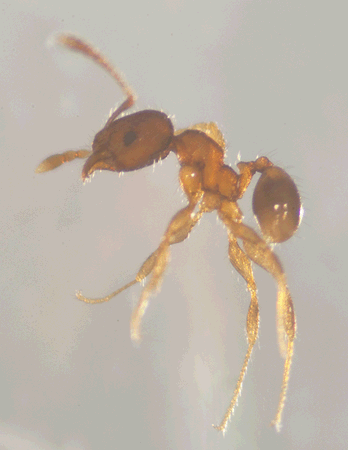
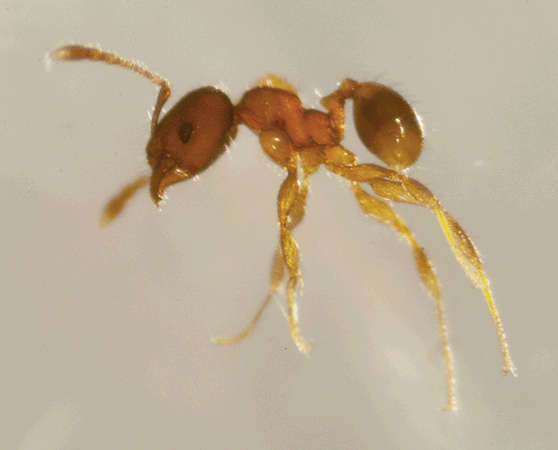
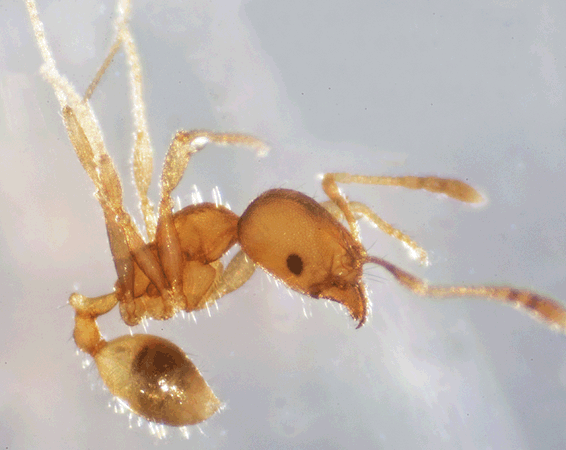
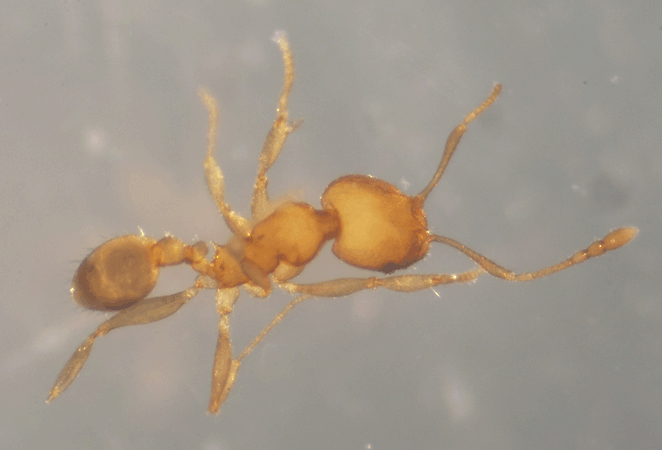
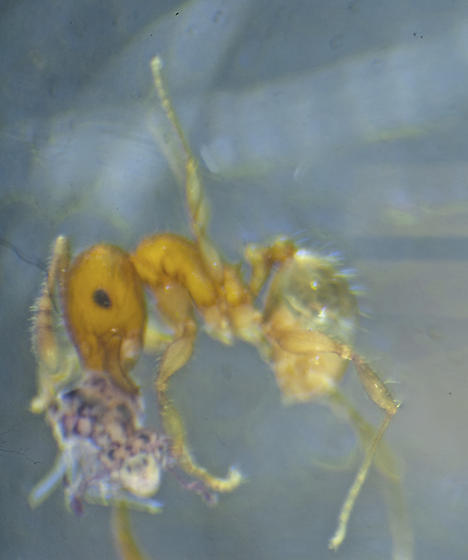
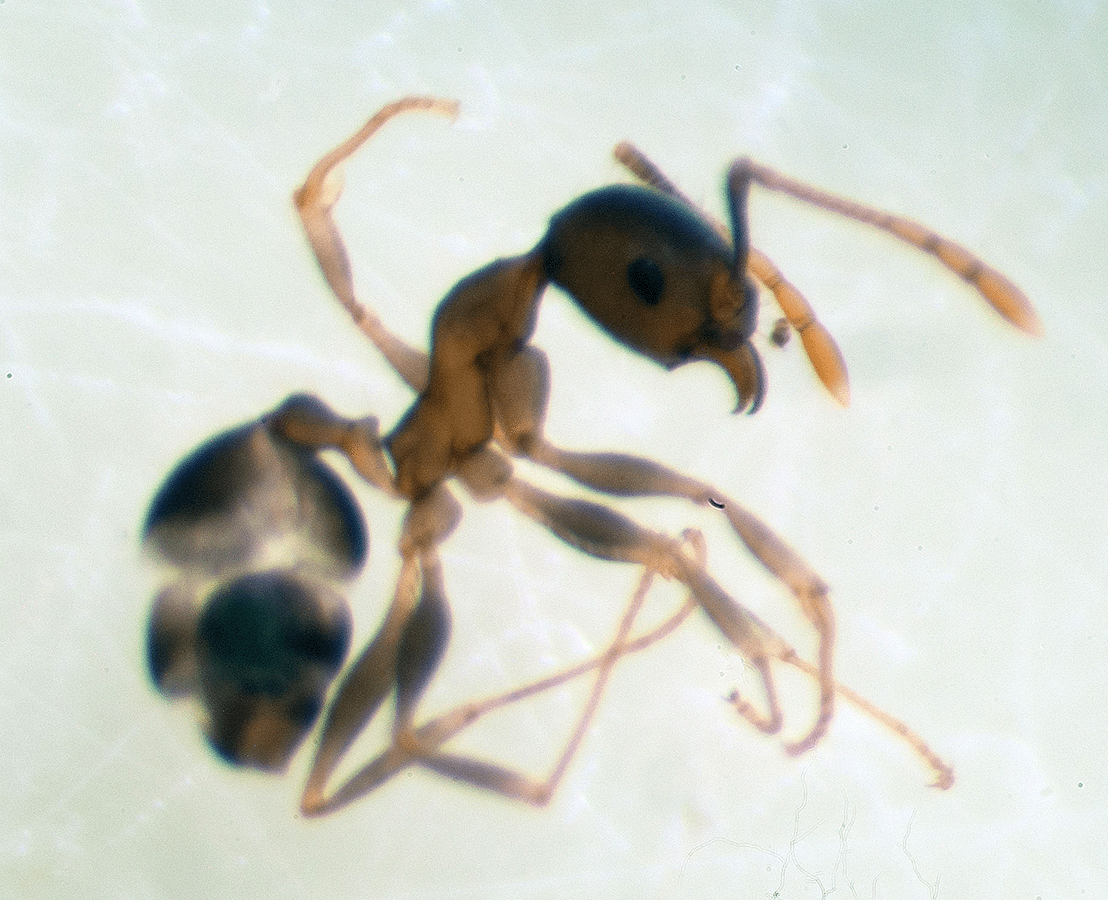
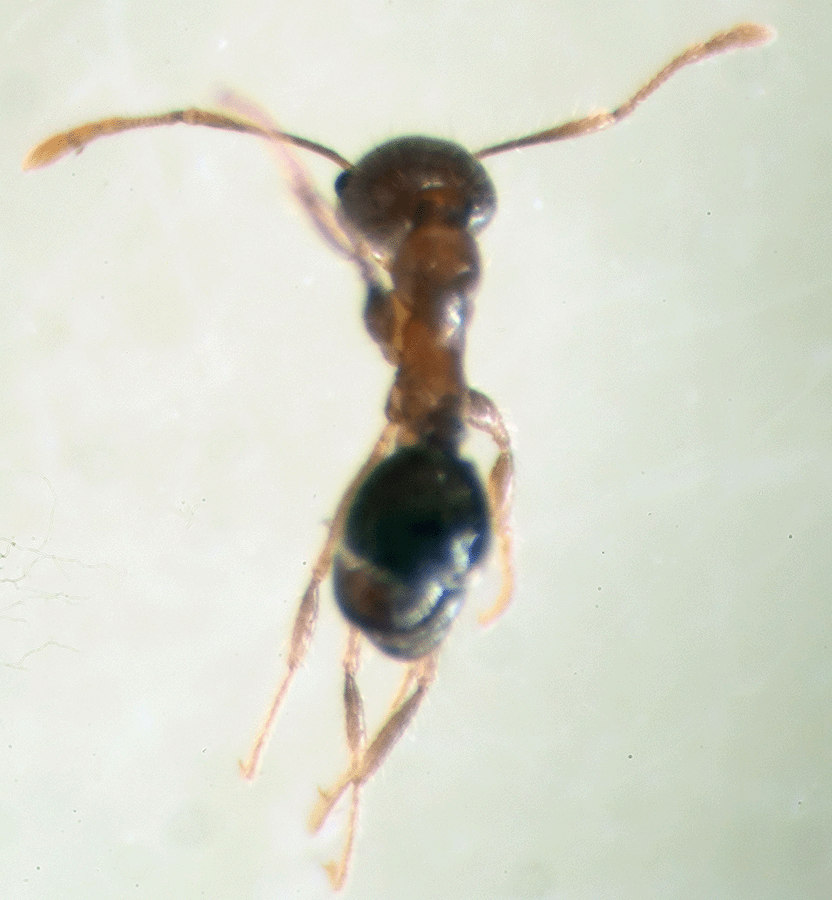
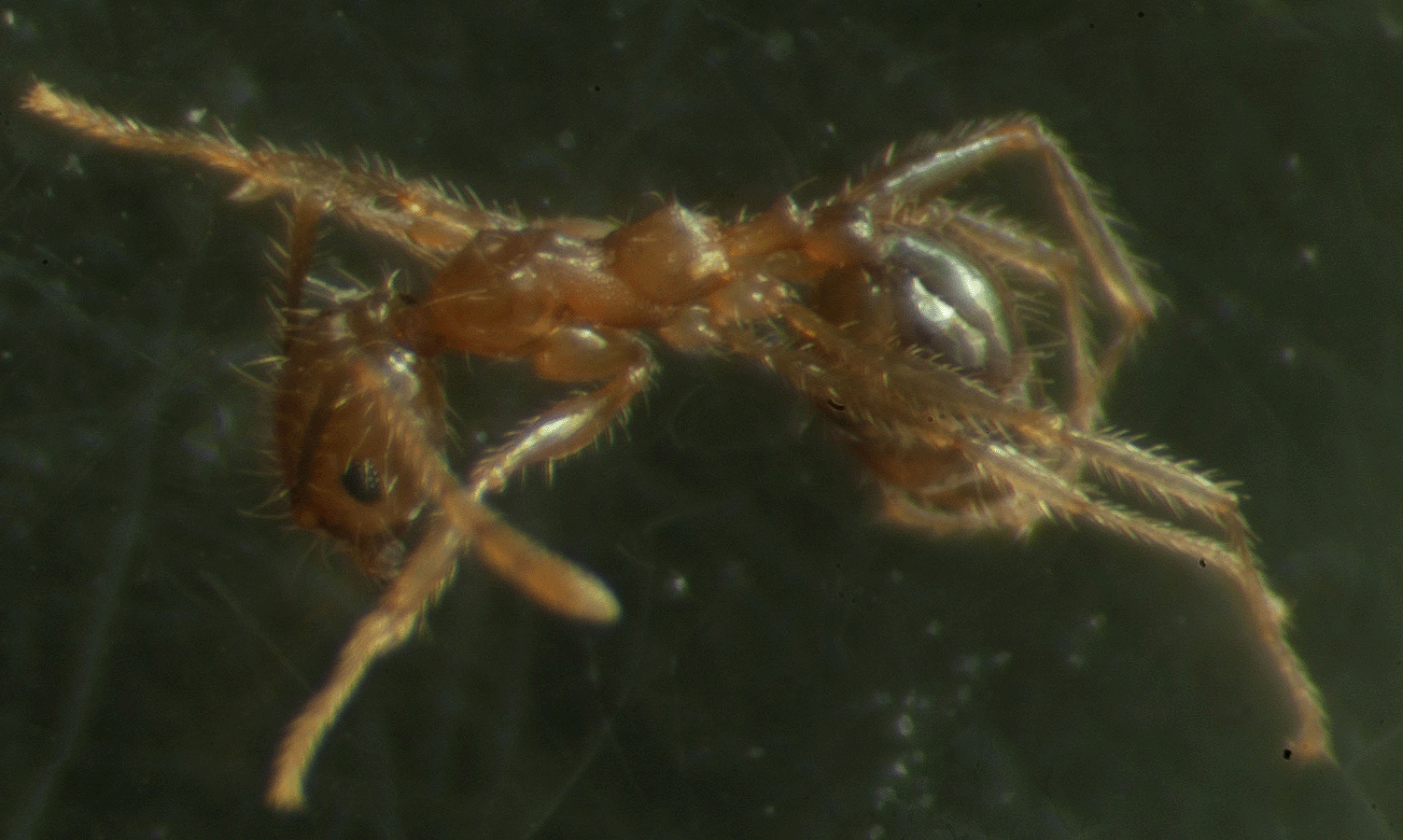
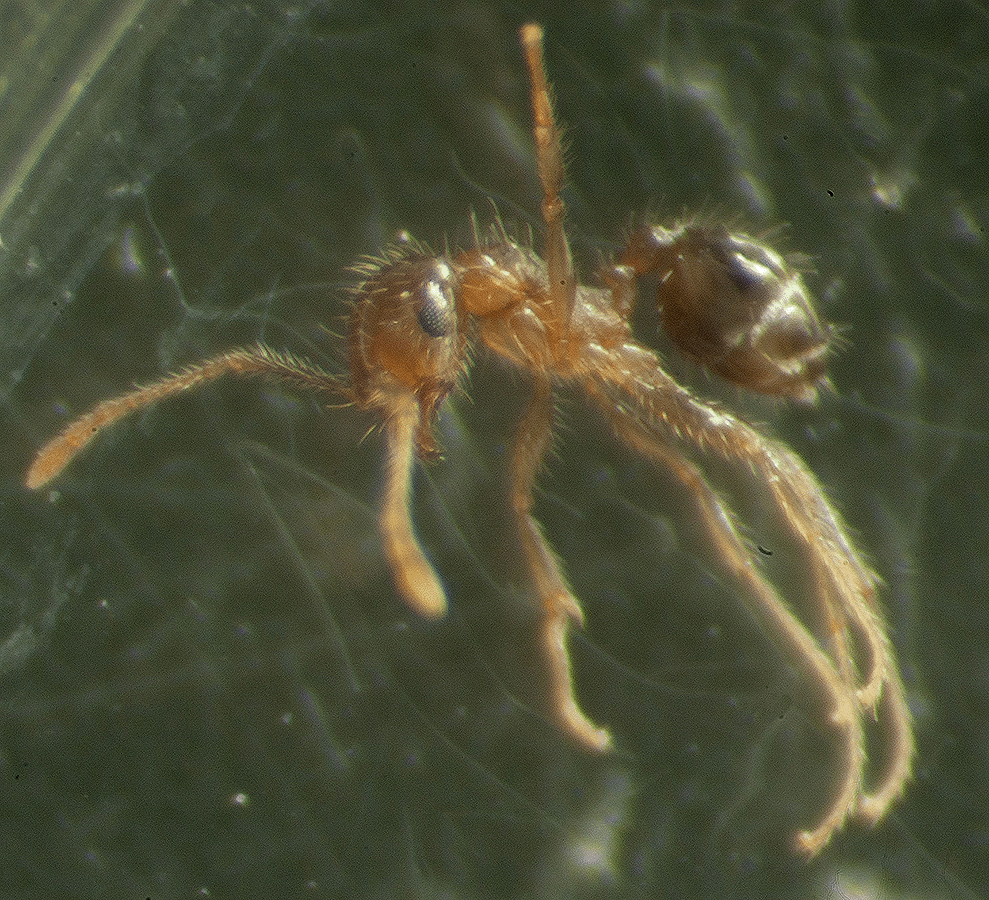
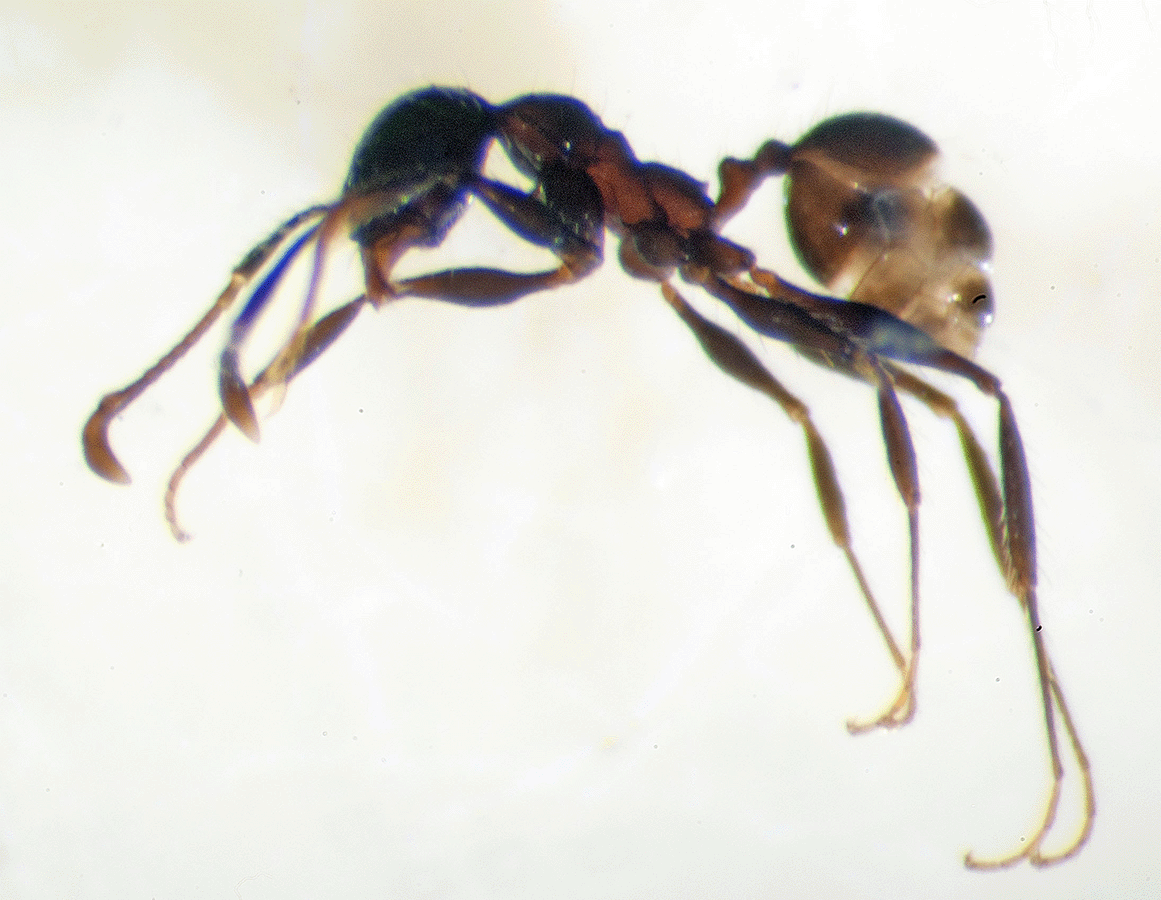
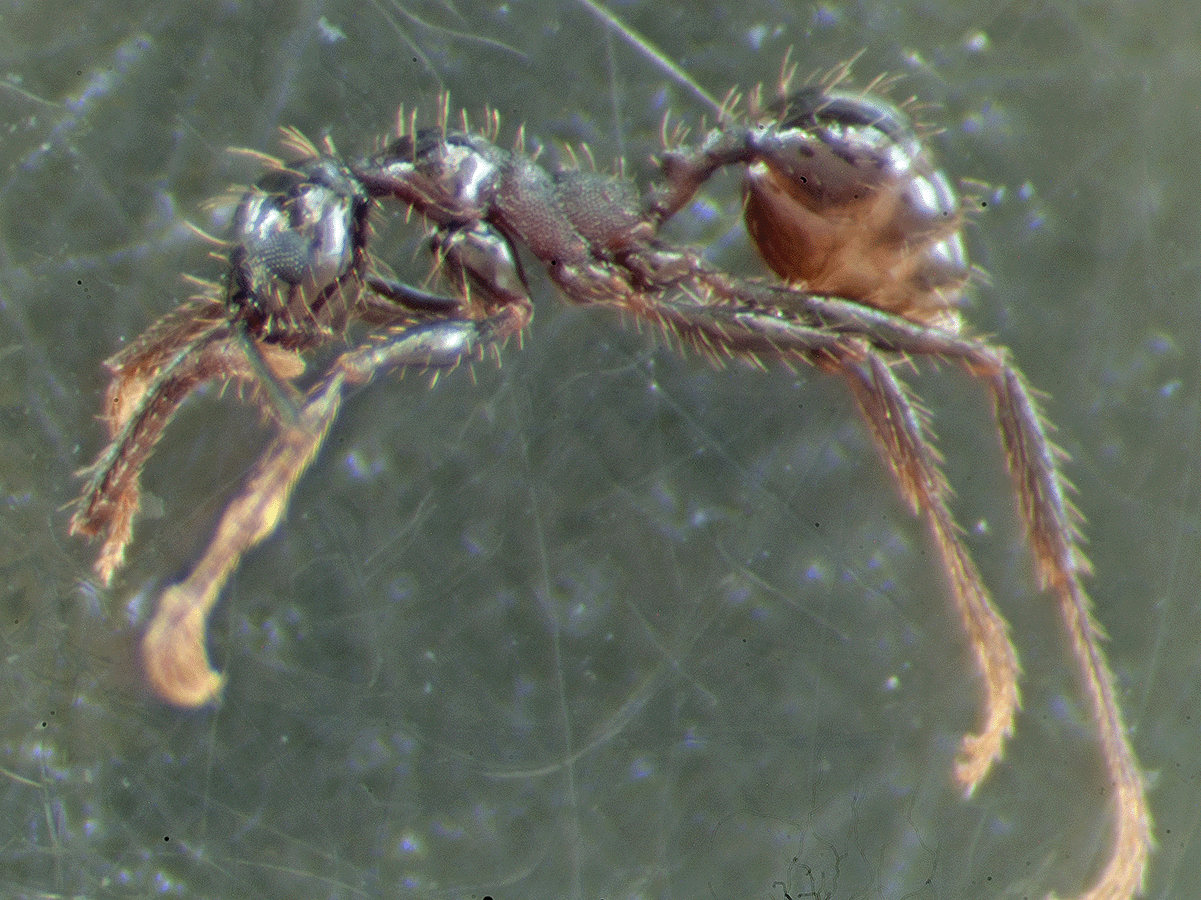
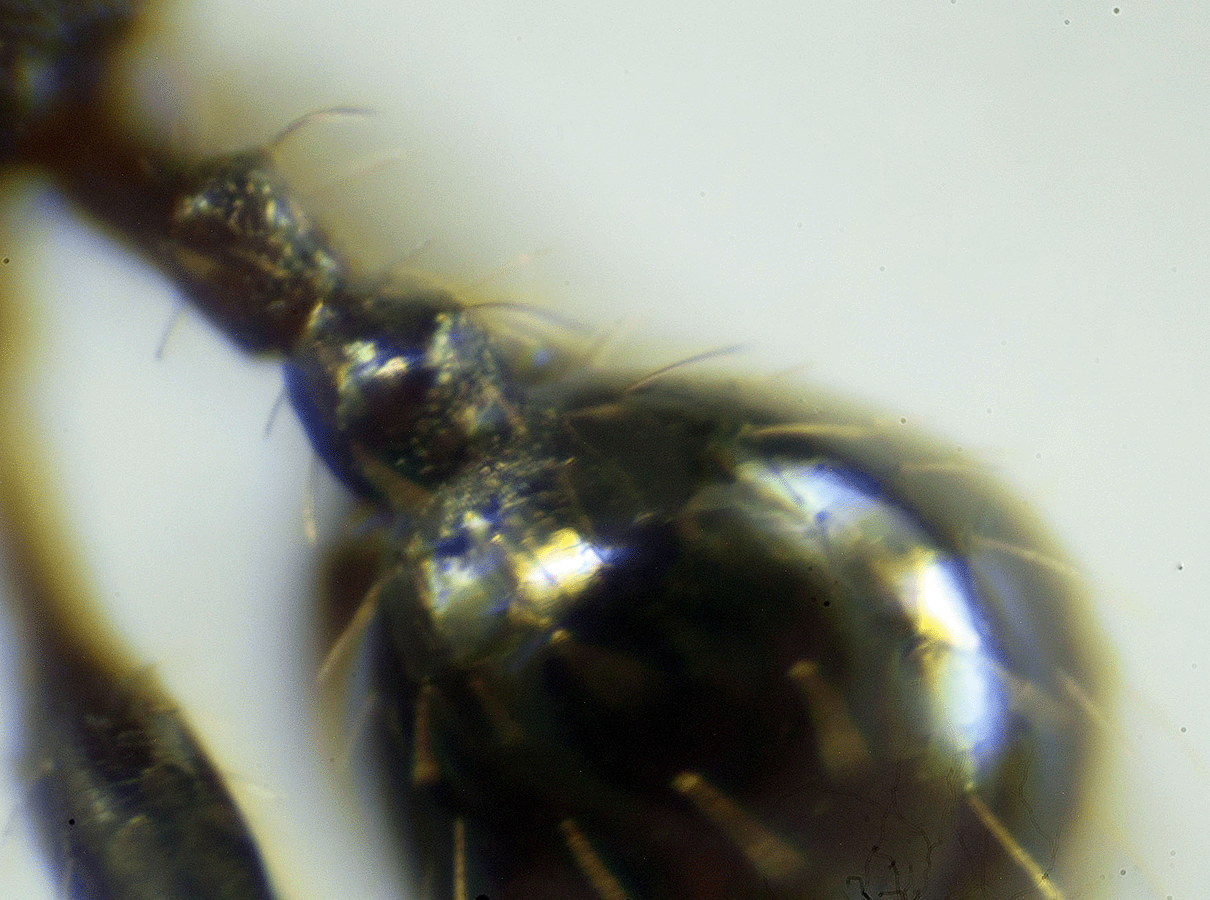
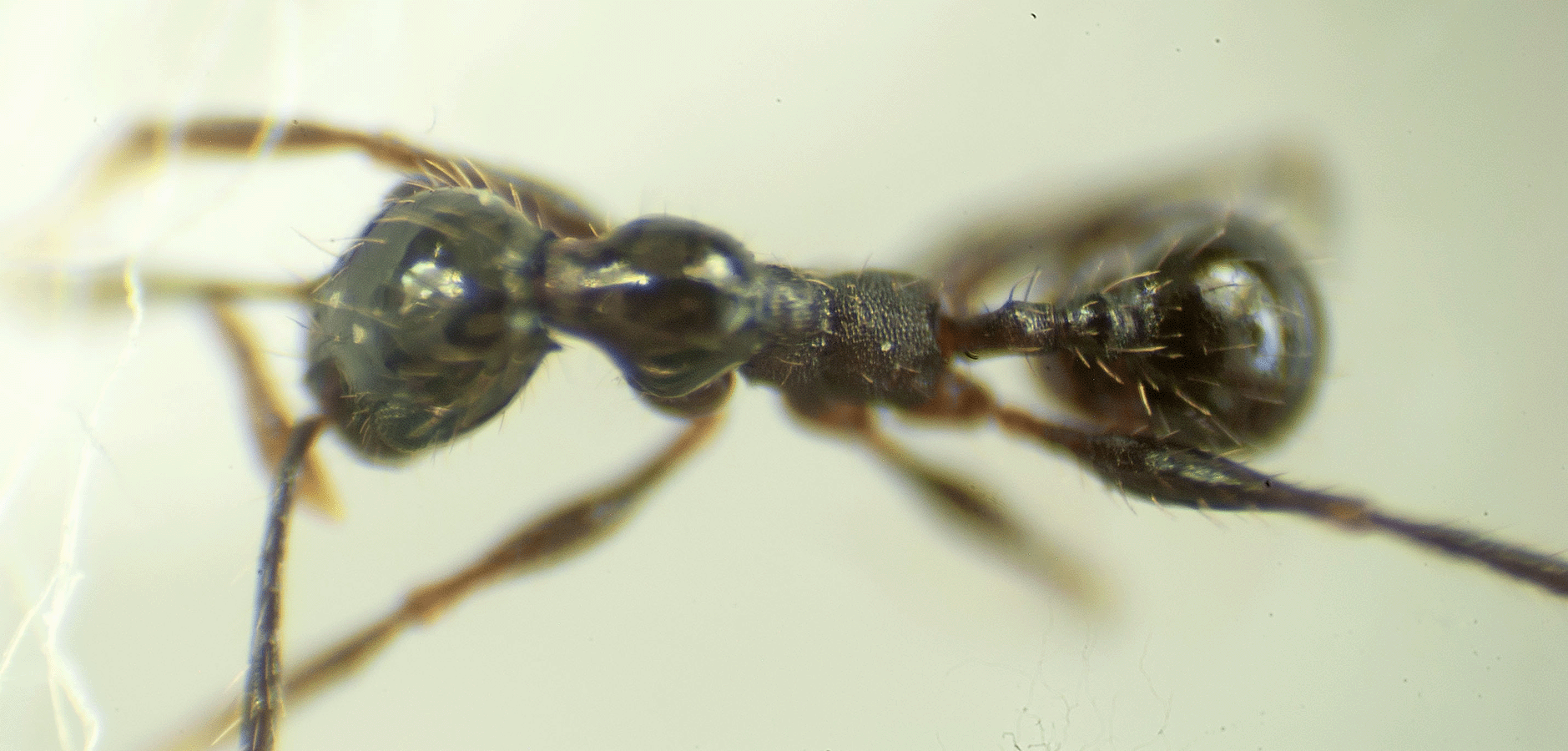
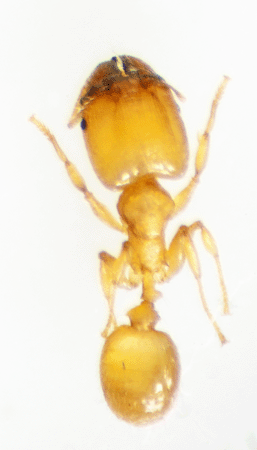 On December 30, 2015, this 3 mm long ant was caught in a sweep net used in low brush along the eastern gopher tortoise fence, just south of Smith Preserve Way.
On December 30, 2015, this 3 mm long ant was caught in a sweep net used in low brush along the eastern gopher tortoise fence, just south of Smith Preserve Way. 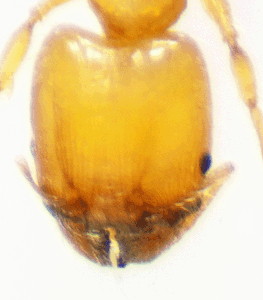 These photographs were created using photomicroscopy and sent for identification to <BugGuide.net>, sponsored by Iowa State University's Department of Entomology.
These photographs were created using photomicroscopy and sent for identification to <BugGuide.net>, sponsored by Iowa State University's Department of Entomology.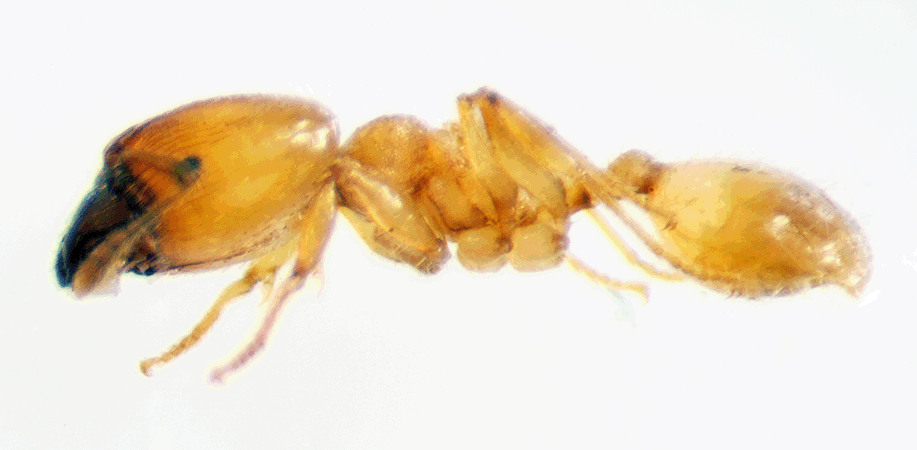 This species is a small, yellowish ant.
This species is a small, yellowish ant.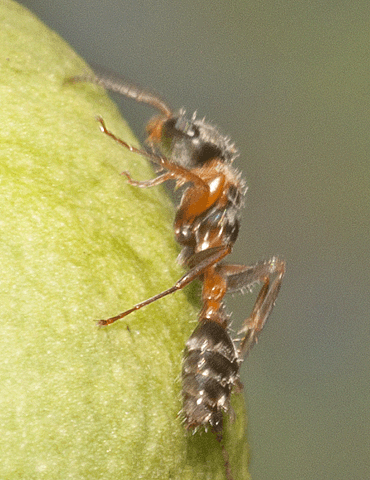
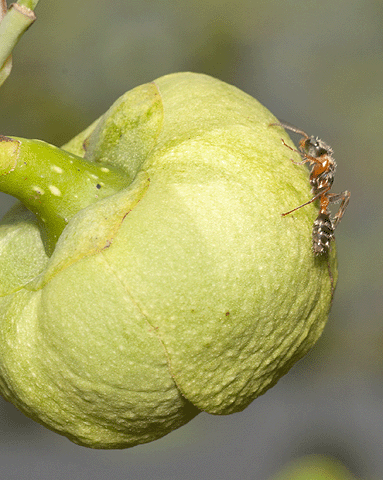
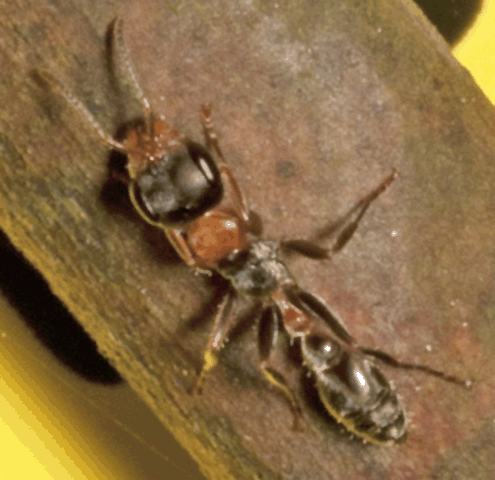
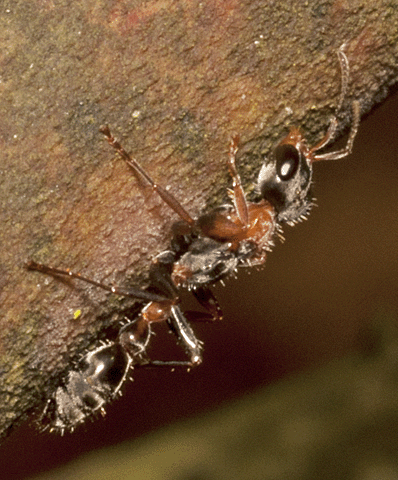
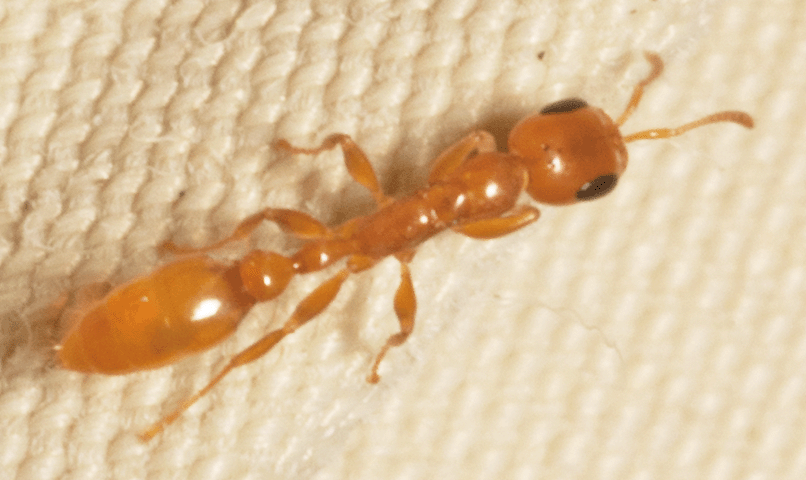 On February 24, 2014 this twig ant was discovered crawling on the pant leg of the photographer.
On February 24, 2014 this twig ant was discovered crawling on the pant leg of the photographer. 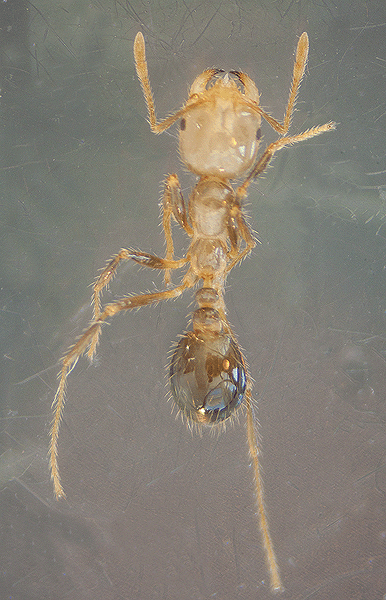
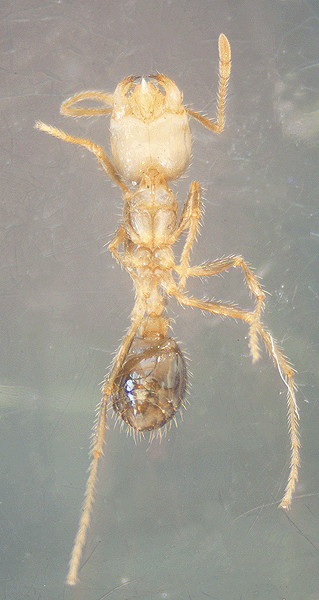
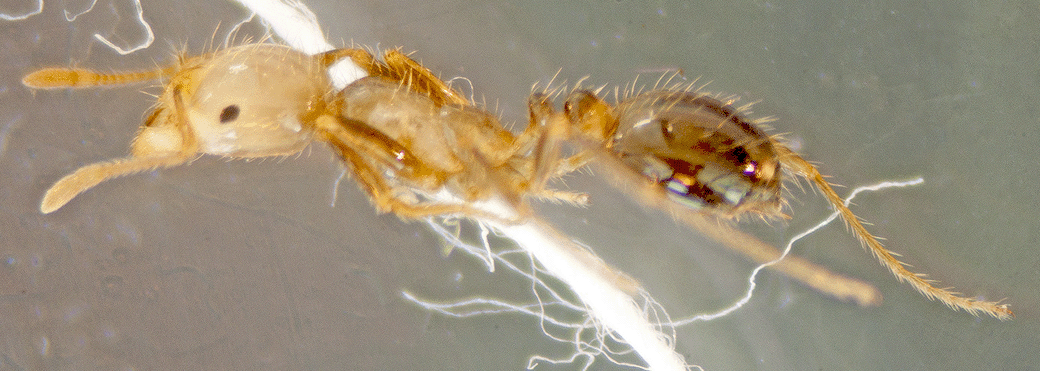
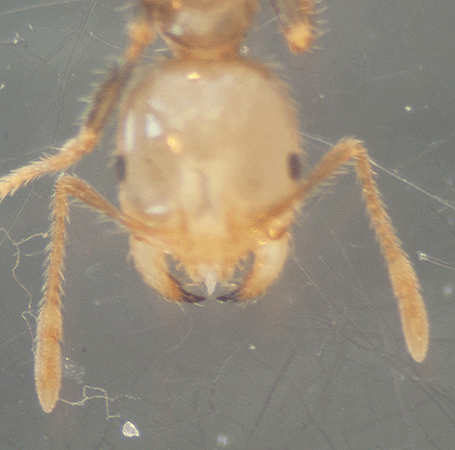
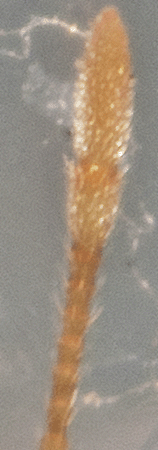
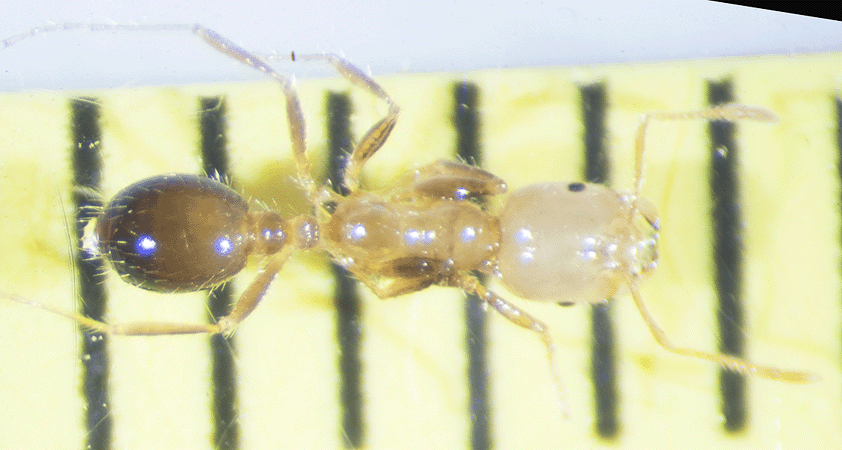
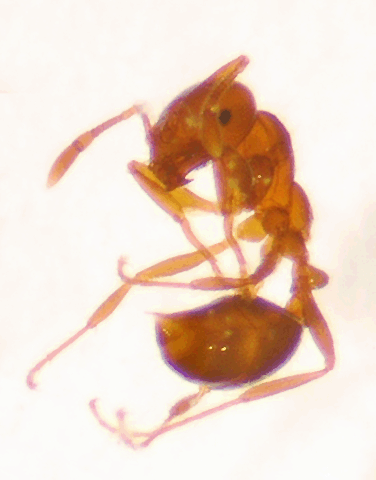
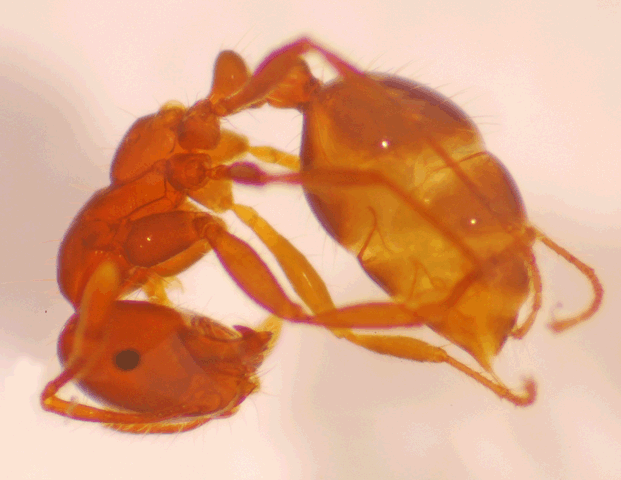
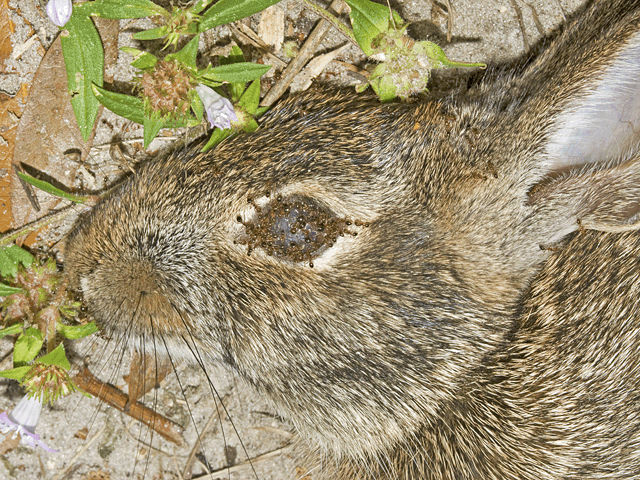
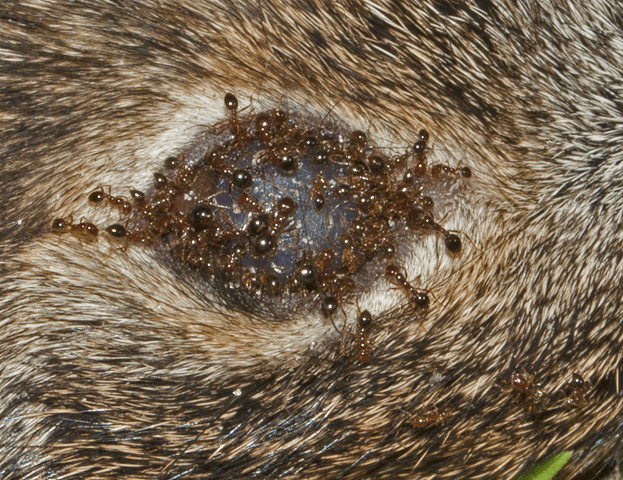
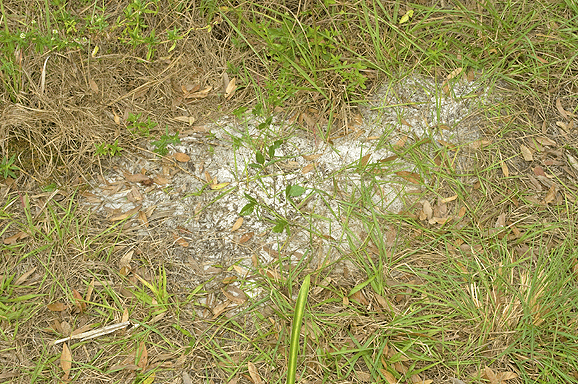
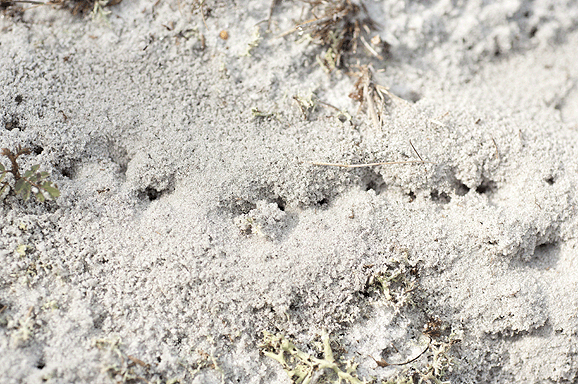
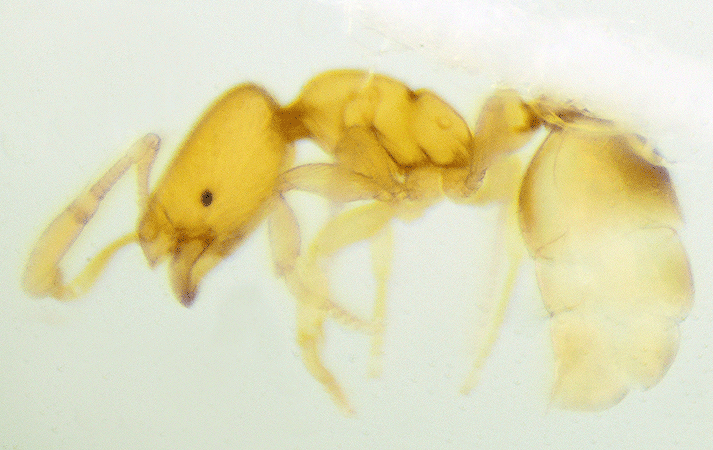
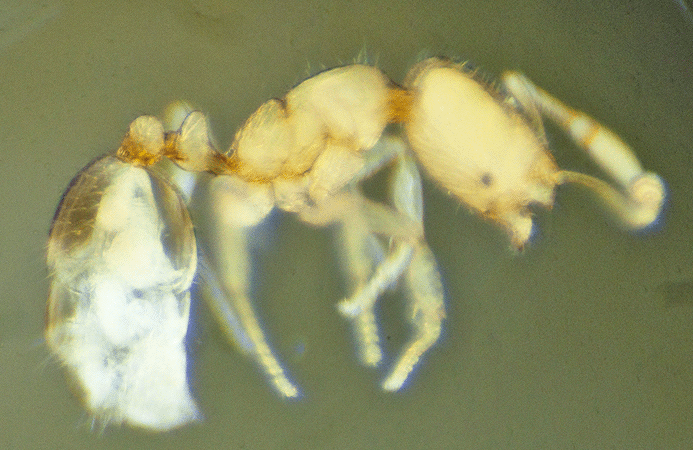
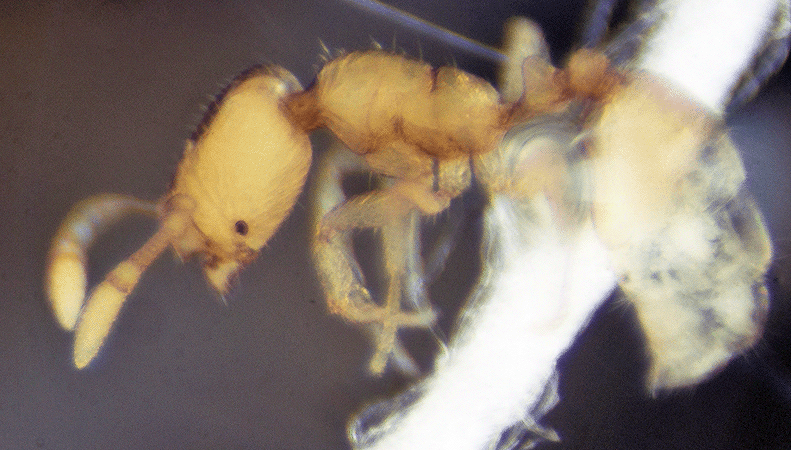
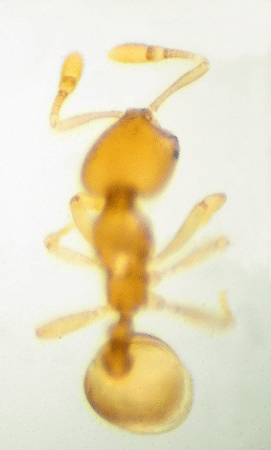
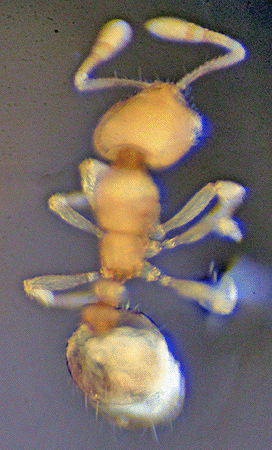
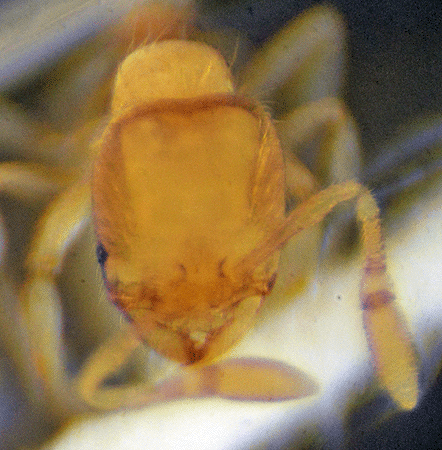 On February 13, 2018, the genus was identified by James C. Trager, Contributing Editor. Trager stated, "Solenopsis ... This is a Solenopsis thief ant. No way to ID to species without higher resolution photos."
On February 13, 2018, the genus was identified by James C. Trager, Contributing Editor. Trager stated, "Solenopsis ... This is a Solenopsis thief ant. No way to ID to species without higher resolution photos." 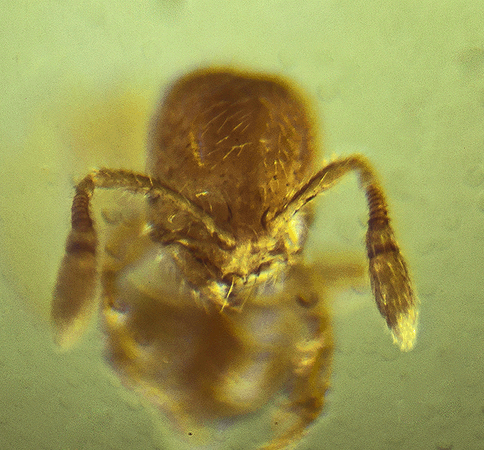
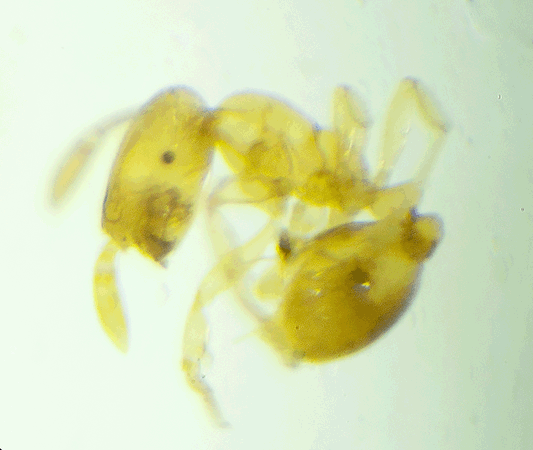
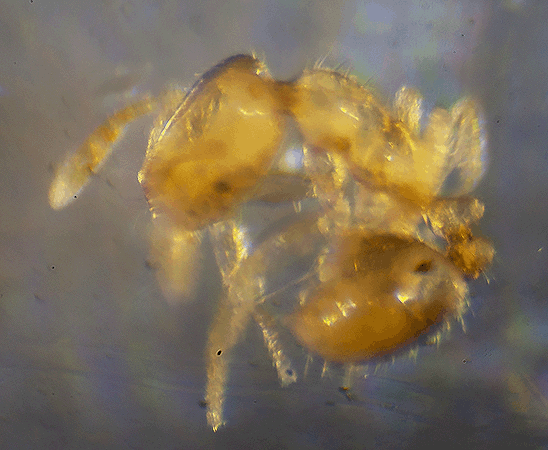
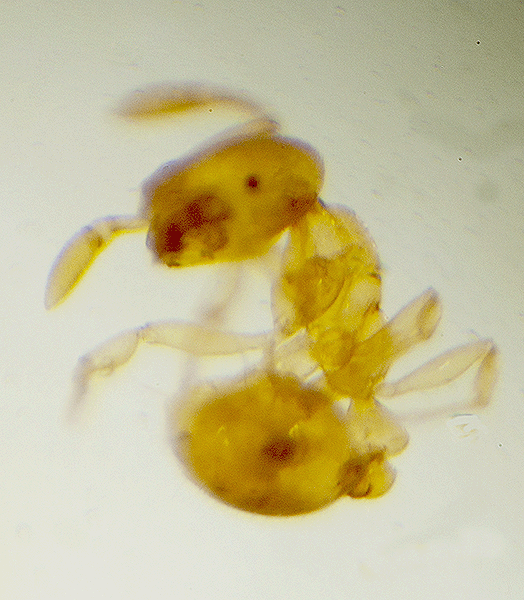
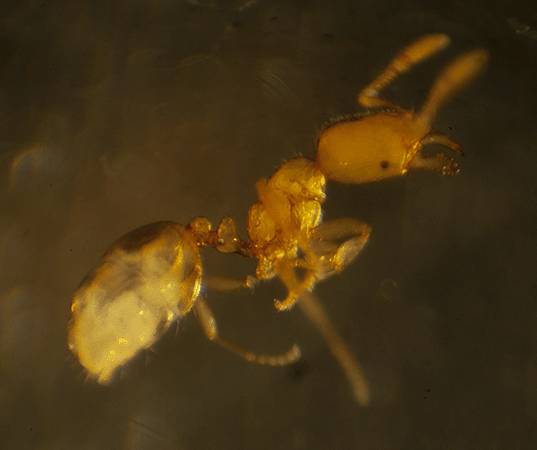
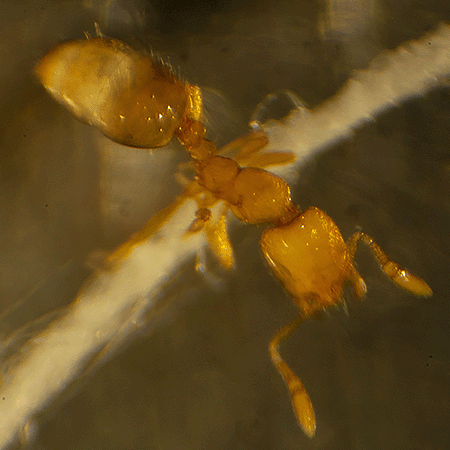
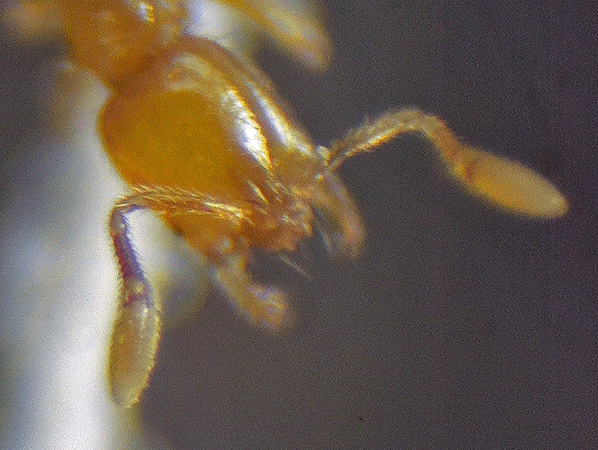
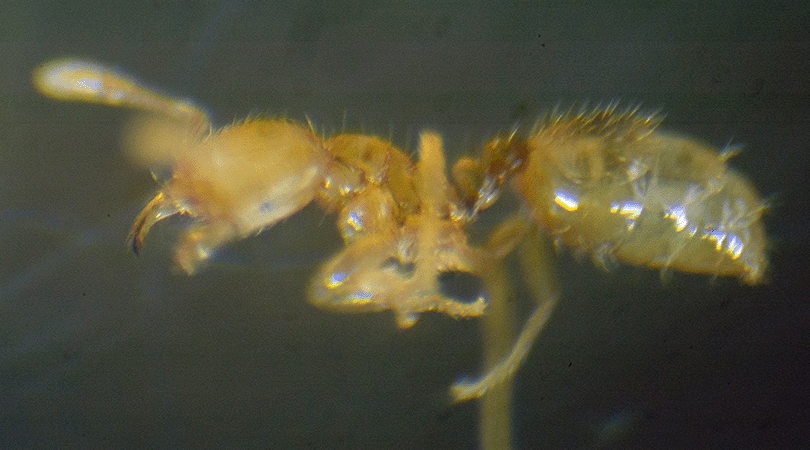
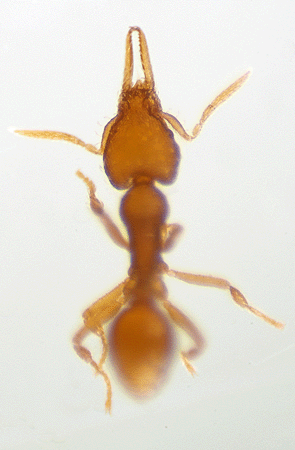
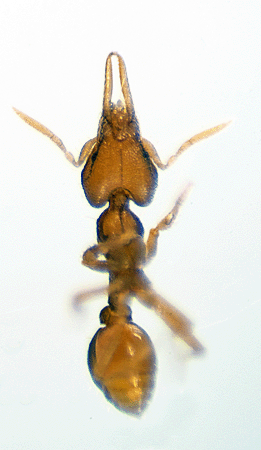
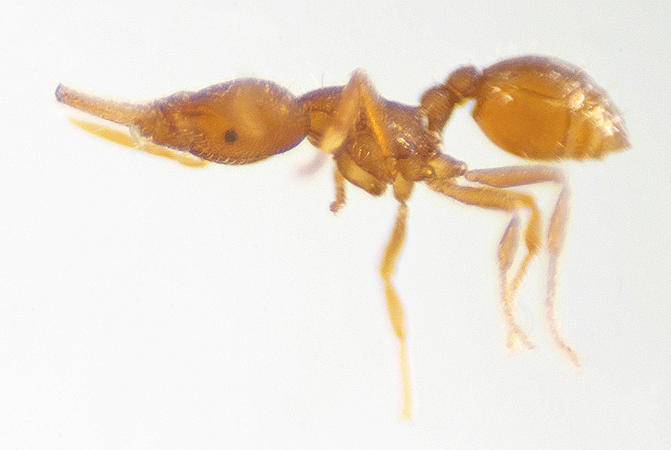
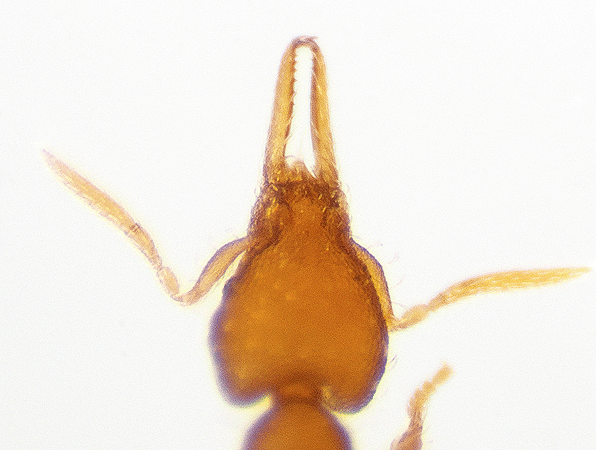
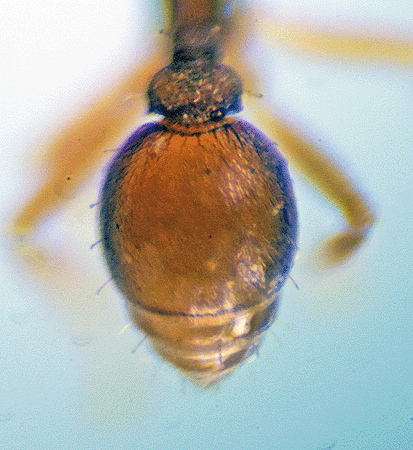
 On December 9, 2015, the 1.5 mm long individual at right and below was living in pine straw litter beneath a
On December 9, 2015, the 1.5 mm long individual at right and below was living in pine straw litter beneath a 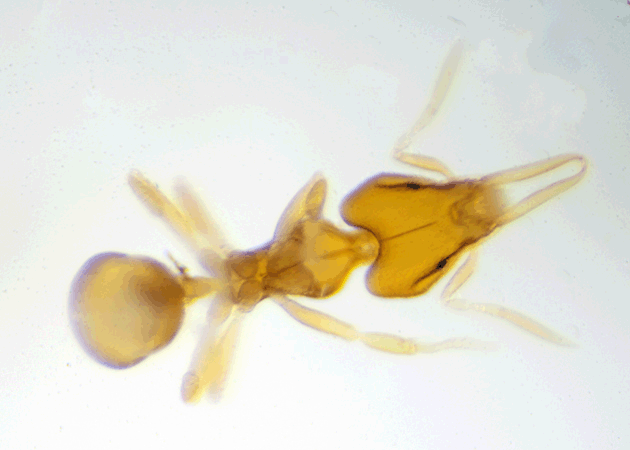
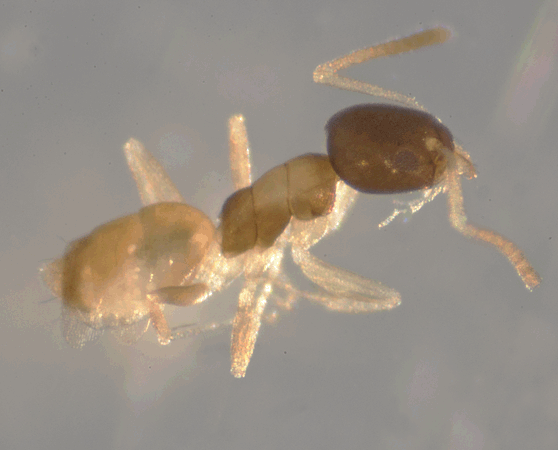 This 1.5 mm long individual was found on December 17, 2014, living in leaf litter in an oak hammock in the northeast corner of the Smith Preserve. It was extracted from the leaf litter using a Berlese Funnel; these photographs were produced using photomicroscopy.
This 1.5 mm long individual was found on December 17, 2014, living in leaf litter in an oak hammock in the northeast corner of the Smith Preserve. It was extracted from the leaf litter using a Berlese Funnel; these photographs were produced using photomicroscopy. 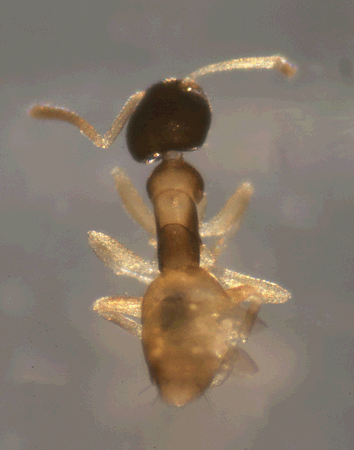 Ghost ants can be recognized by their dark brown head, brown abdomen, and pale legs and gaster (abdomen).
Ghost ants can be recognized by their dark brown head, brown abdomen, and pale legs and gaster (abdomen).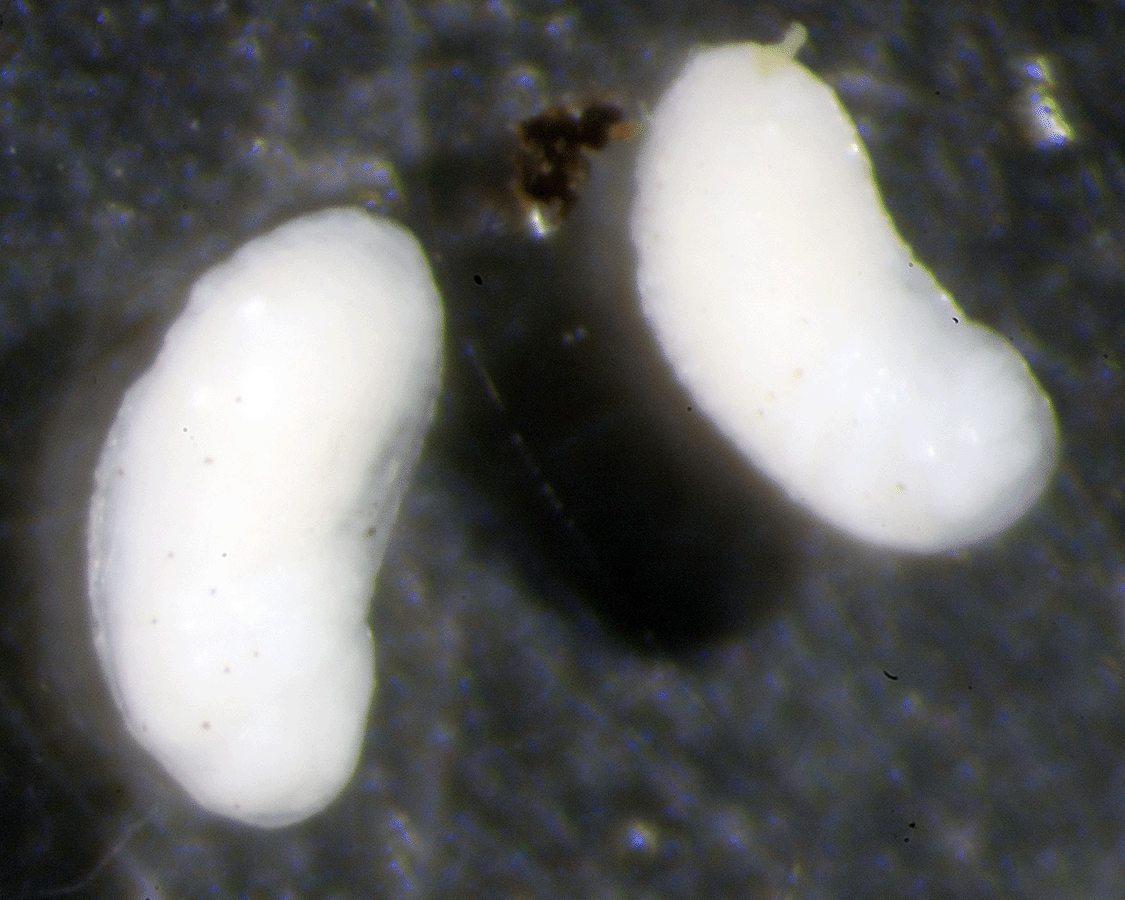
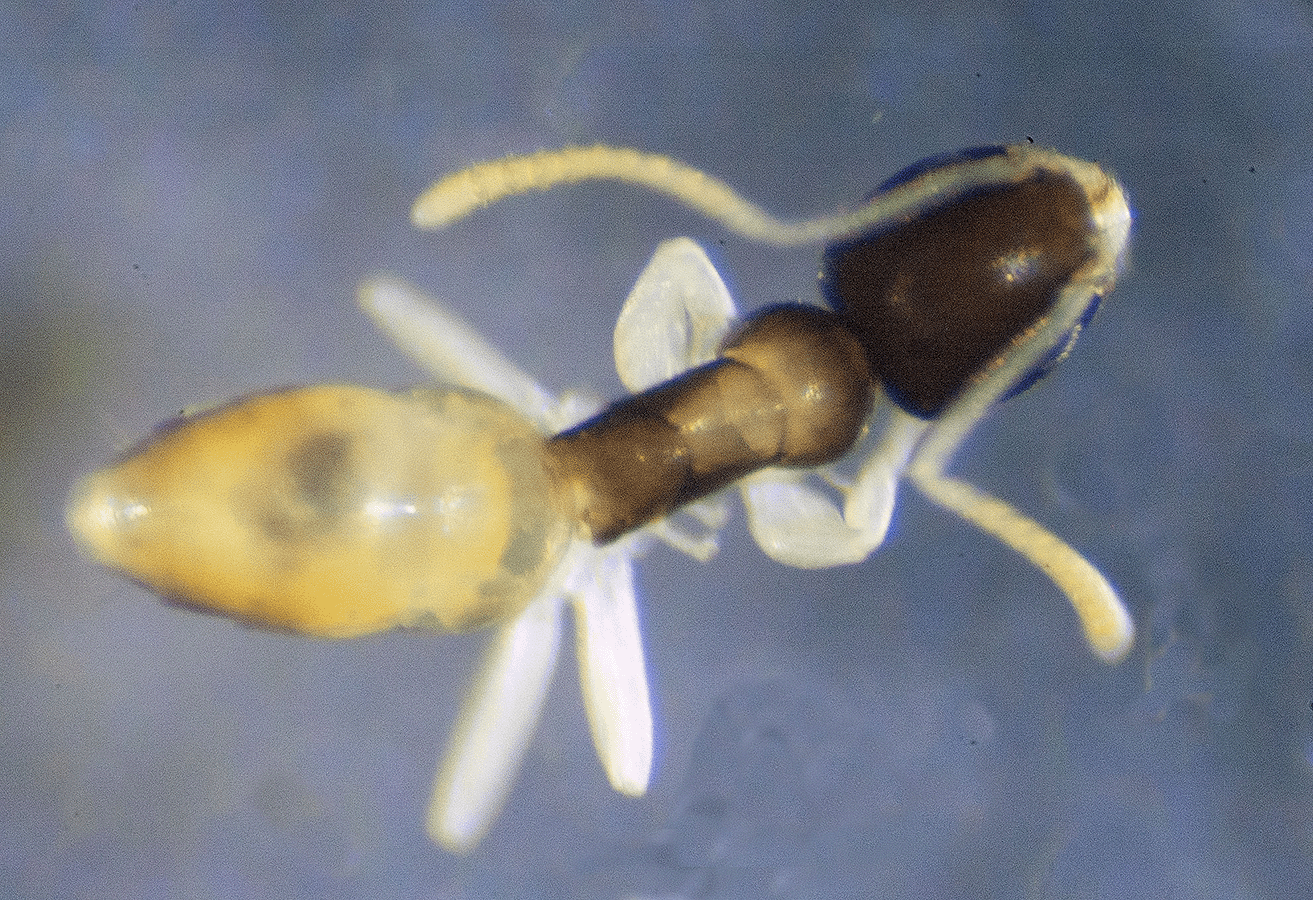
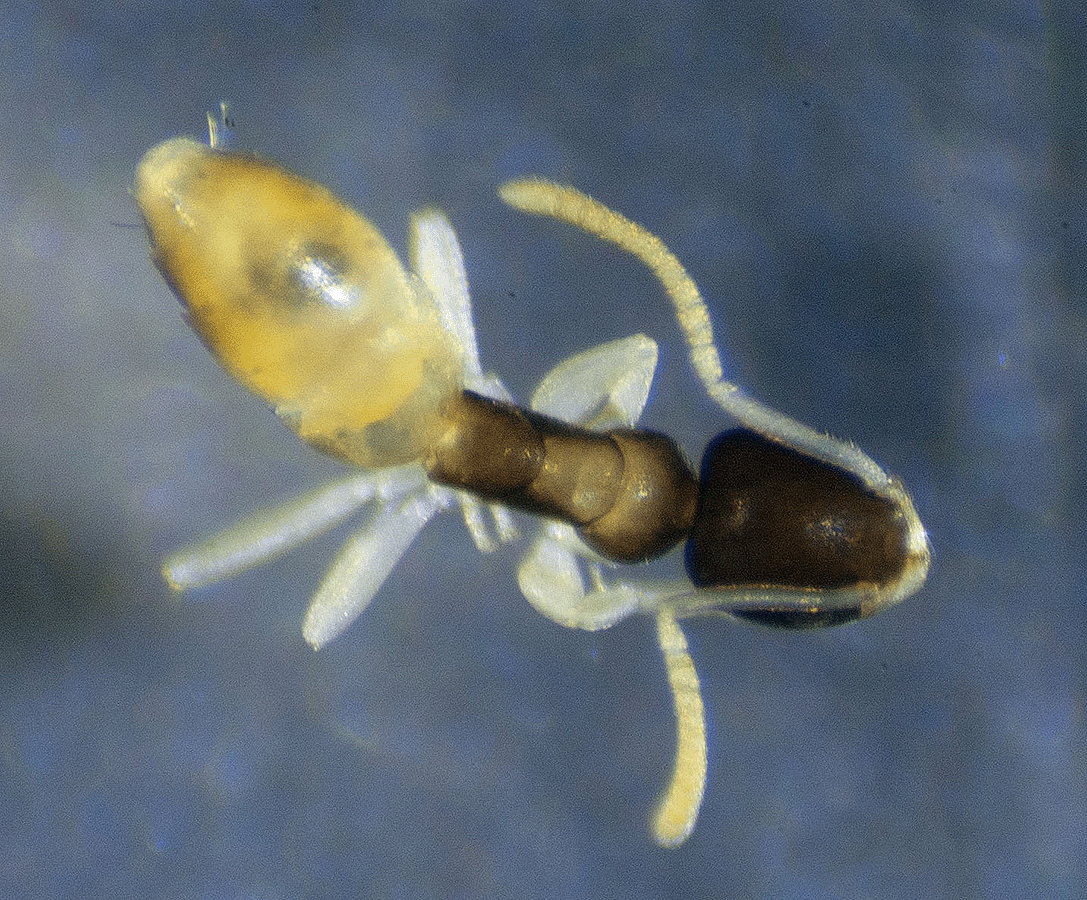
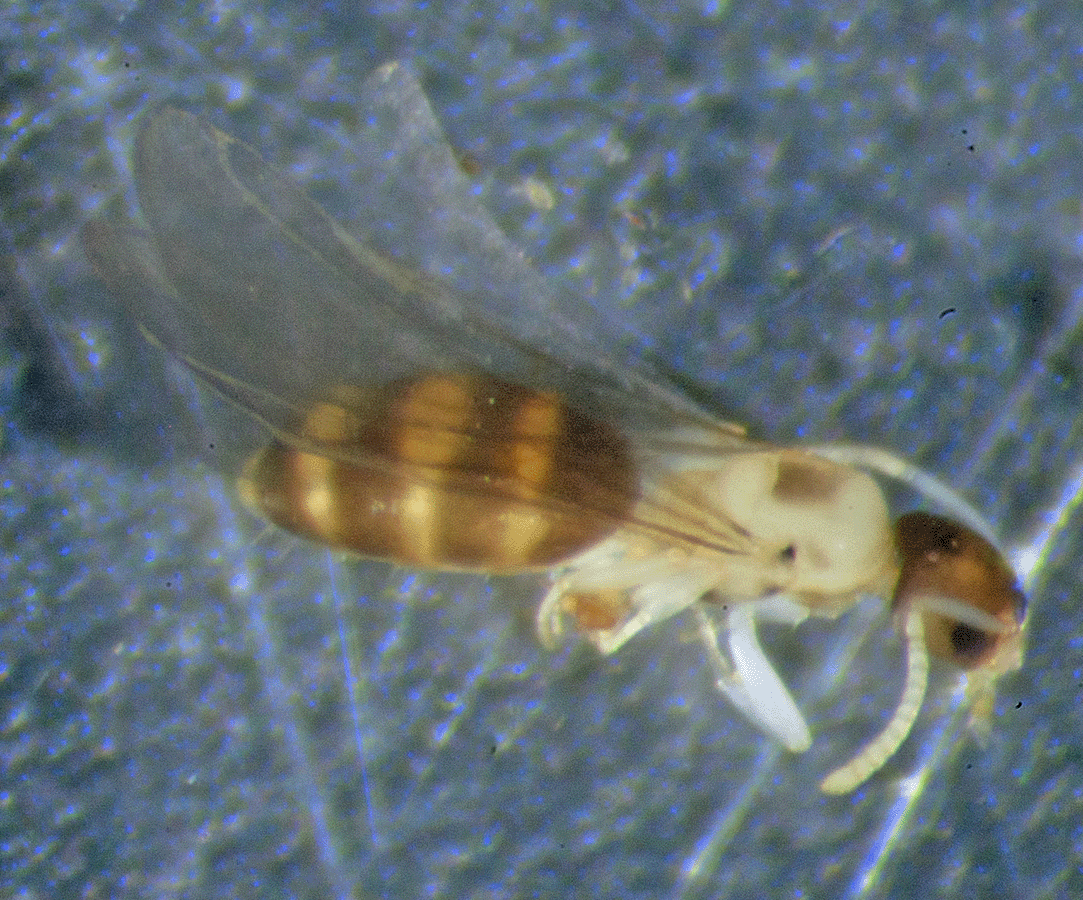
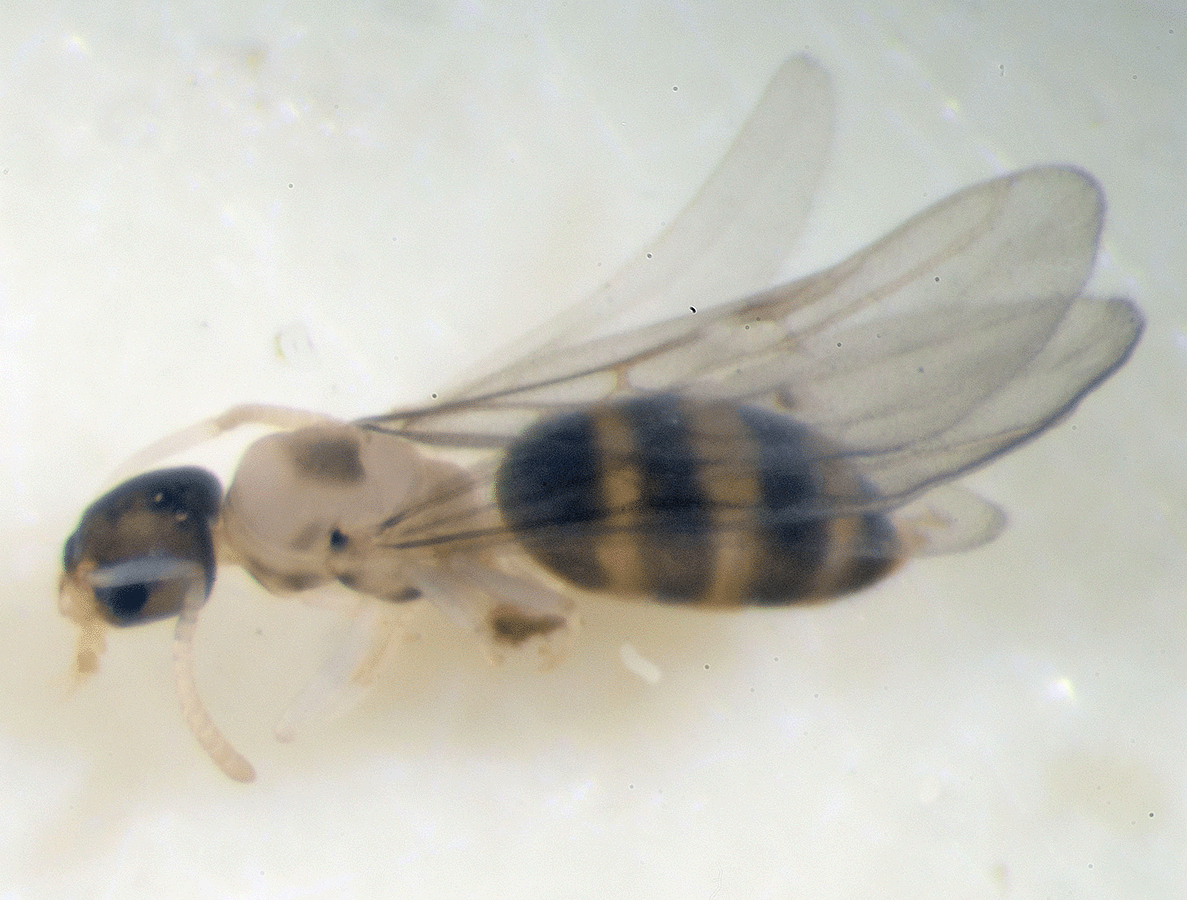
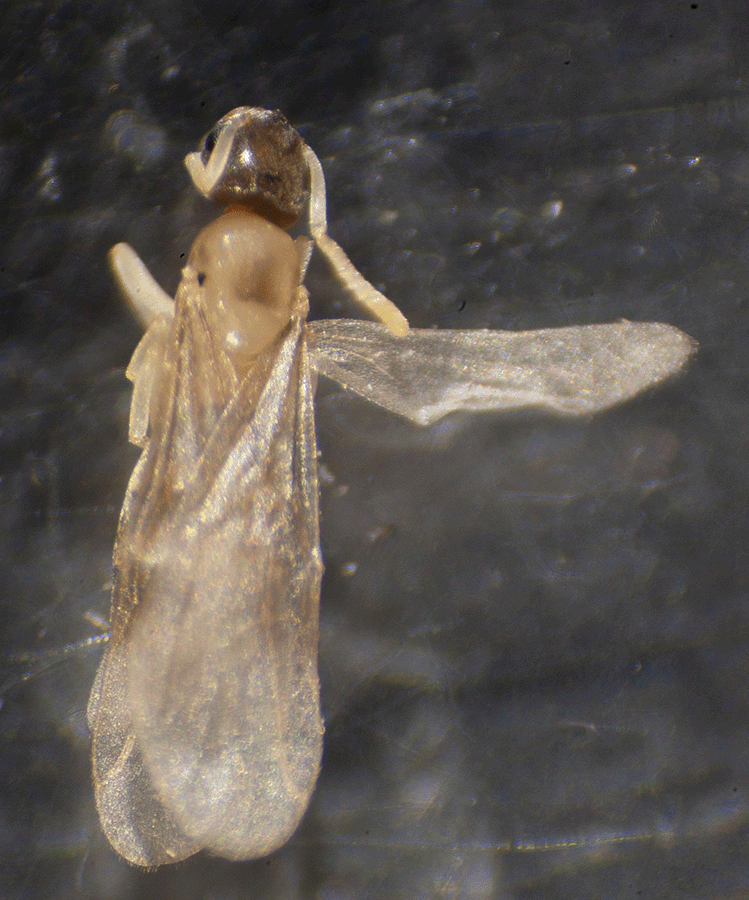
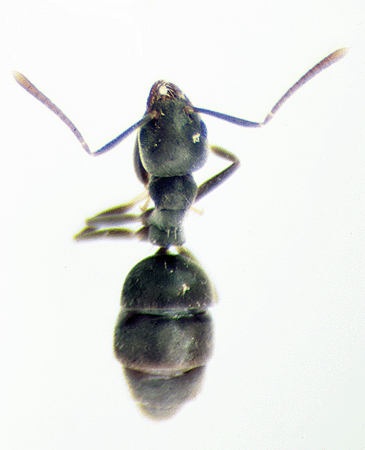
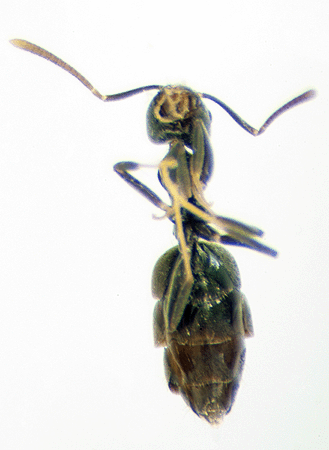
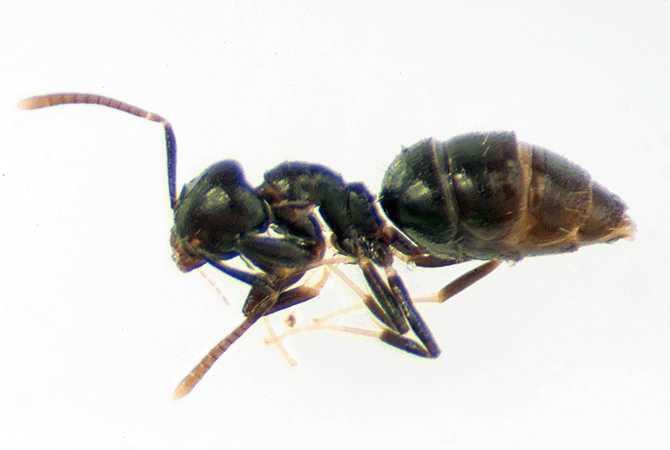 On December 2, 2015, this 3 mm long ant and others like it were tending aphids on a
On December 2, 2015, this 3 mm long ant and others like it were tending aphids on a 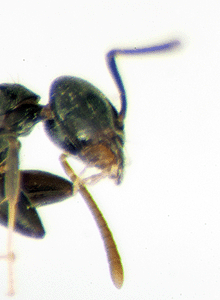
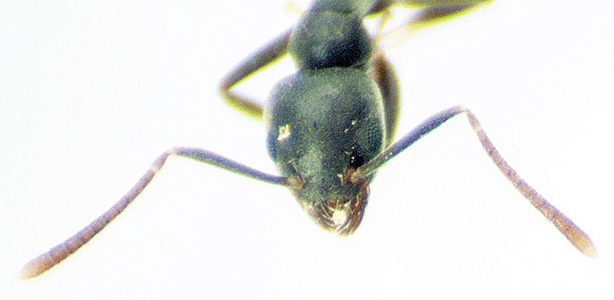
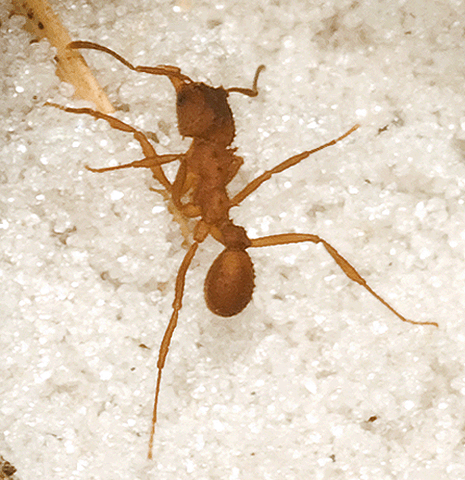
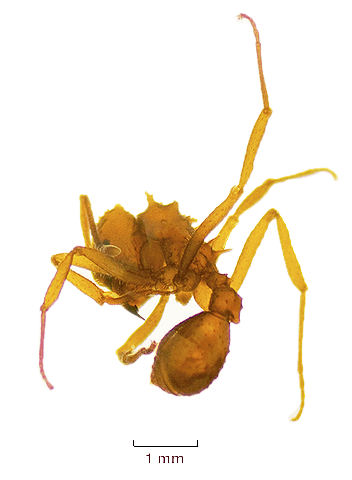 Family Formicidae, which includes all ants, is divided into subfamilies, which are further divided into tribes. Trachymyrmex septentrionalis is in Tribe Attini. All members of Tribe Attini are fungus-growing ants, and are referred to as attine ants. Fungus ants are ground-nesting species, common in open, sandy, upland areas.
Family Formicidae, which includes all ants, is divided into subfamilies, which are further divided into tribes. Trachymyrmex septentrionalis is in Tribe Attini. All members of Tribe Attini are fungus-growing ants, and are referred to as attine ants. Fungus ants are ground-nesting species, common in open, sandy, upland areas.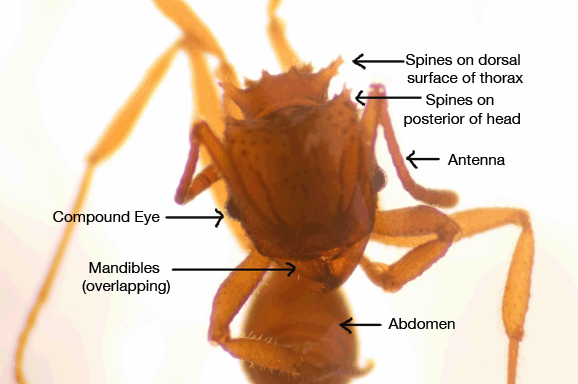 As shown in these photographs, Trachymyrmex septentrionalis has a dull brown integument (skin) with spines and tubercles (rounded nodules). Sometimes, individuals have a condition known as a "bloom." The "bloom" looks like whitish granular deposits scattered on the integument. The "bloom", which may be caused by crystalline wax, gives the ant a grayish, dusty appearance.
As shown in these photographs, Trachymyrmex septentrionalis has a dull brown integument (skin) with spines and tubercles (rounded nodules). Sometimes, individuals have a condition known as a "bloom." The "bloom" looks like whitish granular deposits scattered on the integument. The "bloom", which may be caused by crystalline wax, gives the ant a grayish, dusty appearance. 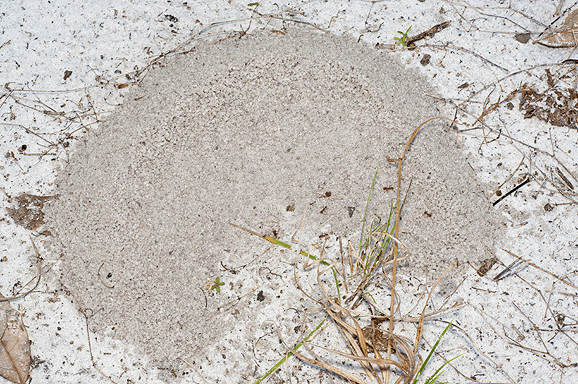
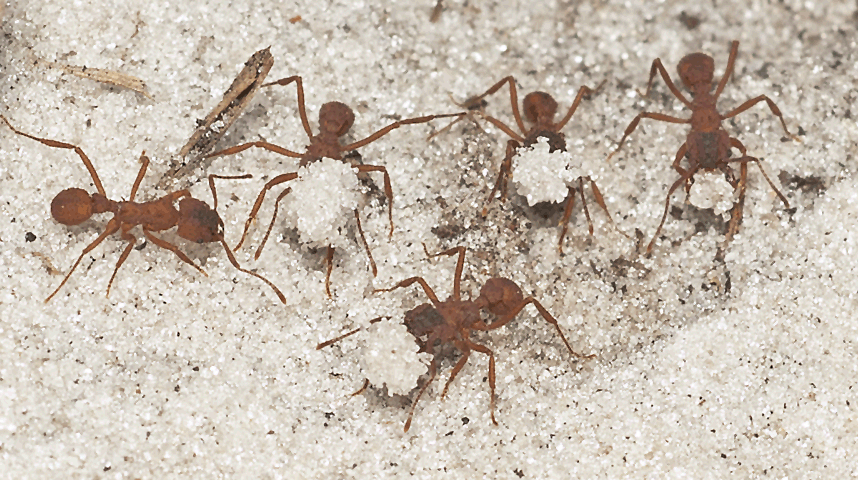
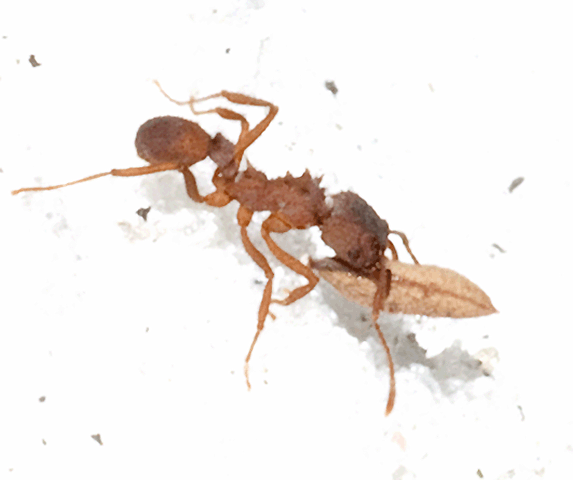
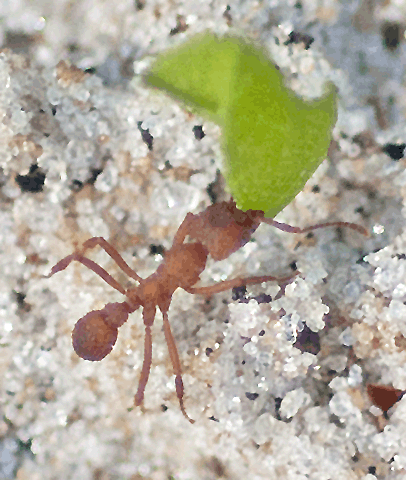
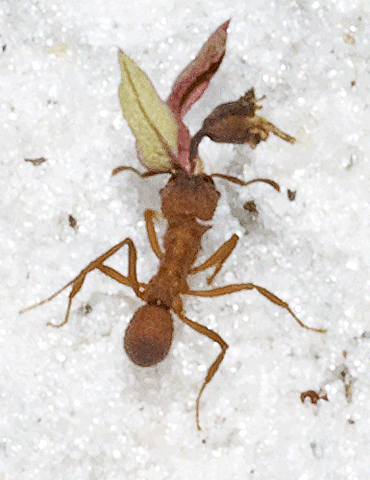
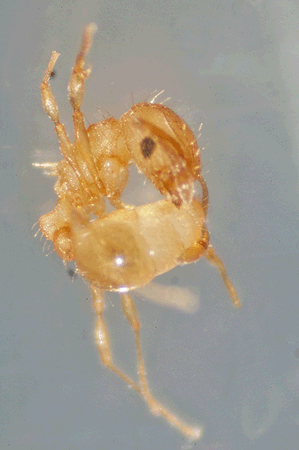
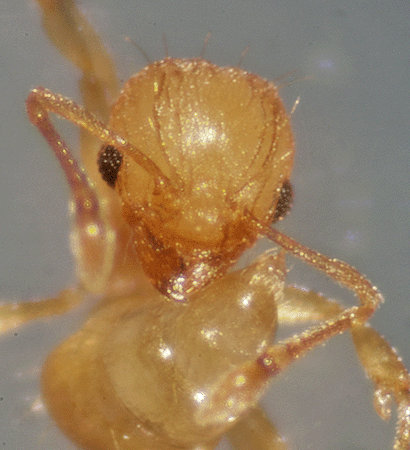

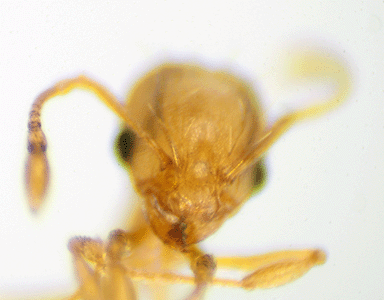
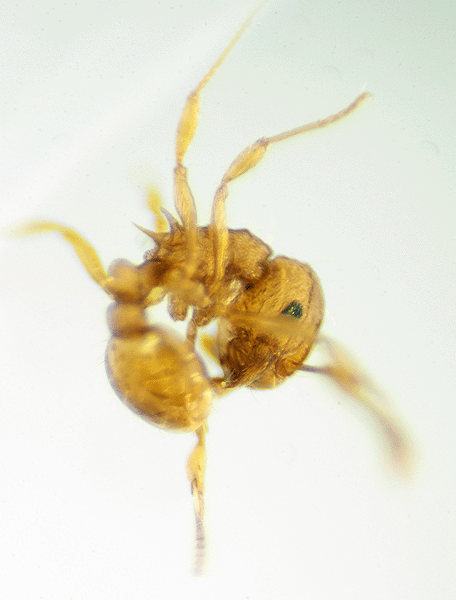
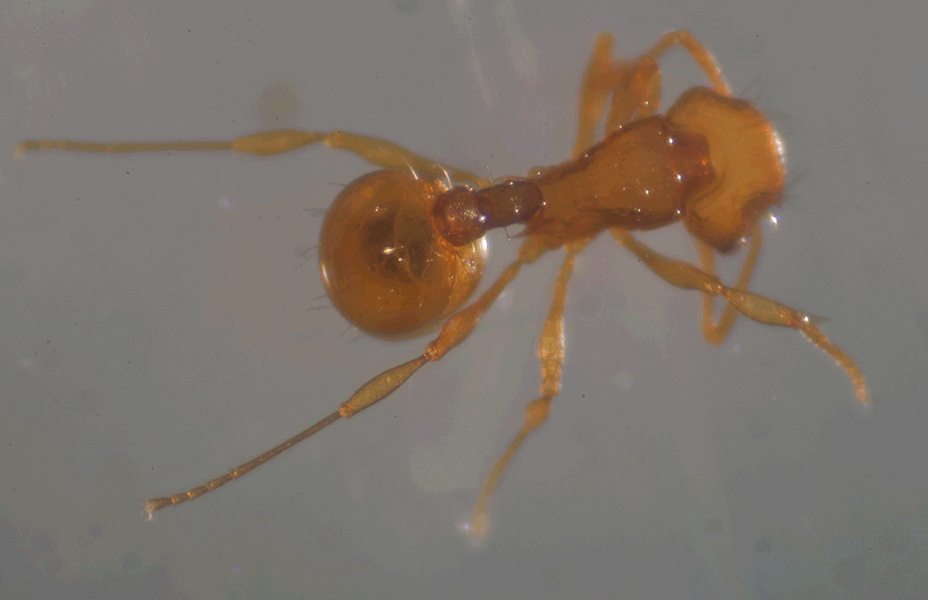
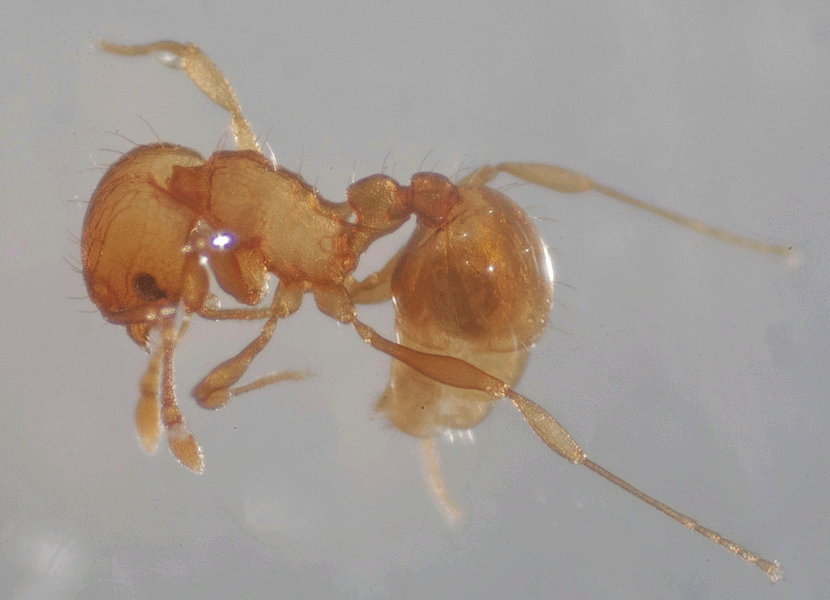
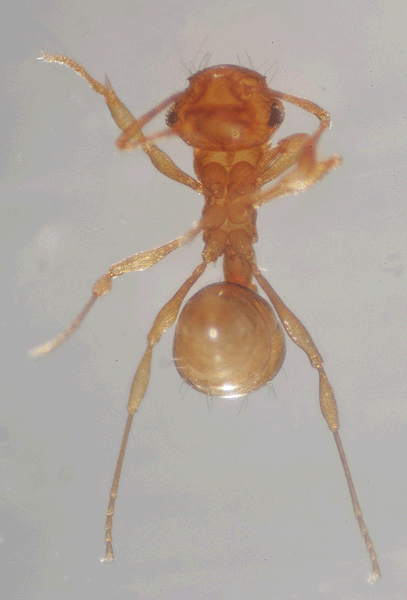
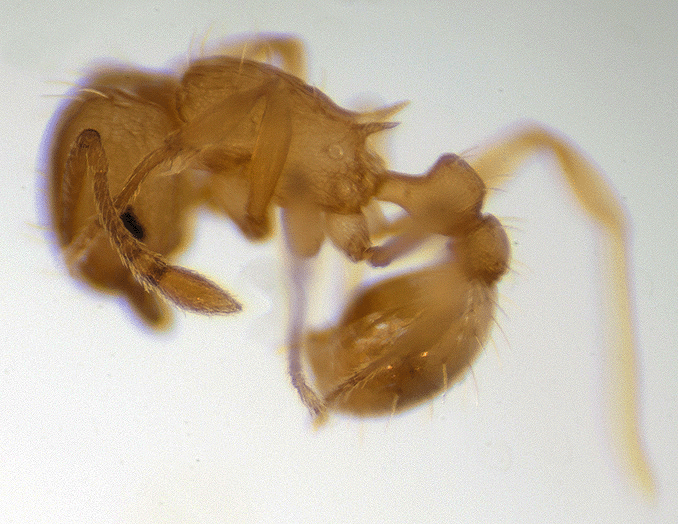



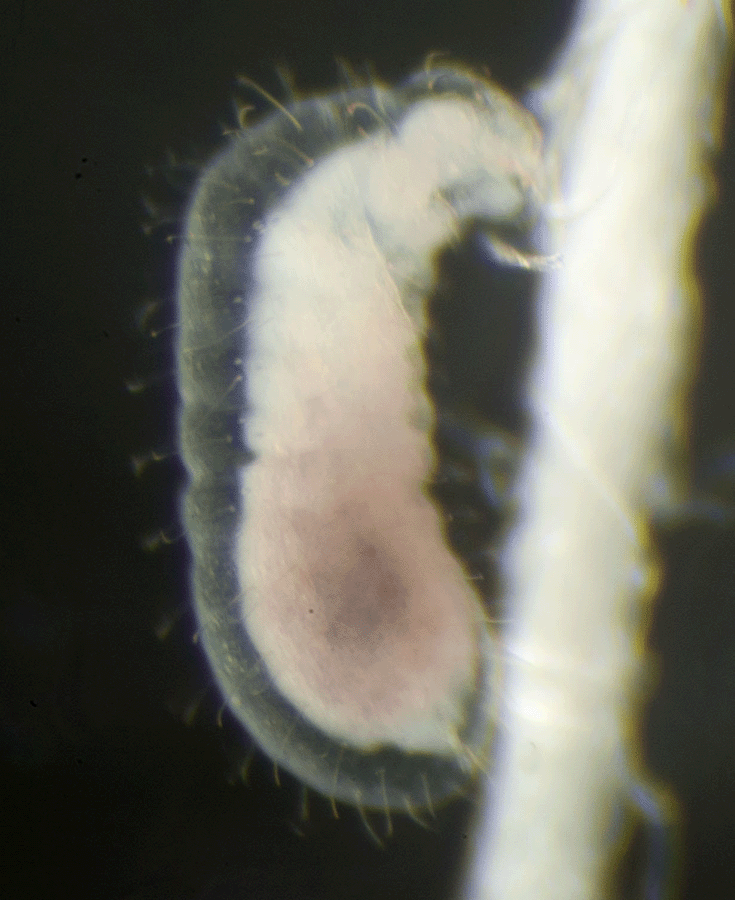
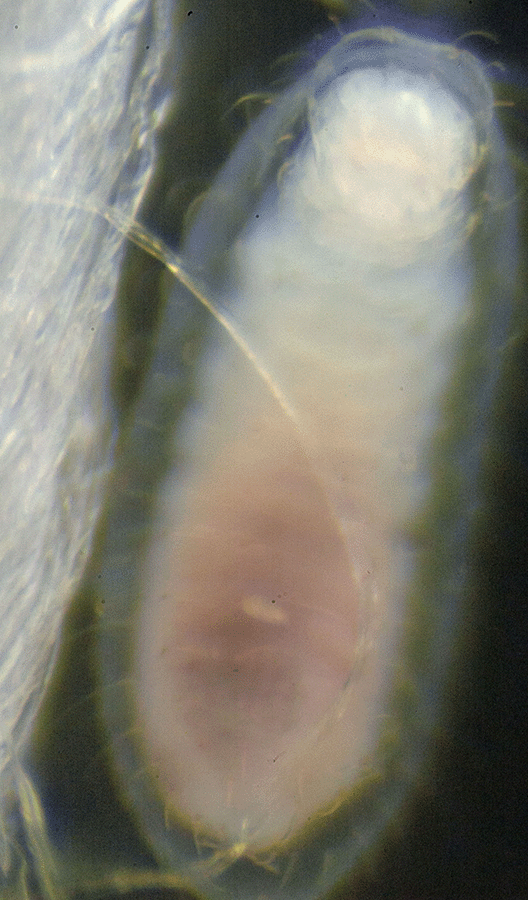
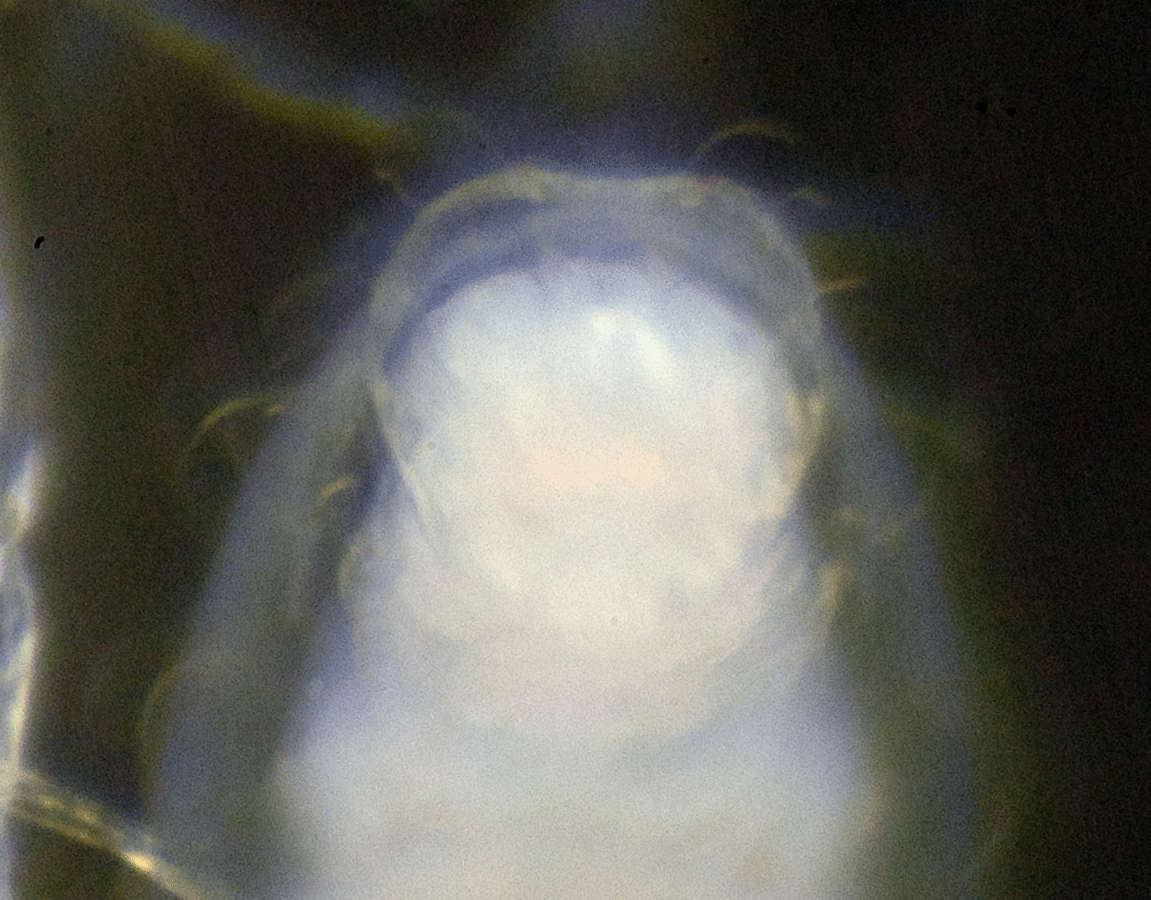
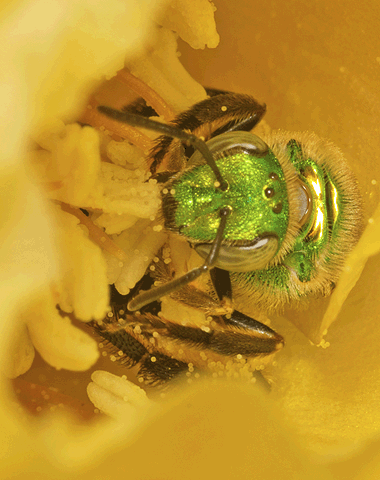
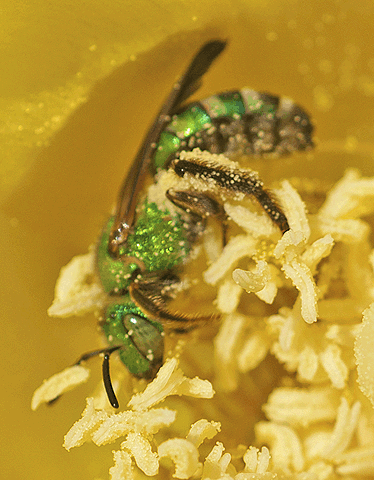
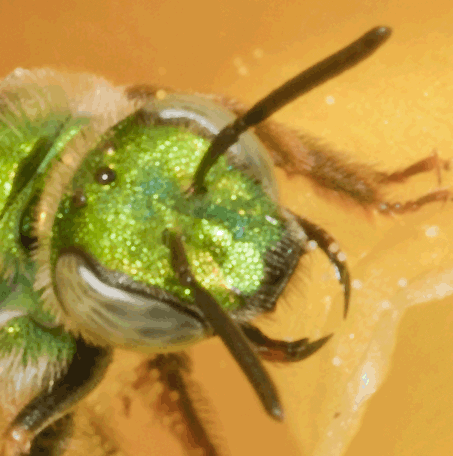 Shown at left, a female uses her mandibles to manipulate a bundle of pollen that she will later attach to her scopa (shown in the next two photographs.)
Shown at left, a female uses her mandibles to manipulate a bundle of pollen that she will later attach to her scopa (shown in the next two photographs.) 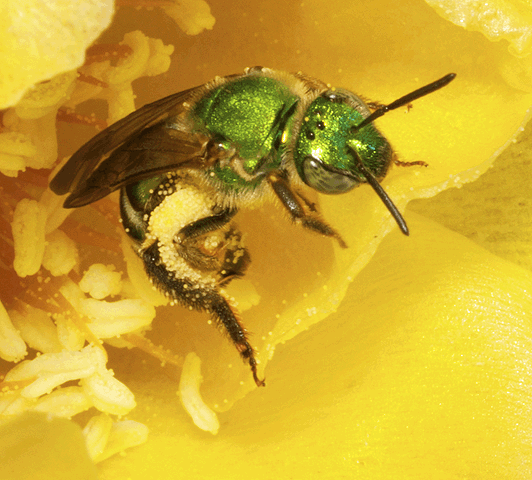
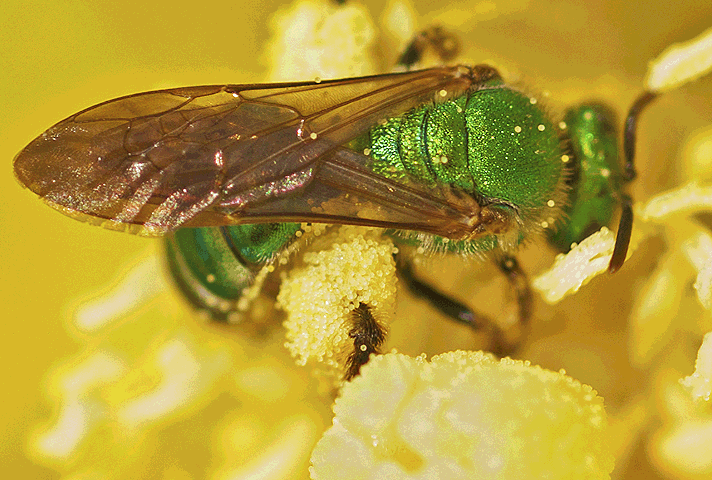
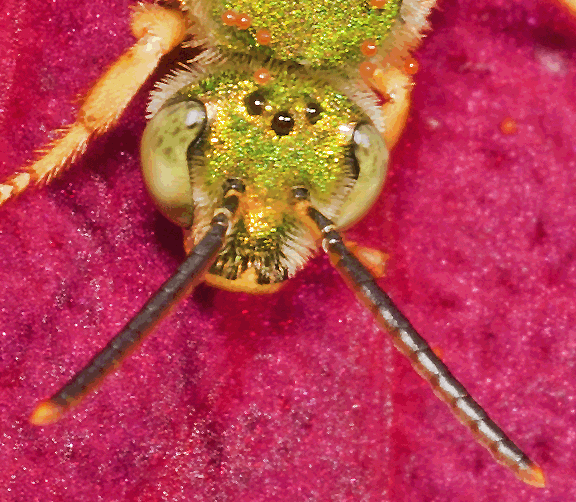
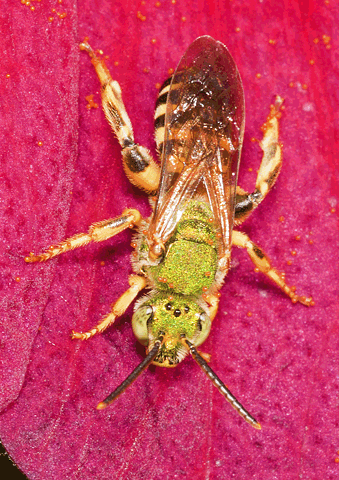
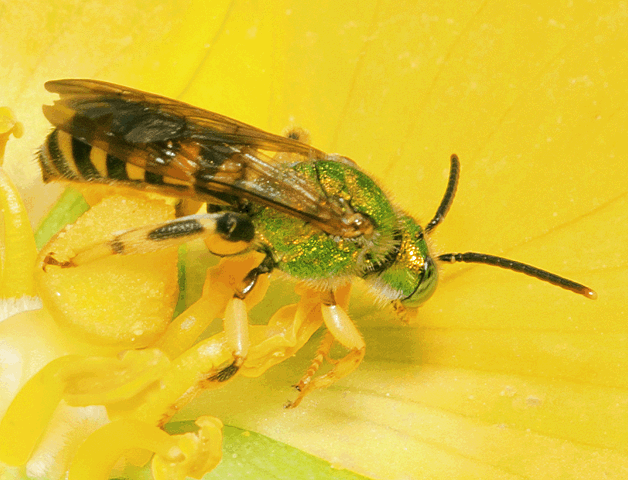
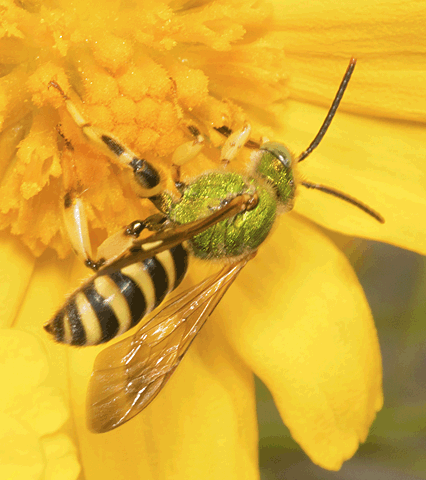
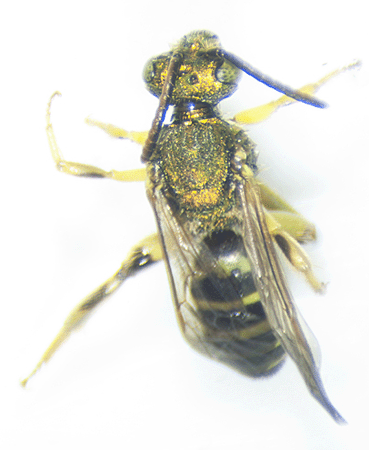
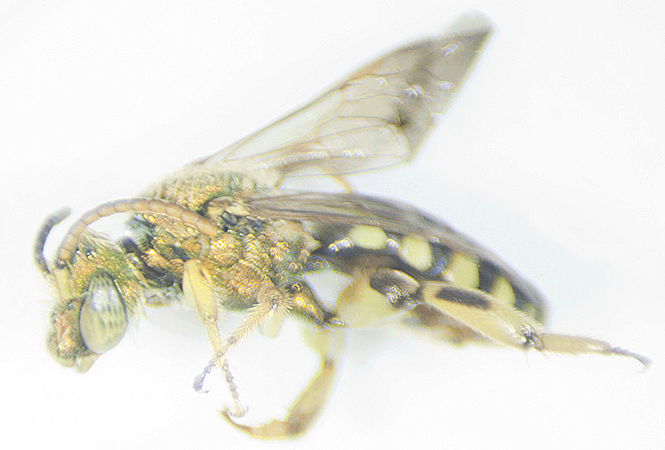
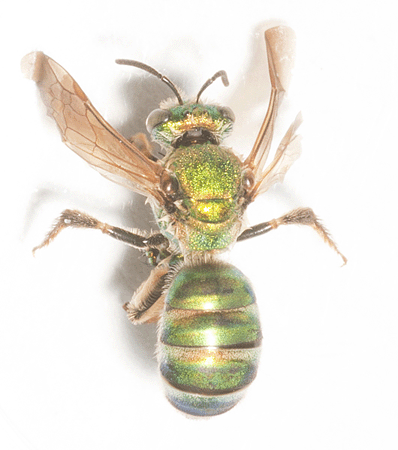
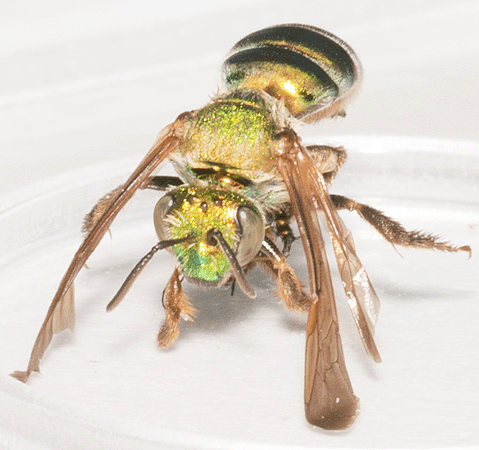
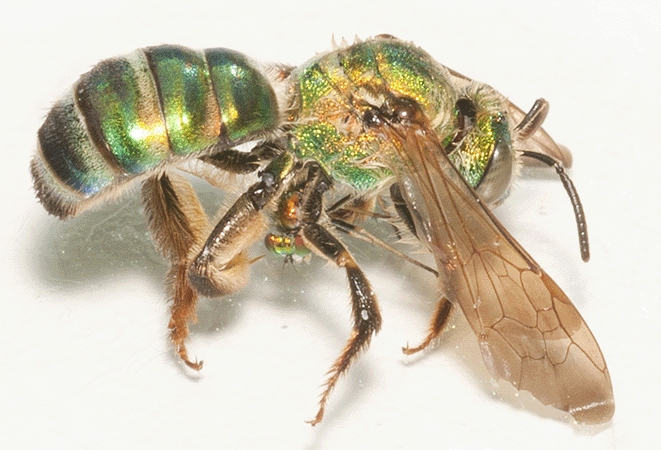
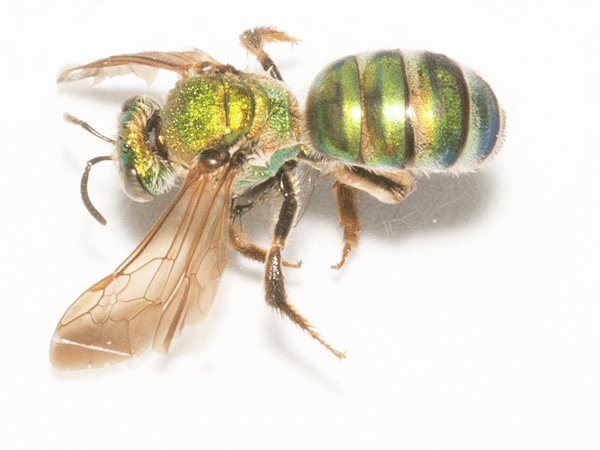
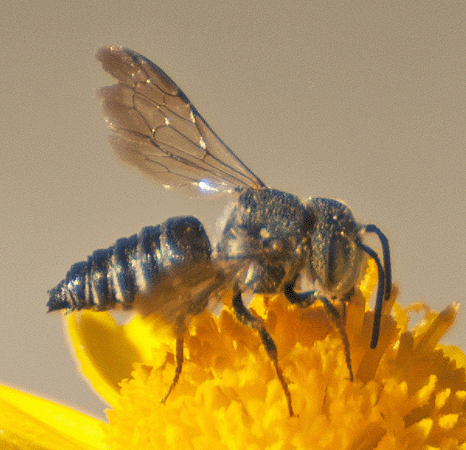 There are 46 species of Coelioxys in North America. All are cuckoo-leaf-cutter bees. The term cuckoo bee refers to a bee species that lays eggs in the nests of other bees. When one of its own eggs hatches, the larvae kills the host larvae and feeds on the pollen and nectar that was provisioned by the host female parent. This type of behavior classifies members of genus Coelioxys as cleptoparasites.
There are 46 species of Coelioxys in North America. All are cuckoo-leaf-cutter bees. The term cuckoo bee refers to a bee species that lays eggs in the nests of other bees. When one of its own eggs hatches, the larvae kills the host larvae and feeds on the pollen and nectar that was provisioned by the host female parent. This type of behavior classifies members of genus Coelioxys as cleptoparasites.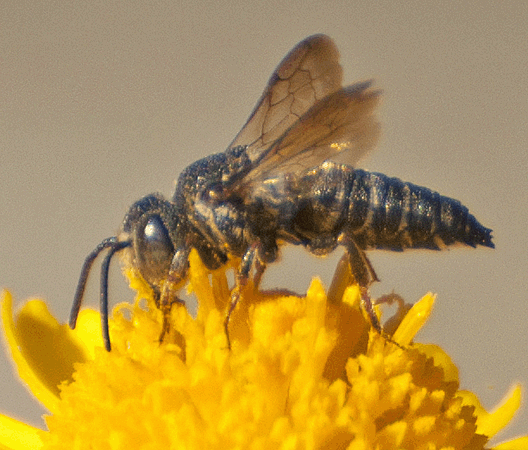 Adult males and females visit flowers for nectar. This individual was photographed on
Adult males and females visit flowers for nectar. This individual was photographed on 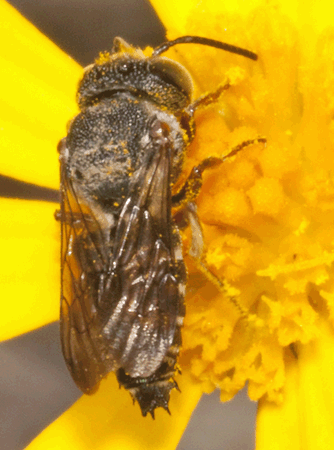 This bee was photographed as it collected pollen from
This bee was photographed as it collected pollen from 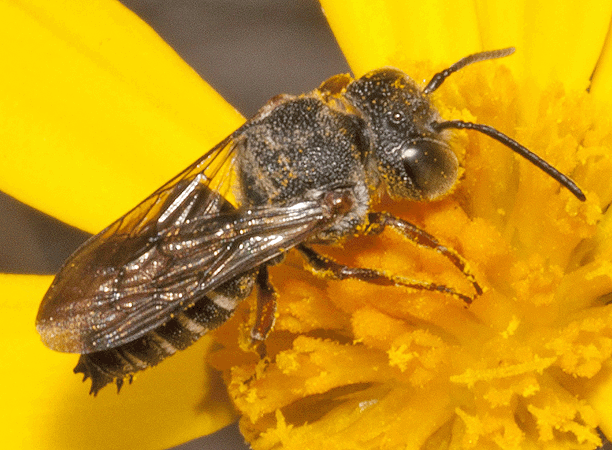
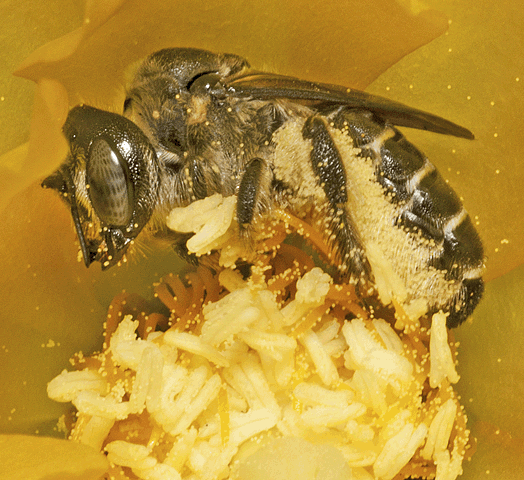 As shown in these photographs, Lithurgopsis gibbosa, like other leaf cutter bees, packs its pollen on scopa (stiff hairs) on the bottom of the abdomen.
As shown in these photographs, Lithurgopsis gibbosa, like other leaf cutter bees, packs its pollen on scopa (stiff hairs) on the bottom of the abdomen. 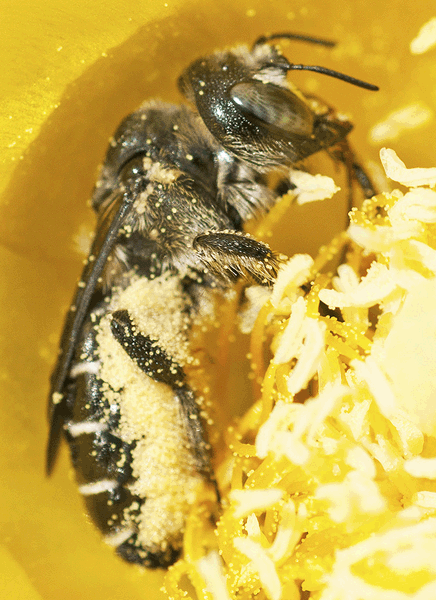
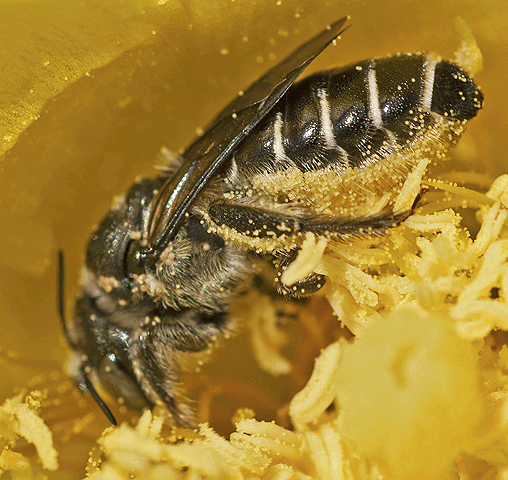
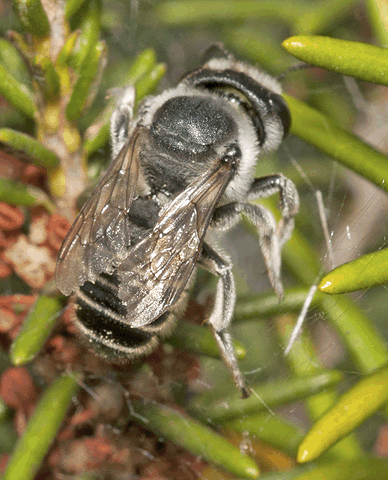 This bee was identified from these photographs by Keng-Lou James Hung (Contributing Editor for <BugGuide.Net>, hosted by Iowa State University Entomology) on July 31, 2013 as genus Megachile. On February 28, 2014, the species was identified as M. pseudobrevis by John S. Ascher, another Contributing Editor of the website.
This bee was identified from these photographs by Keng-Lou James Hung (Contributing Editor for <BugGuide.Net>, hosted by Iowa State University Entomology) on July 31, 2013 as genus Megachile. On February 28, 2014, the species was identified as M. pseudobrevis by John S. Ascher, another Contributing Editor of the website. 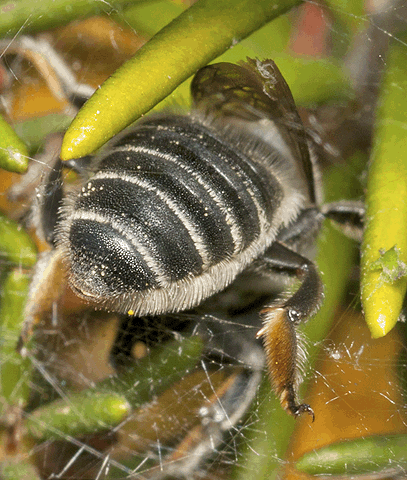
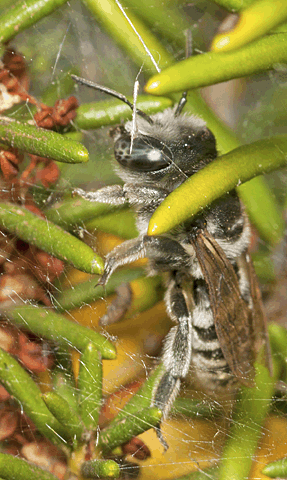
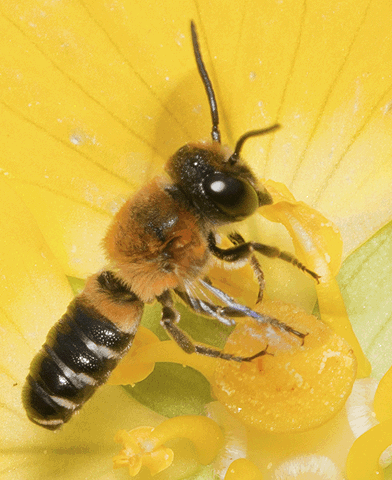
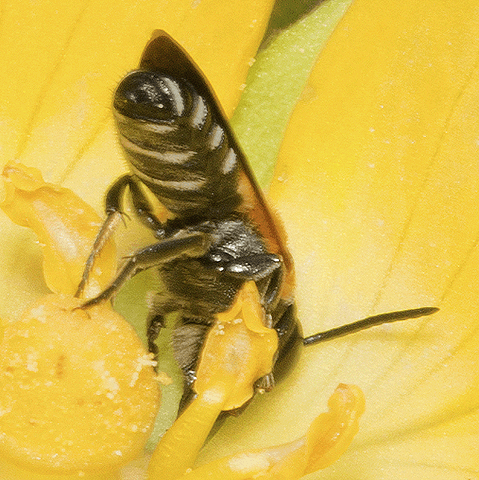
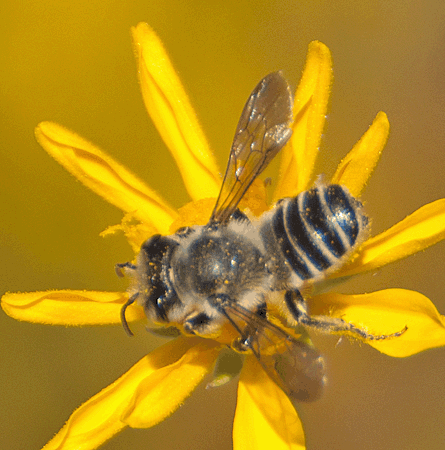
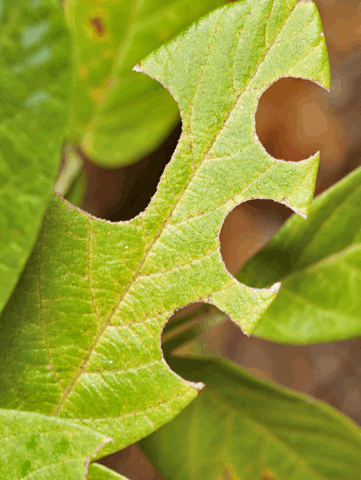
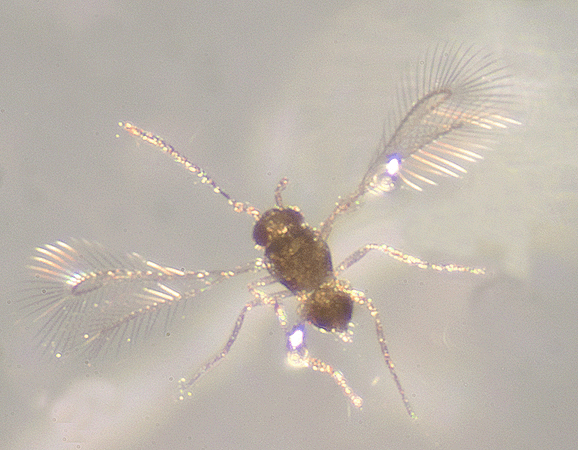 Family Mymaridae are commonly known as fairyflies or fairy wasps because of their very small size.
Family Mymaridae are commonly known as fairyflies or fairy wasps because of their very small size. 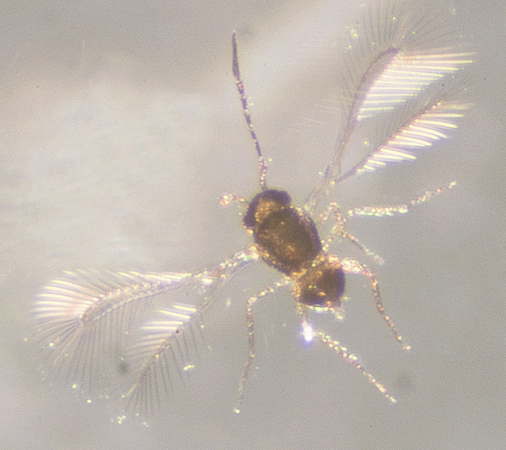 The .3mm long fairyfly wasp shown here was found floating in alcohol in a Berlese funnel sample of leaf litter collected on December 19, 2014 under a citrus tree in the northeast hammock of the Smith Preserve. The photograph was created using photomicroscopy.
The .3mm long fairyfly wasp shown here was found floating in alcohol in a Berlese funnel sample of leaf litter collected on December 19, 2014 under a citrus tree in the northeast hammock of the Smith Preserve. The photograph was created using photomicroscopy.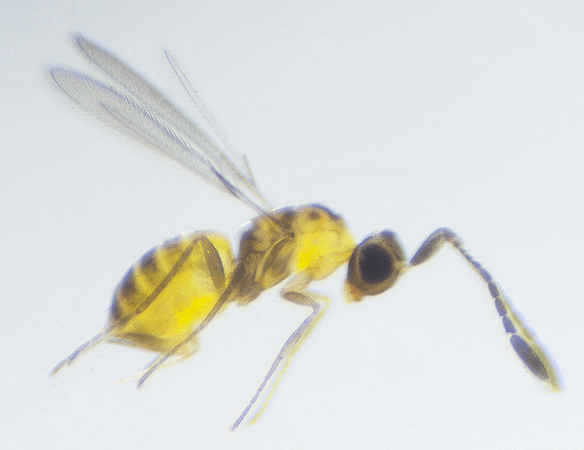
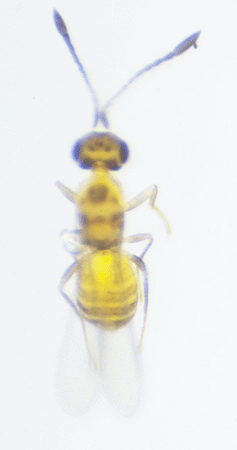
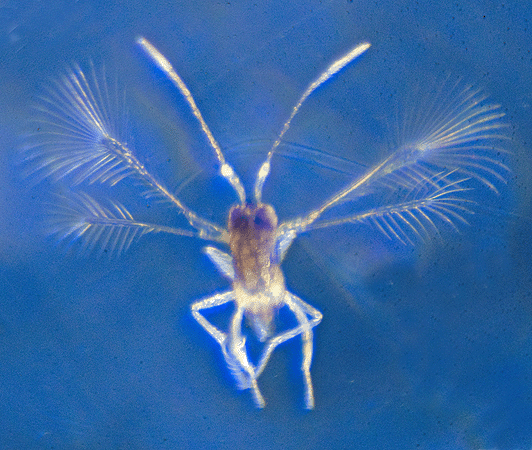
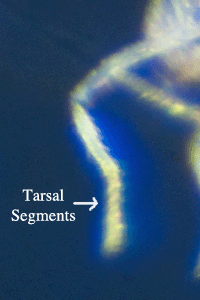 Photographs were created using photomicroscopy and sent for confirmation identification that the wasp was a female member of Family Mymaridae to <BugGuide.net>, sponsored by Iowa State University's Department of Entomology.
Photographs were created using photomicroscopy and sent for confirmation identification that the wasp was a female member of Family Mymaridae to <BugGuide.net>, sponsored by Iowa State University's Department of Entomology. 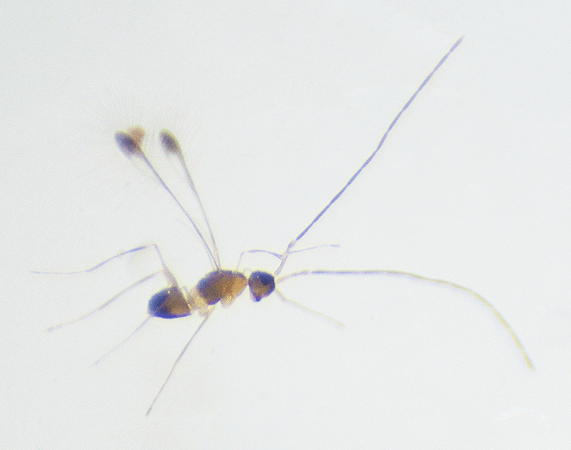
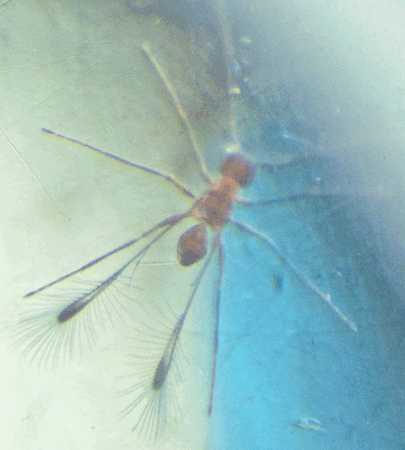

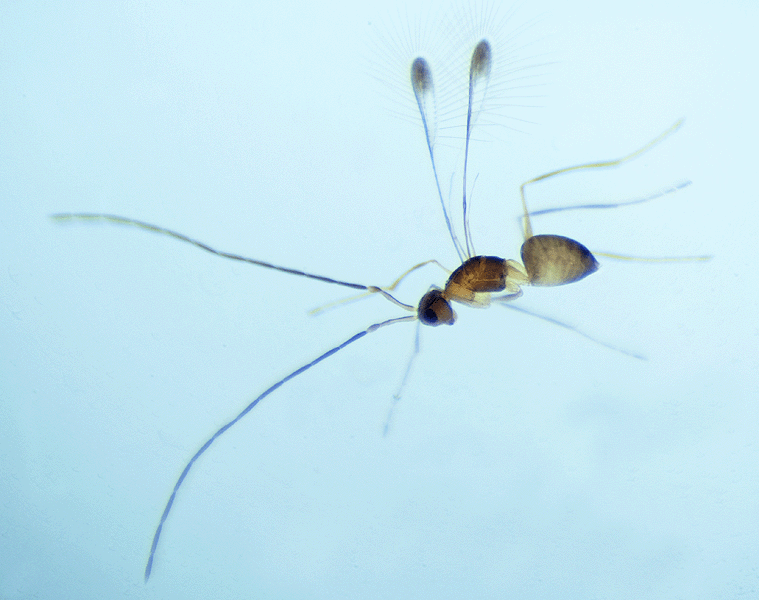
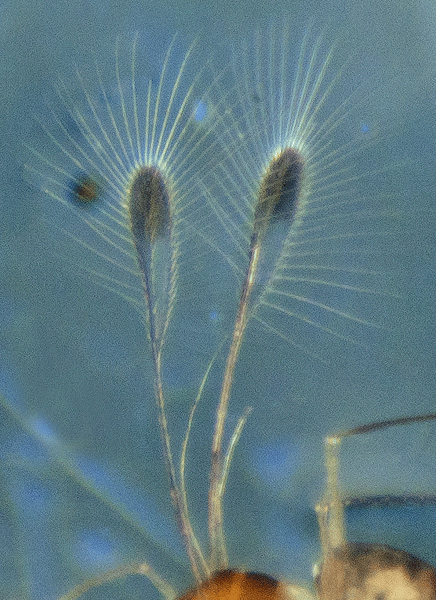
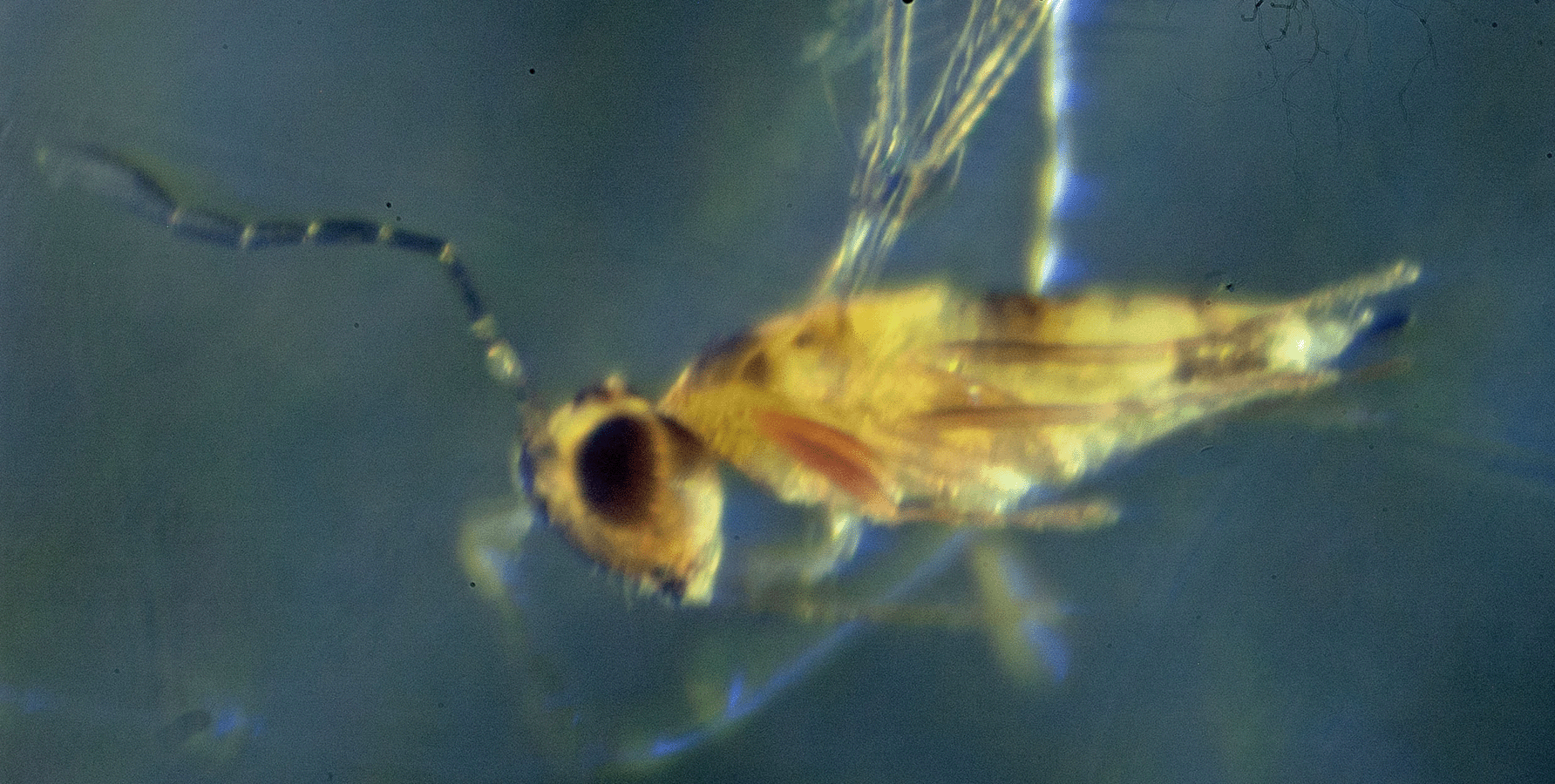
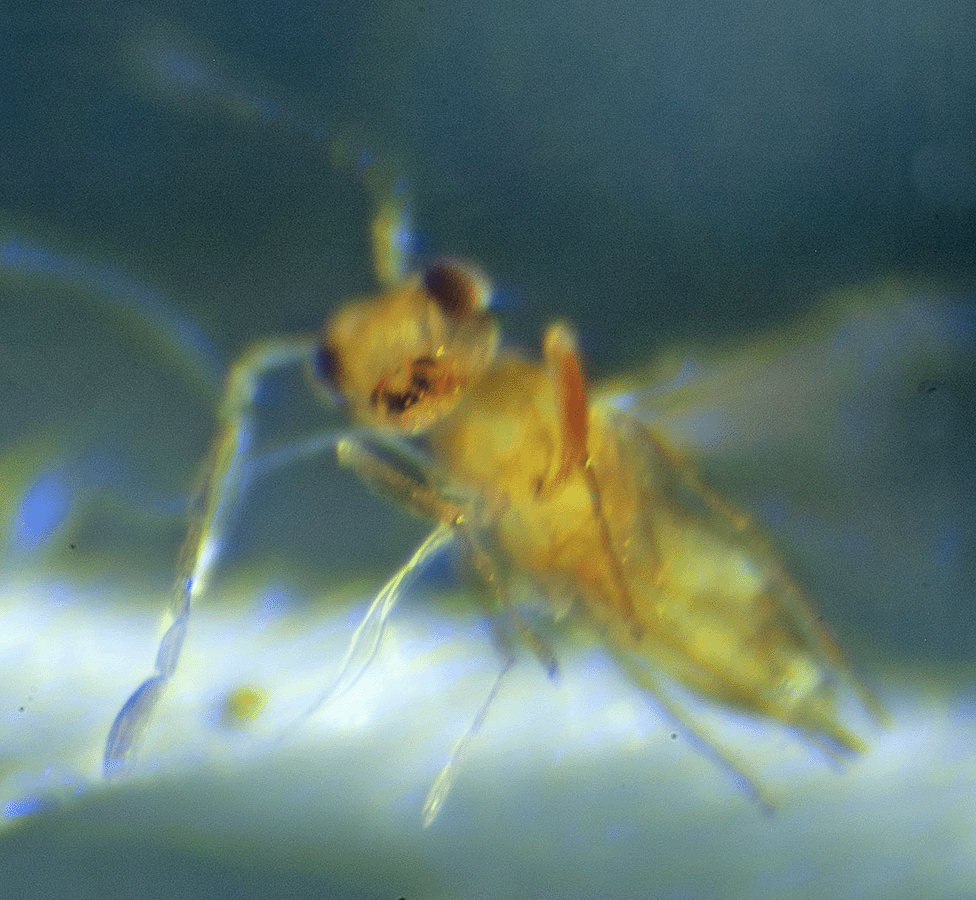
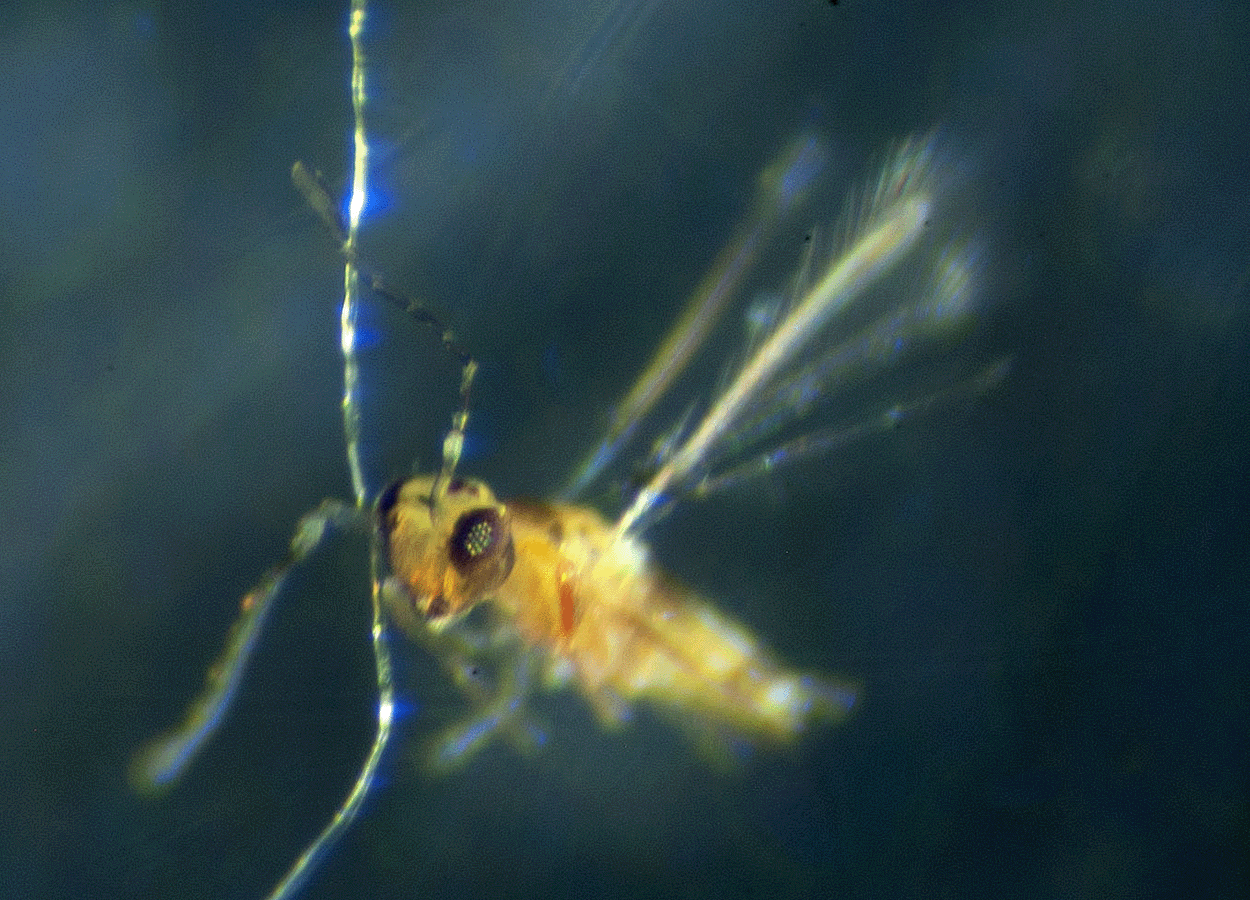
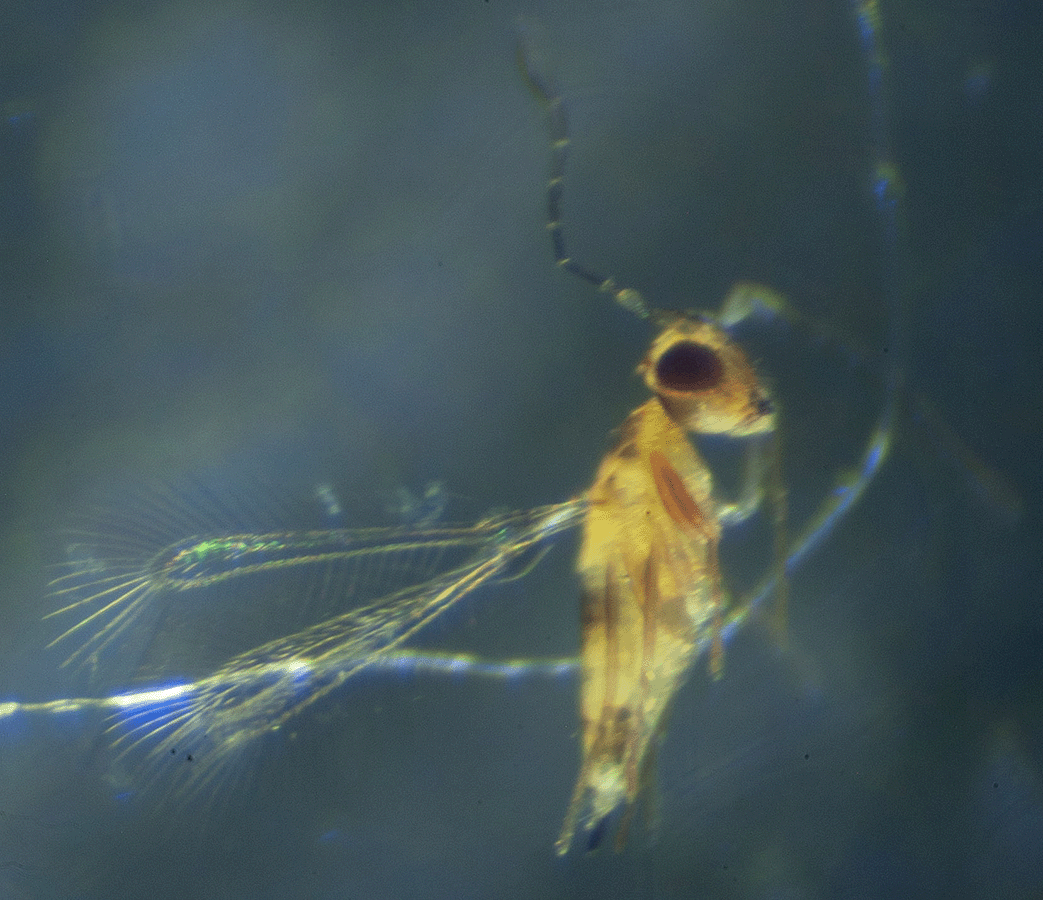
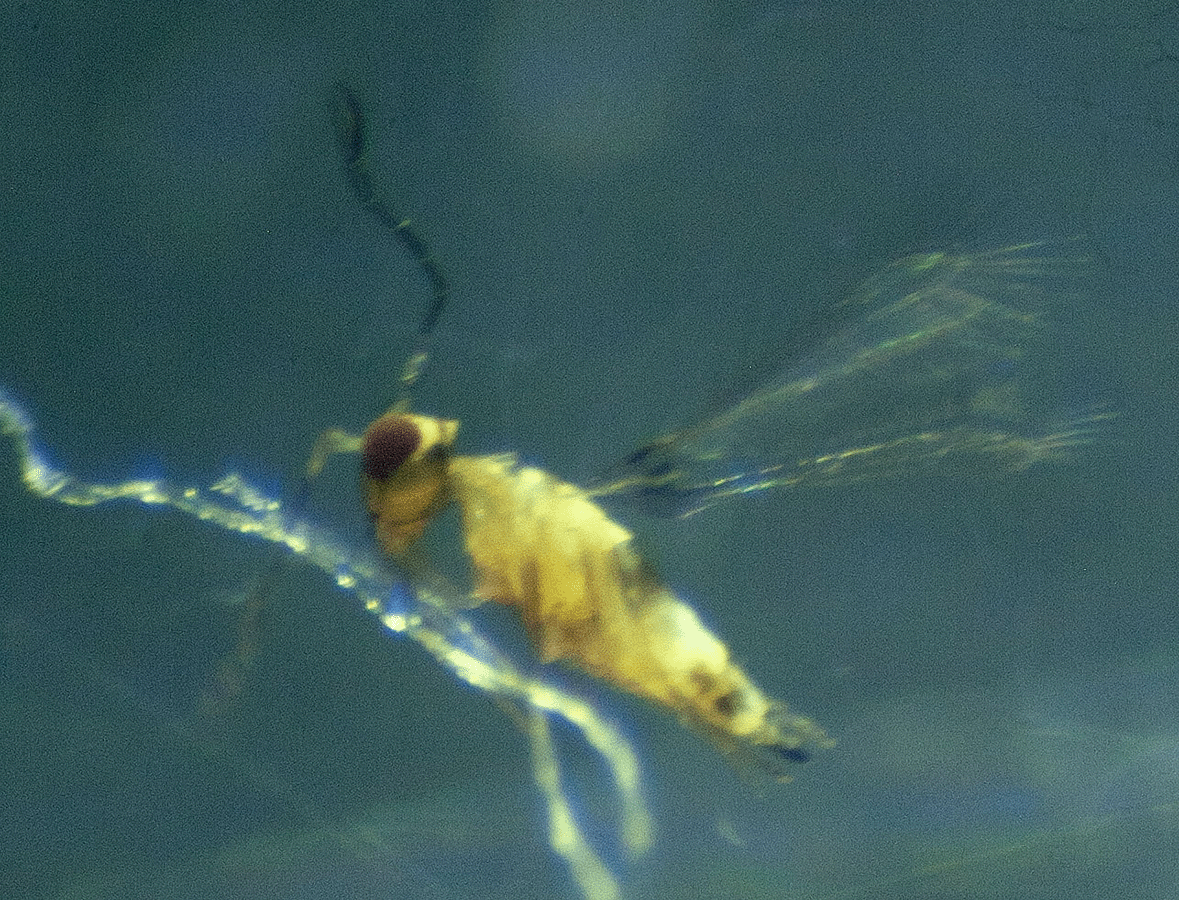
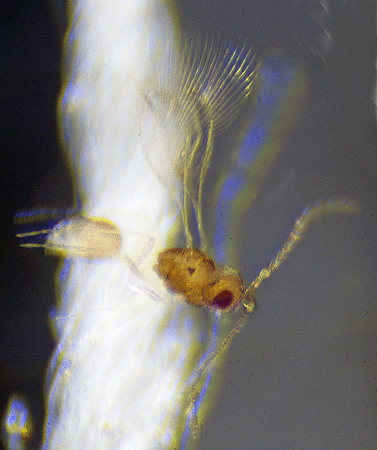
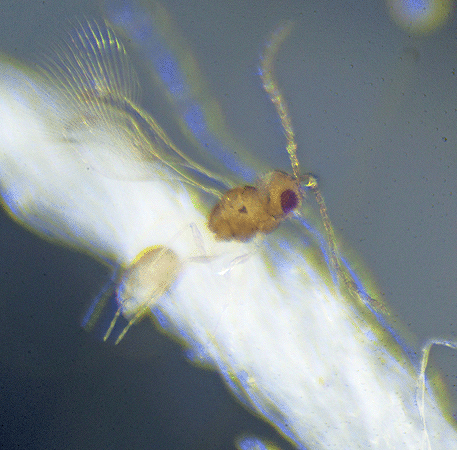

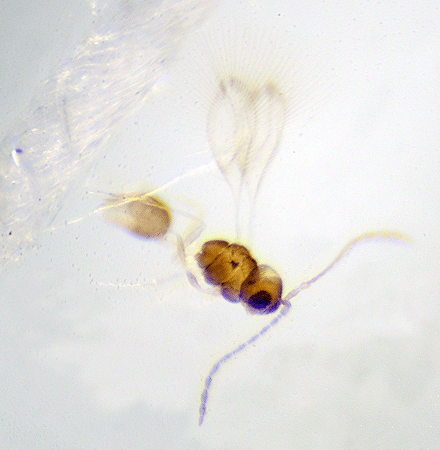 There is only one family in Superfamily Mymarommatoidea ... Family Mymarommatidae. According to <BugGuide.net>, in this family, there are only 10 living species in one genus that have been described. Others are known as fossils. The Mymarommatids are extremely small (0.4 mm to 0.7 mm in length.
There is only one family in Superfamily Mymarommatoidea ... Family Mymarommatidae. According to <BugGuide.net>, in this family, there are only 10 living species in one genus that have been described. Others are known as fossils. The Mymarommatids are extremely small (0.4 mm to 0.7 mm in length. 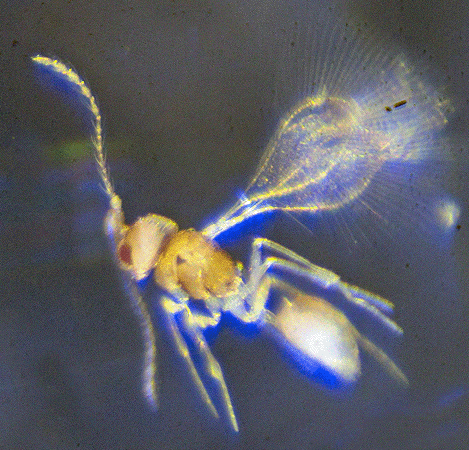 According to page 424 of Evolution of the Insects by David Grimaldi and Michael S. Engel, Cambridge University Press,"mymarommatids are notable for their two-segmented petiole, reticulate forewing membrane, and reduced and forked hind wing (which are haltere-like and consist of a single vein). Although the function is entirely unknown, mymarommatids also have a peculiar bellows-like structure on the back of the head, with the posterior surface separated by a pleated membrane that is capable of expanding and contracting. If these tiny wasps are egg parasitoids, which is likely, the head bellows may be a mechanism for bursting from the host egg."
According to page 424 of Evolution of the Insects by David Grimaldi and Michael S. Engel, Cambridge University Press,"mymarommatids are notable for their two-segmented petiole, reticulate forewing membrane, and reduced and forked hind wing (which are haltere-like and consist of a single vein). Although the function is entirely unknown, mymarommatids also have a peculiar bellows-like structure on the back of the head, with the posterior surface separated by a pleated membrane that is capable of expanding and contracting. If these tiny wasps are egg parasitoids, which is likely, the head bellows may be a mechanism for bursting from the host egg."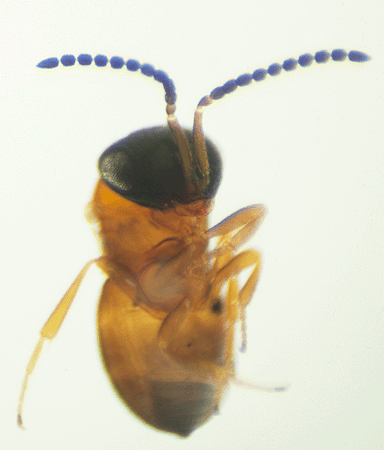
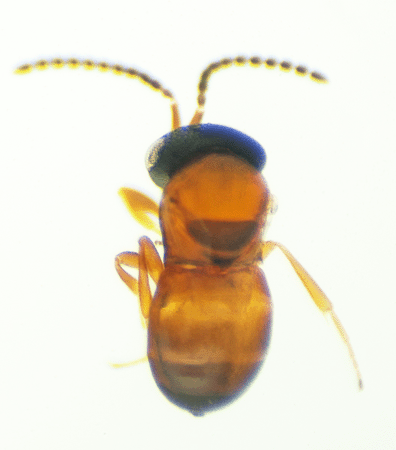
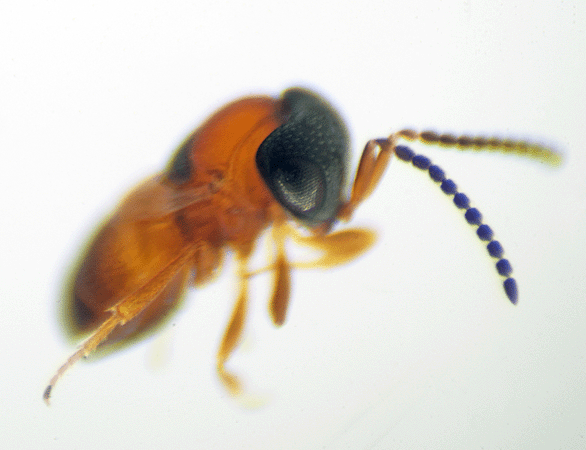 On December 13, 2016, this 1 mm long wasp was captured in a pitfall trap that had been placed in the Smith Preserve near 14th Ave N and a private residence. The trap was put in sand and dried grass and left overnight.
On December 13, 2016, this 1 mm long wasp was captured in a pitfall trap that had been placed in the Smith Preserve near 14th Ave N and a private residence. The trap was put in sand and dried grass and left overnight. 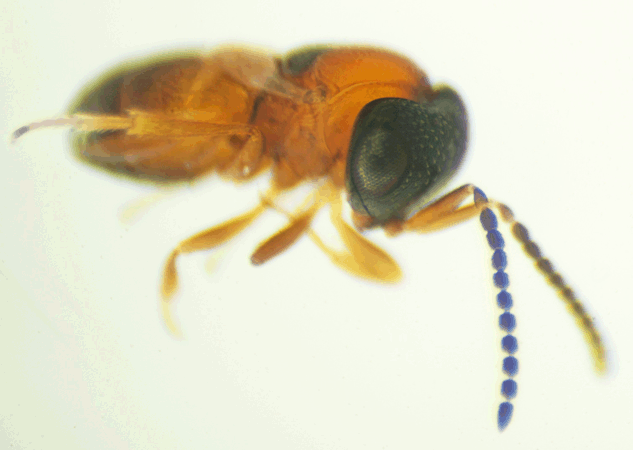
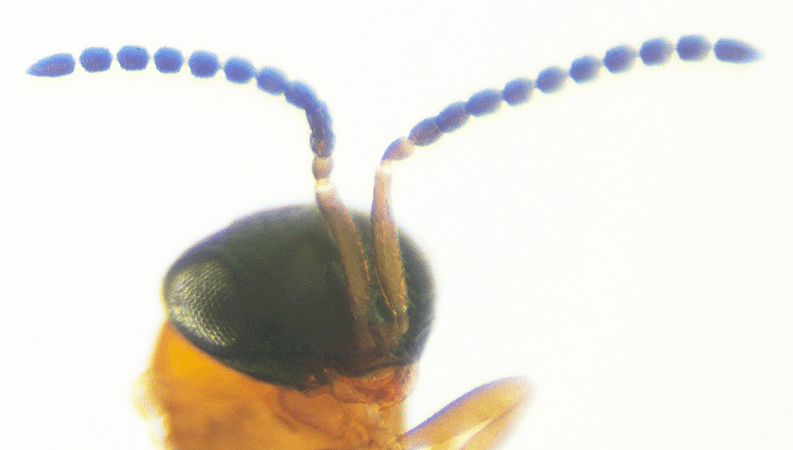
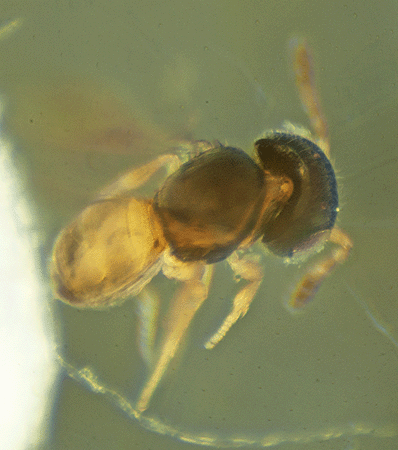
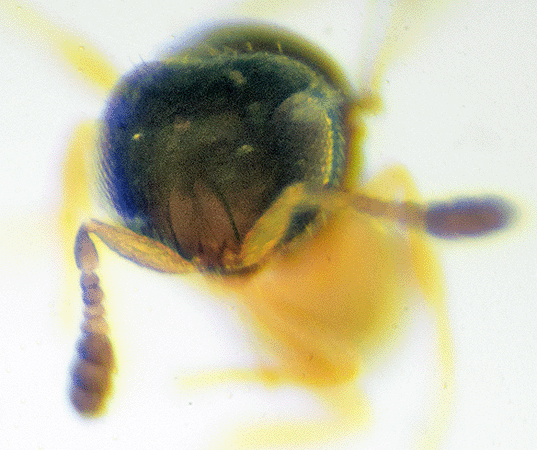
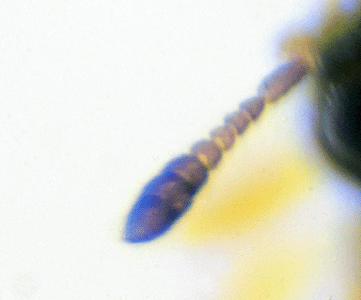
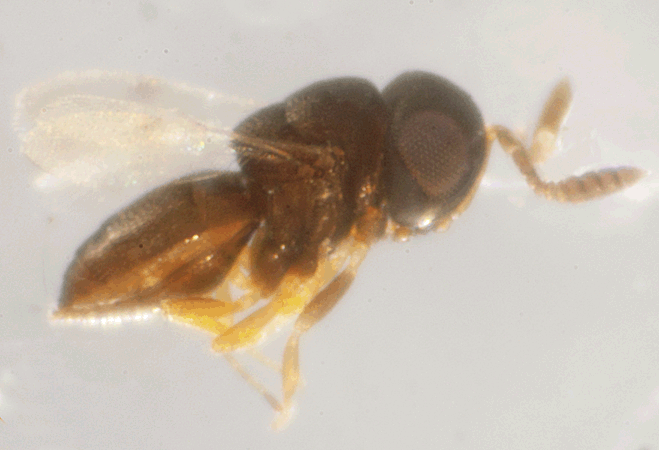 On November 17, 2015, this .7mm long parasitic wasp was captured in a pitfall trap placed beneath a
On November 17, 2015, this .7mm long parasitic wasp was captured in a pitfall trap placed beneath a 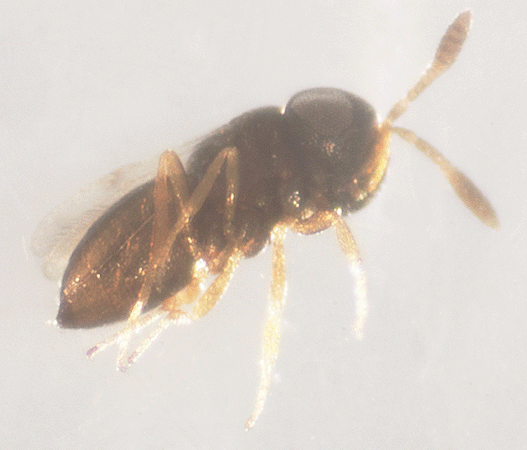
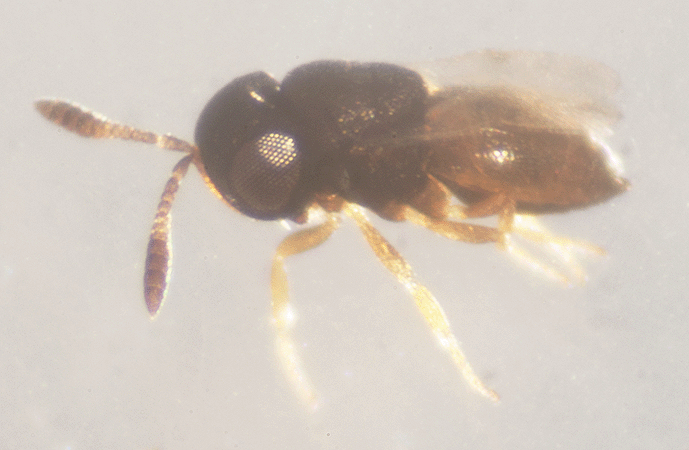
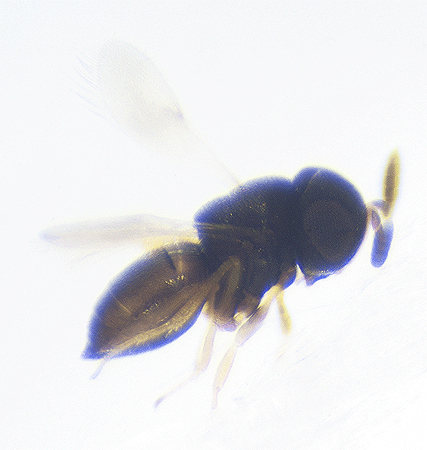
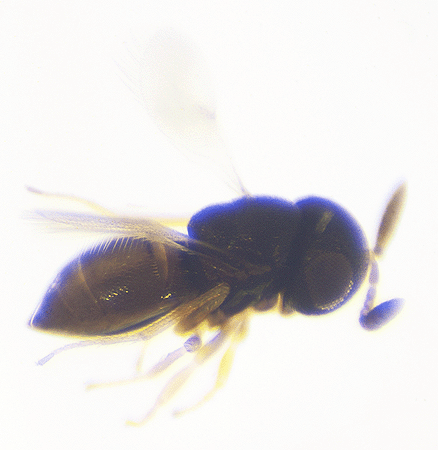
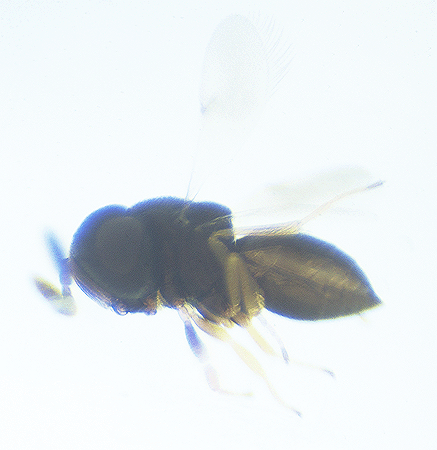 These three photographs were created by photomicroscopy and sent for identification to <BugGuide.net>.
These three photographs were created by photomicroscopy and sent for identification to <BugGuide.net>. 
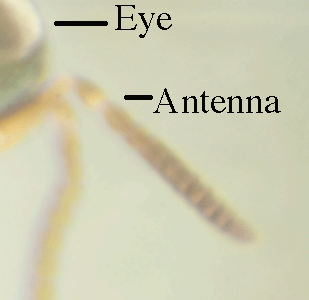 On February 15, 2017, the wasp was identified as a member of Family Platygastridae, Subfamily Scelioninae by Ross Hill.
On February 15, 2017, the wasp was identified as a member of Family Platygastridae, Subfamily Scelioninae by Ross Hill. 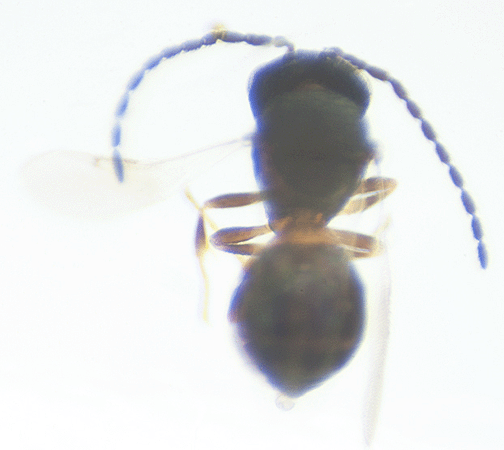
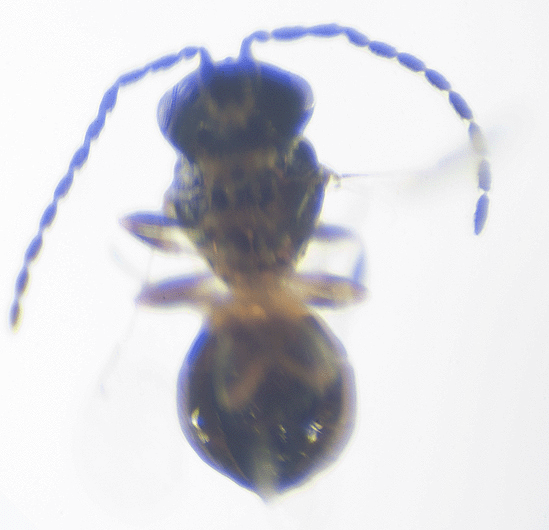
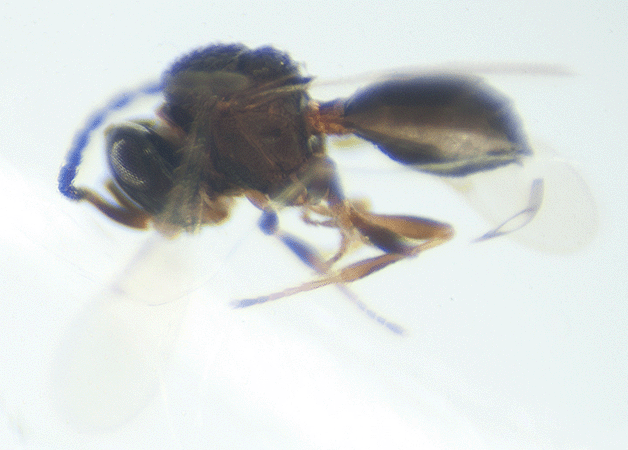 On December 13, 2016, this 1 mm long parasitic wasp was captured in a yellow bowl trap that had been left over night on top of a sandy ridge in the southeast region of the Smith Preserve near 14th Ave. N and a private residence.
On December 13, 2016, this 1 mm long parasitic wasp was captured in a yellow bowl trap that had been left over night on top of a sandy ridge in the southeast region of the Smith Preserve near 14th Ave. N and a private residence. 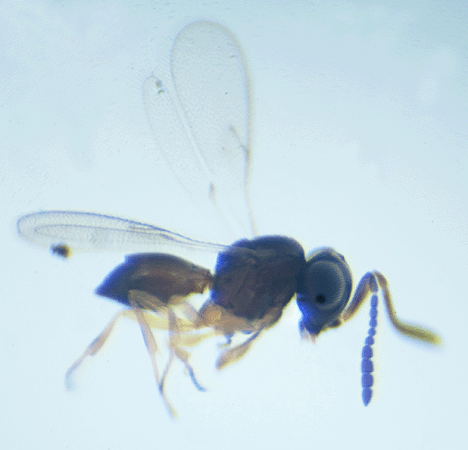
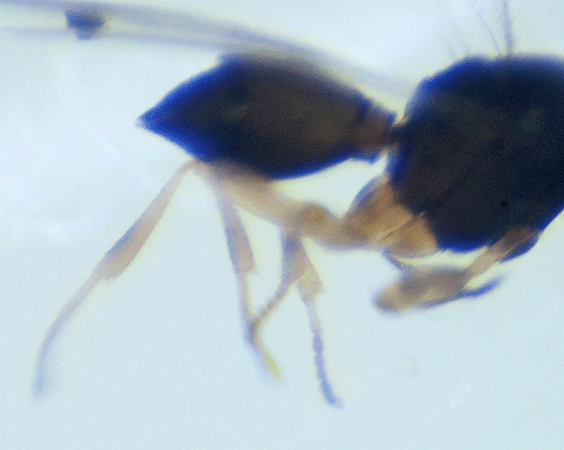 On March 28, 2018, this .78 mm long female parasitic wasp was captured in a yellow bowl trap left overnight near several
On March 28, 2018, this .78 mm long female parasitic wasp was captured in a yellow bowl trap left overnight near several 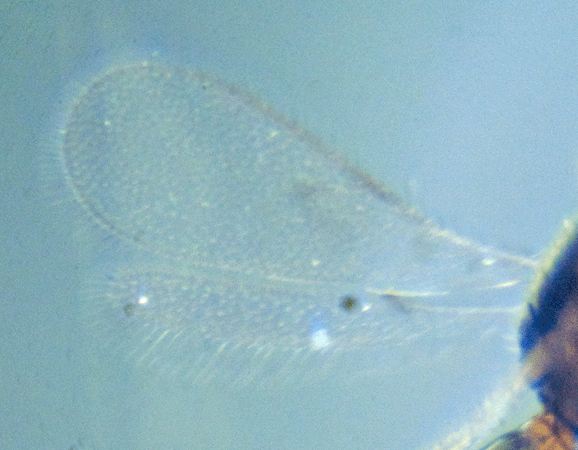
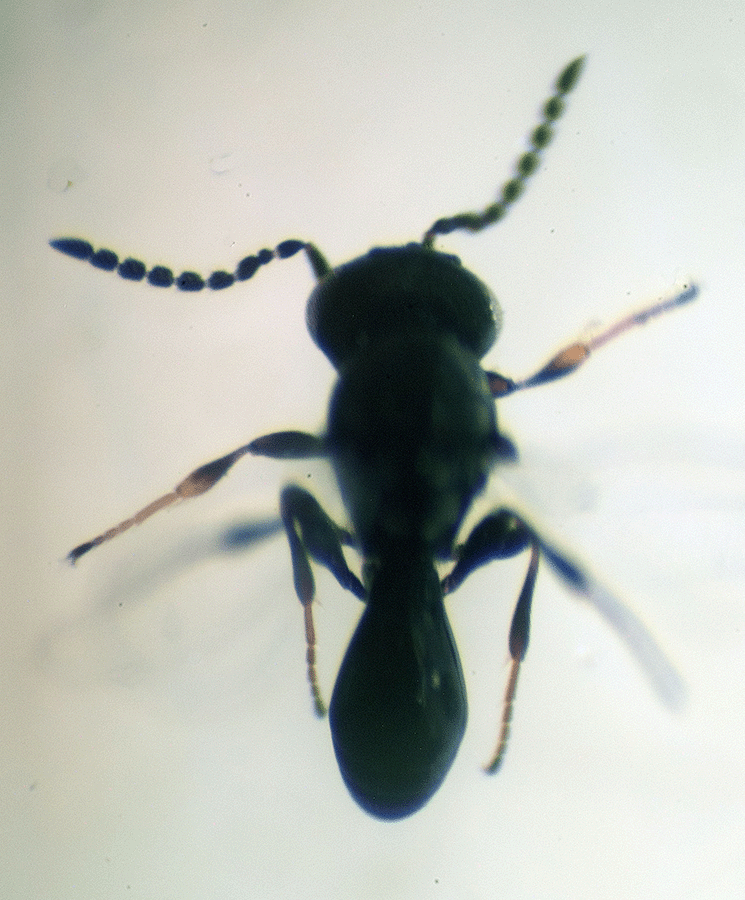

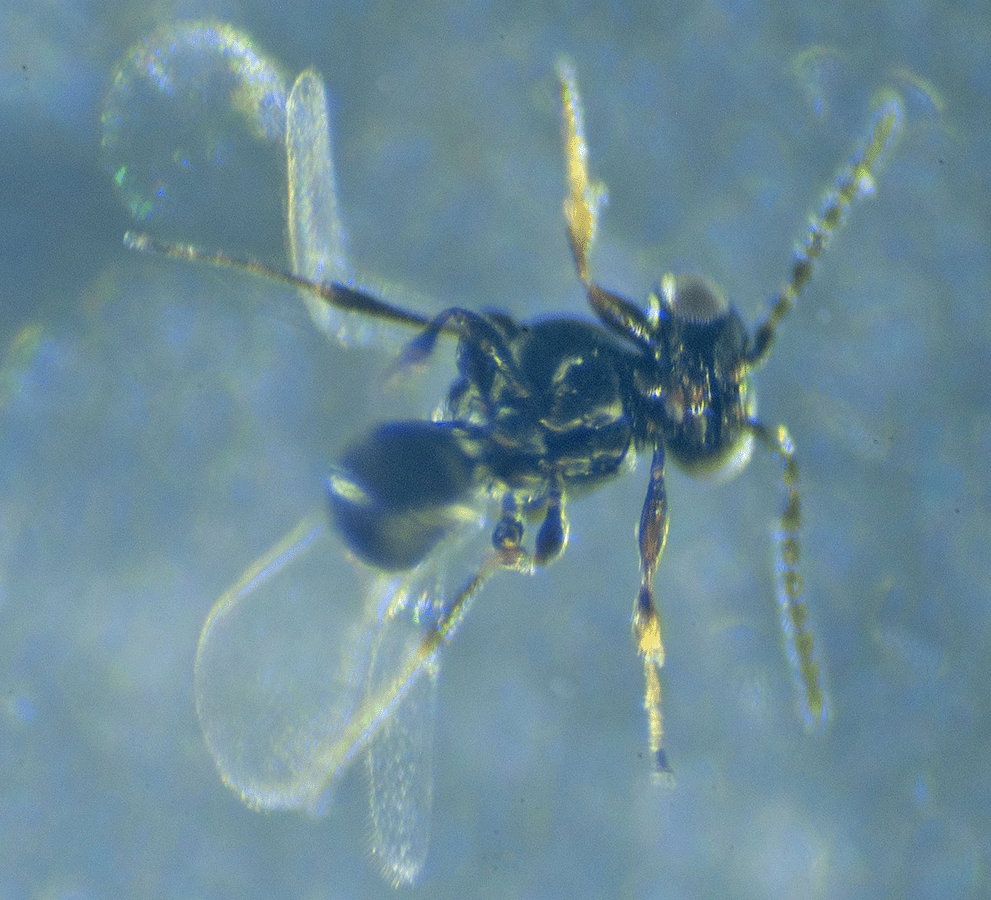
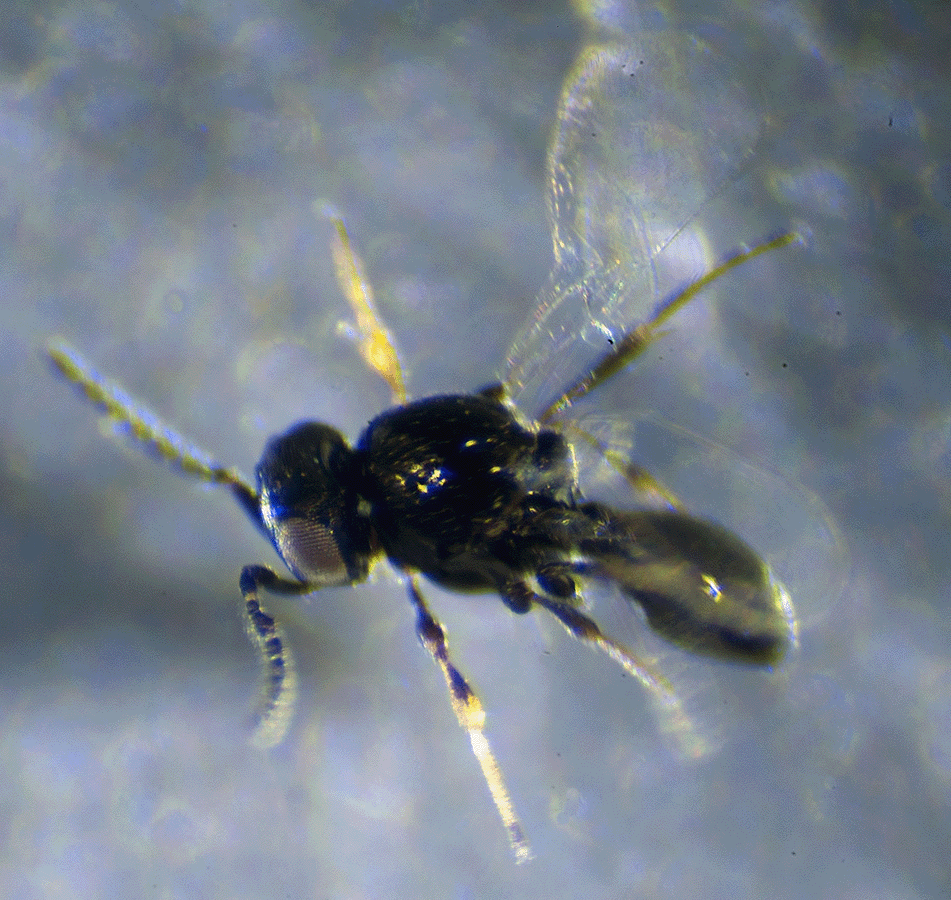
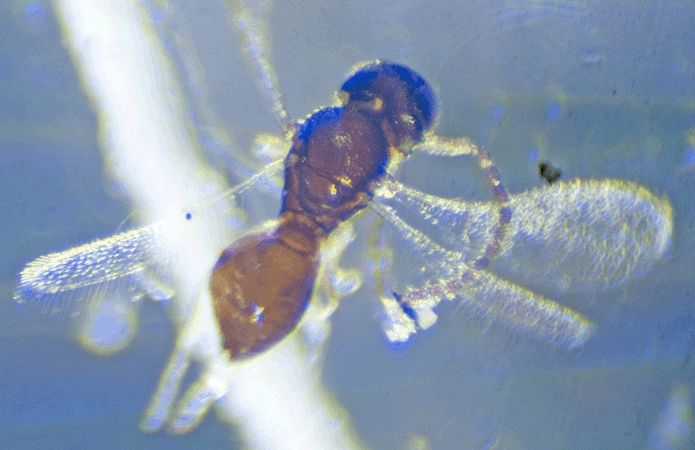 On January 4, 2017, this .7mm wasp was captured in a yellow bowl trap that was left overnight in the Smith Preserve scrub area just west of the seasonal pond.
On January 4, 2017, this .7mm wasp was captured in a yellow bowl trap that was left overnight in the Smith Preserve scrub area just west of the seasonal pond. 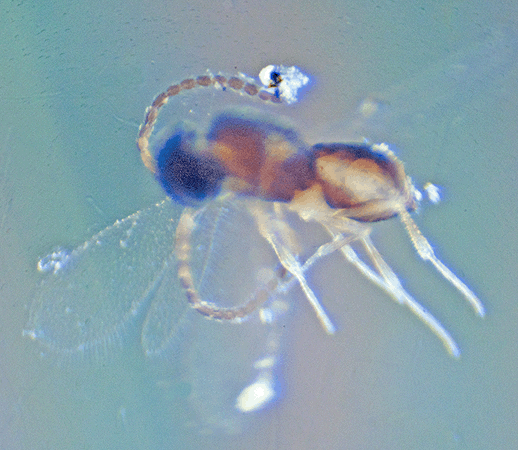
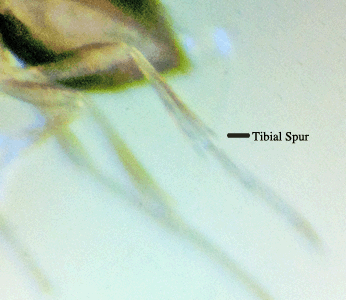
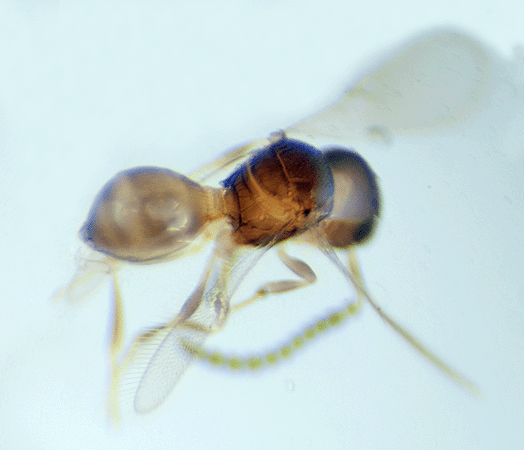
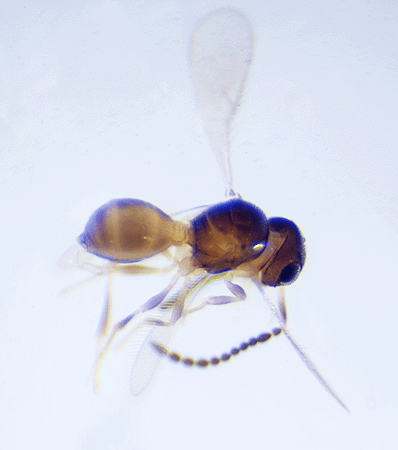
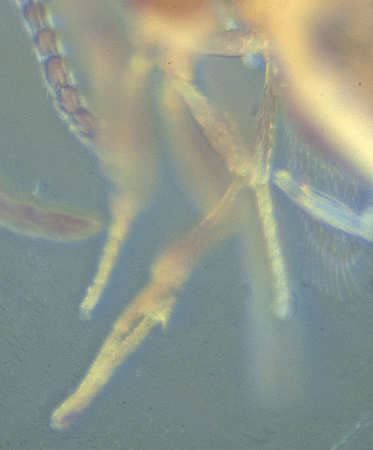
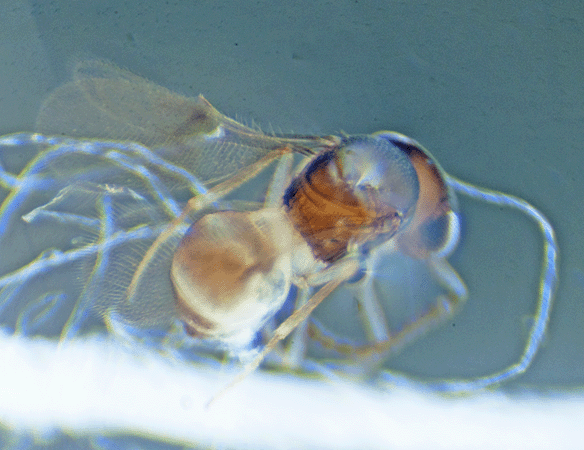
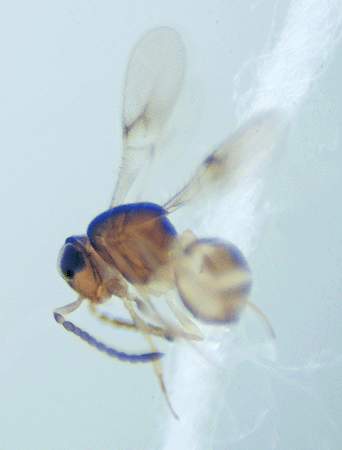 On March 28, 2018, this .8 mm wasp was captured in the same yellow bowl trap as the wasp shown above. The trap had been left overnight just south of the middle of the Christopher B. Smith Preserve under
On March 28, 2018, this .8 mm wasp was captured in the same yellow bowl trap as the wasp shown above. The trap had been left overnight just south of the middle of the Christopher B. Smith Preserve under 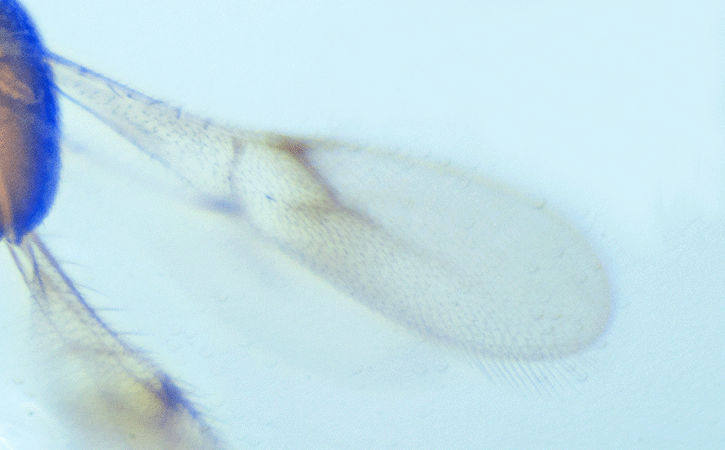
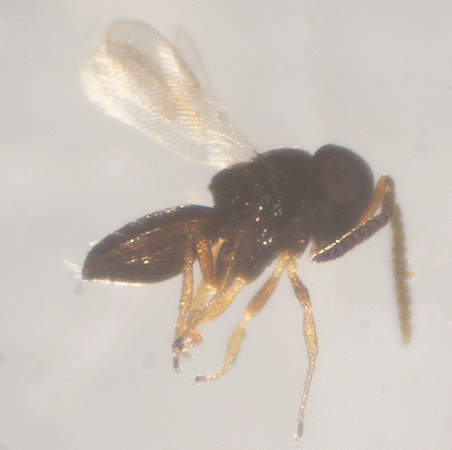 On November 17, 2015, this .7 mm long parasitic wasp was captured in a pitfall trap left over night in sand and leaf litter beneath a
On November 17, 2015, this .7 mm long parasitic wasp was captured in a pitfall trap left over night in sand and leaf litter beneath a 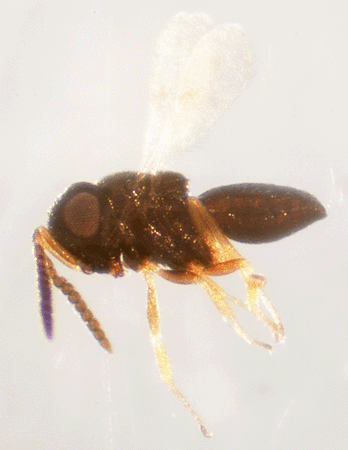
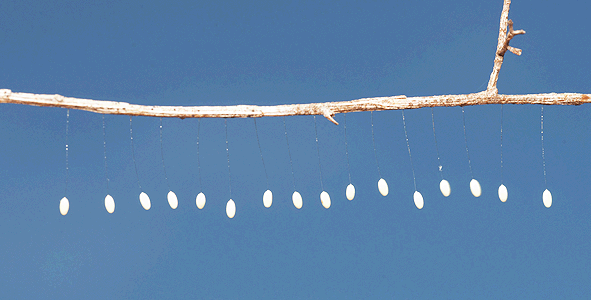 On December 10, 2013, 16
On December 10, 2013, 16 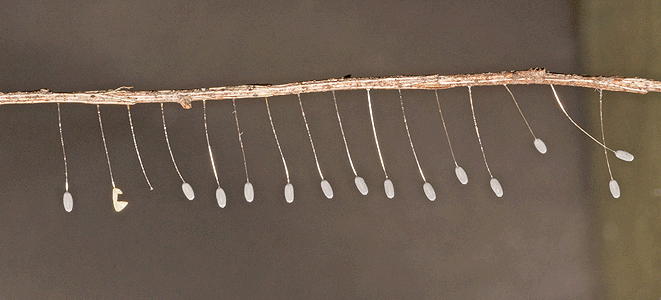
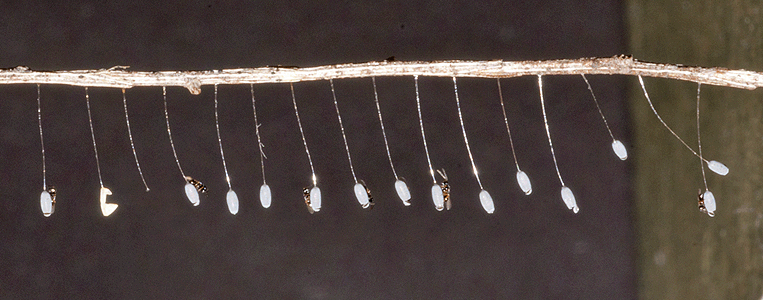
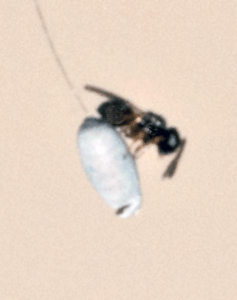
 It is unknown when the lacewing eggs were laid, or when they were parasitized. But, the platygastrid wasp mother inserted one of her eggs into each of the lacewing eggs.
It is unknown when the lacewing eggs were laid, or when they were parasitized. But, the platygastrid wasp mother inserted one of her eggs into each of the lacewing eggs. 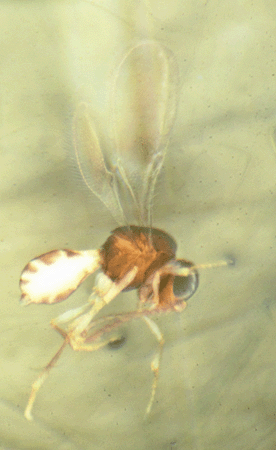
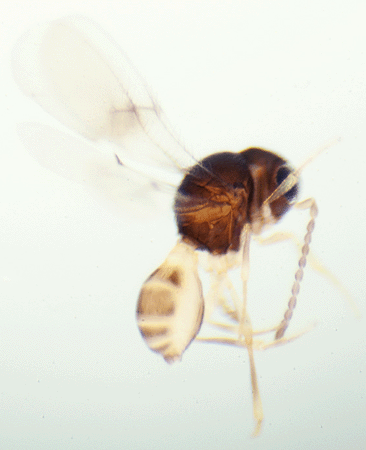

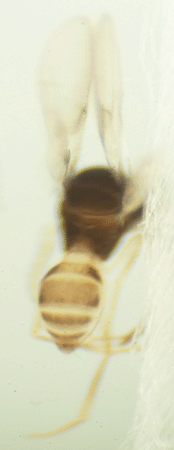
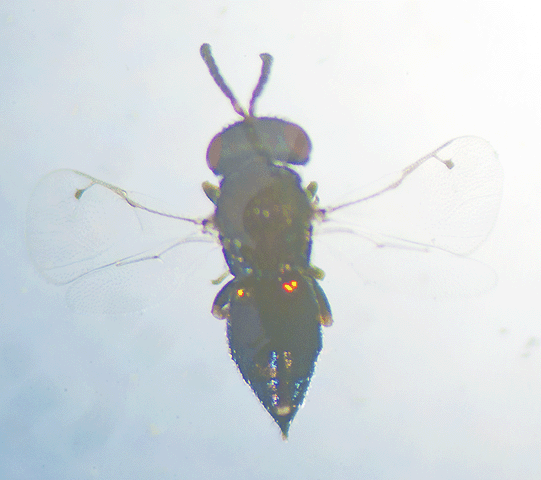 T
T On January 22nd, additional wasps began emerging from the galls. This process continued for more than a week. Some individuals resembled the Family Cynipidae wasps, and others, like the ones in these photographs and
On January 22nd, additional wasps began emerging from the galls. This process continued for more than a week. Some individuals resembled the Family Cynipidae wasps, and others, like the ones in these photographs and 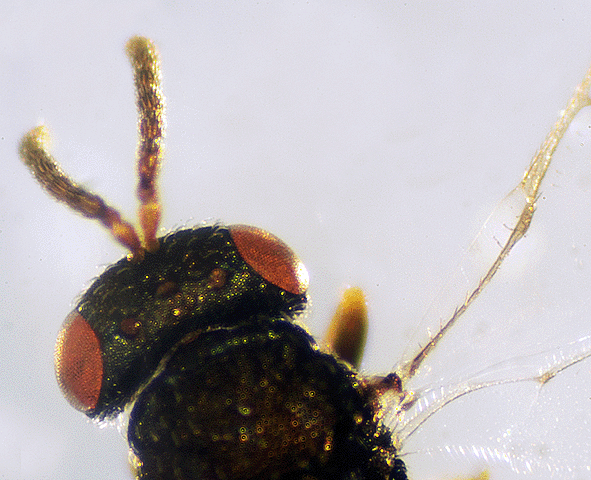
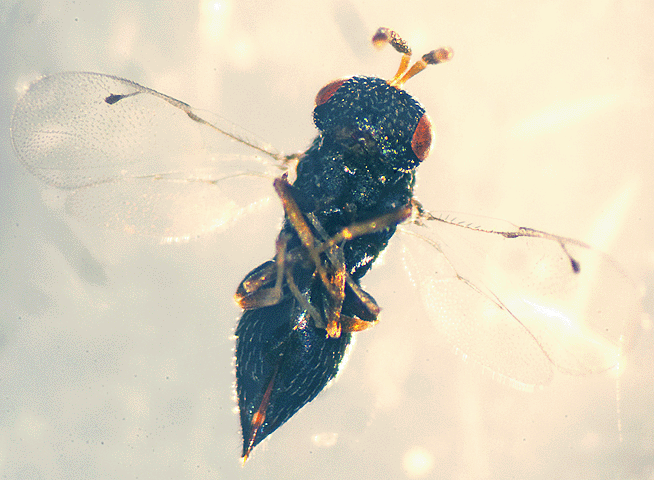
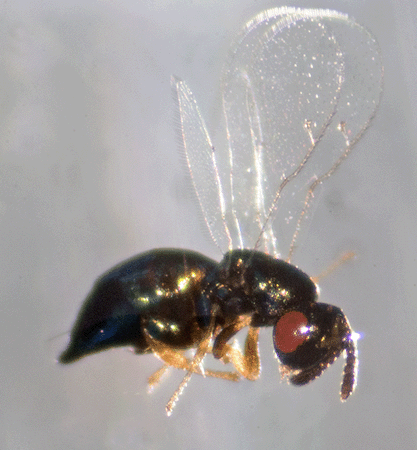
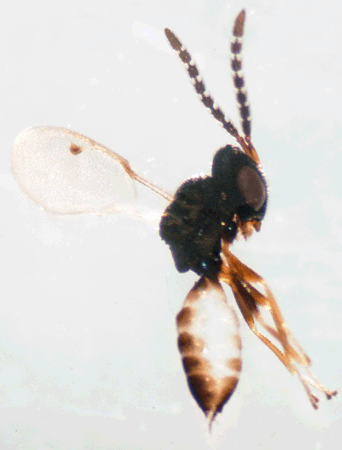
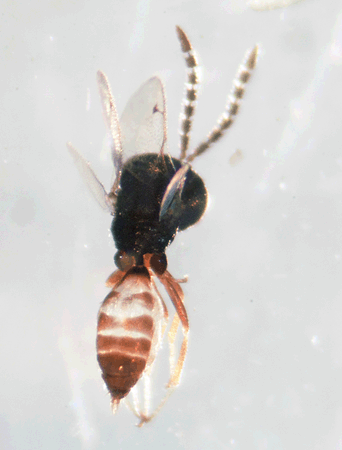
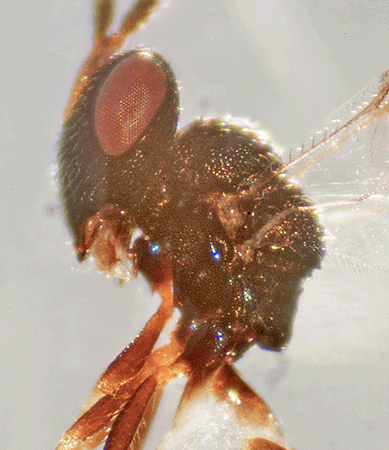 Family Pteromalidae is in Superfamily Chalcidoidea. The common name "Chalcid" is derived from the Greek word "khalkos" which means" copper." Many members of the superfamily Chalcidoidea are copper-colored.
Family Pteromalidae is in Superfamily Chalcidoidea. The common name "Chalcid" is derived from the Greek word "khalkos" which means" copper." Many members of the superfamily Chalcidoidea are copper-colored. 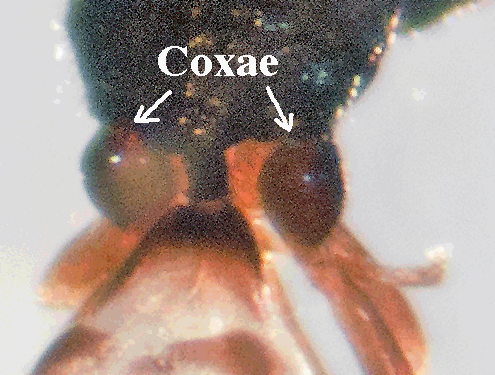
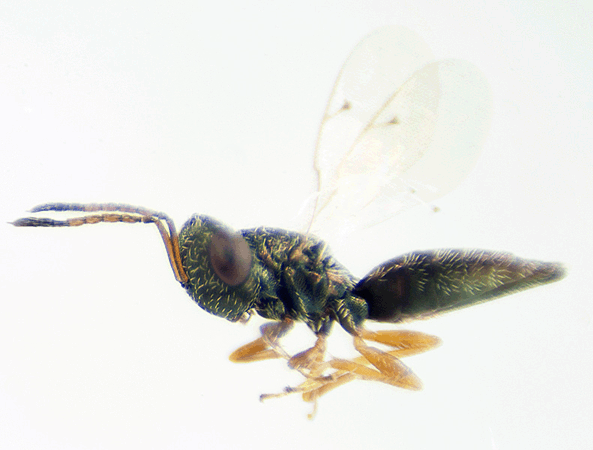 On December 30, 2015, this 2.5 mm long parasitic wasp was captured with a sweep net in low, dry vegetation that was growing in the northeast quadrant of the Smith Preserve just north of Smith Preserve Way.
On December 30, 2015, this 2.5 mm long parasitic wasp was captured with a sweep net in low, dry vegetation that was growing in the northeast quadrant of the Smith Preserve just north of Smith Preserve Way. 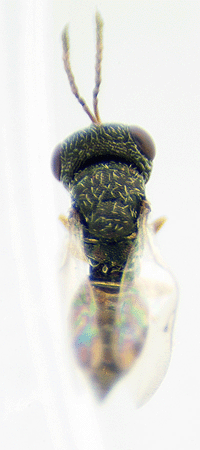 On February 14, 2016, the wasp's family was identified by Ross Hill, a Contributor to <BugGuide.net>.
On February 14, 2016, the wasp's family was identified by Ross Hill, a Contributor to <BugGuide.net>. 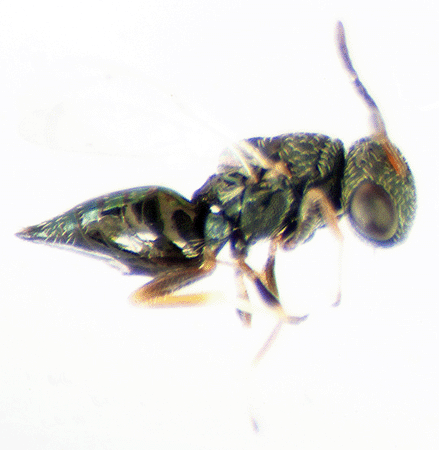
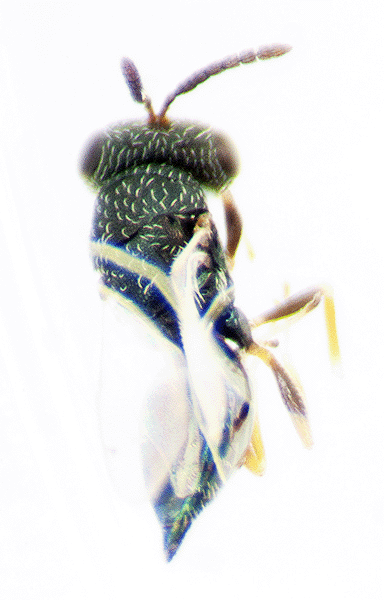
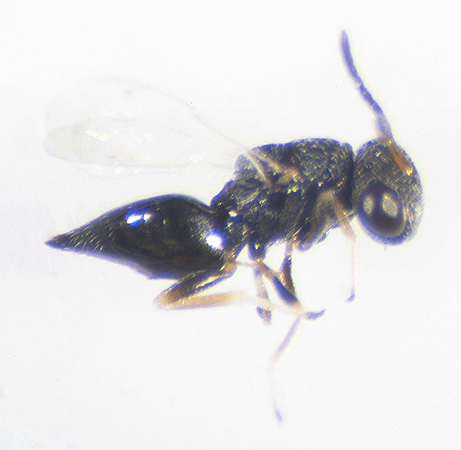 On December 8, 2014, this 2.5 mm long wasp was captured in a sweep net used to collect insects in dry vegetation in the Smith Preserve.
On December 8, 2014, this 2.5 mm long wasp was captured in a sweep net used to collect insects in dry vegetation in the Smith Preserve. 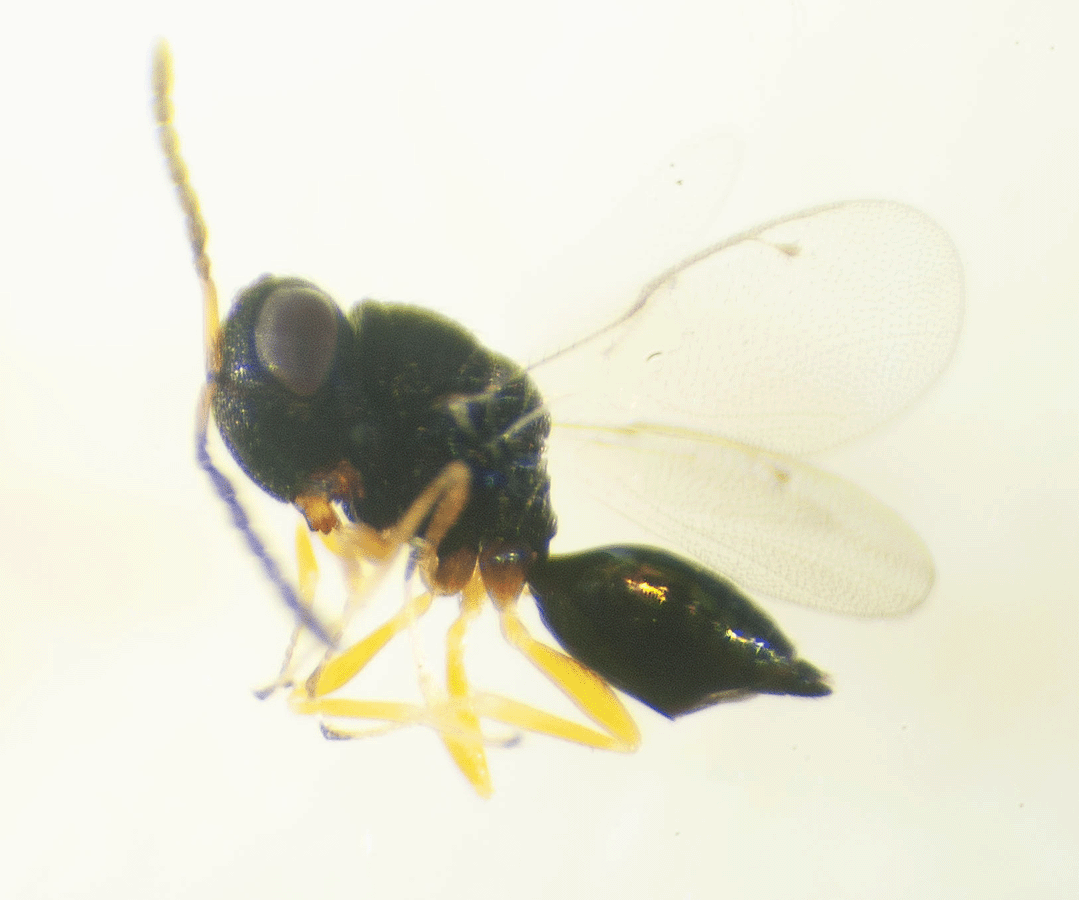
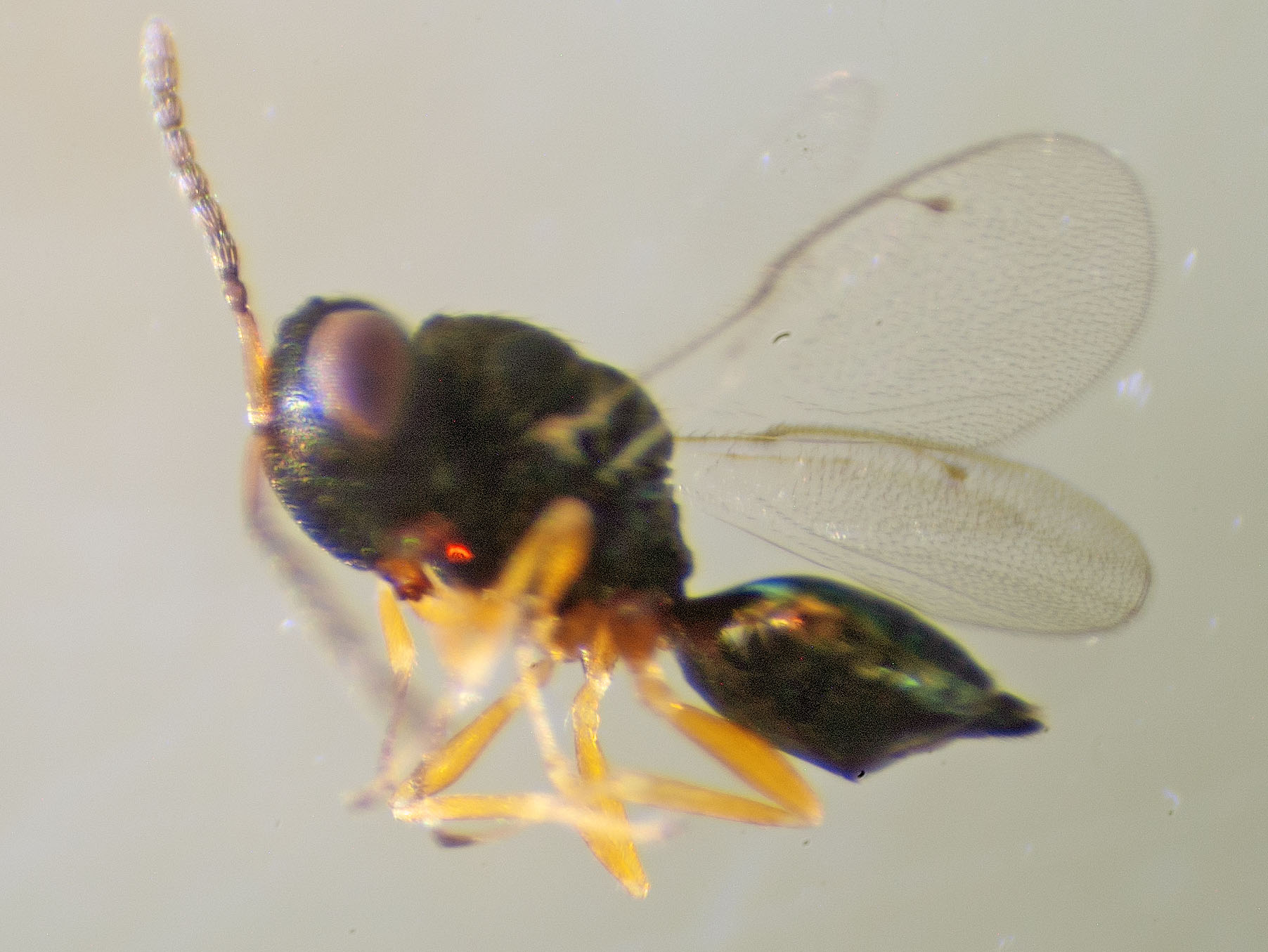
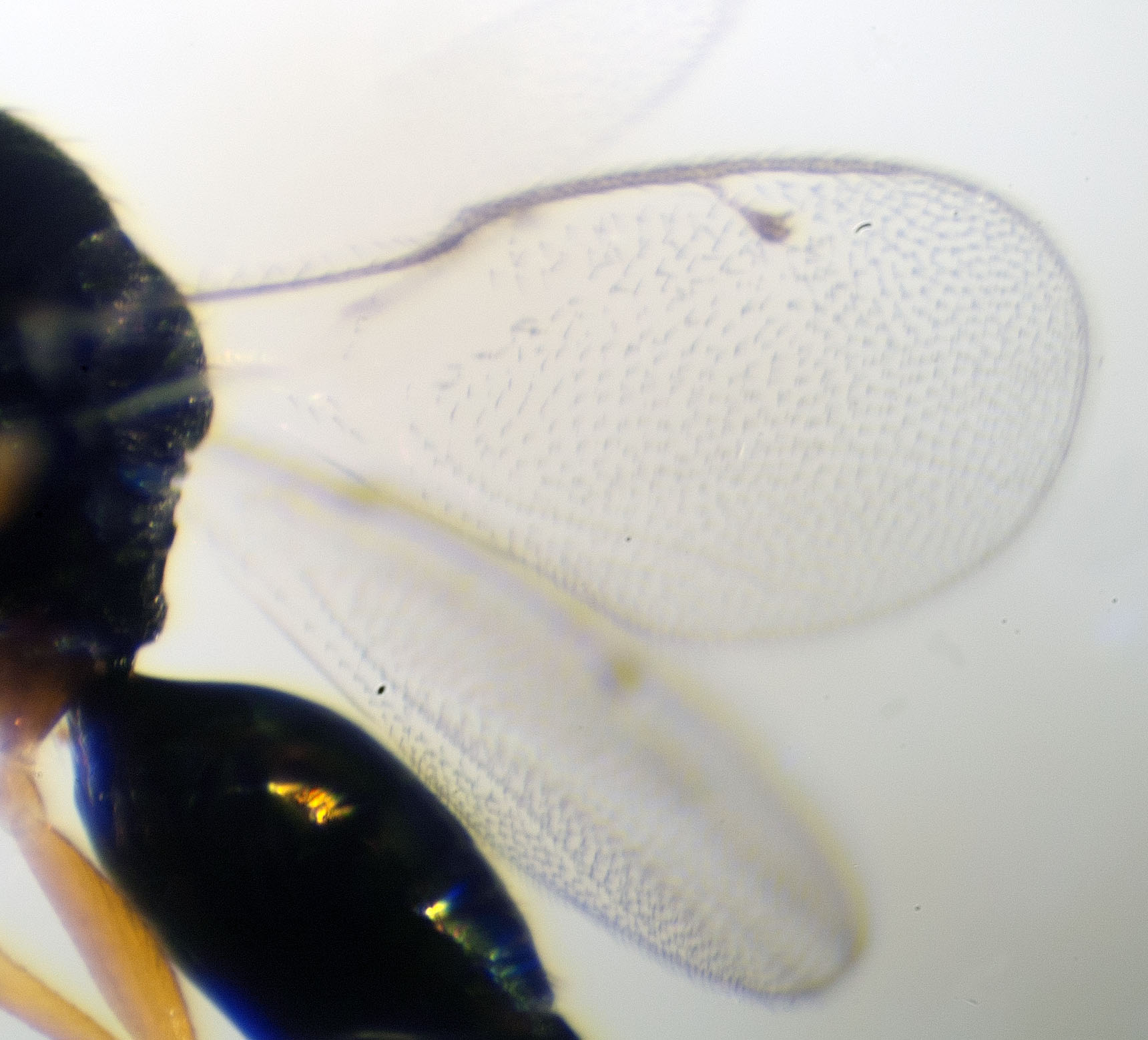
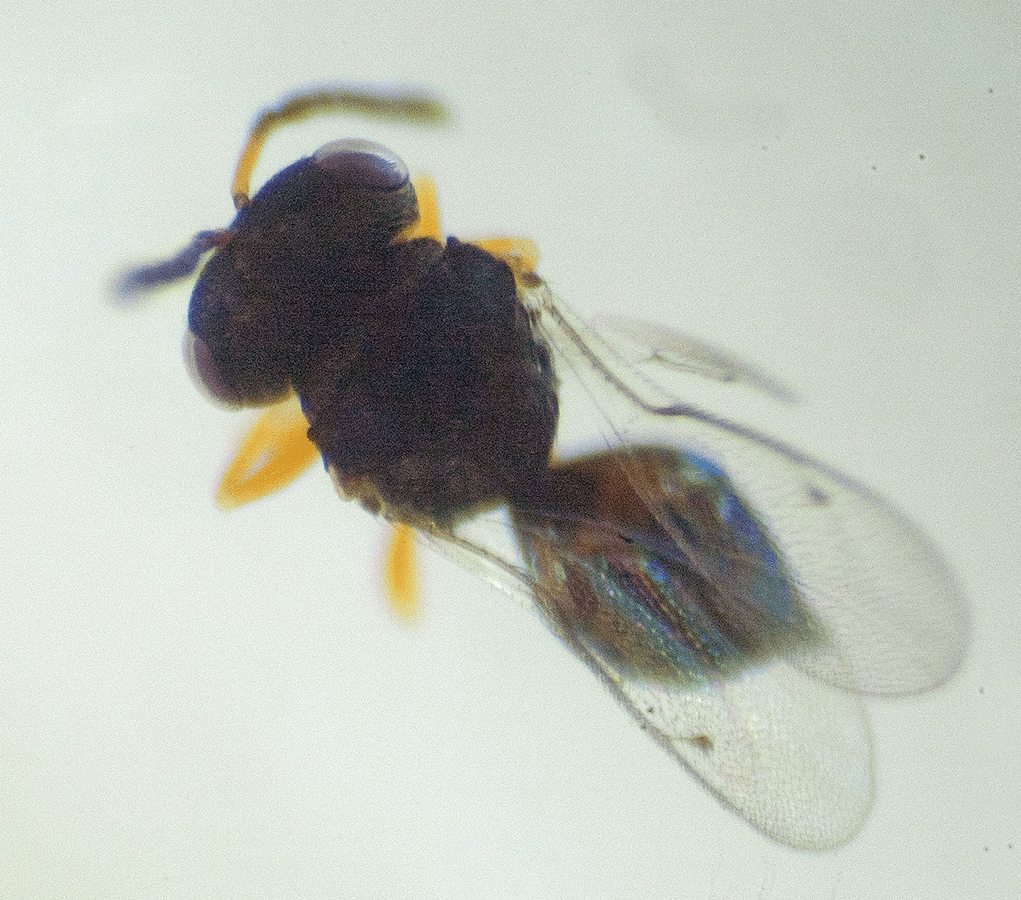
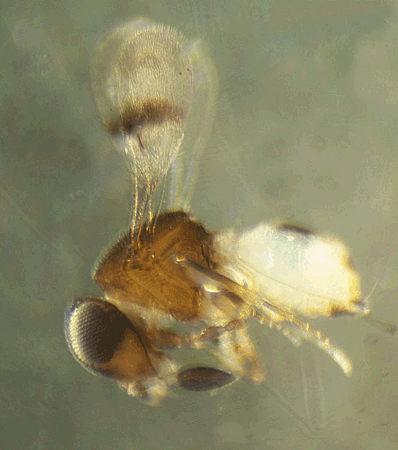
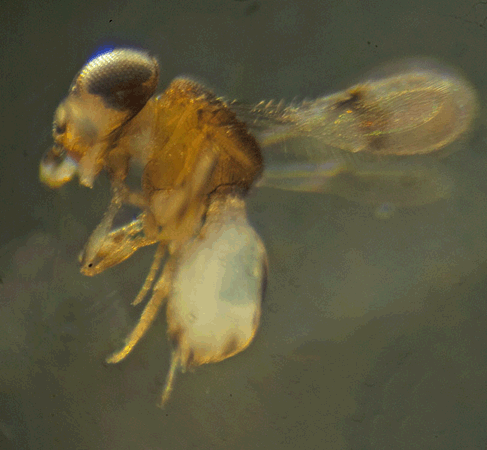
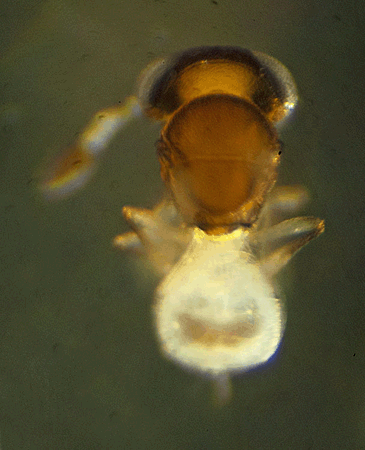
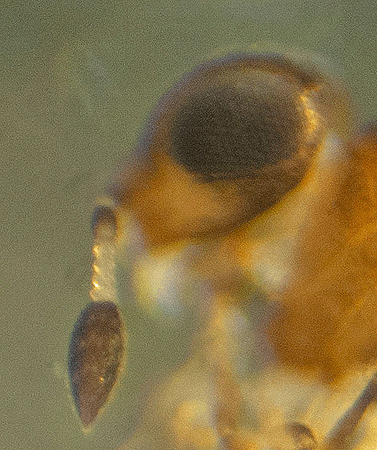
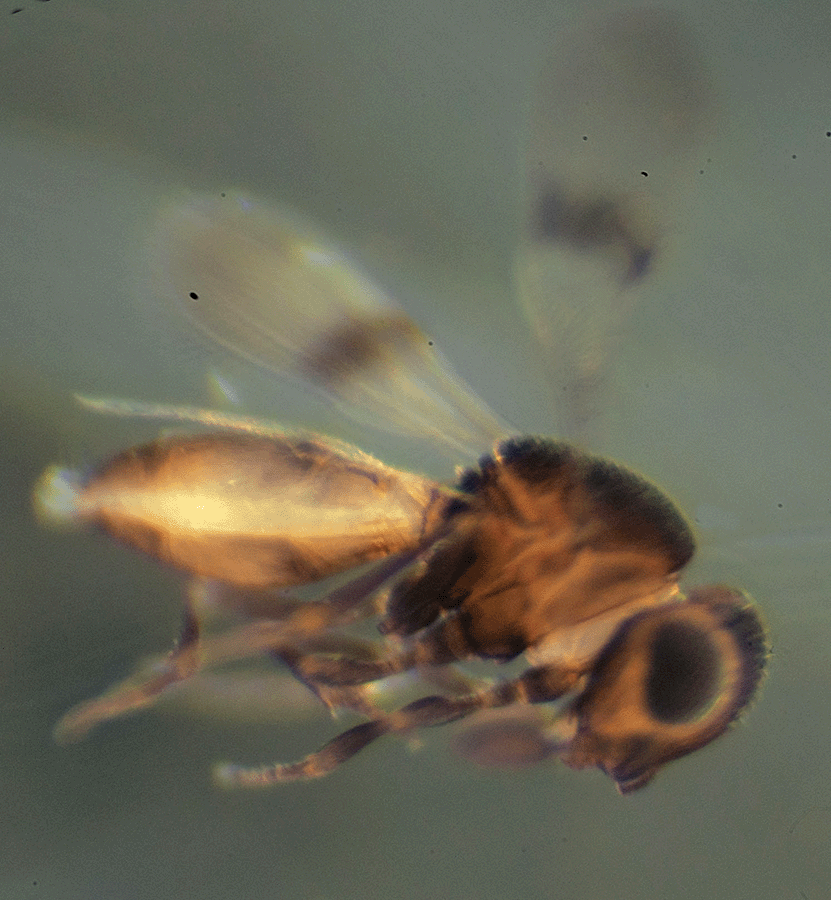
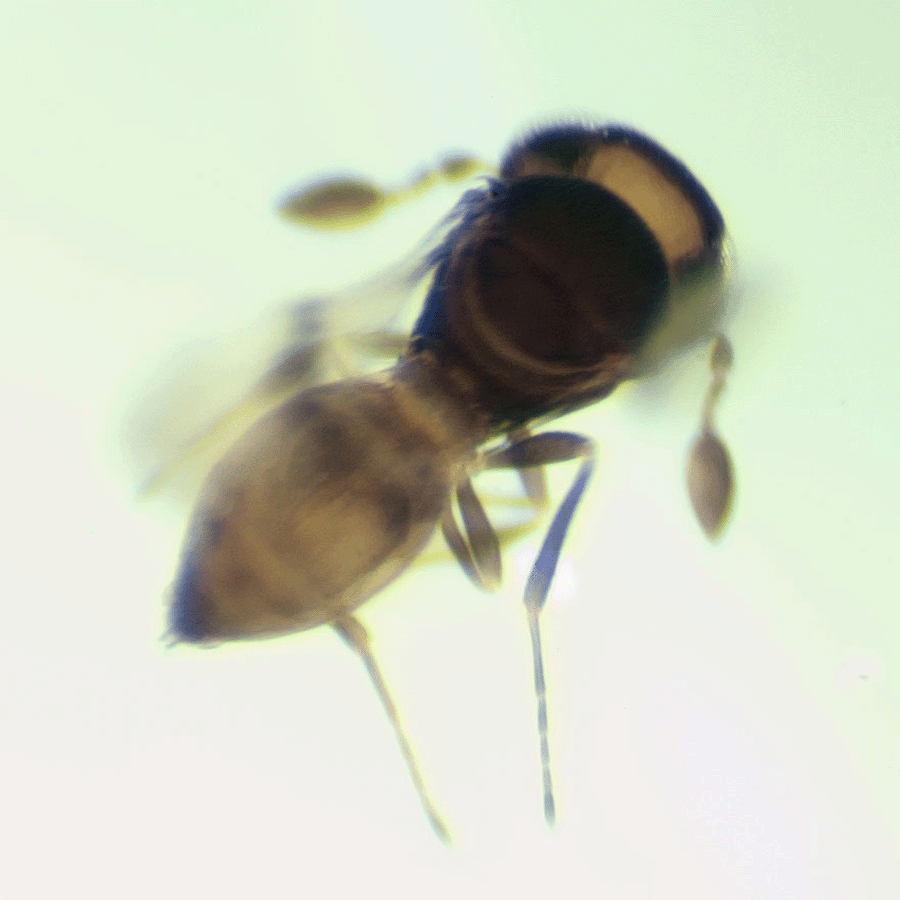
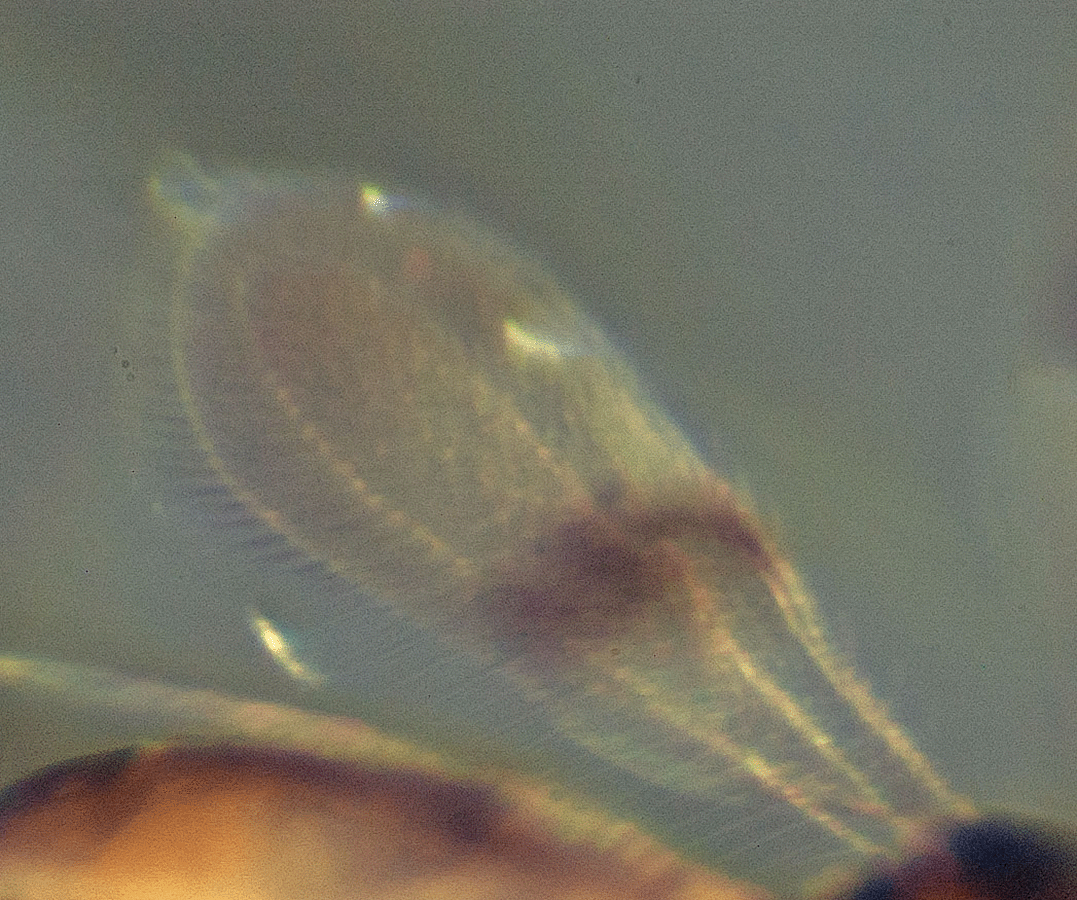
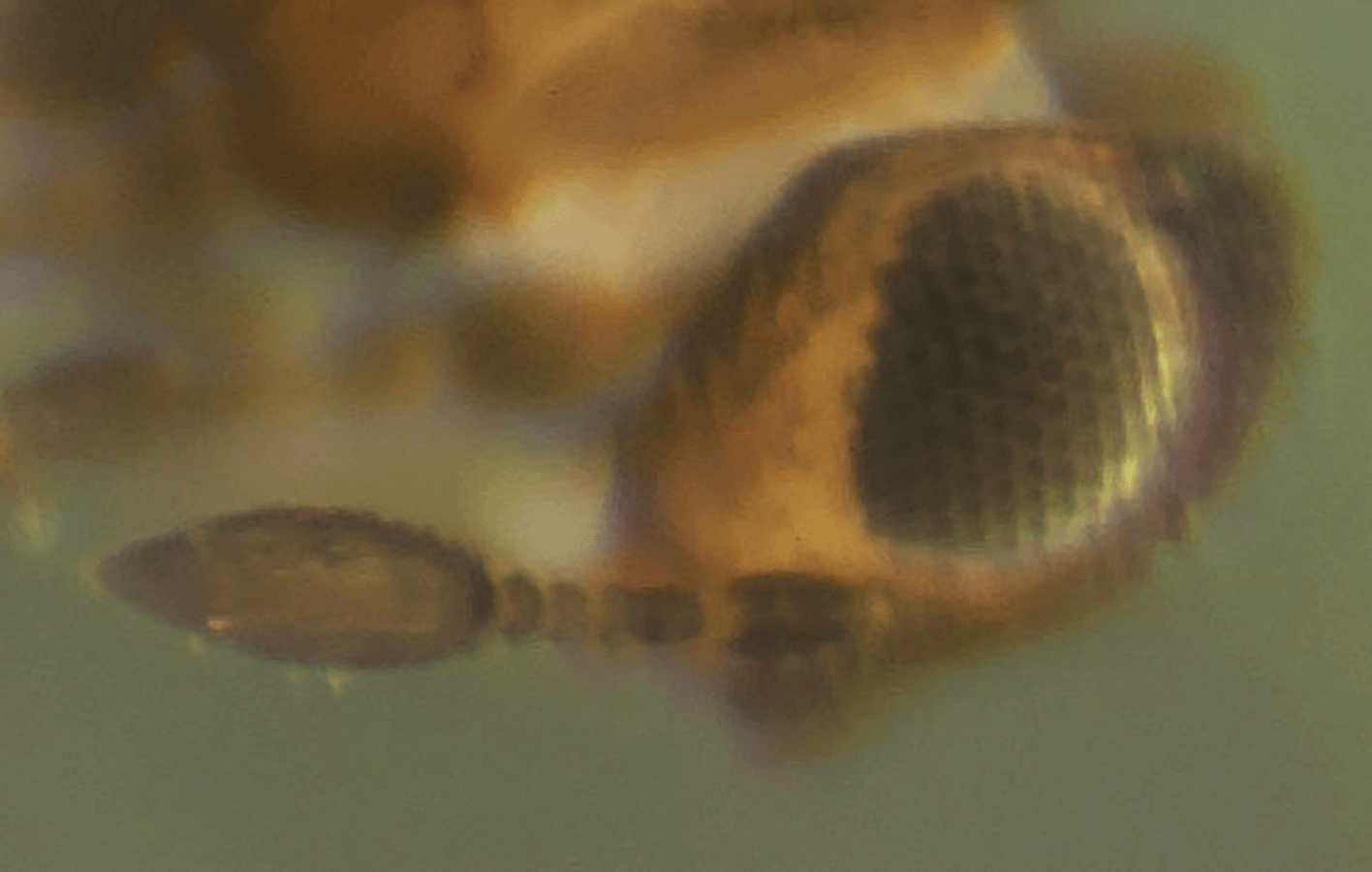
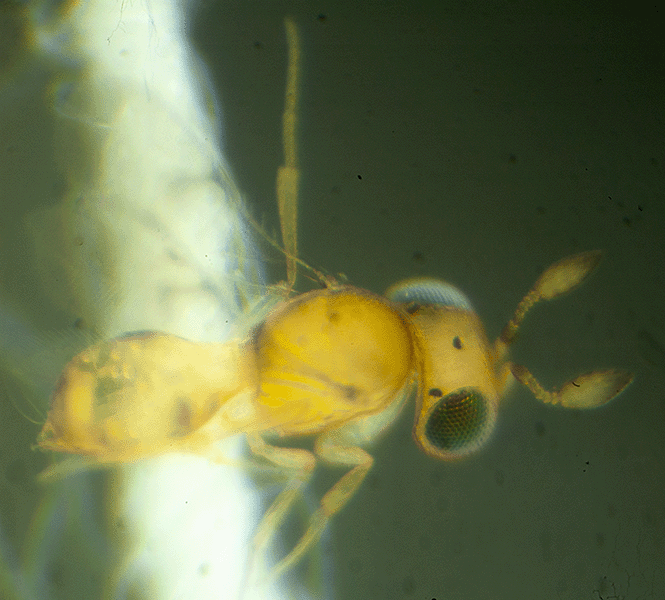
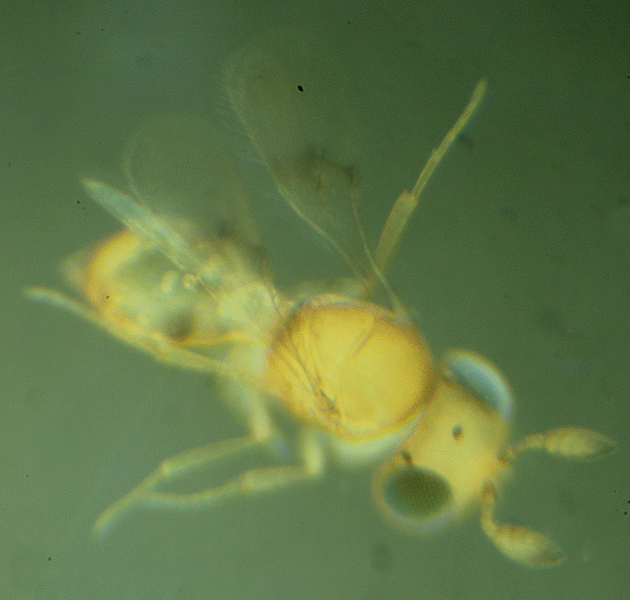
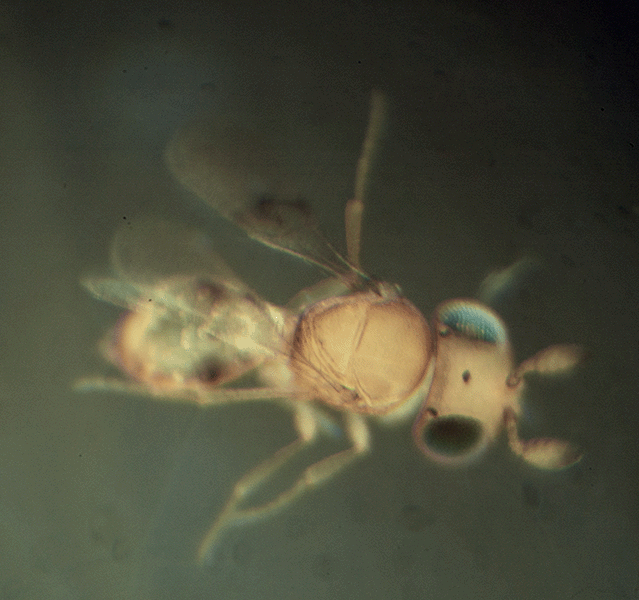
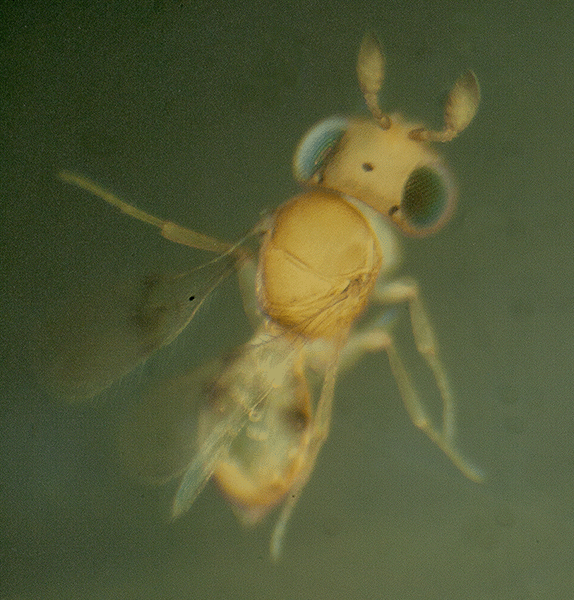
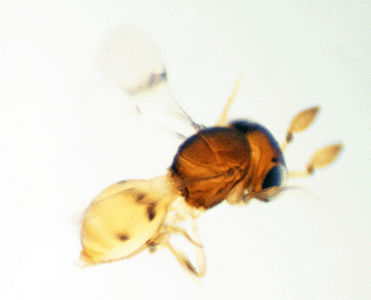
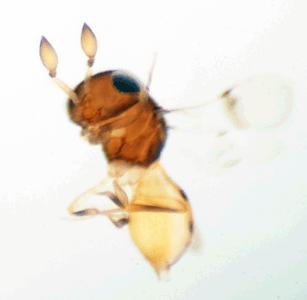
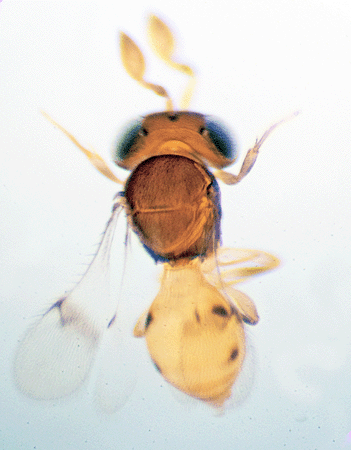 On March 22, 2016, this .9 mm long parasitoid wasp with very distinctive antennae was in a leaf litter collection obtained under a large
On March 22, 2016, this .9 mm long parasitoid wasp with very distinctive antennae was in a leaf litter collection obtained under a large 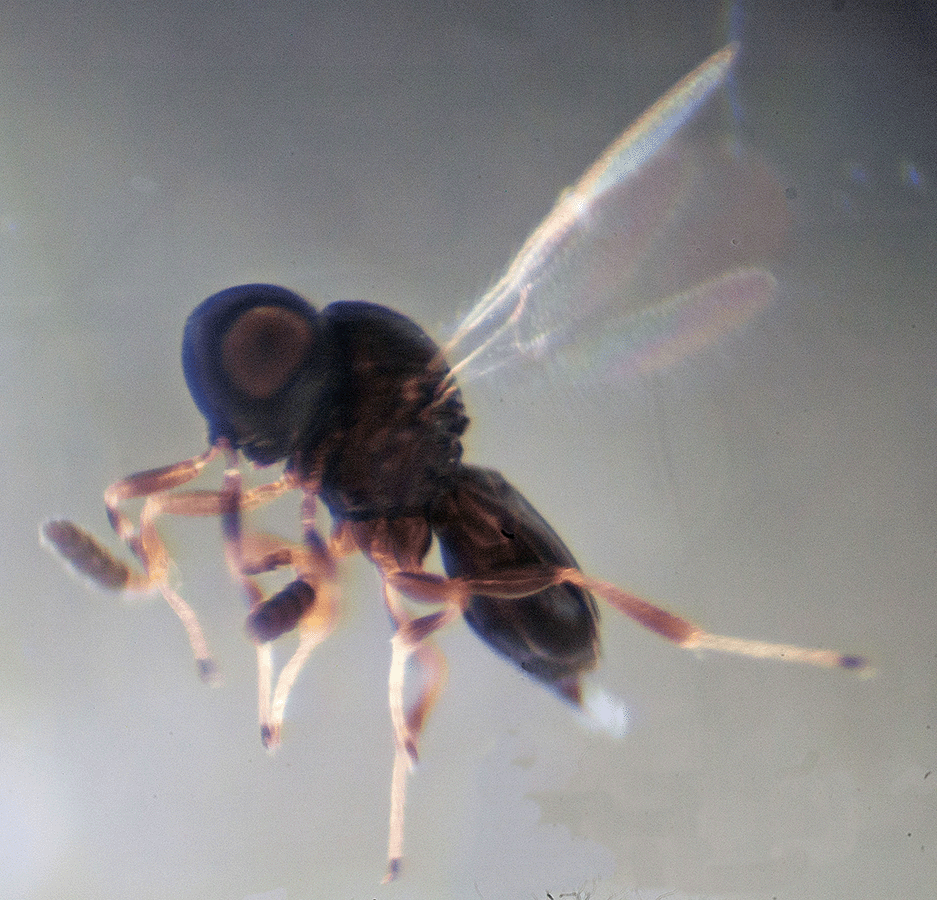
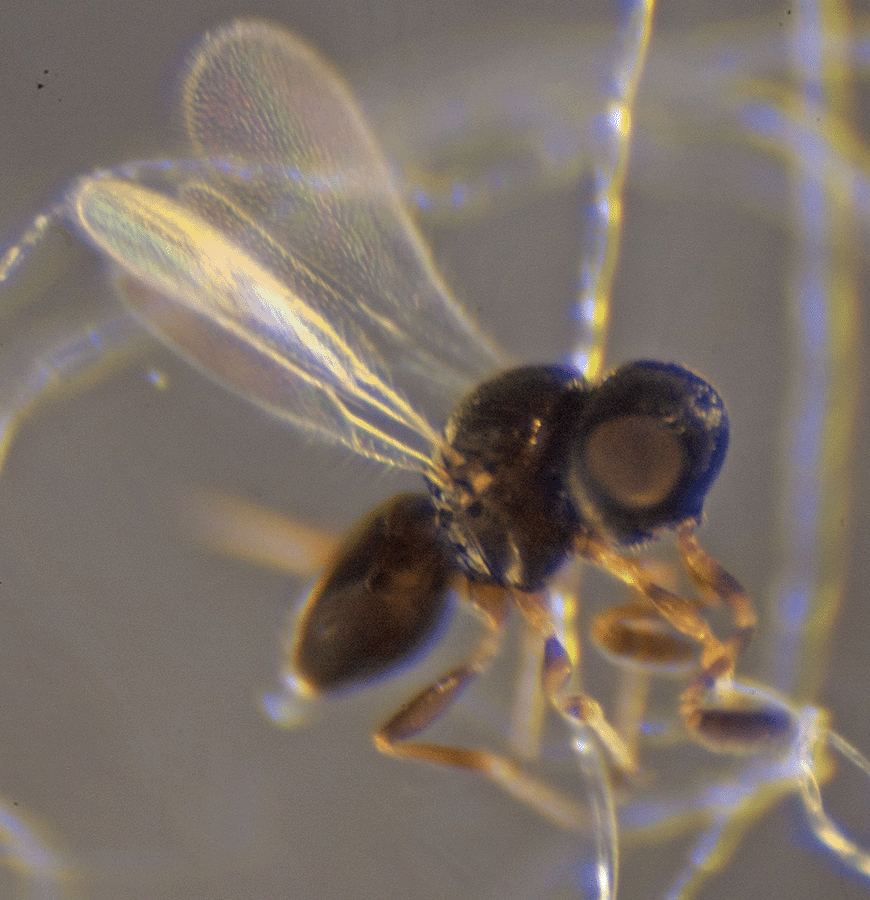
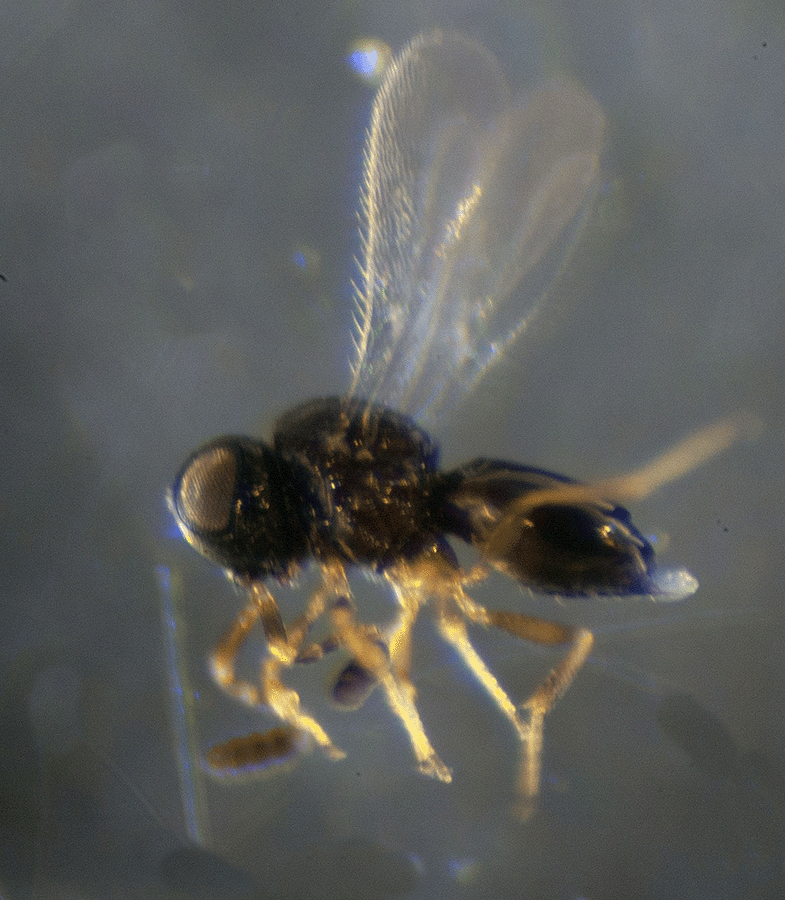
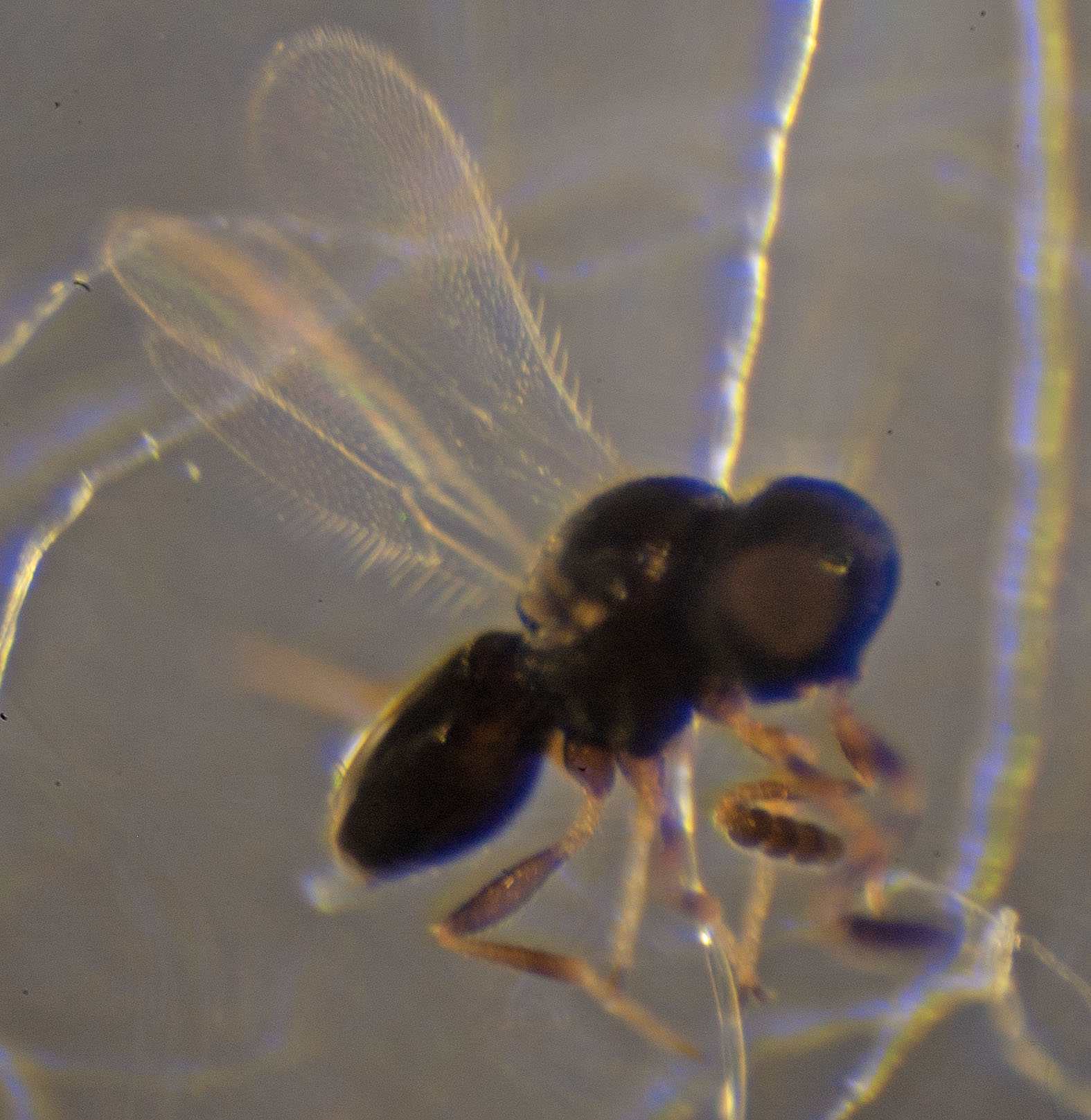
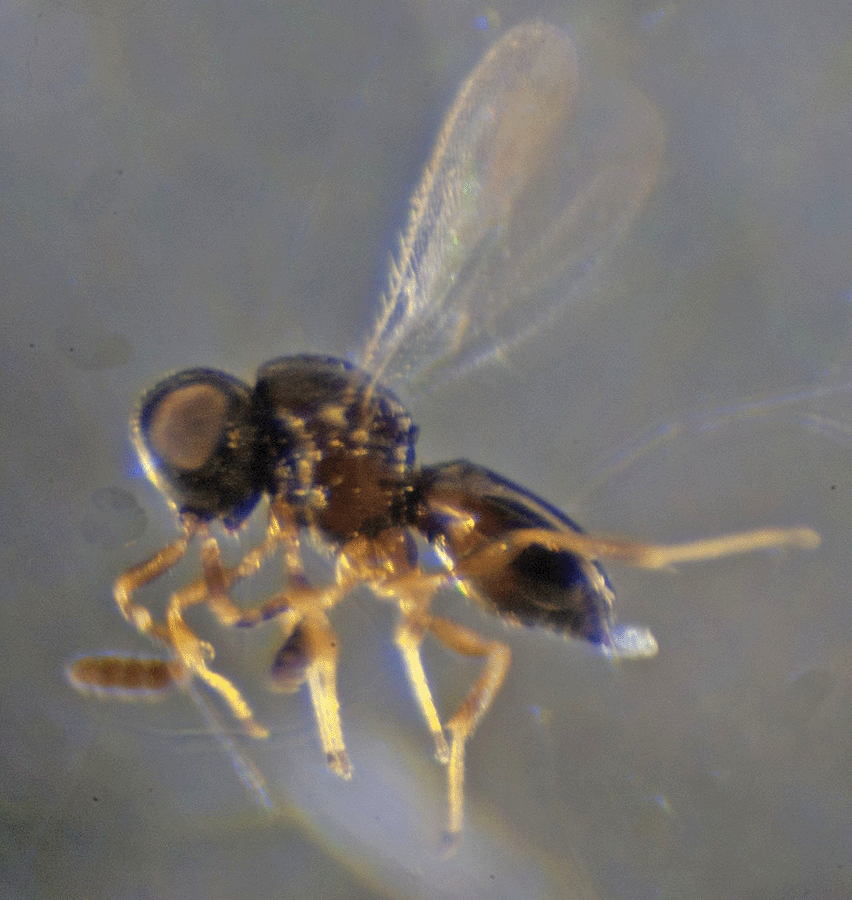
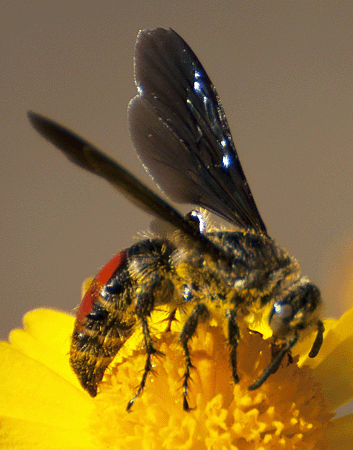 The fam
The fam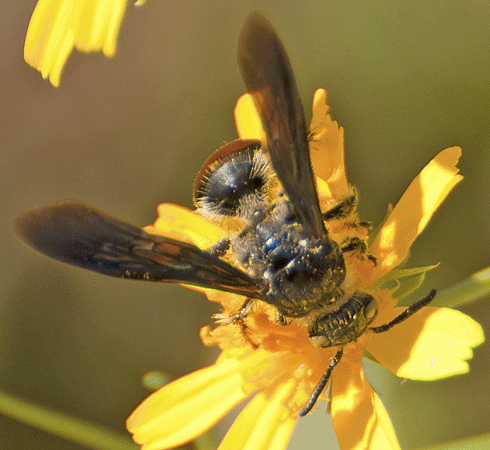
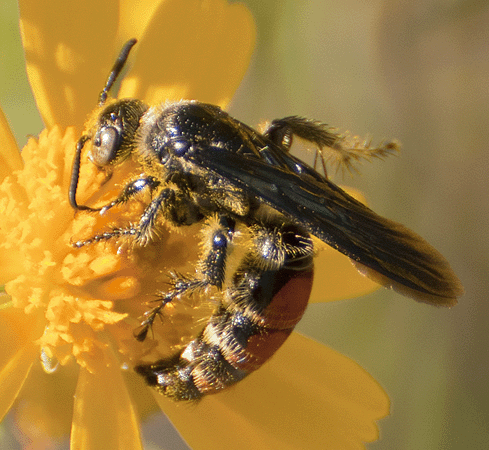
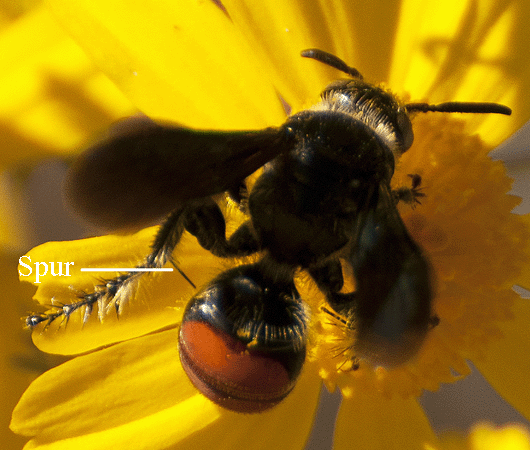 Males are smaller, with less black. They have yellow eyes, three narrow yellow bands on the thorax, and four large bands on the abdomen.
Males are smaller, with less black. They have yellow eyes, three narrow yellow bands on the thorax, and four large bands on the abdomen. 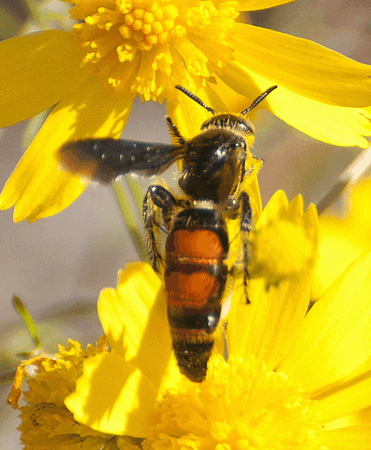
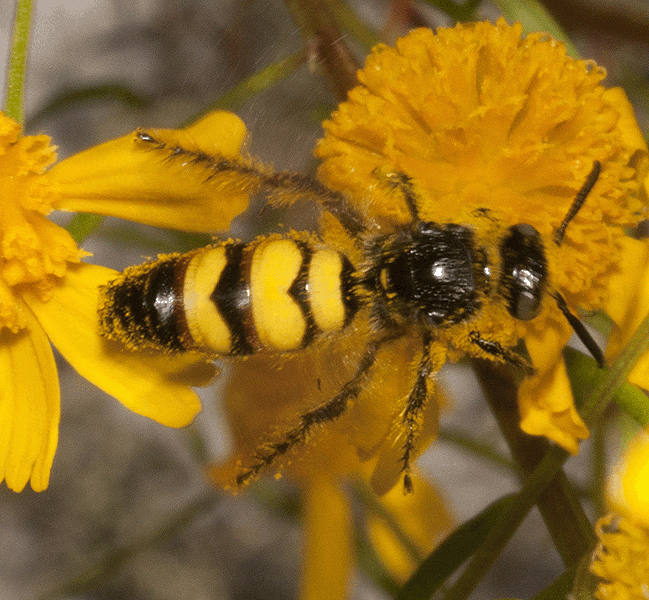
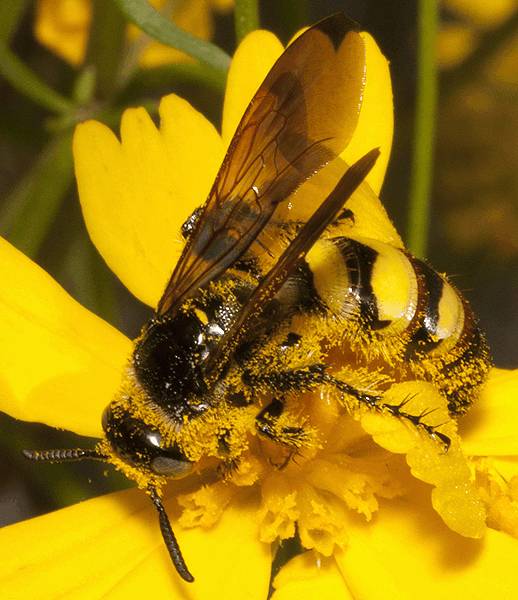
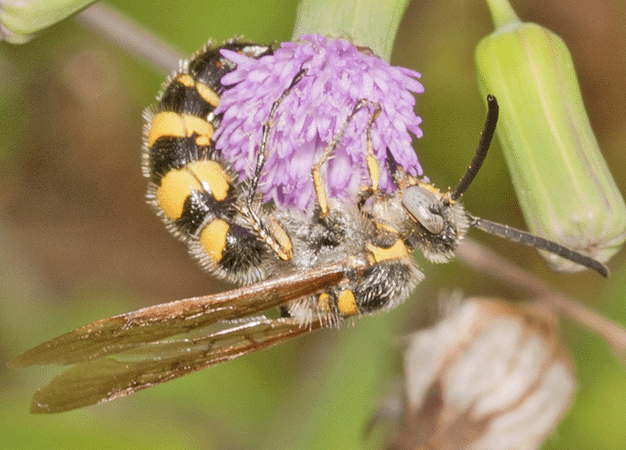 On April 20, 2015, the wasp at left was feeding on
On April 20, 2015, the wasp at left was feeding on 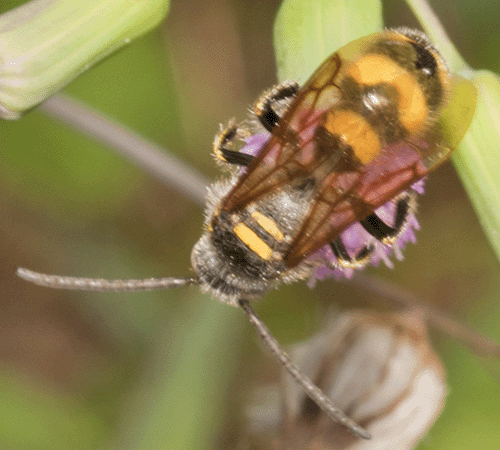 On April 21, 2015, the family name of the wasp was confirmed by Ken Wolgenmuth
On April 21, 2015, the family name of the wasp was confirmed by Ken Wolgenmuth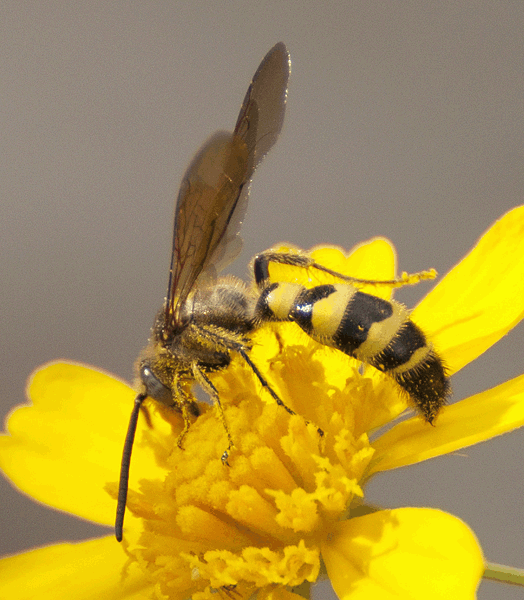
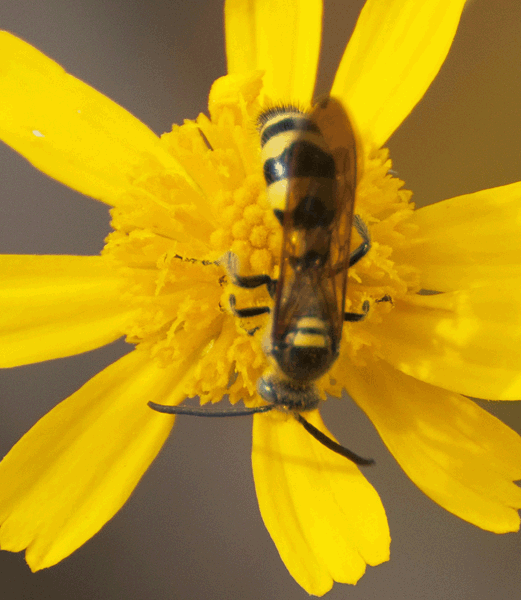
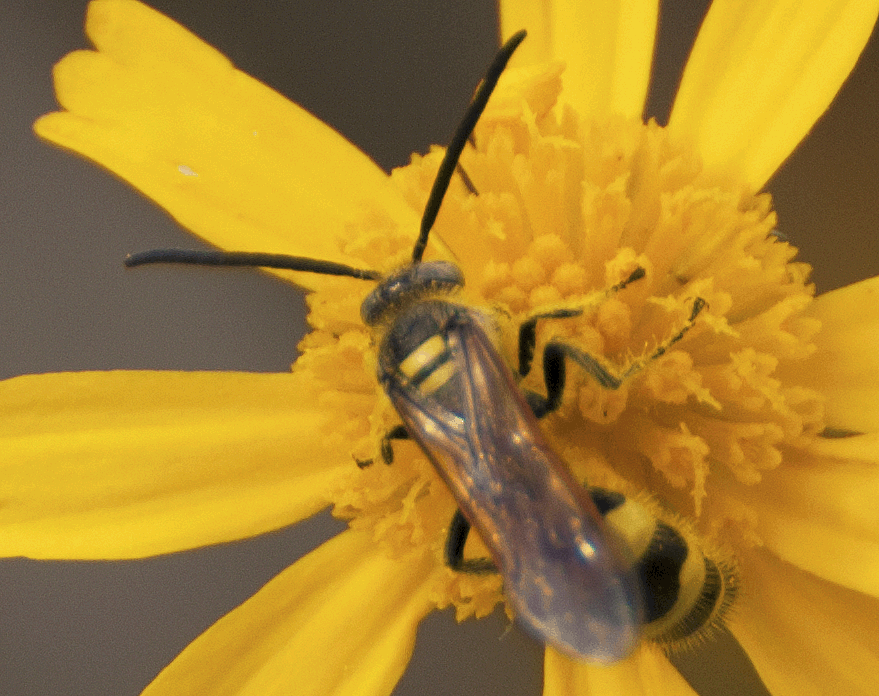
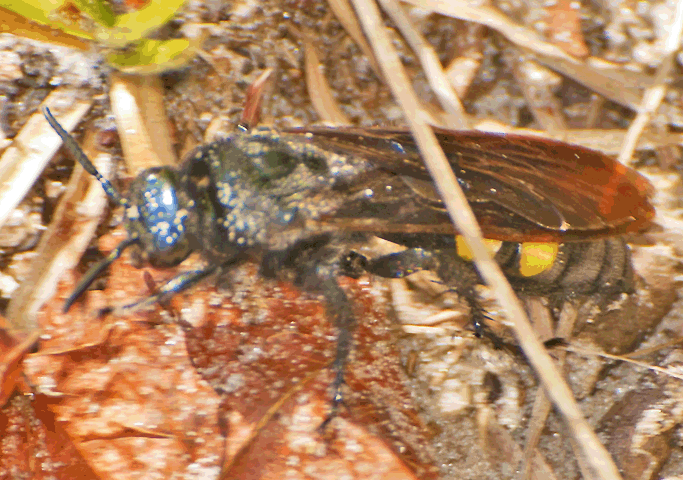
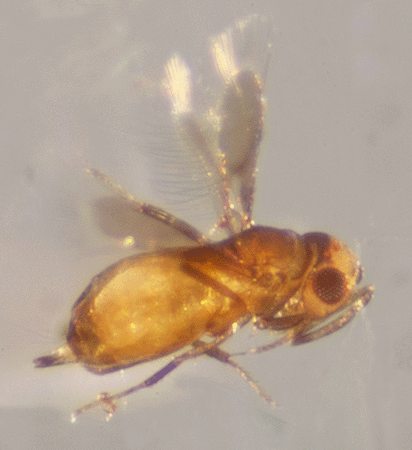
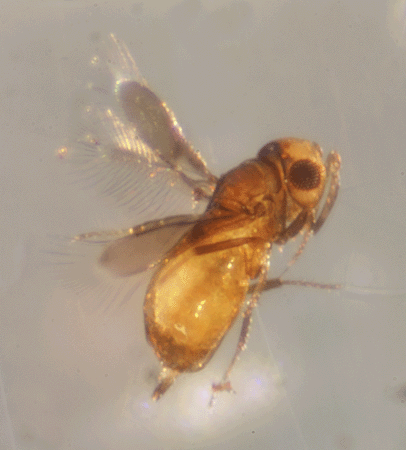
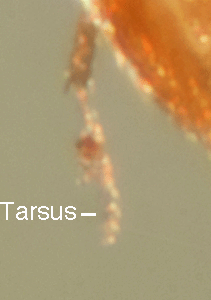
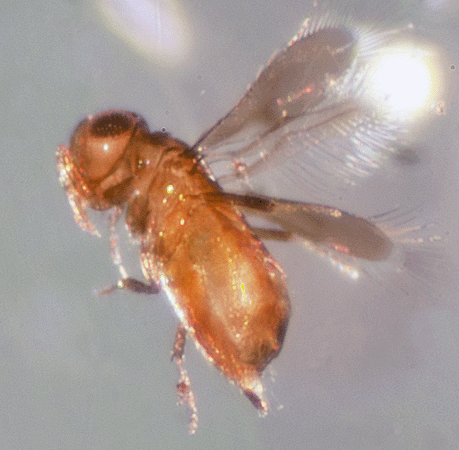
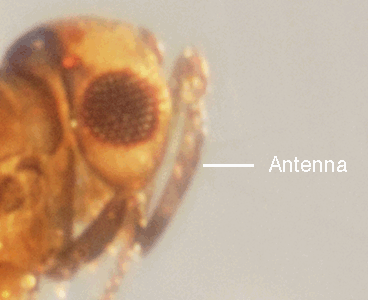 Some other characteristics of this family include a sessile metasoma (no "wasp waist"), a long unsegmented antennal club (shown at left), preceded by 1 to 4 ring-like segments, and wings with medium to long marginal setae (hairs).
Some other characteristics of this family include a sessile metasoma (no "wasp waist"), a long unsegmented antennal club (shown at left), preceded by 1 to 4 ring-like segments, and wings with medium to long marginal setae (hairs).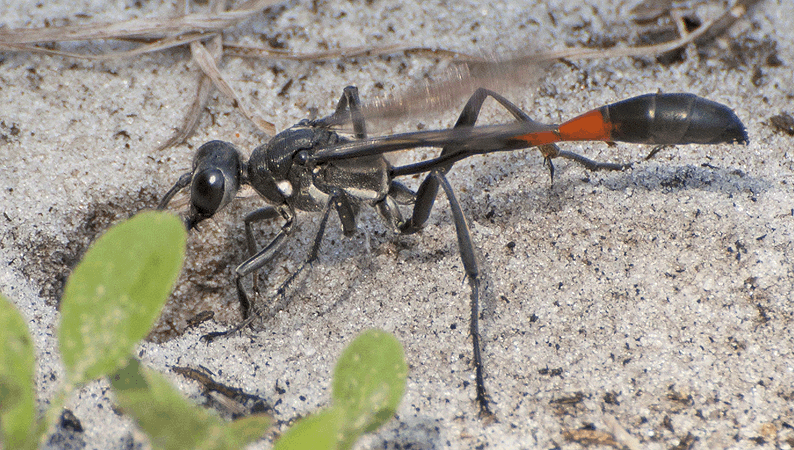
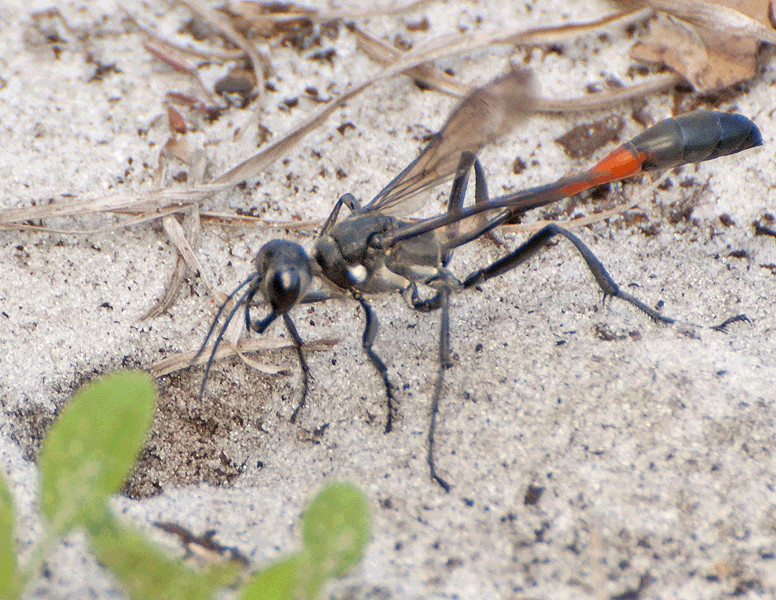
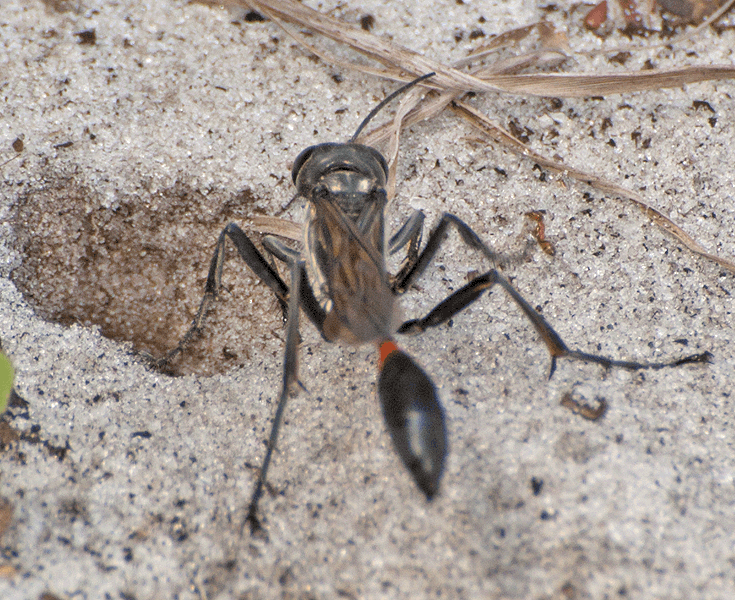 The species is preyed upon by birds, some assassin bugs, and some parasitic flies.
The species is preyed upon by birds, some assassin bugs, and some parasitic flies.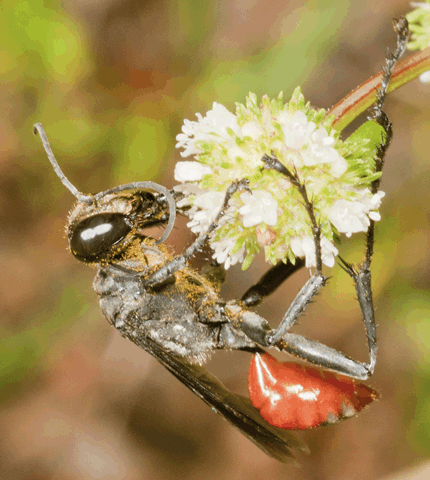
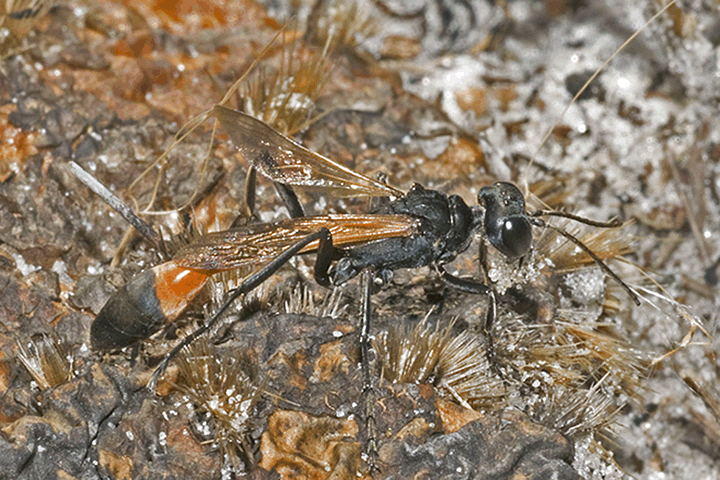 Sphex sp. is a large wasp (20 to 30 mm long) with a long, stalked abdomen, which gives its body a "thread-waisted appearance." Like most Sphecids, it nests in burrows in the ground, usually where there is little or no vegetation.
Sphex sp. is a large wasp (20 to 30 mm long) with a long, stalked abdomen, which gives its body a "thread-waisted appearance." Like most Sphecids, it nests in burrows in the ground, usually where there is little or no vegetation. 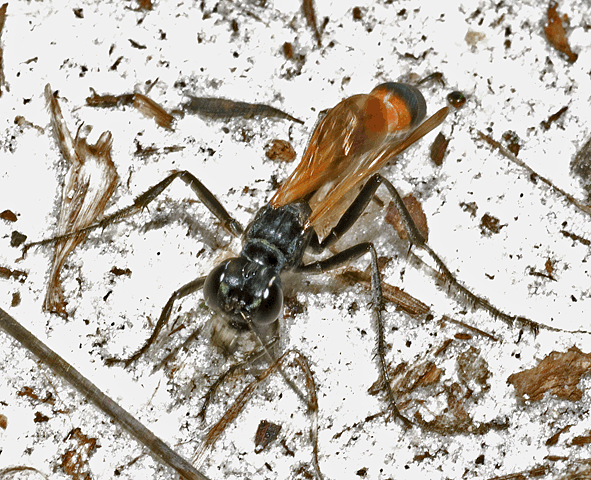 Adults feed on nectar from flowers, plant nectaries, honeydew, and body fluids of their prey.
Adults feed on nectar from flowers, plant nectaries, honeydew, and body fluids of their prey. 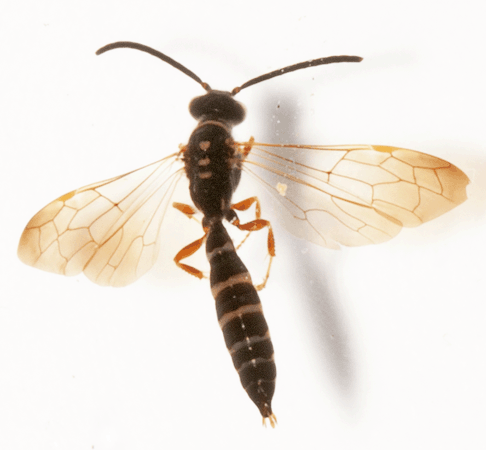
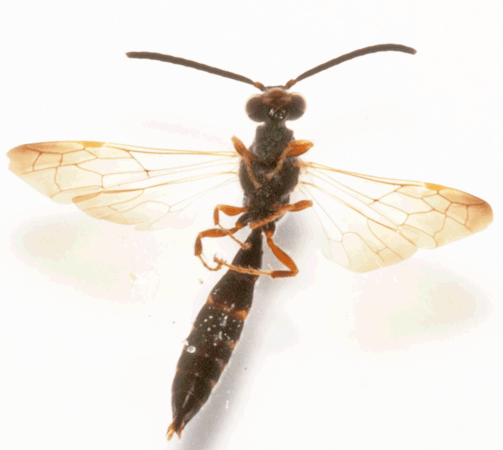
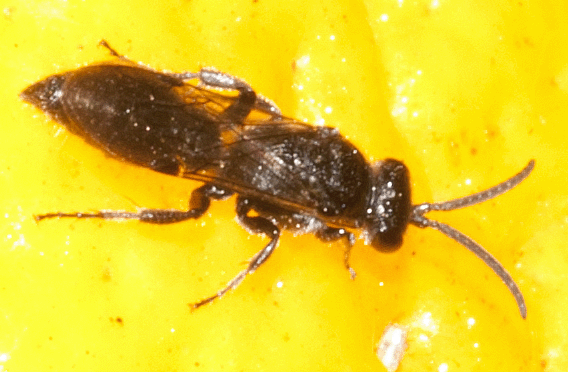 On March 4, 2015, this 7 mm long wasp was photographed as it rested on an orange hanging from a tree in the Smith Preserve. On March 7, 2015, it was identified from this photograph by John S. Ascher, a Contributing Editor to <BugGuide.net>, sponsored by Iowa State University Department of Entomology.
On March 4, 2015, this 7 mm long wasp was photographed as it rested on an orange hanging from a tree in the Smith Preserve. On March 7, 2015, it was identified from this photograph by John S. Ascher, a Contributing Editor to <BugGuide.net>, sponsored by Iowa State University Department of Entomology. 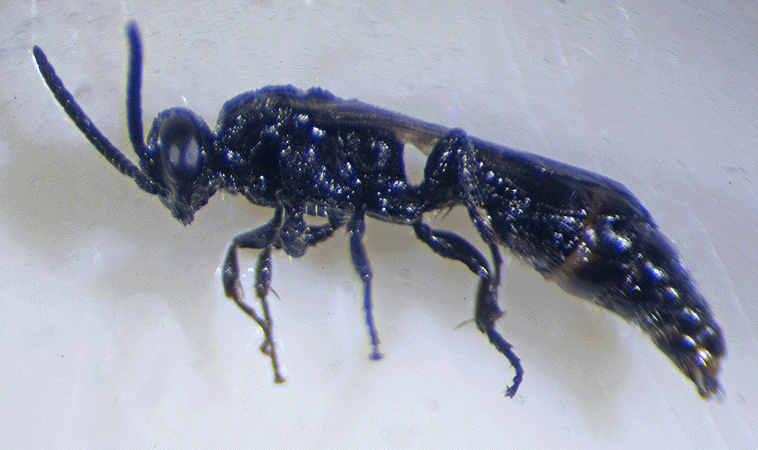

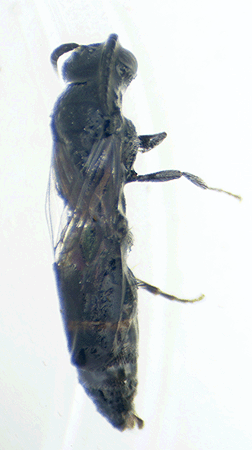
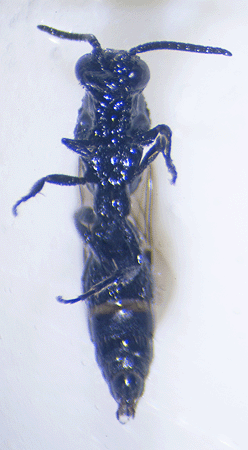

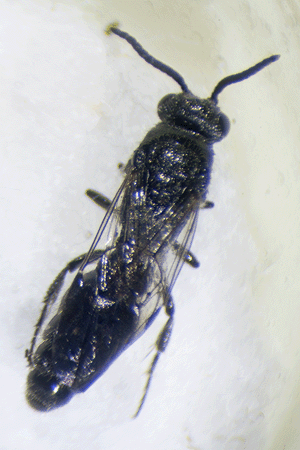
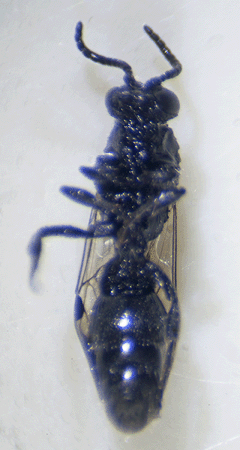
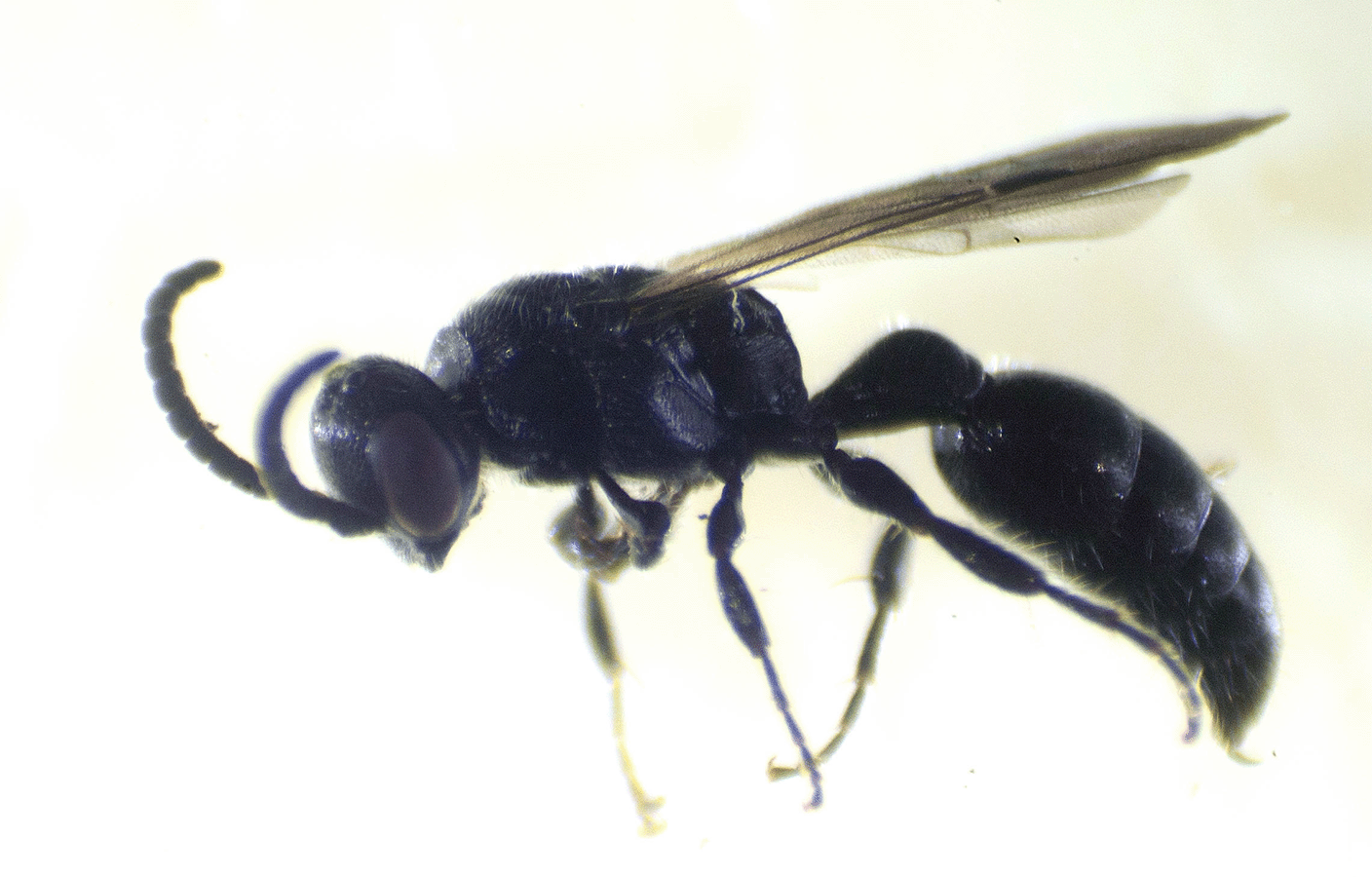
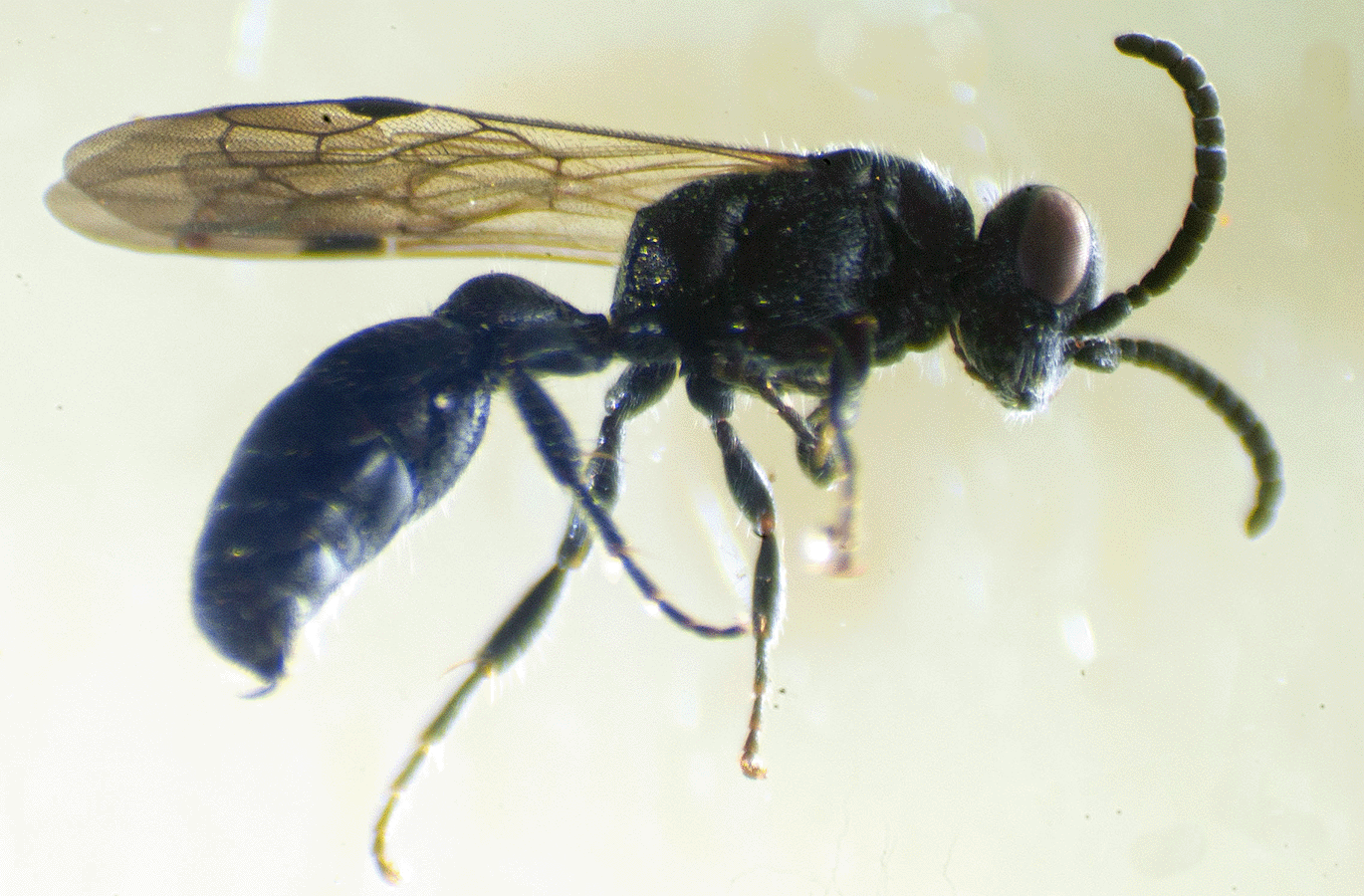 On December 18, 2024, this 4.7 mm long male wasp was captured in a yellow bowl trap that had been left overnight in the eastern portion of the hammock north of Smith Preserve Way, approximately 25 yards west of the N/S tortoise fence and in line with the northwest corner of the science building.
On December 18, 2024, this 4.7 mm long male wasp was captured in a yellow bowl trap that had been left overnight in the eastern portion of the hammock north of Smith Preserve Way, approximately 25 yards west of the N/S tortoise fence and in line with the northwest corner of the science building. 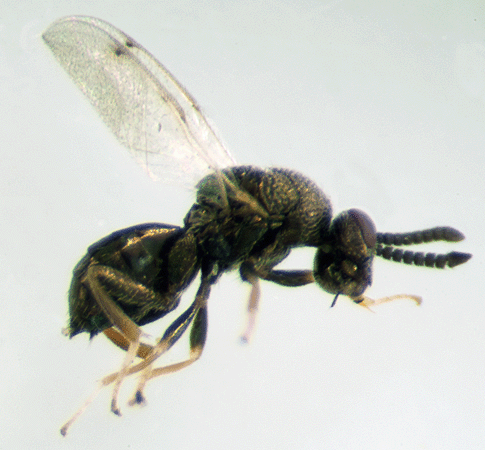 On December 30, 2015, this 2.25 mm long parasitic wasp was captured with a sweep net in low, dry vegetation, growing along the gopher tortoise fence in the northeast section of the Smith Preserve, just north of Smith Preserve Way.
On December 30, 2015, this 2.25 mm long parasitic wasp was captured with a sweep net in low, dry vegetation, growing along the gopher tortoise fence in the northeast section of the Smith Preserve, just north of Smith Preserve Way. 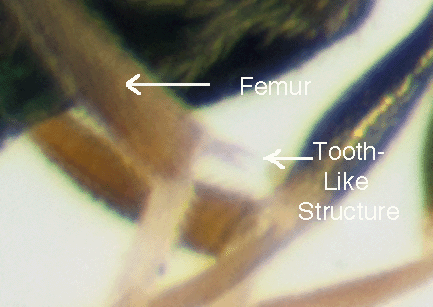 The genus Monodontomerus can be identified by the prominent tooth under the hind femur near the tip. This structure is likely the origin of the genus name. "Mono" means "single" and "dontics" means "related to teeth.
The genus Monodontomerus can be identified by the prominent tooth under the hind femur near the tip. This structure is likely the origin of the genus name. "Mono" means "single" and "dontics" means "related to teeth. 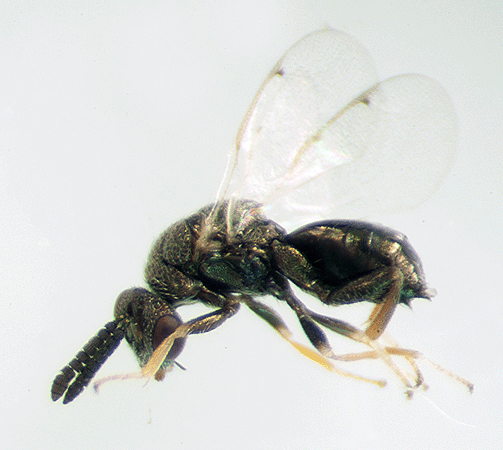
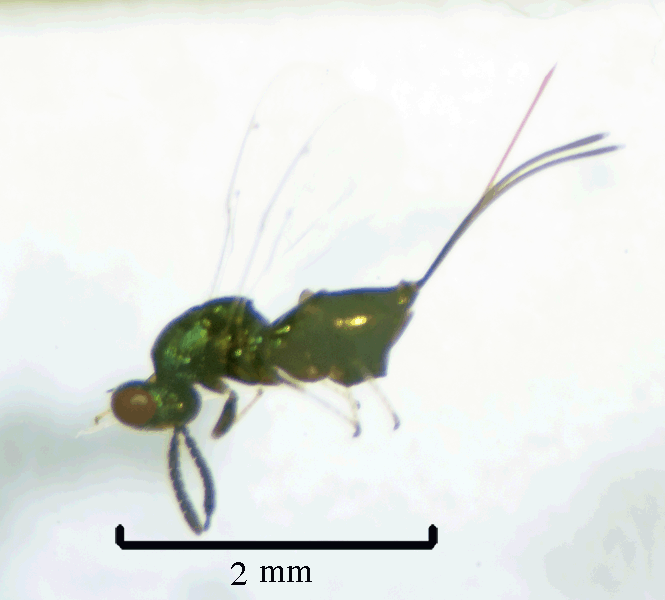 T
T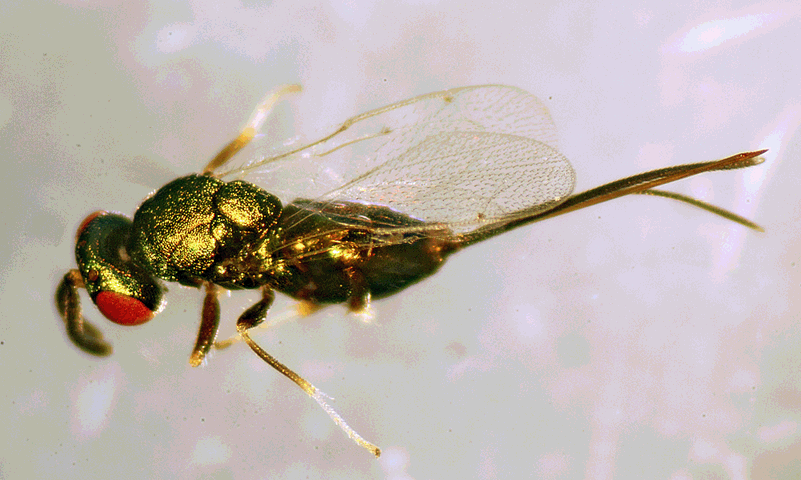 As stated for the Torymus sp. above, three galls were removed from a branch of
As stated for the Torymus sp. above, three galls were removed from a branch of 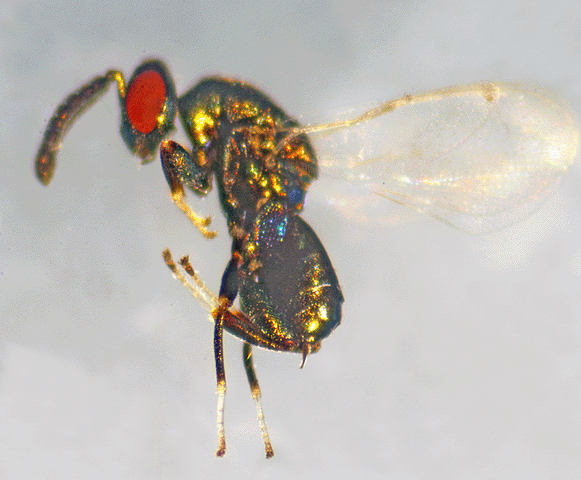 On January 22nd, additional wasps began emerging from the galls. This process continued for more than a week. Some individuals resembled the
On January 22nd, additional wasps began emerging from the galls. This process continued for more than a week. Some individuals resembled the 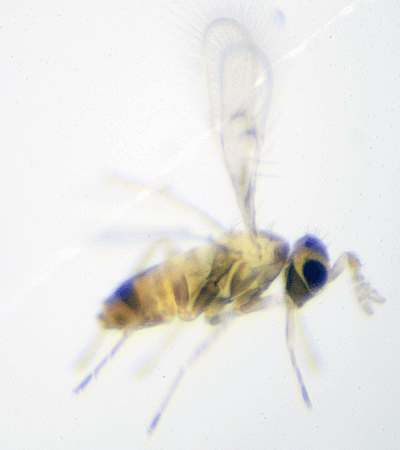
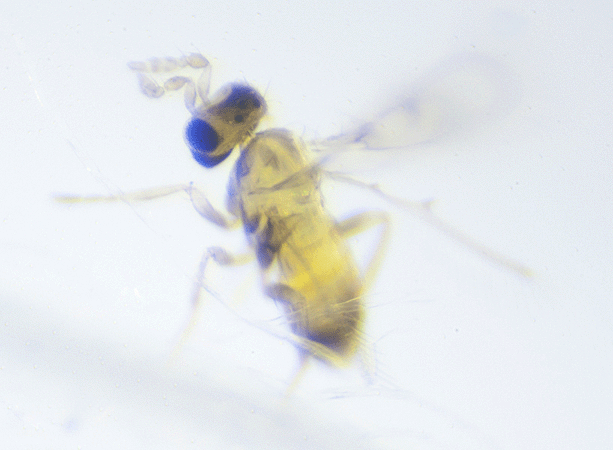 These photographs were created using photomicroscopy and sent for identification to <BugGuide.net>, sponsored by Iowa State University's Department of Entomology.
These photographs were created using photomicroscopy and sent for identification to <BugGuide.net>, sponsored by Iowa State University's Department of Entomology.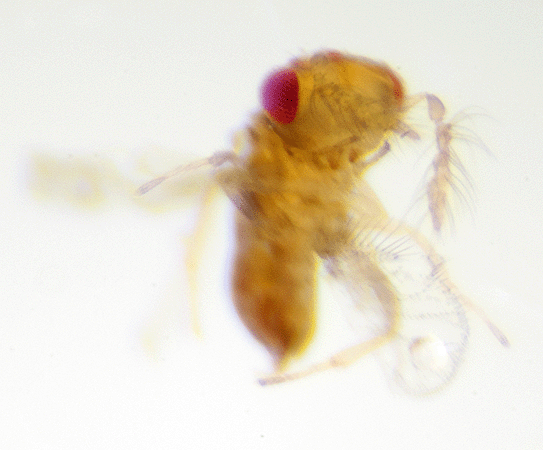

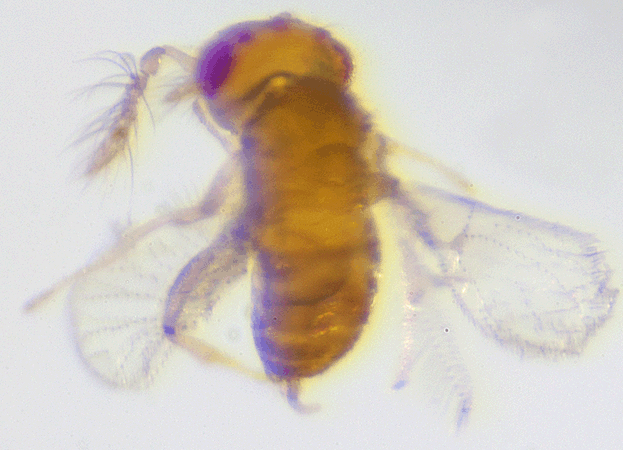 On February 13, 2016, the wasp was identified as a chalcid wasp by Ross Hill, a Contributor to <BugGuide.net>. Hill requested that I take additional photographs of the tarsi (the terminal segment of the leg). He said that would help identify the family.
On February 13, 2016, the wasp was identified as a chalcid wasp by Ross Hill, a Contributor to <BugGuide.net>. Hill requested that I take additional photographs of the tarsi (the terminal segment of the leg). He said that would help identify the family.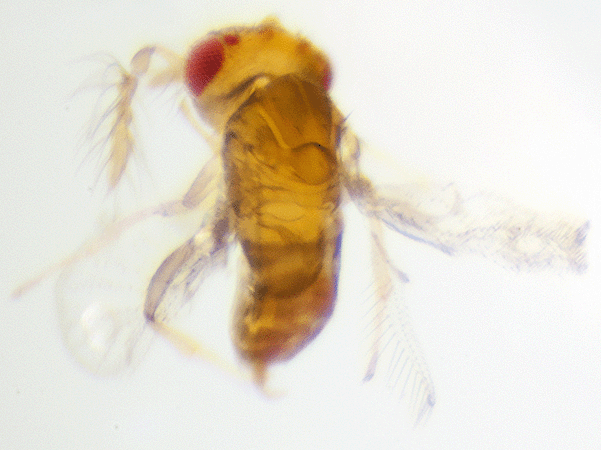
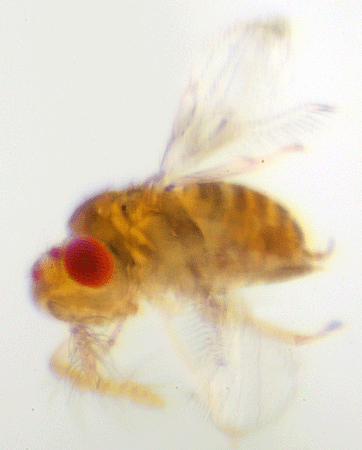

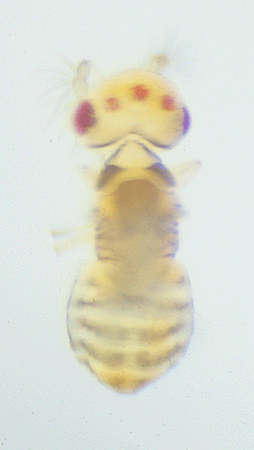
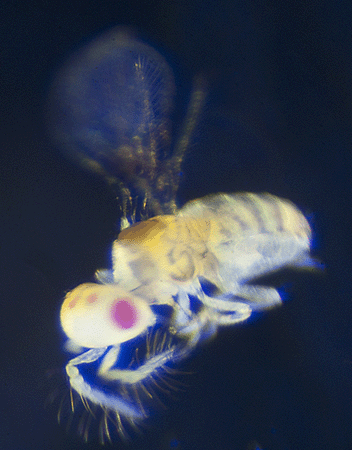 On December 13, 2016, this .6 mm long parasitic wasp was captured along with the one discussed above in the same yellow bowl trap placed on a ridge of sand in an open area of the Smith Preserve near 14th Ave N and a private residence. The yellow bowl had been filled with soapy water the day before and left for 24 hours.
On December 13, 2016, this .6 mm long parasitic wasp was captured along with the one discussed above in the same yellow bowl trap placed on a ridge of sand in an open area of the Smith Preserve near 14th Ave N and a private residence. The yellow bowl had been filled with soapy water the day before and left for 24 hours. 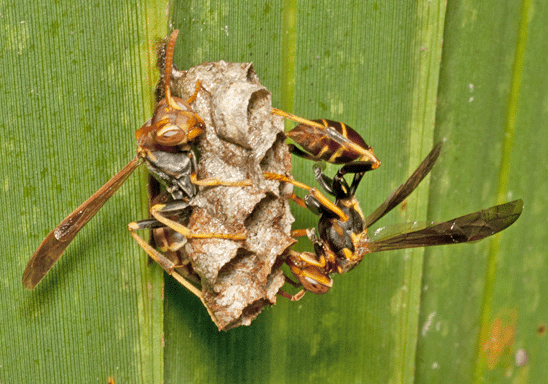 The genus( Mischocyttarus) was determined by Richard Vernier, (Contributing Editor of <bugguide.net>, hosted by Iowa State University Entomology,) on August 2, 2013. The species mexicanus was determined by Matthias Buck (Contributing Editor of <bugguide.net>) on November 30, 2013.
The genus( Mischocyttarus) was determined by Richard Vernier, (Contributing Editor of <bugguide.net>, hosted by Iowa State University Entomology,) on August 2, 2013. The species mexicanus was determined by Matthias Buck (Contributing Editor of <bugguide.net>) on November 30, 2013. 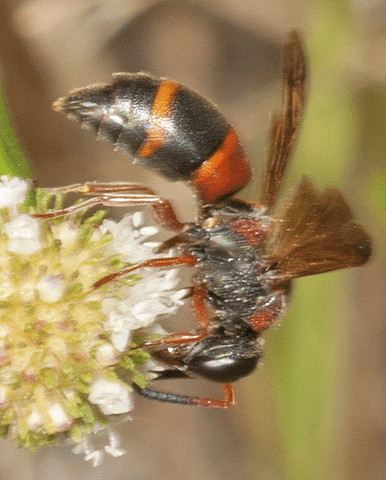 Adult red and black mason wasps are 1.3 cm long, with distinctive orange-red and black coloration. A male has a white to yellow five-sided spot on his face, while a female has a red spot on her face. From the angle of this photograph, it is not possible to see the face spot.
Adult red and black mason wasps are 1.3 cm long, with distinctive orange-red and black coloration. A male has a white to yellow five-sided spot on his face, while a female has a red spot on her face. From the angle of this photograph, it is not possible to see the face spot. 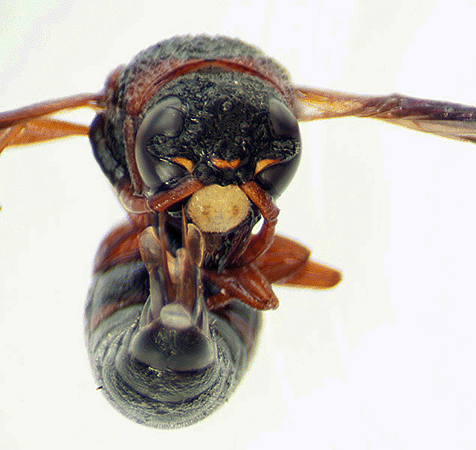
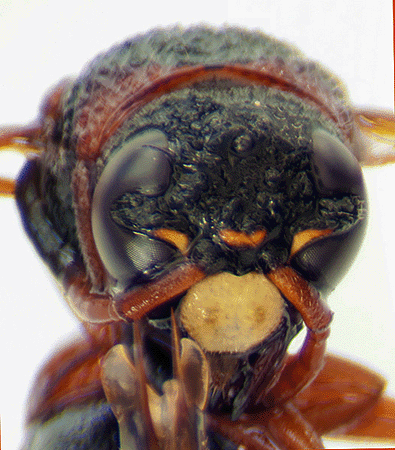
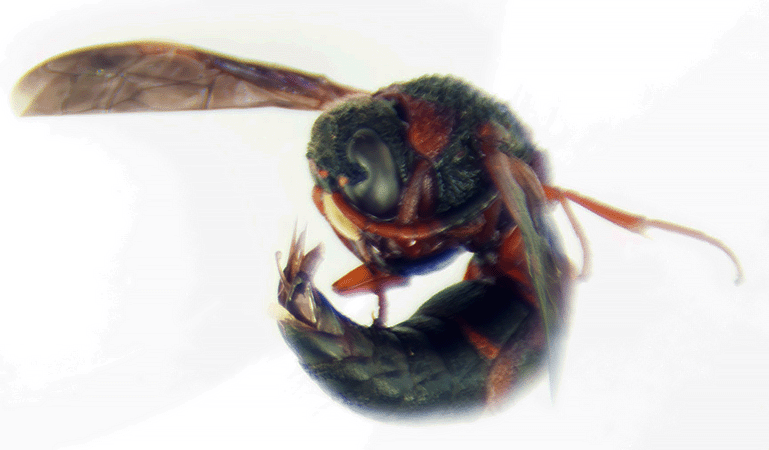
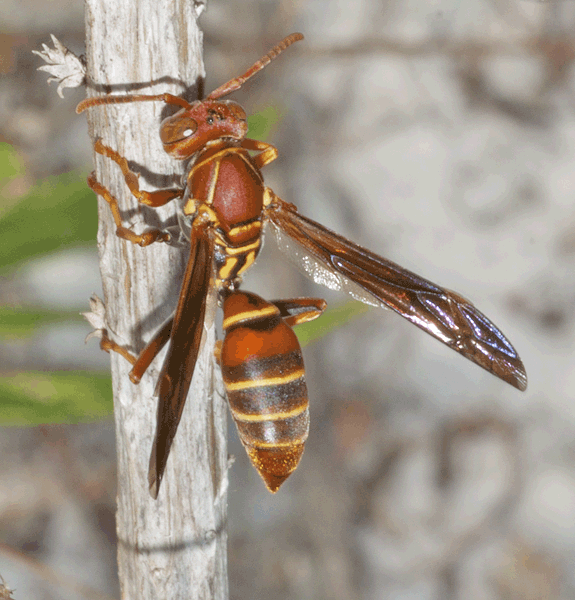
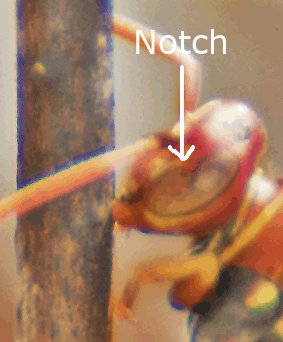 Like other members of Family Vespidae, Polistes spp. have a notch in the eye.
Like other members of Family Vespidae, Polistes spp. have a notch in the eye.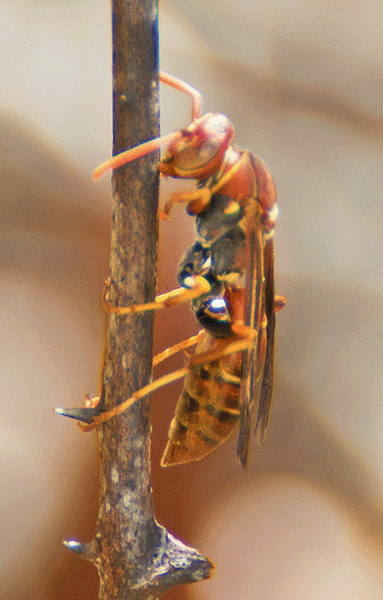 They live in highly organized social colonies, with four stages to the life cycle of a Polistes nest. 1) During the first stage (Founding/Pre-emergence) phase, which begins in the spring, a solitary female (queen), or a small group of related females, begins construction of the nest. First a petiole (stalk) is created, and a single brood cell is built at its end. Additional cells are added in a hexagonal pattern. Each cell is surrounded by six other cells. The cells are open. 2) The next stage is the Working Phase. The queen lays eggs directly into the brood cells. She and any other females guard the eggs. After larvae hatch, the queen and any other females take paralyzed caterpillars they have injected with venom and chewed into meatballs to the larvae. The adults continue to feed the larvae as they grow. In the summer, these larvae mature to become non-reproductive adult female workers. Their job is to assist the queen in hunting caterpillars, caring for their future sisters, and maintaining the structure of the nest. 3) The 3rd phase begins in the fall. It is the Reproductive Phase. The queen lays eggs that develop into new queens and males. 4) The Intermediate Phase occurs when reproductive individuals leave the nest and mating occurs. This phase occurs in the fall. Brood care and foraging behavior decline, workers die and are not replaced, and the social cohesion of the nest declines.
They live in highly organized social colonies, with four stages to the life cycle of a Polistes nest. 1) During the first stage (Founding/Pre-emergence) phase, which begins in the spring, a solitary female (queen), or a small group of related females, begins construction of the nest. First a petiole (stalk) is created, and a single brood cell is built at its end. Additional cells are added in a hexagonal pattern. Each cell is surrounded by six other cells. The cells are open. 2) The next stage is the Working Phase. The queen lays eggs directly into the brood cells. She and any other females guard the eggs. After larvae hatch, the queen and any other females take paralyzed caterpillars they have injected with venom and chewed into meatballs to the larvae. The adults continue to feed the larvae as they grow. In the summer, these larvae mature to become non-reproductive adult female workers. Their job is to assist the queen in hunting caterpillars, caring for their future sisters, and maintaining the structure of the nest. 3) The 3rd phase begins in the fall. It is the Reproductive Phase. The queen lays eggs that develop into new queens and males. 4) The Intermediate Phase occurs when reproductive individuals leave the nest and mating occurs. This phase occurs in the fall. Brood care and foraging behavior decline, workers die and are not replaced, and the social cohesion of the nest declines. 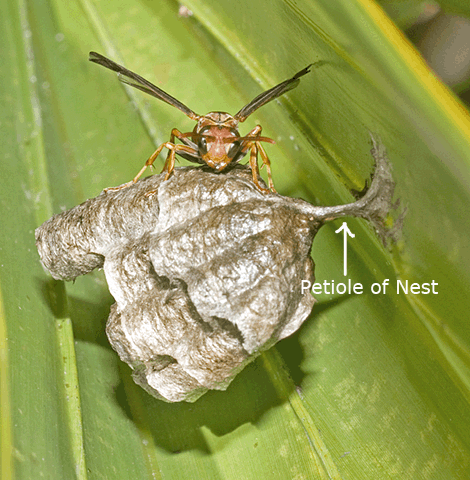
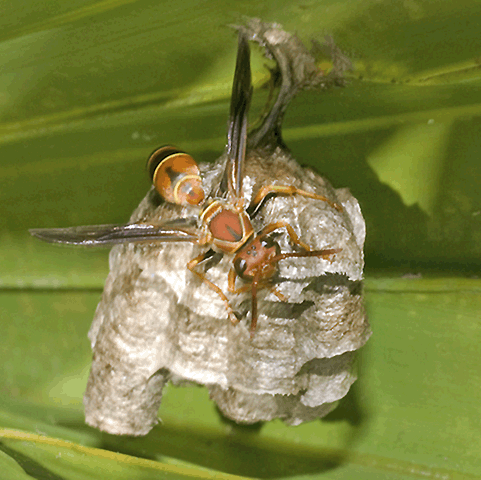
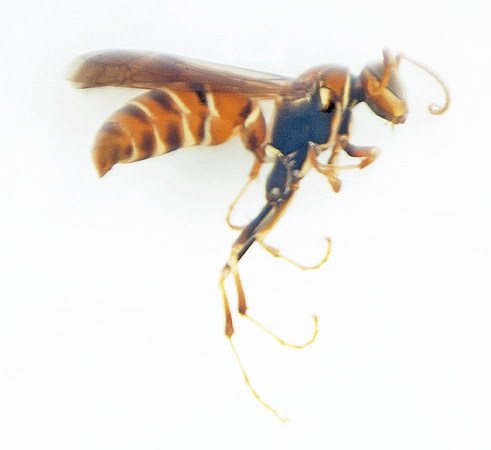
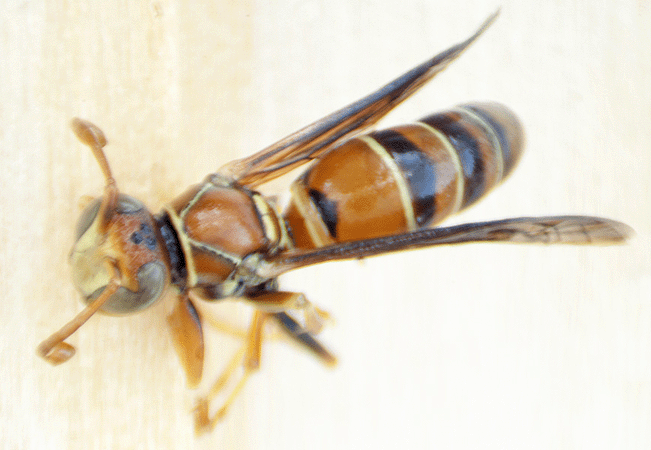
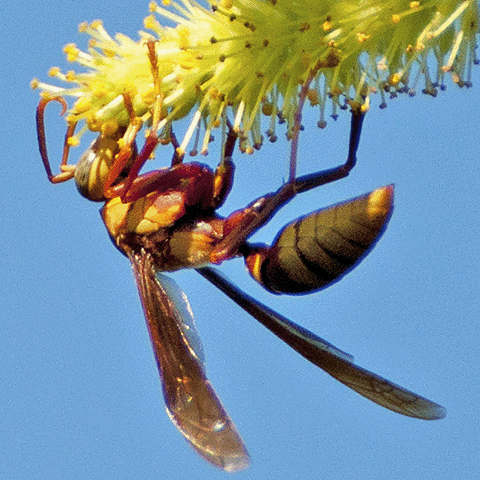
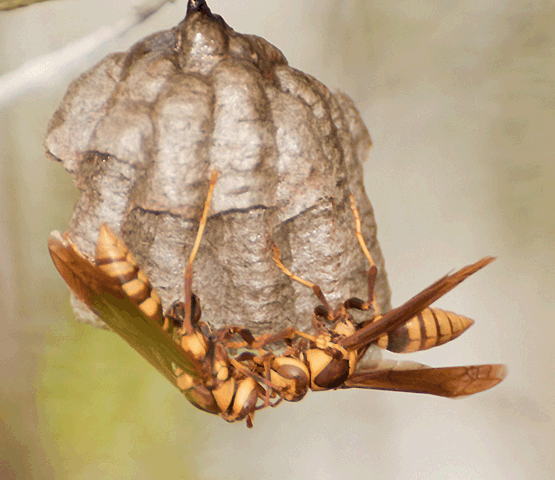
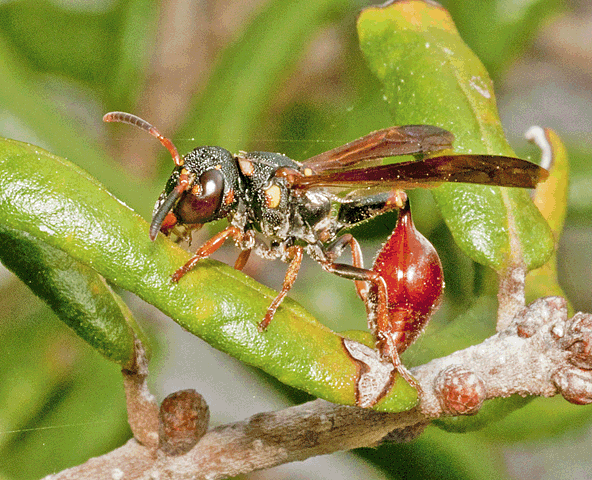 As with other members of Family Vespidae, Zethus slossonae holds its wings along the sides of its body when at rest, and has strongly notched eyes. Also like other Vespids, the first abdominal segment is narrowly petiolate (constricted).
As with other members of Family Vespidae, Zethus slossonae holds its wings along the sides of its body when at rest, and has strongly notched eyes. Also like other Vespids, the first abdominal segment is narrowly petiolate (constricted). Many Zethus spp. make nests in twigs and branches using old insect burrows; others build nests using vegetable matter and resin.
Many Zethus spp. make nests in twigs and branches using old insect burrows; others build nests using vegetable matter and resin. 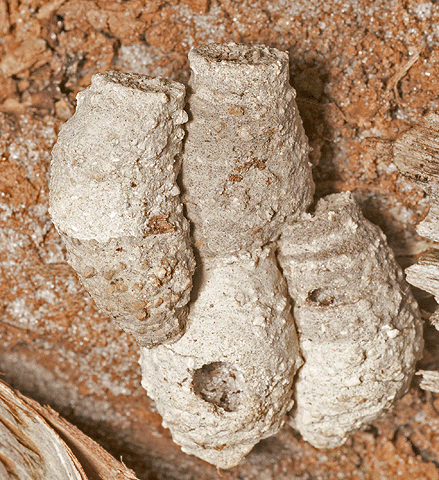
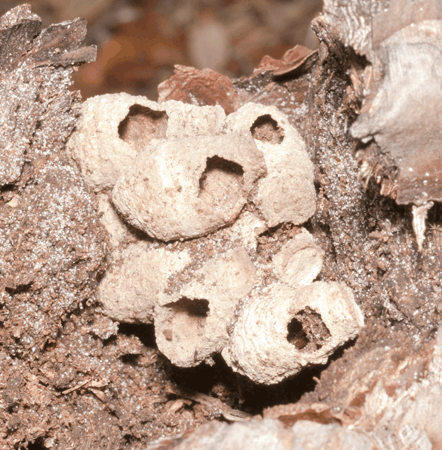 Potter wasps are predators. Most species are solitary and construct cells one at a time. After completing each cell, the wasp normally lays an egg inside the cell. Then it collects a beetle larva, spider, or caterpillar, paralyzes it, and places it into the cell. Once the egg hatches, the larvae begins eating the paralyzed prey. An immature wasp spends its entire larval and pupal life in the cell. Eventually, the adult emerges and feeds on flower nectar. The complete life cycle from egg to adult lasts from a few weeks to more than a year, depending on the species and the geographic location.
Potter wasps are predators. Most species are solitary and construct cells one at a time. After completing each cell, the wasp normally lays an egg inside the cell. Then it collects a beetle larva, spider, or caterpillar, paralyzes it, and places it into the cell. Once the egg hatches, the larvae begins eating the paralyzed prey. An immature wasp spends its entire larval and pupal life in the cell. Eventually, the adult emerges and feeds on flower nectar. The complete life cycle from egg to adult lasts from a few weeks to more than a year, depending on the species and the geographic location. 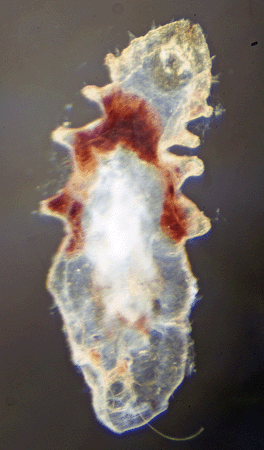
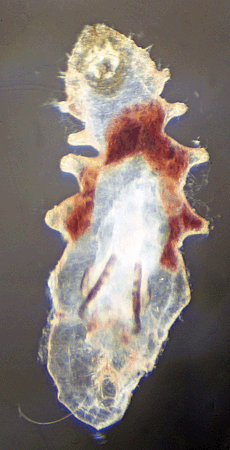
 The larvae shown in these photographs were located inside a pod of
The larvae shown in these photographs were located inside a pod of 